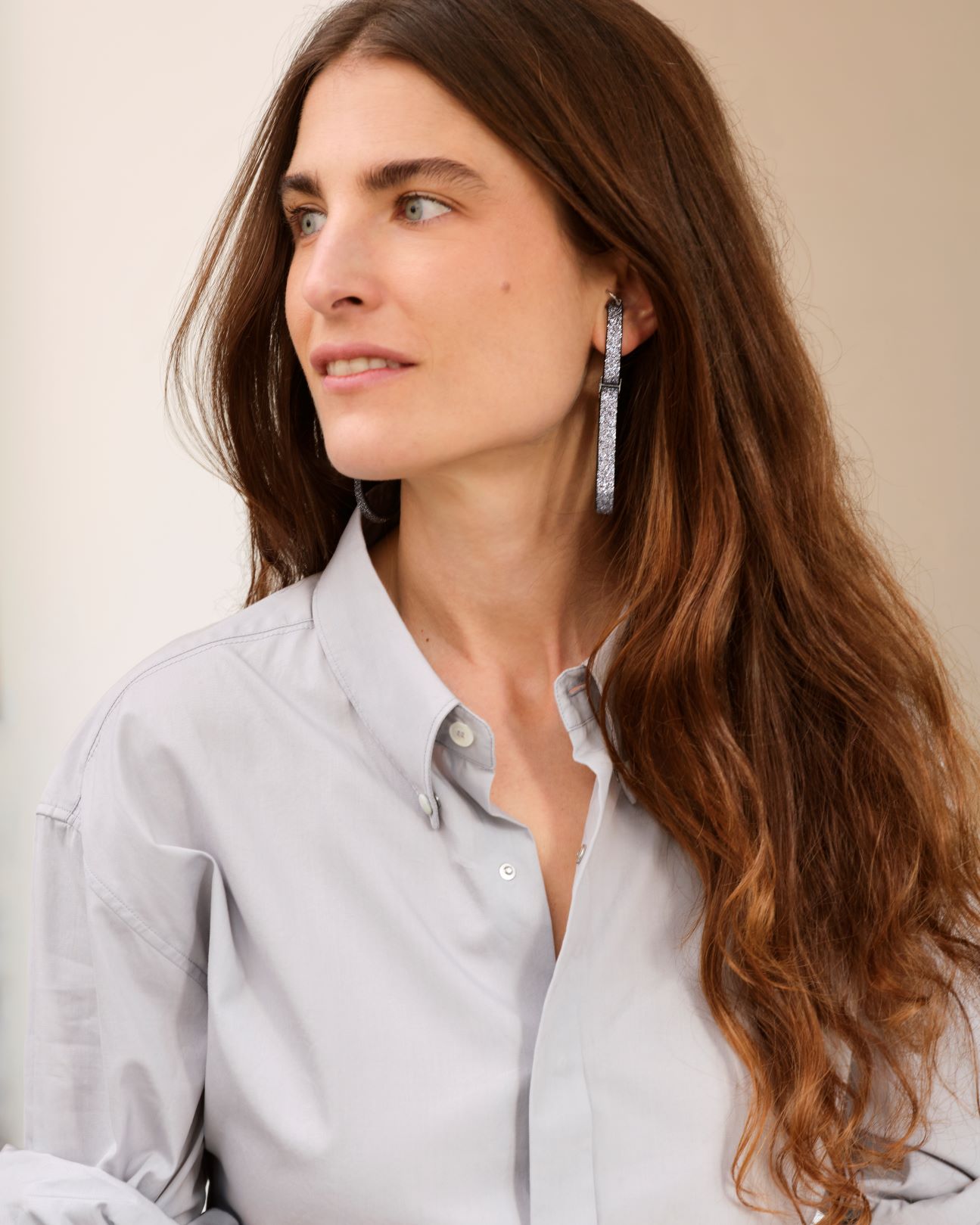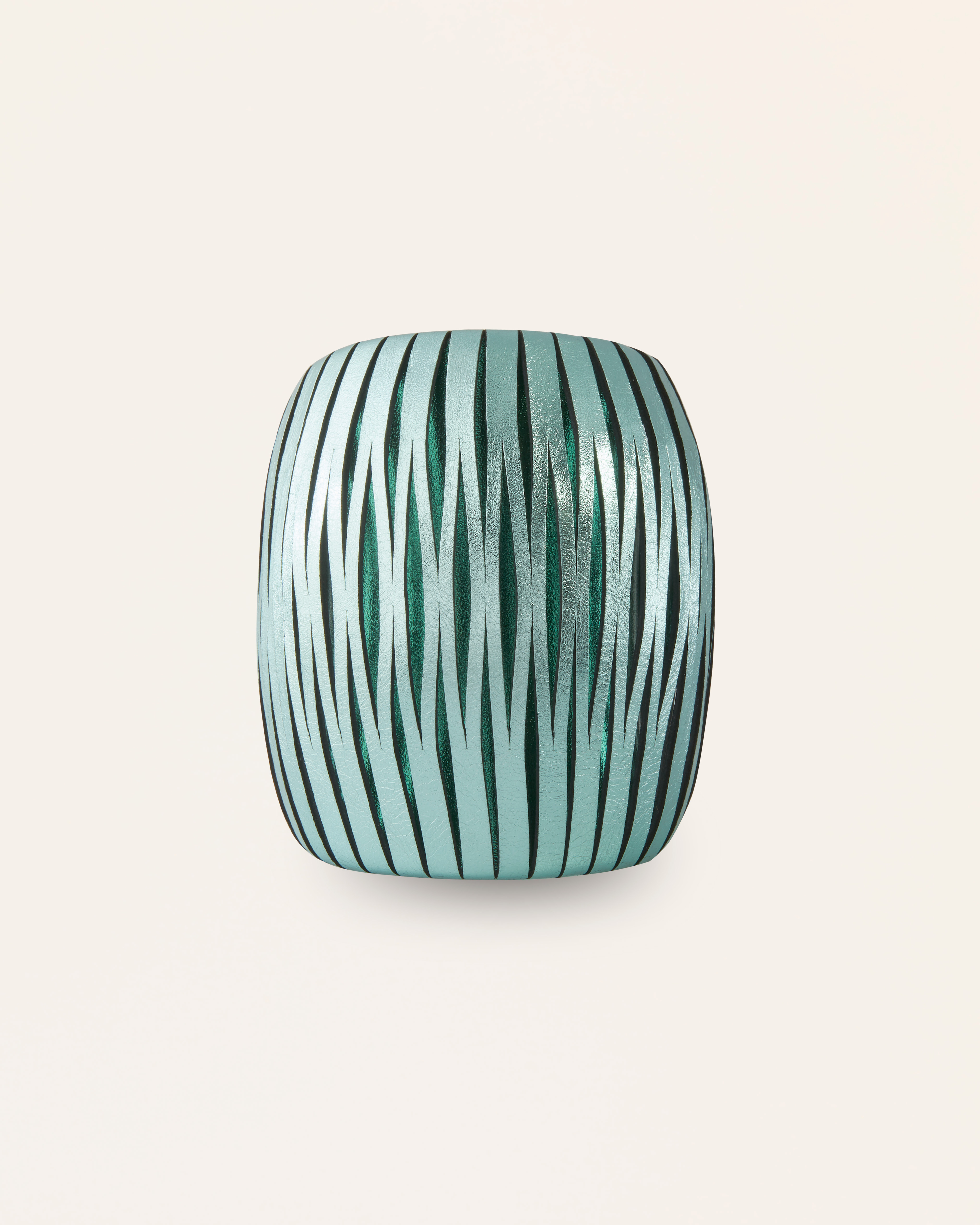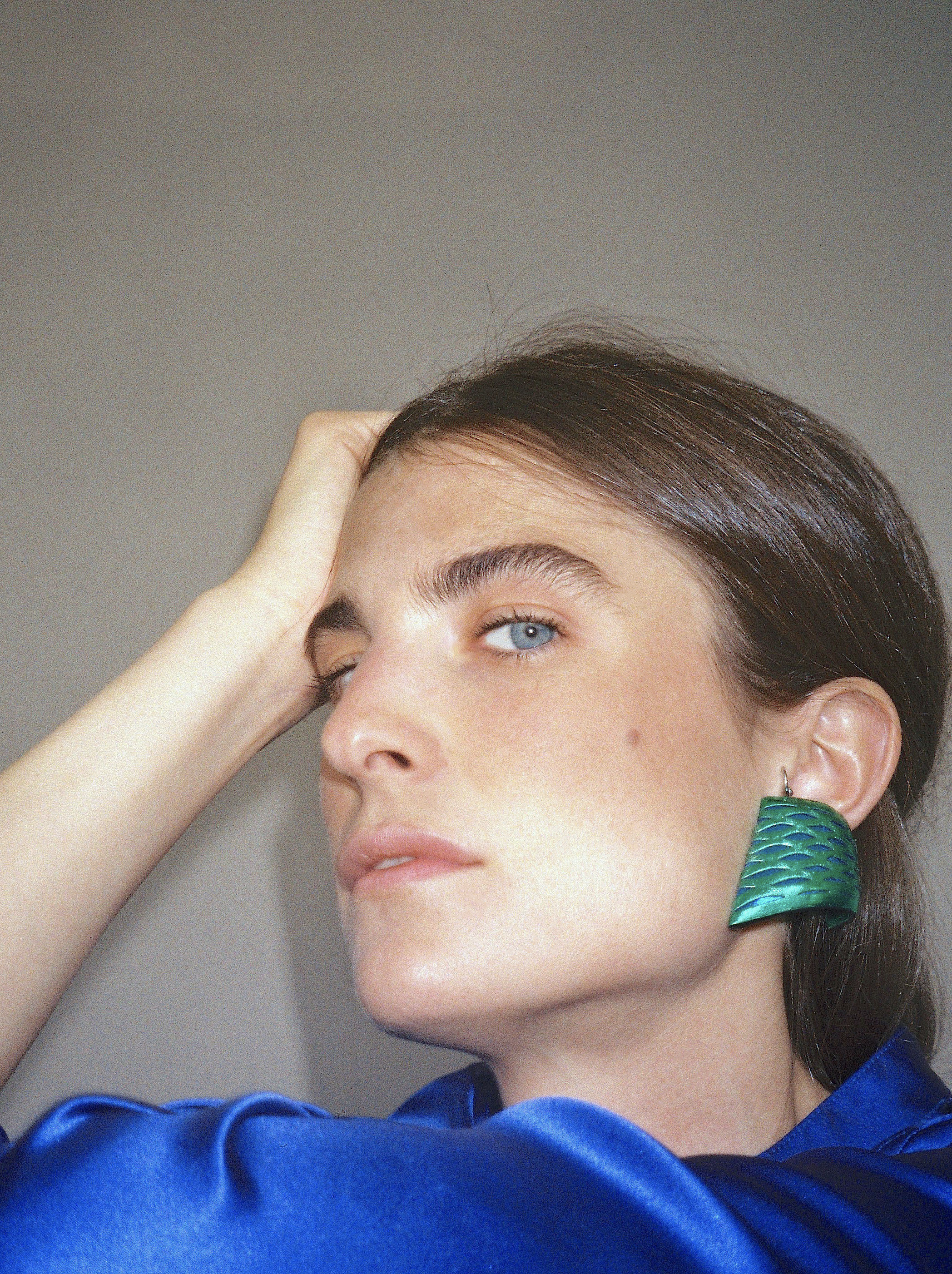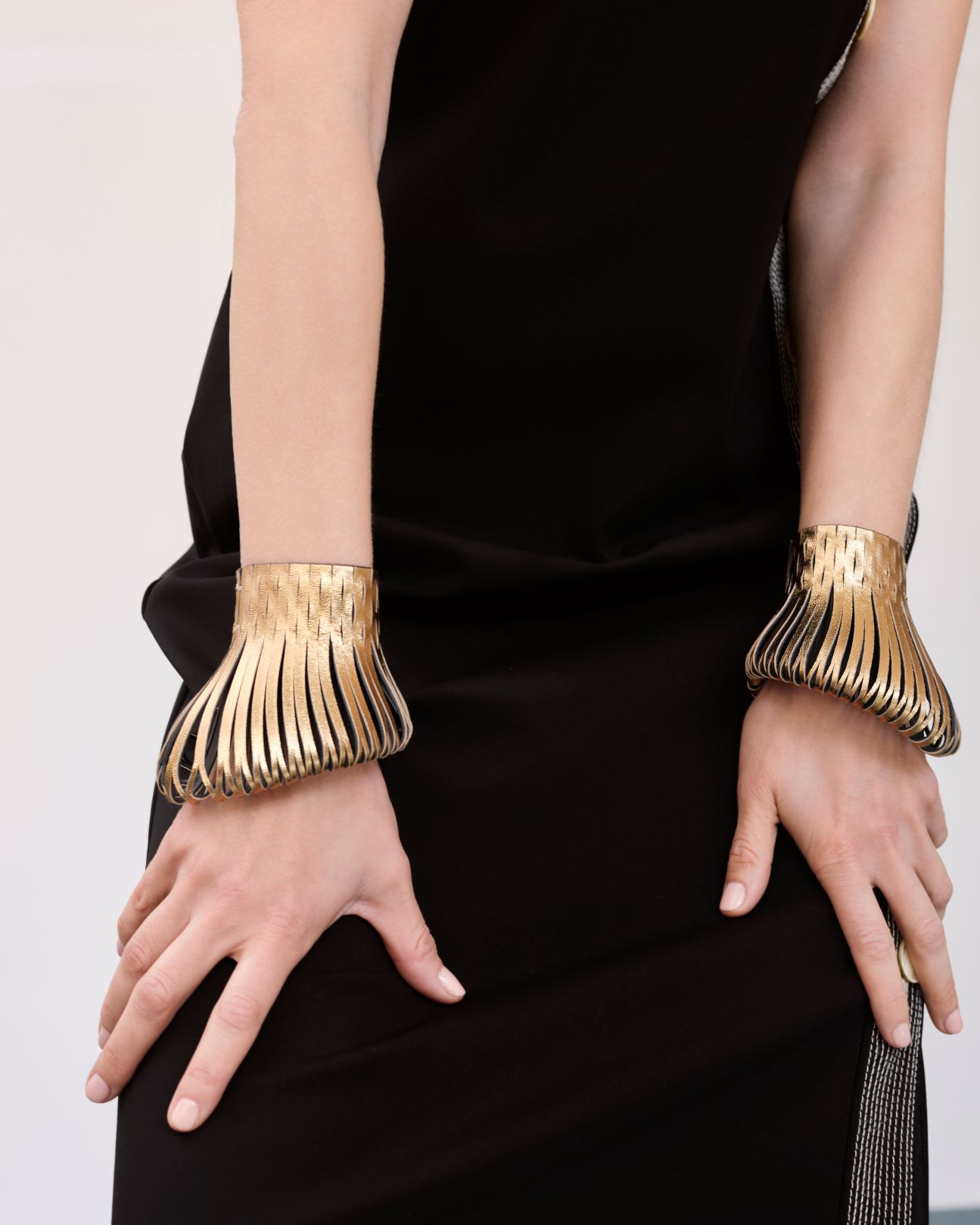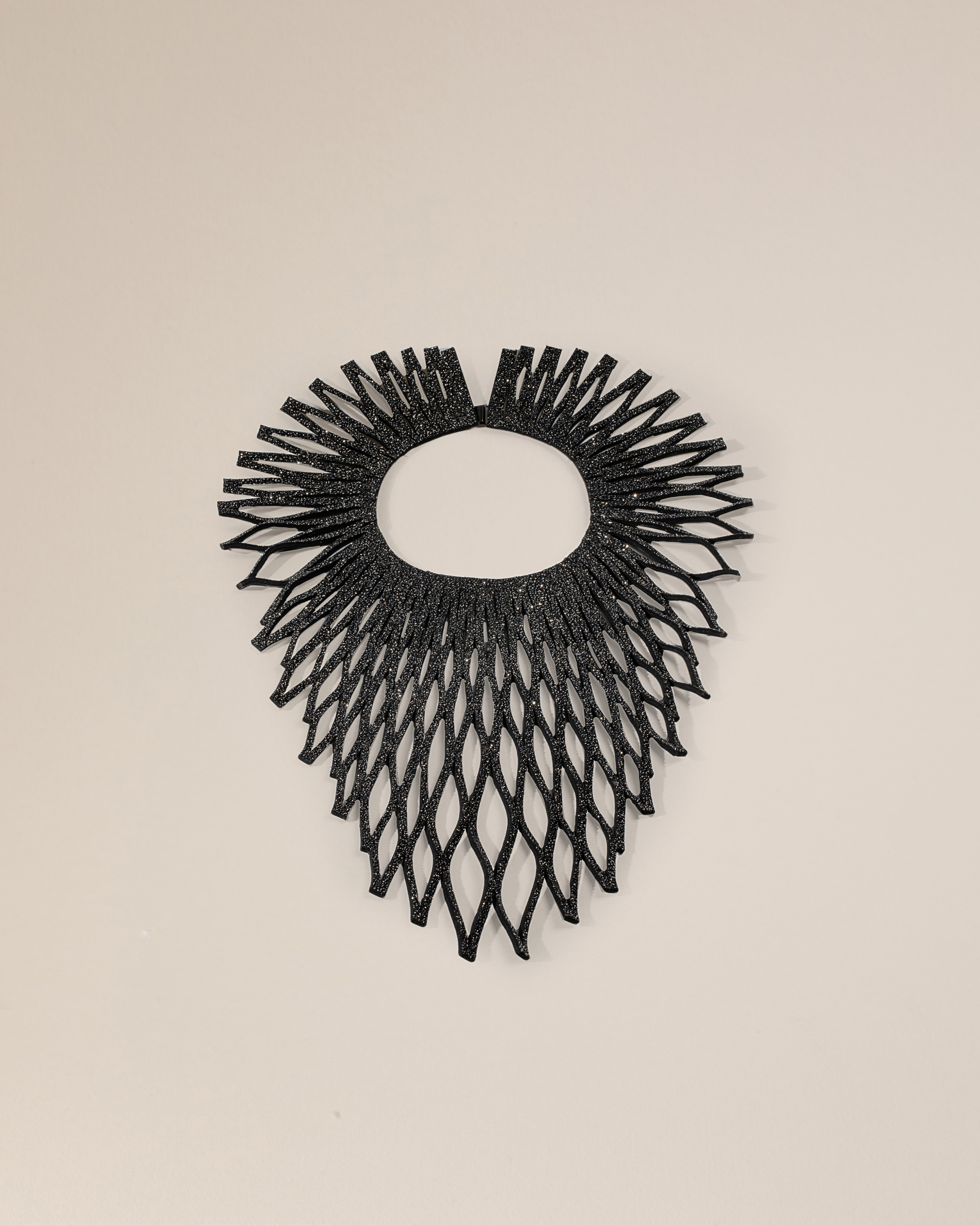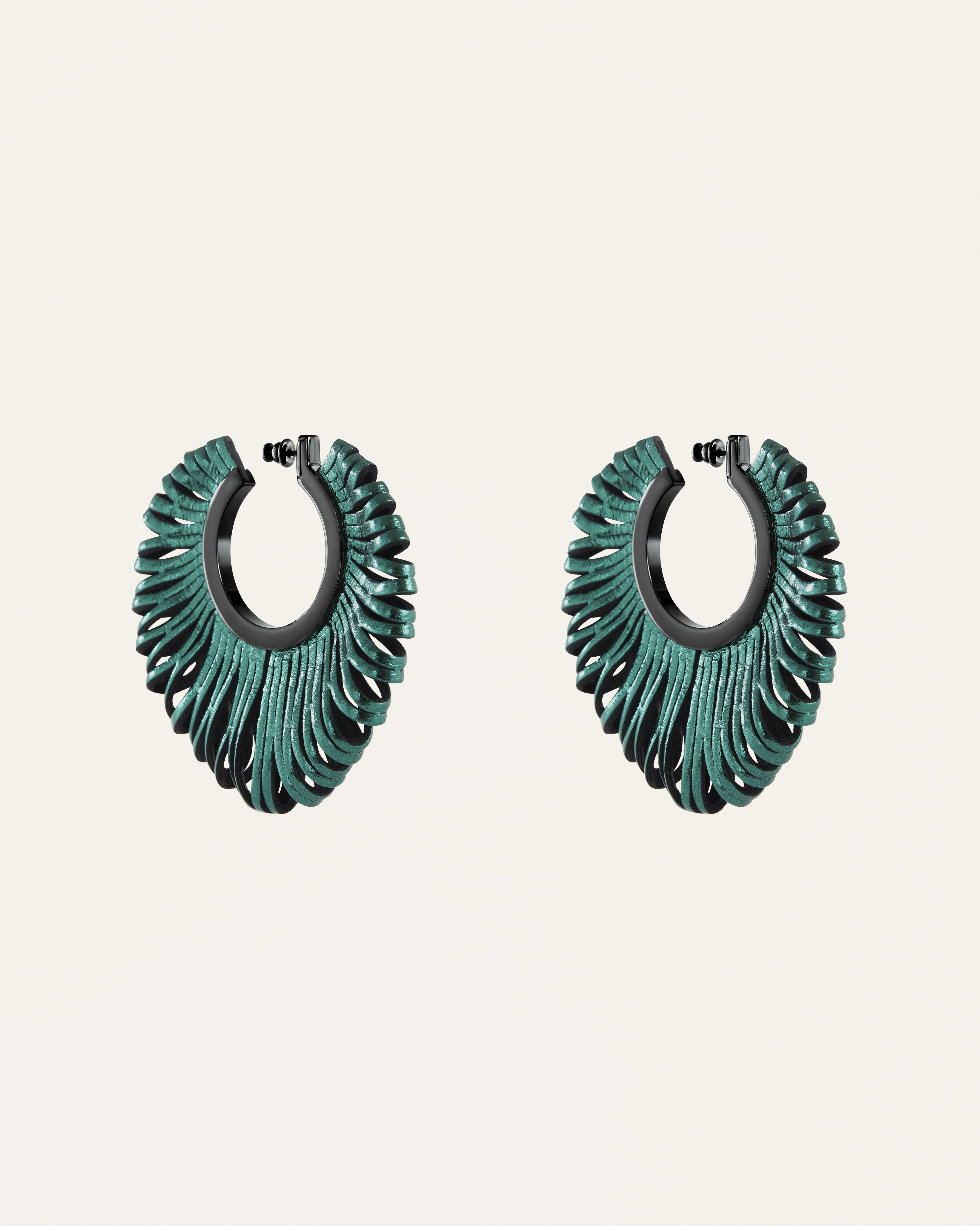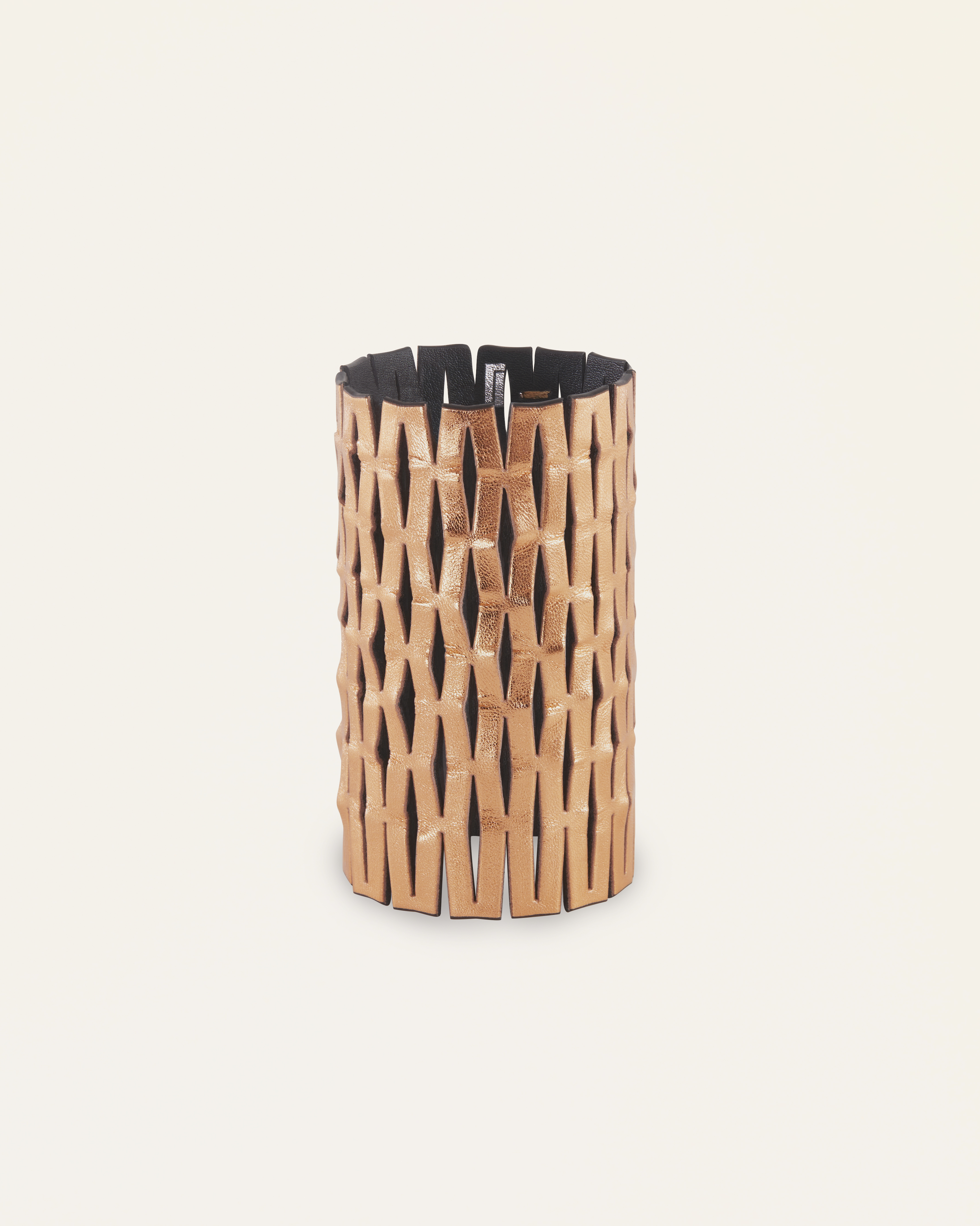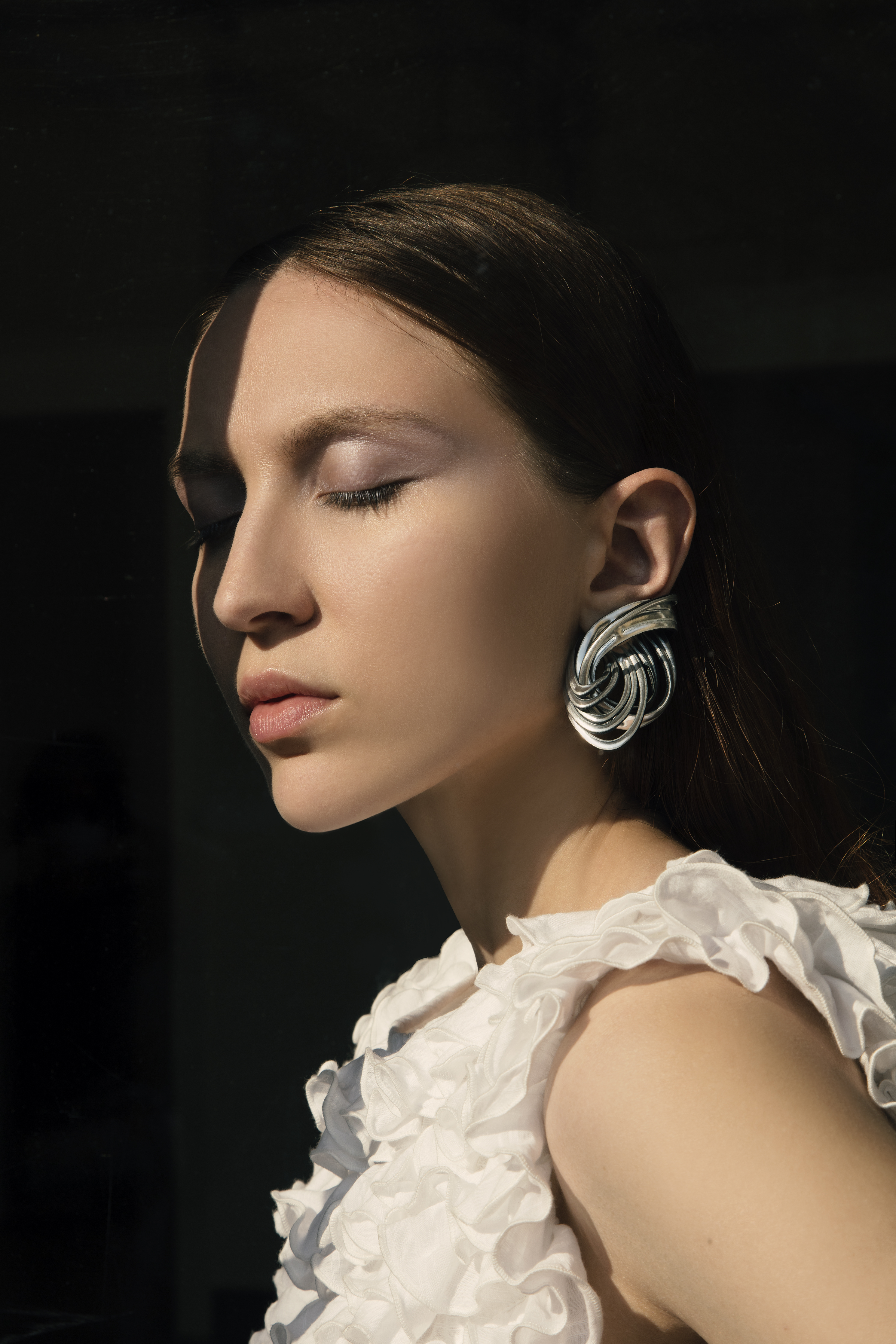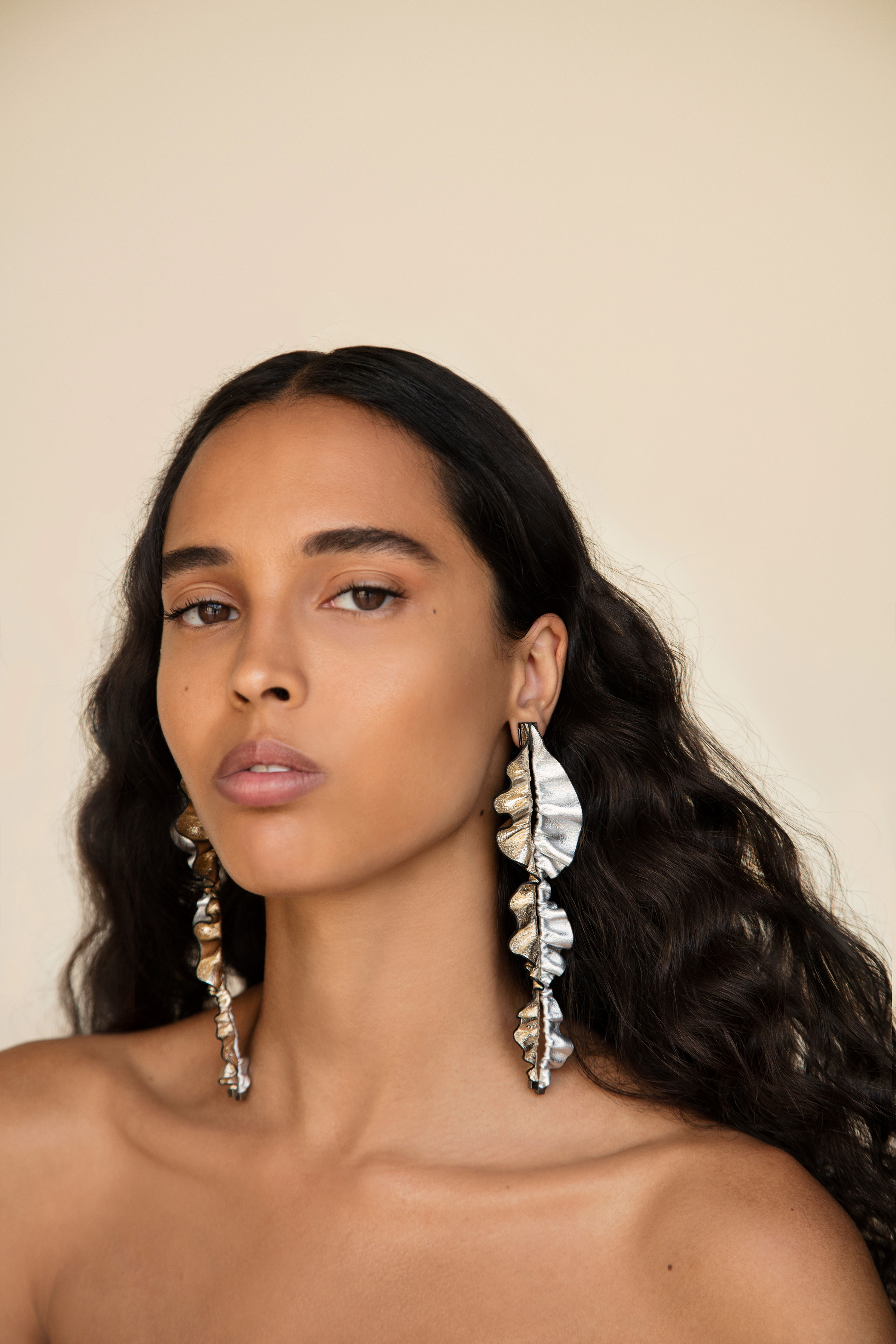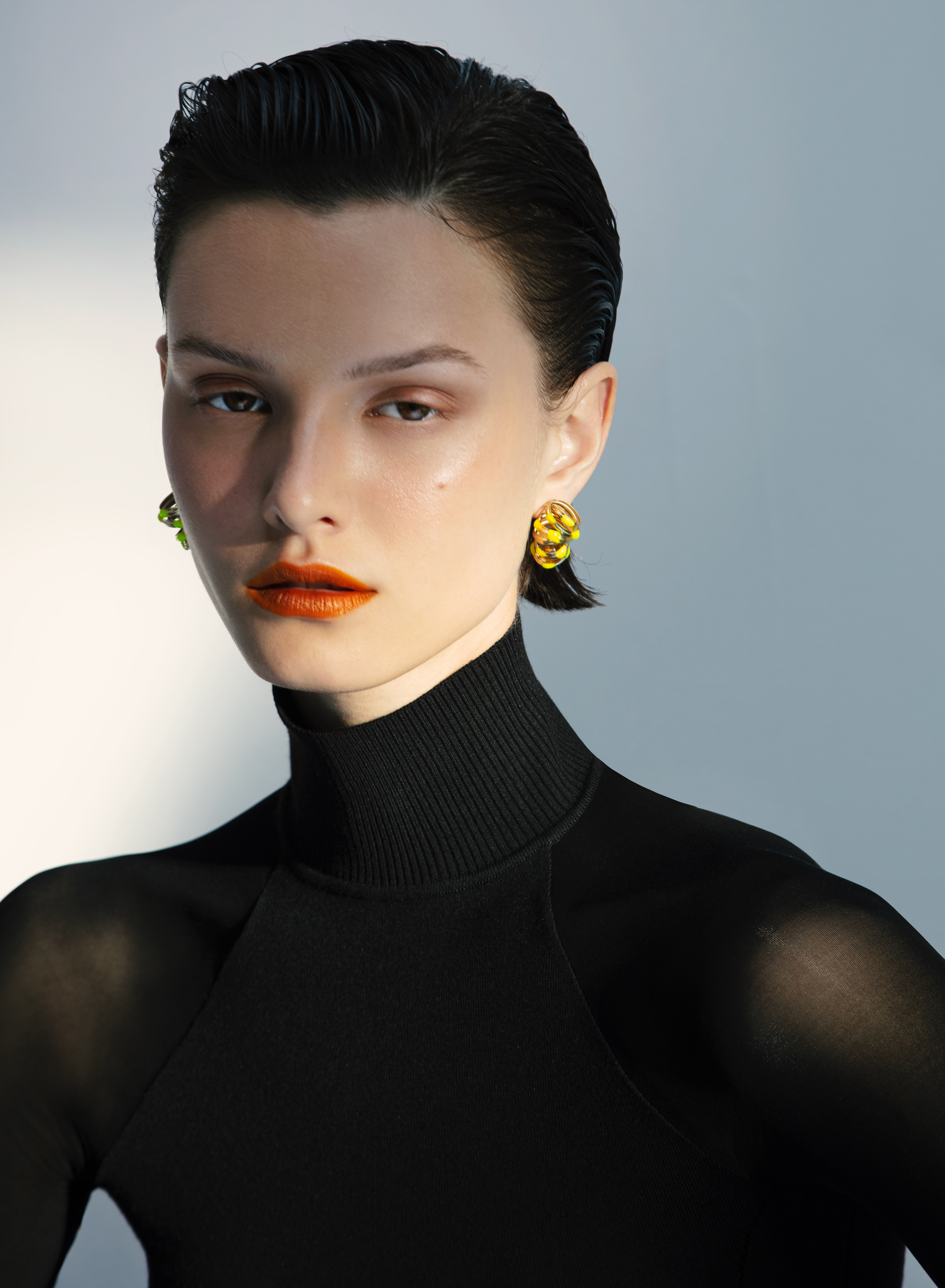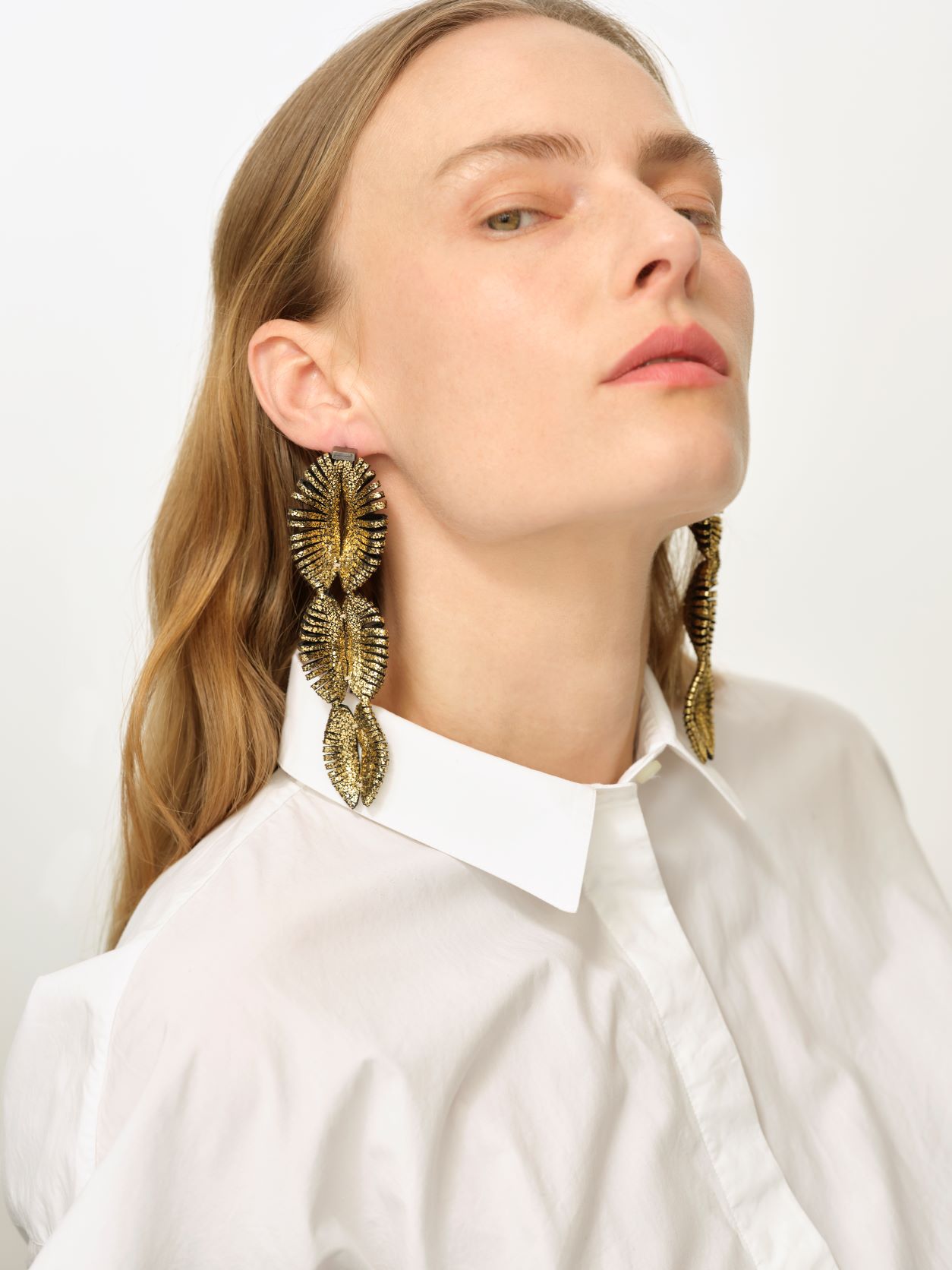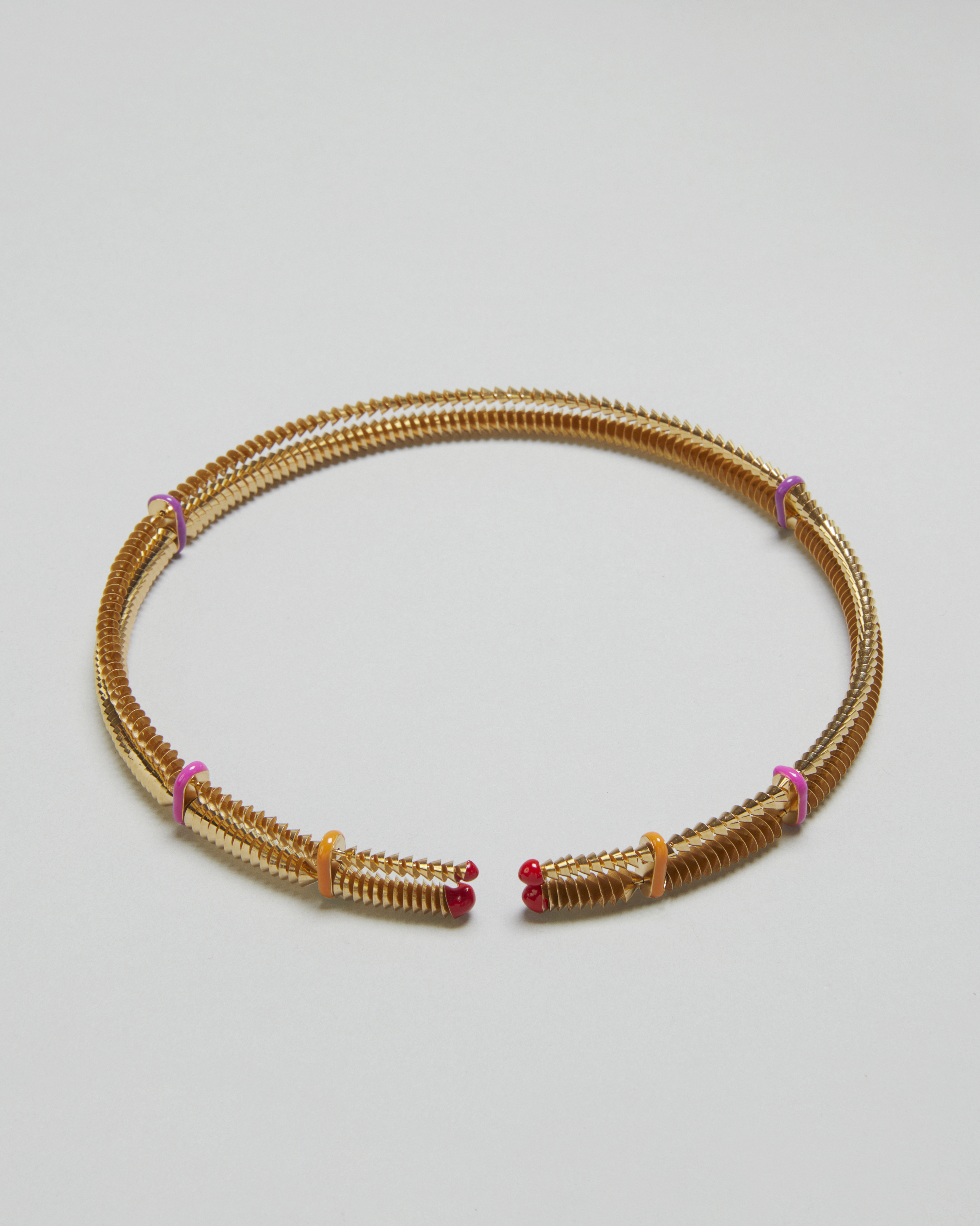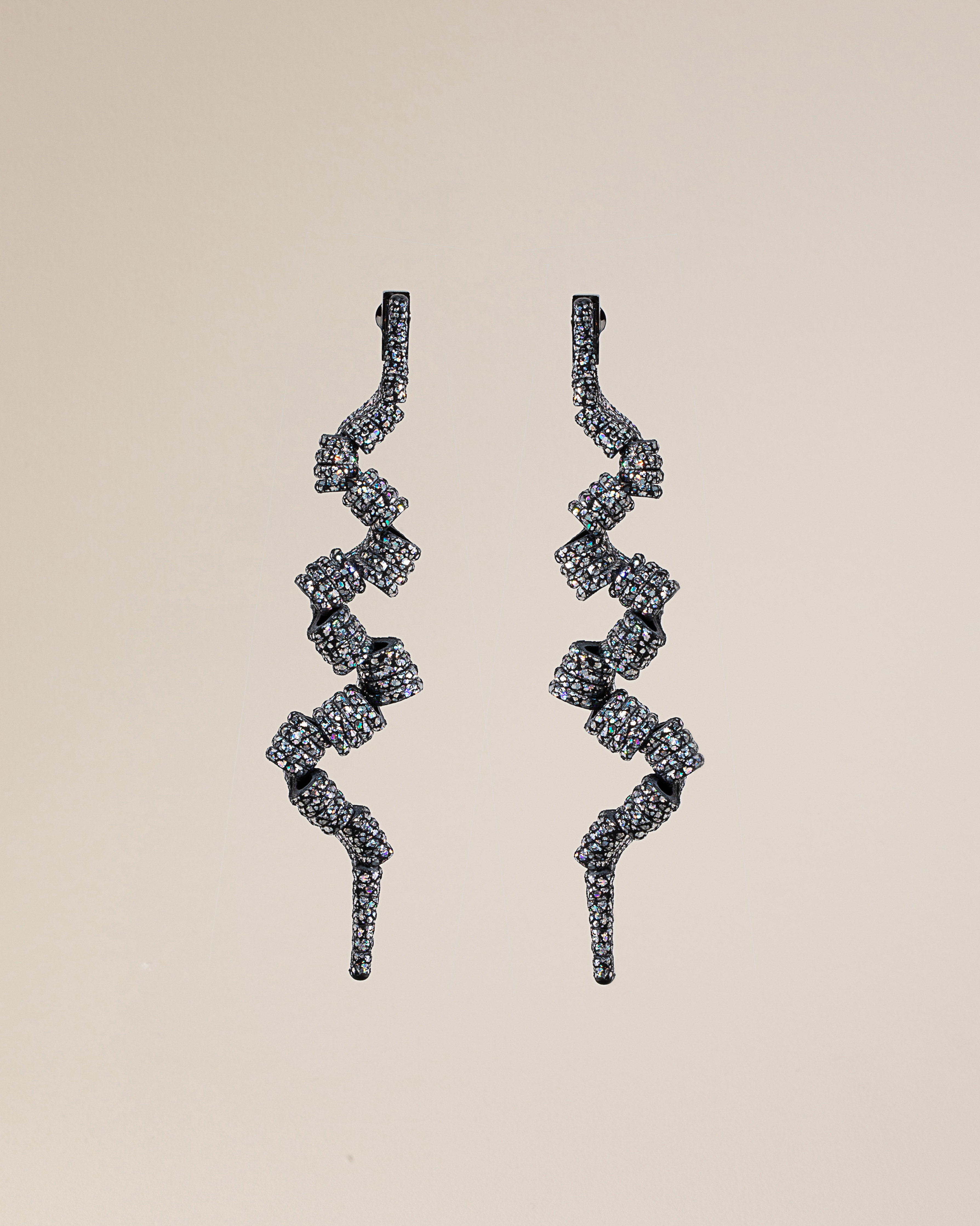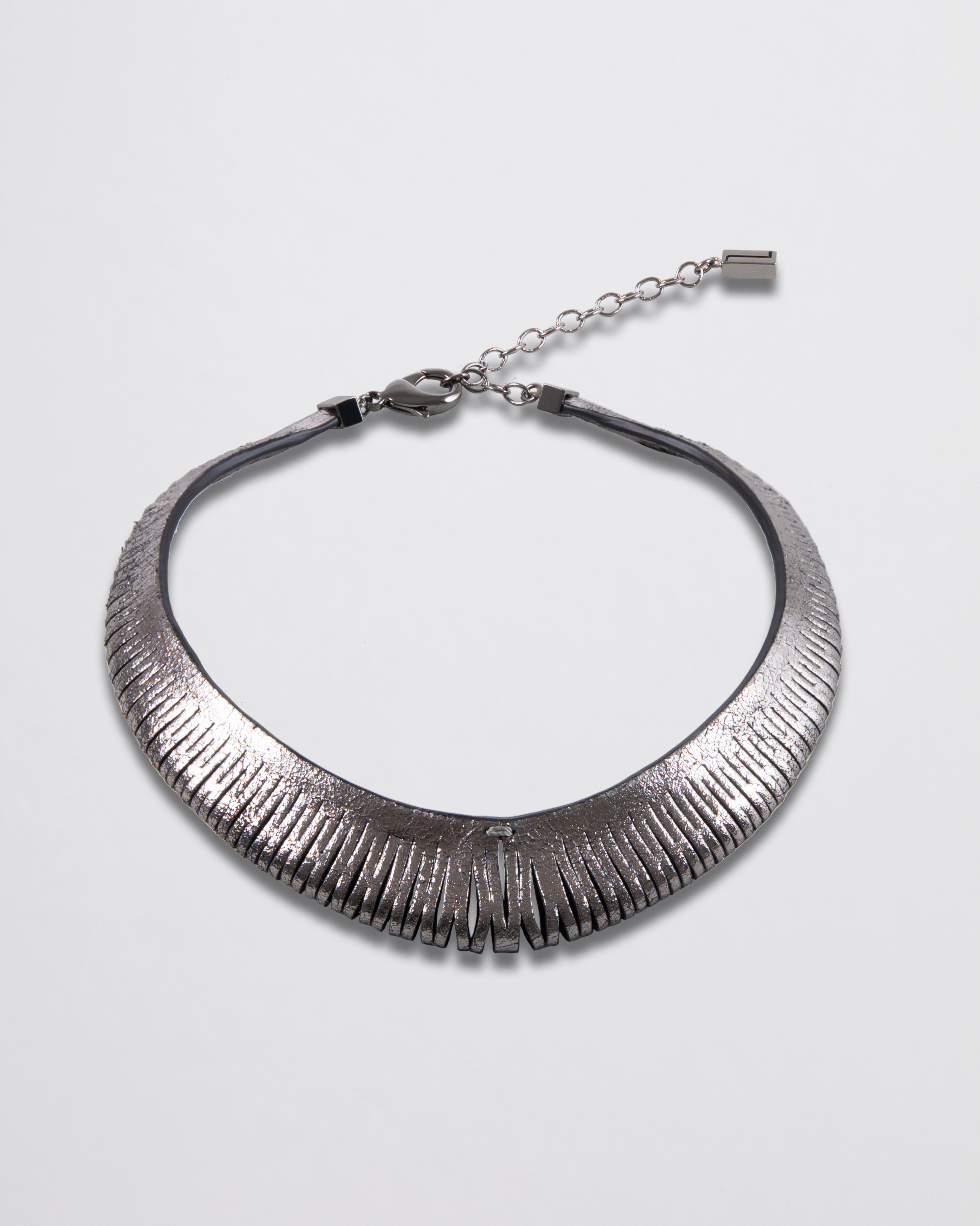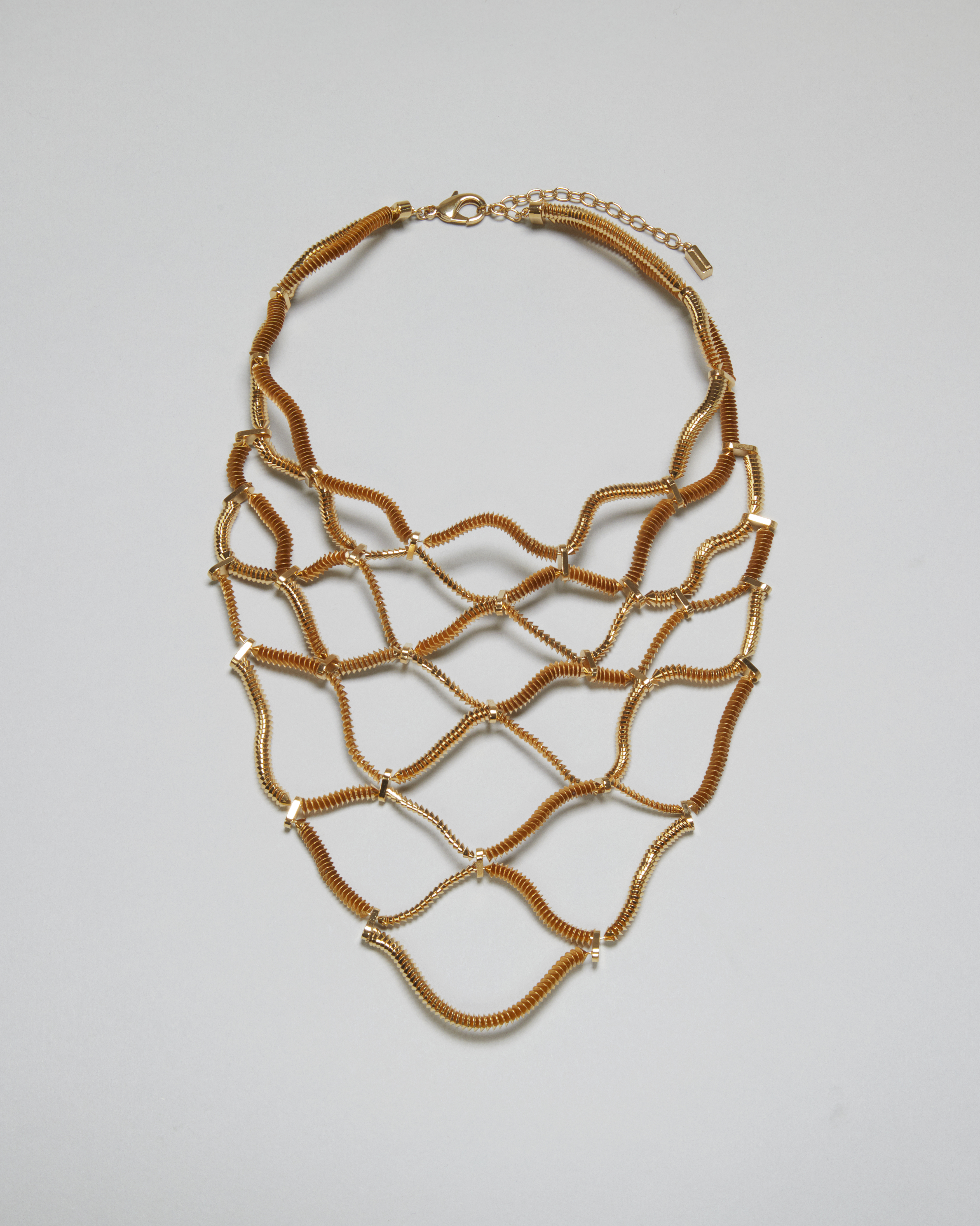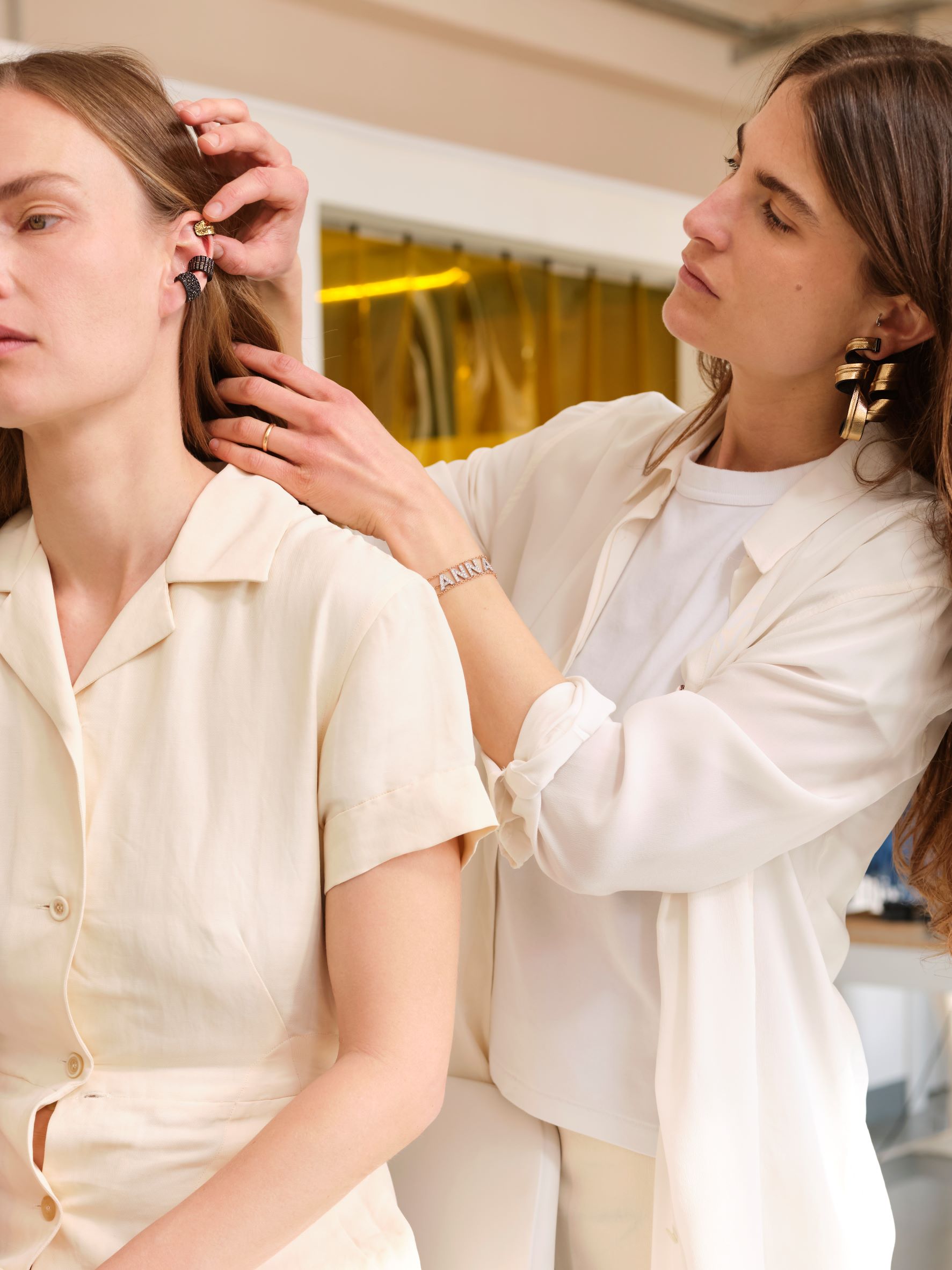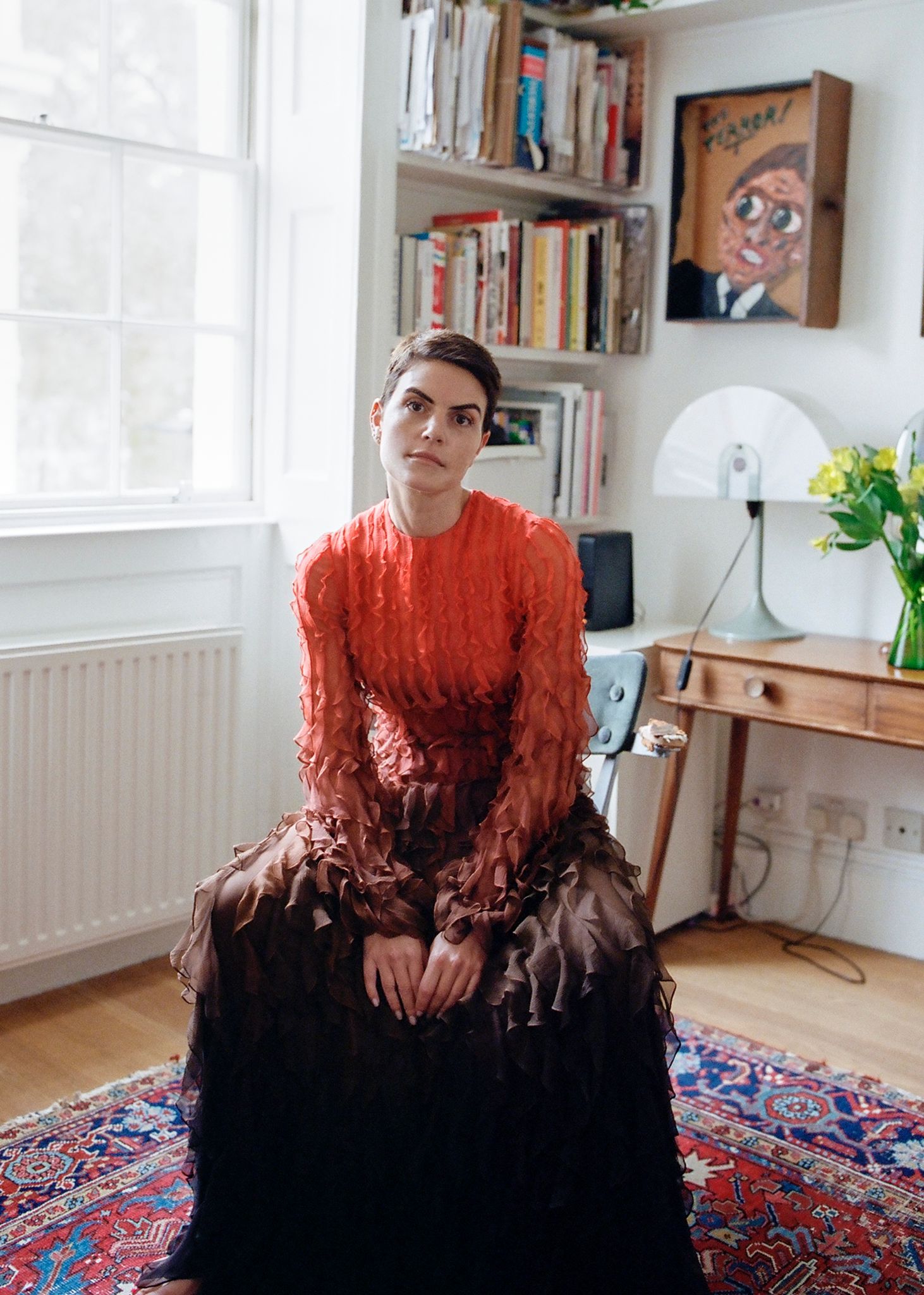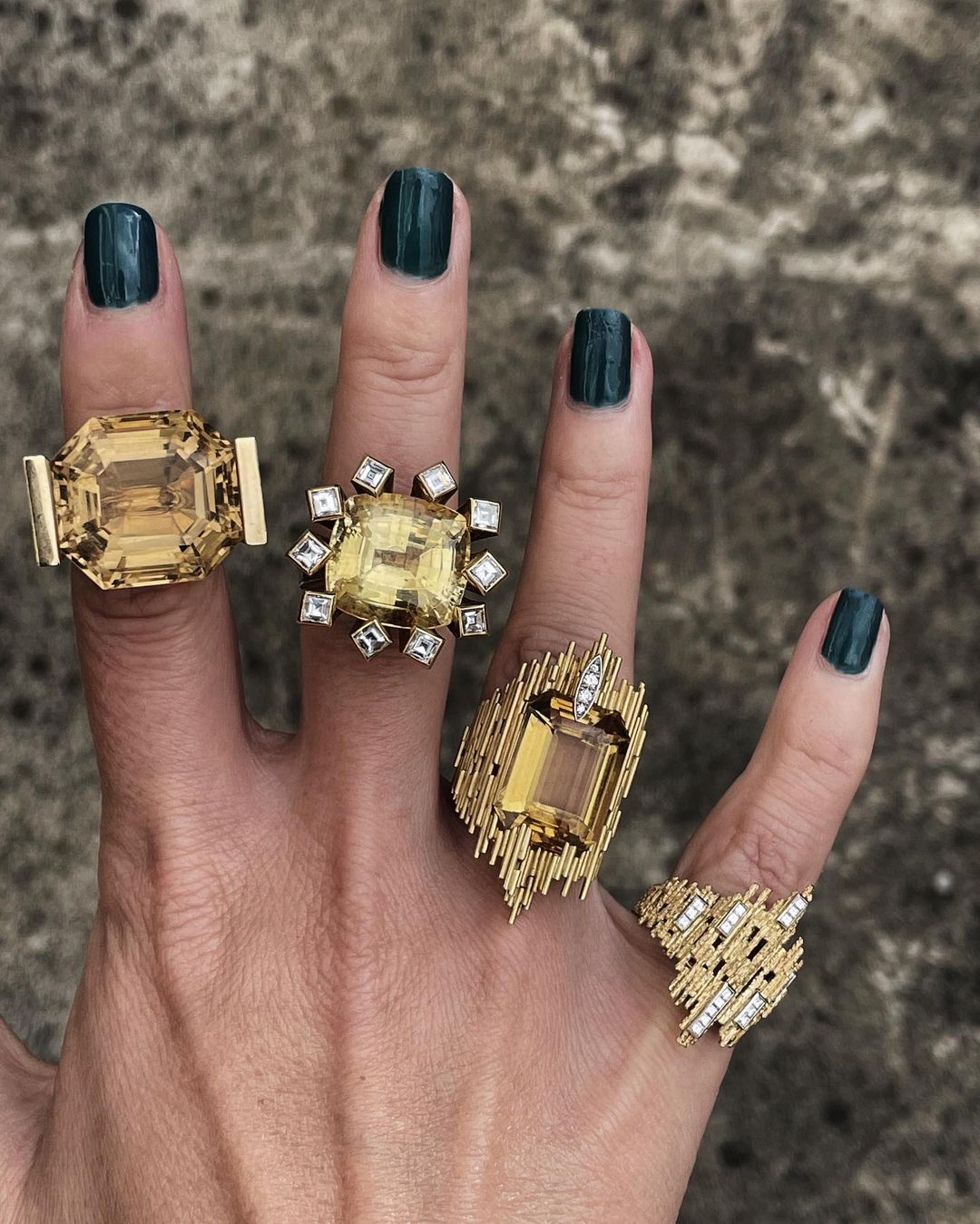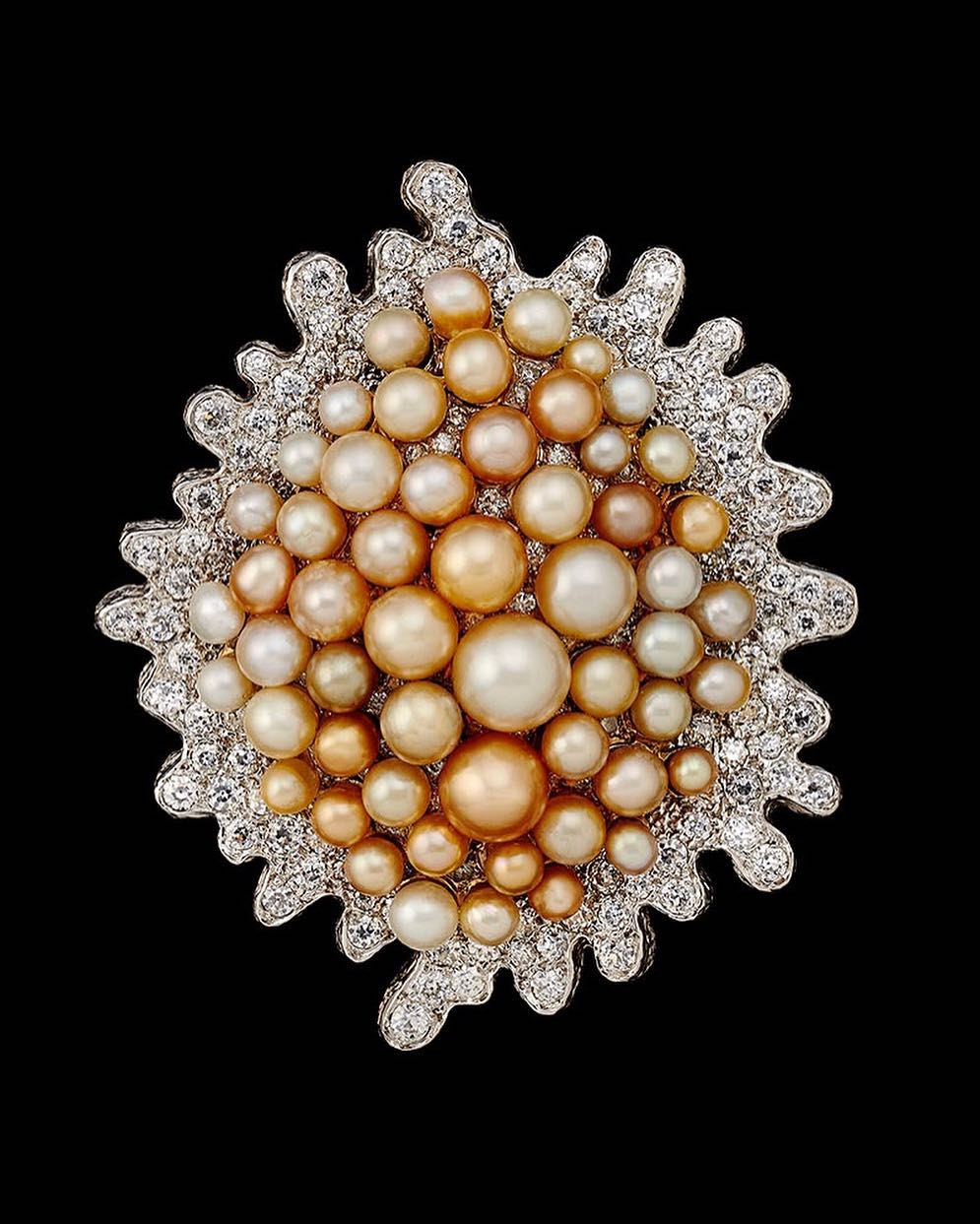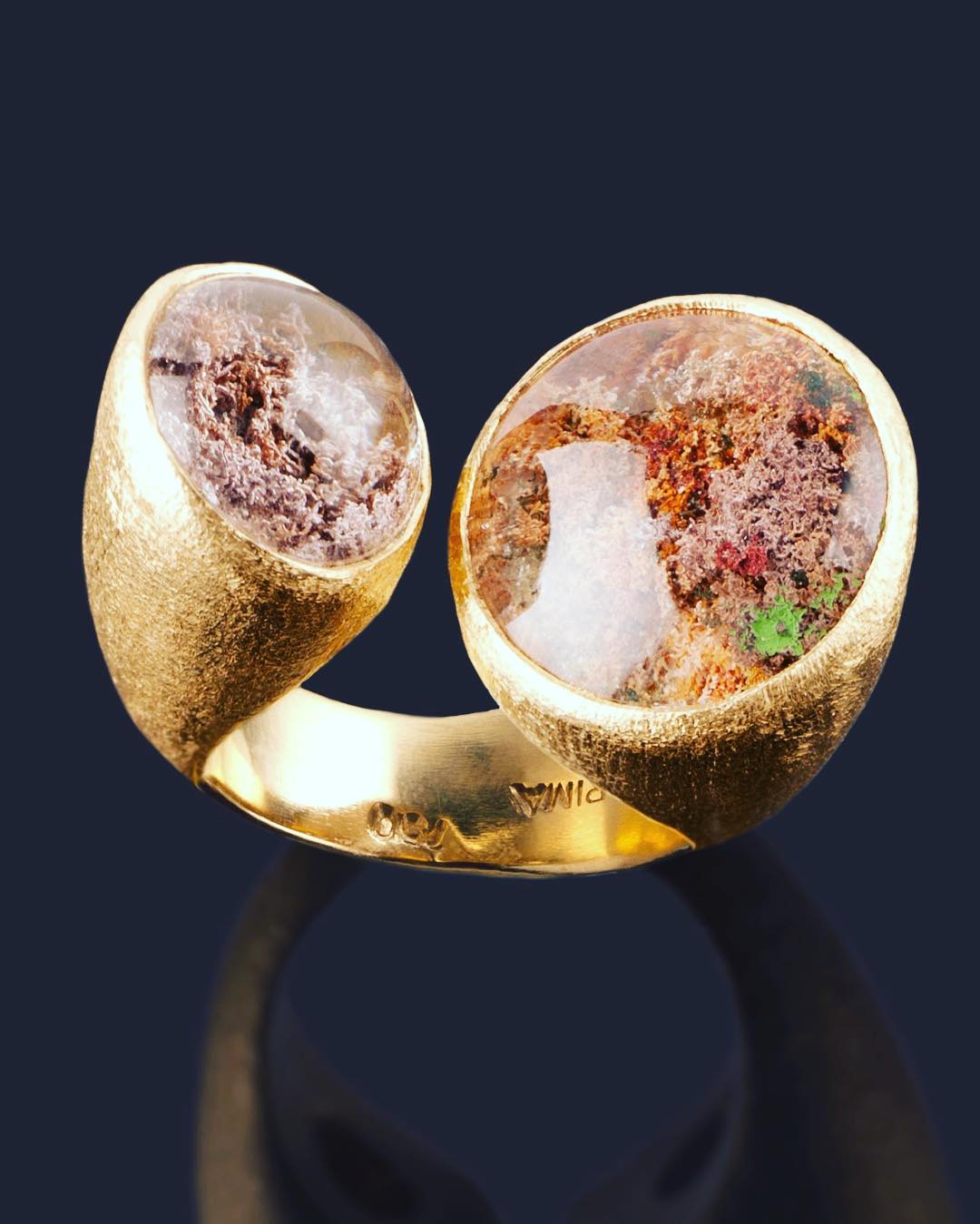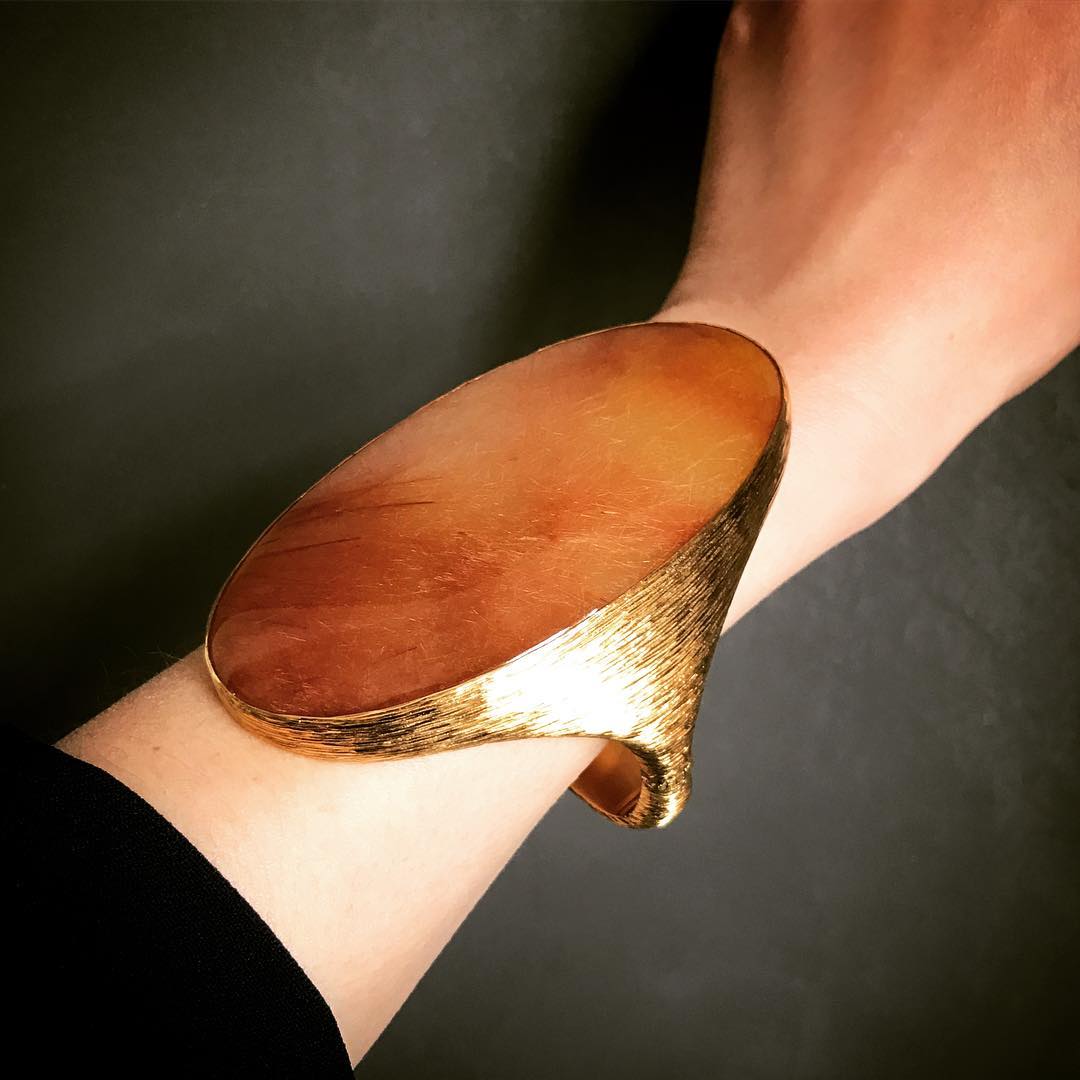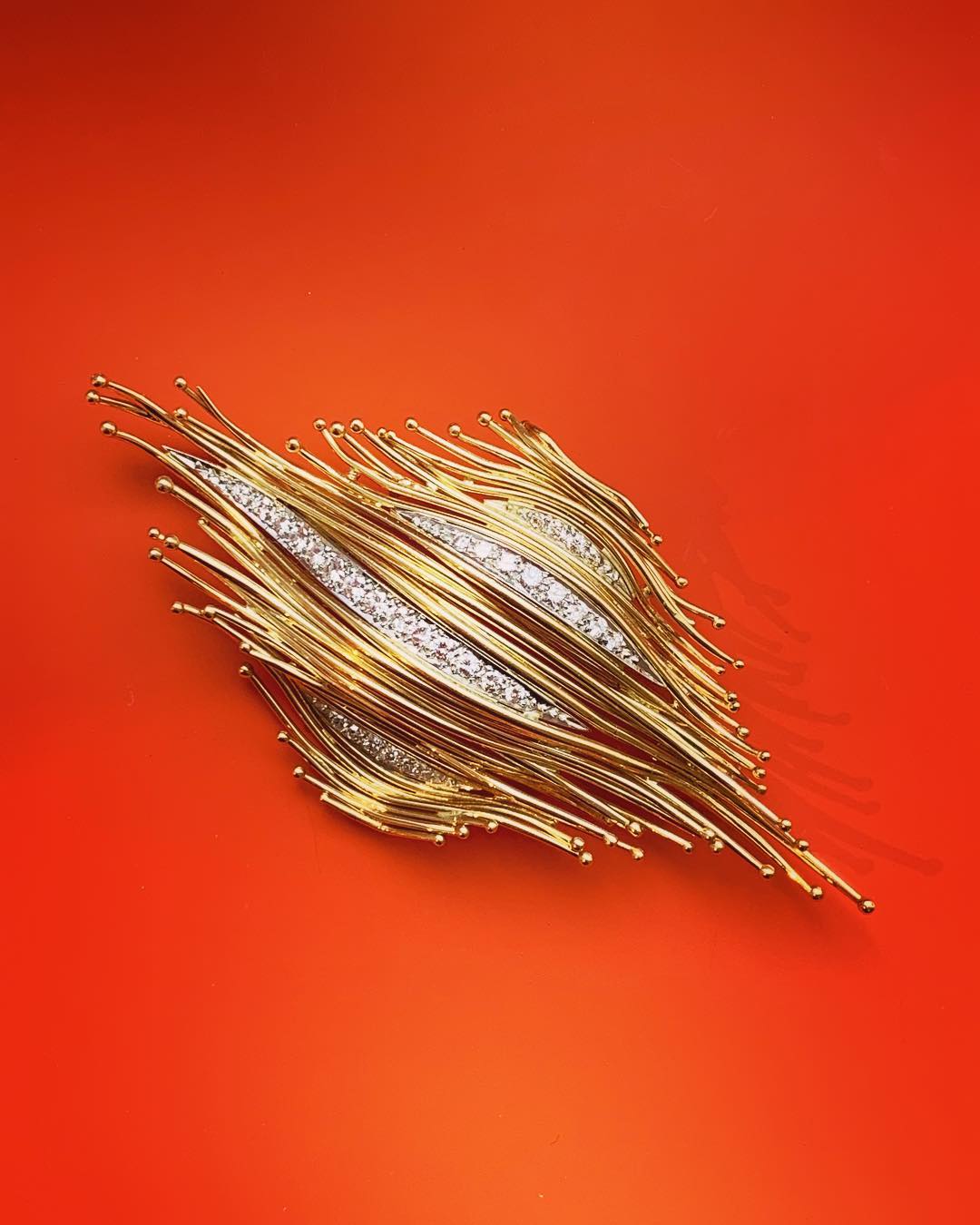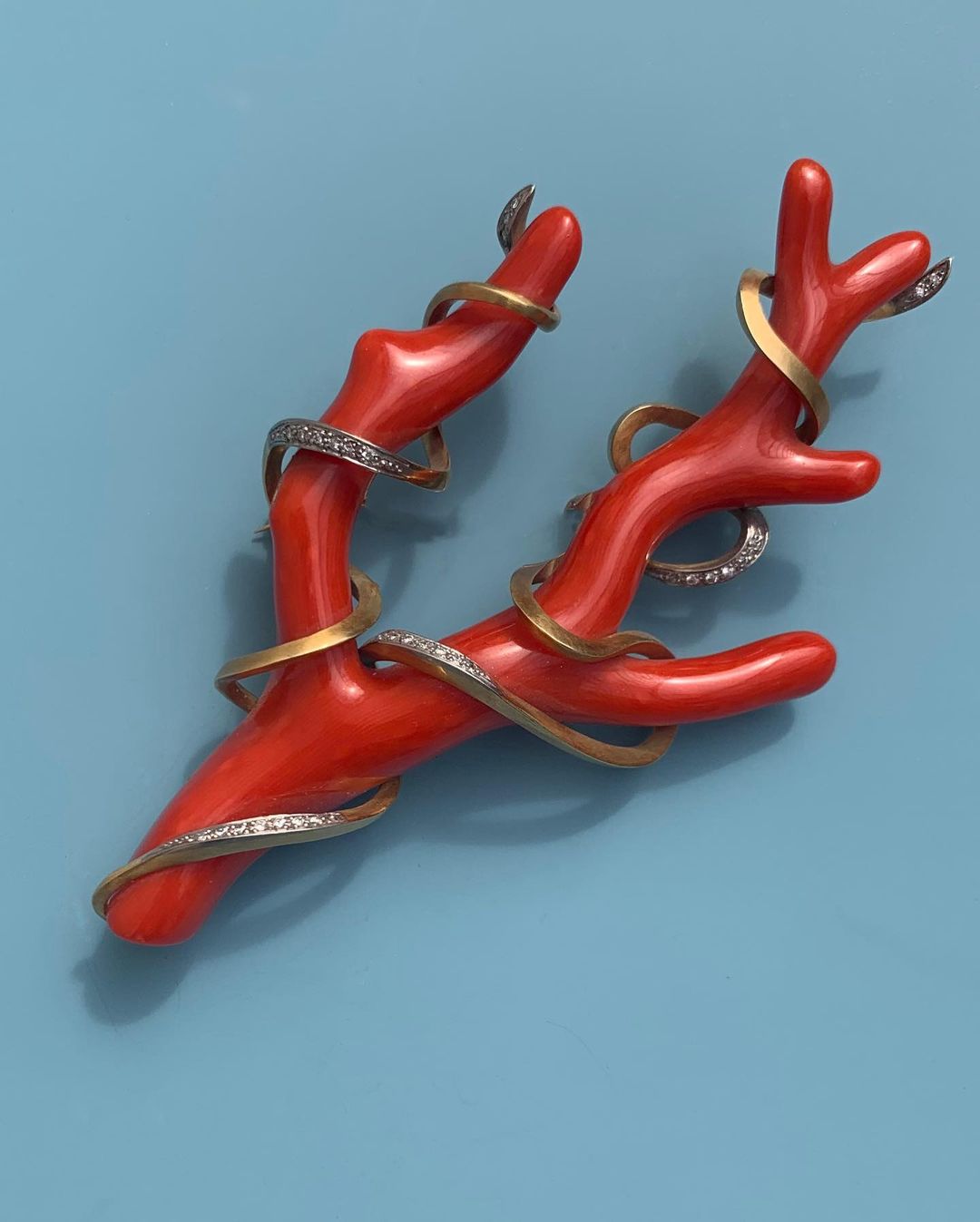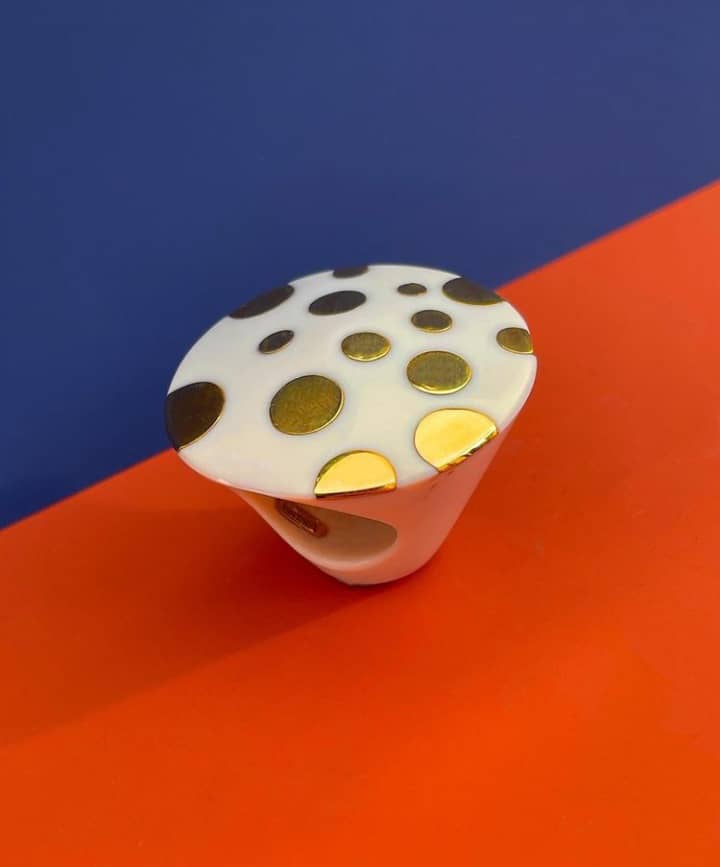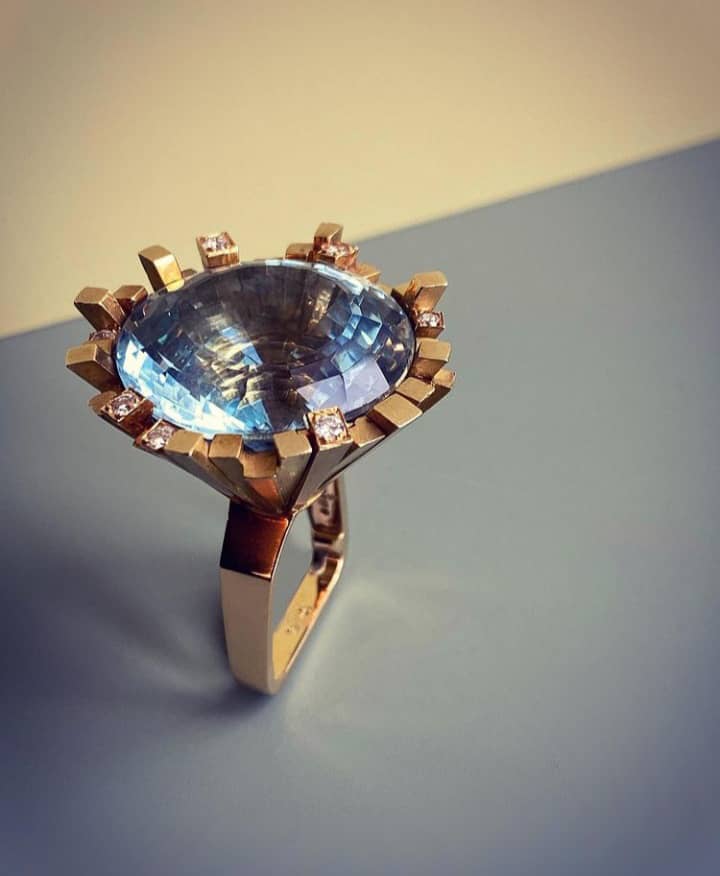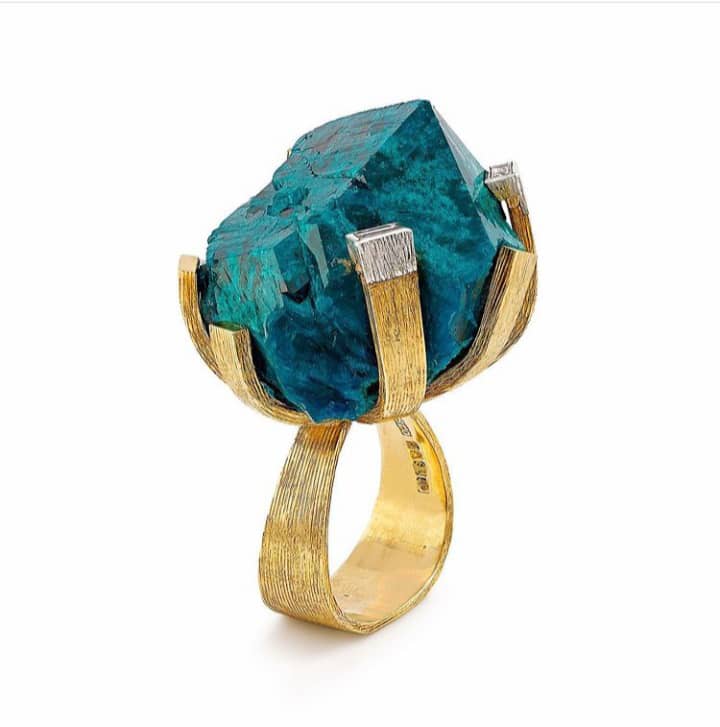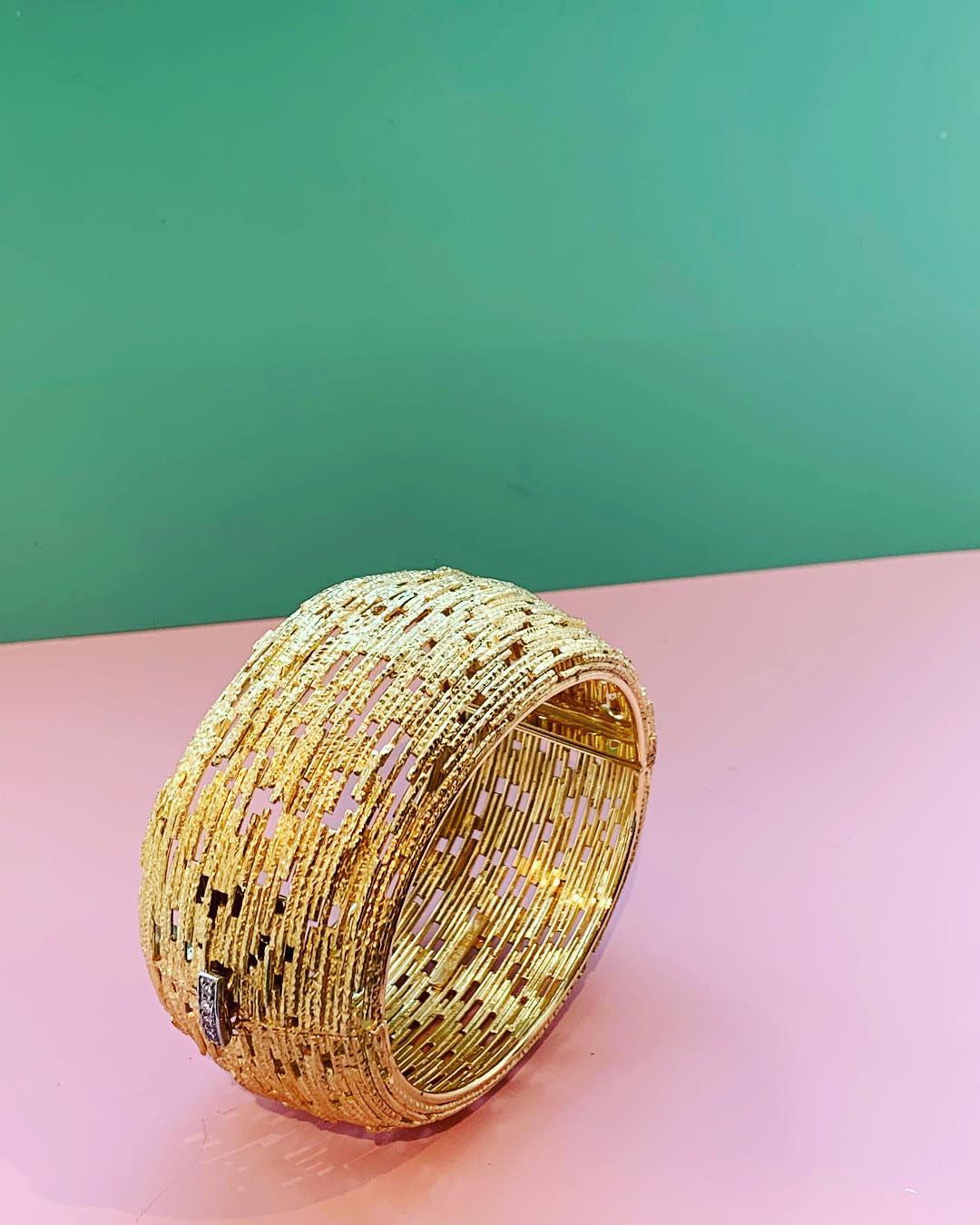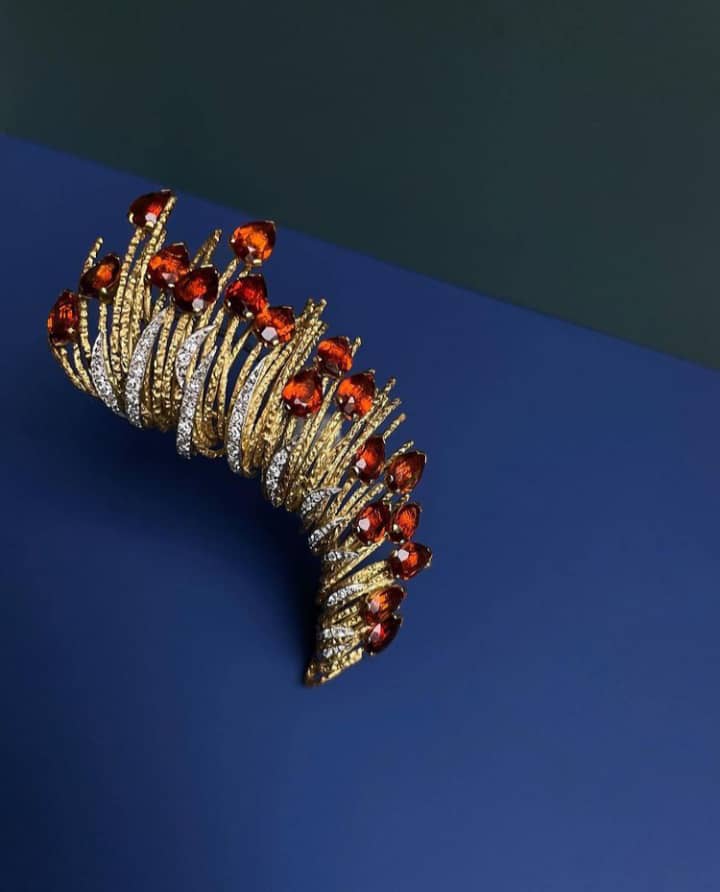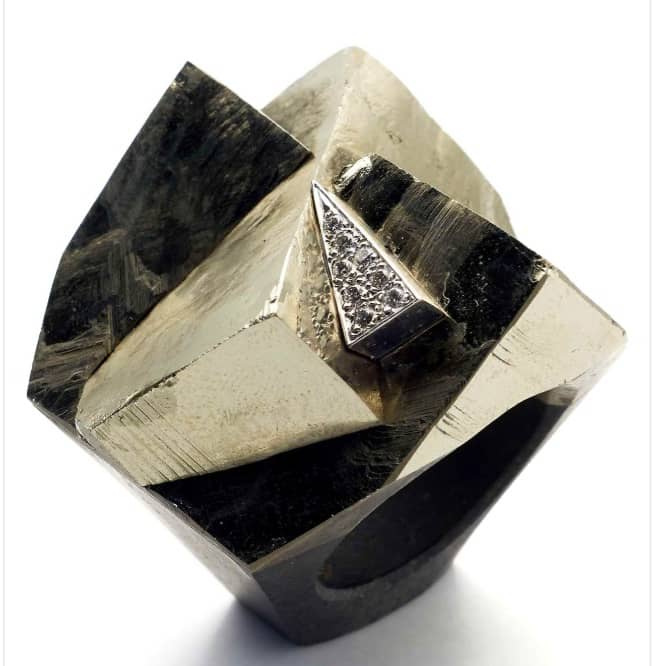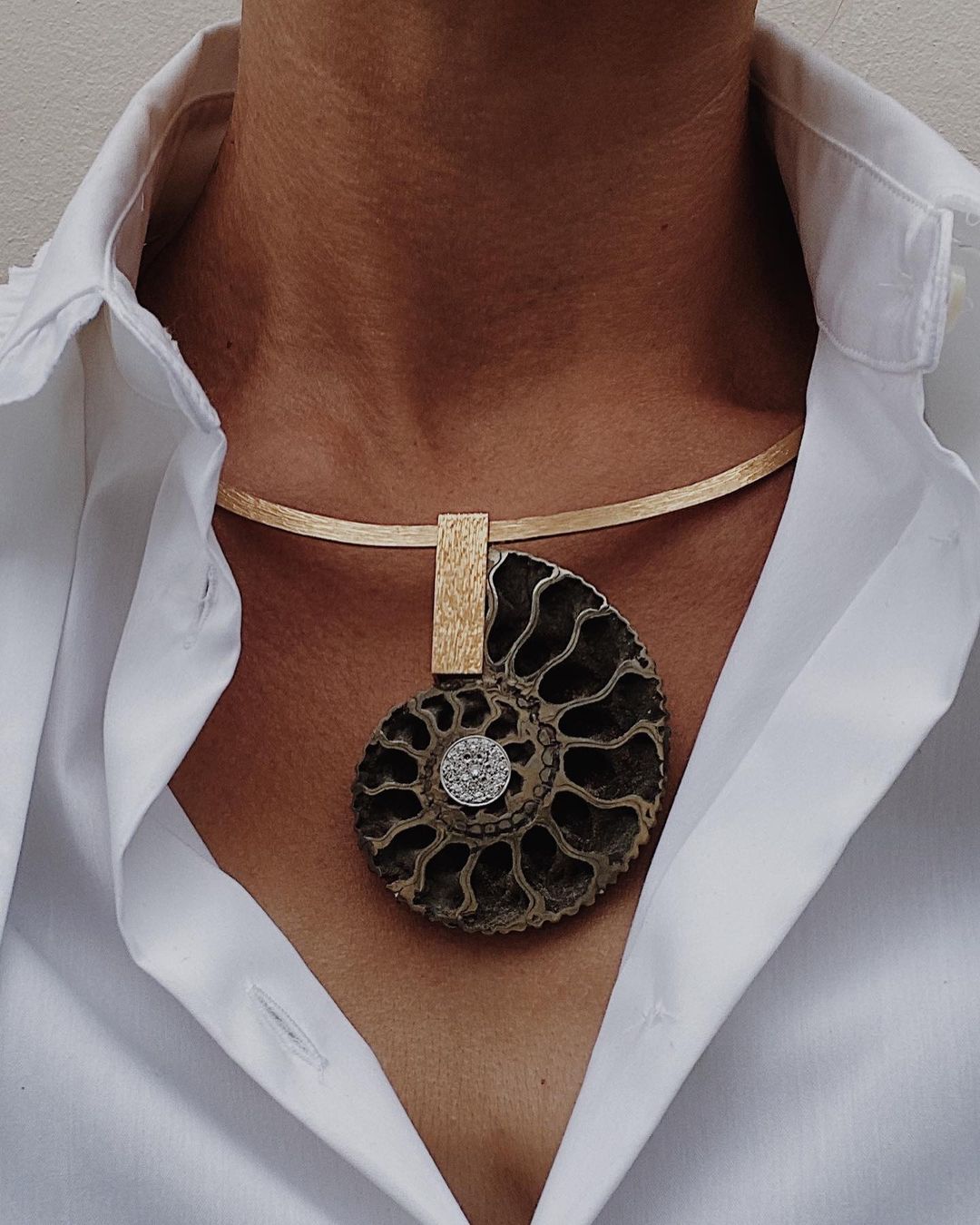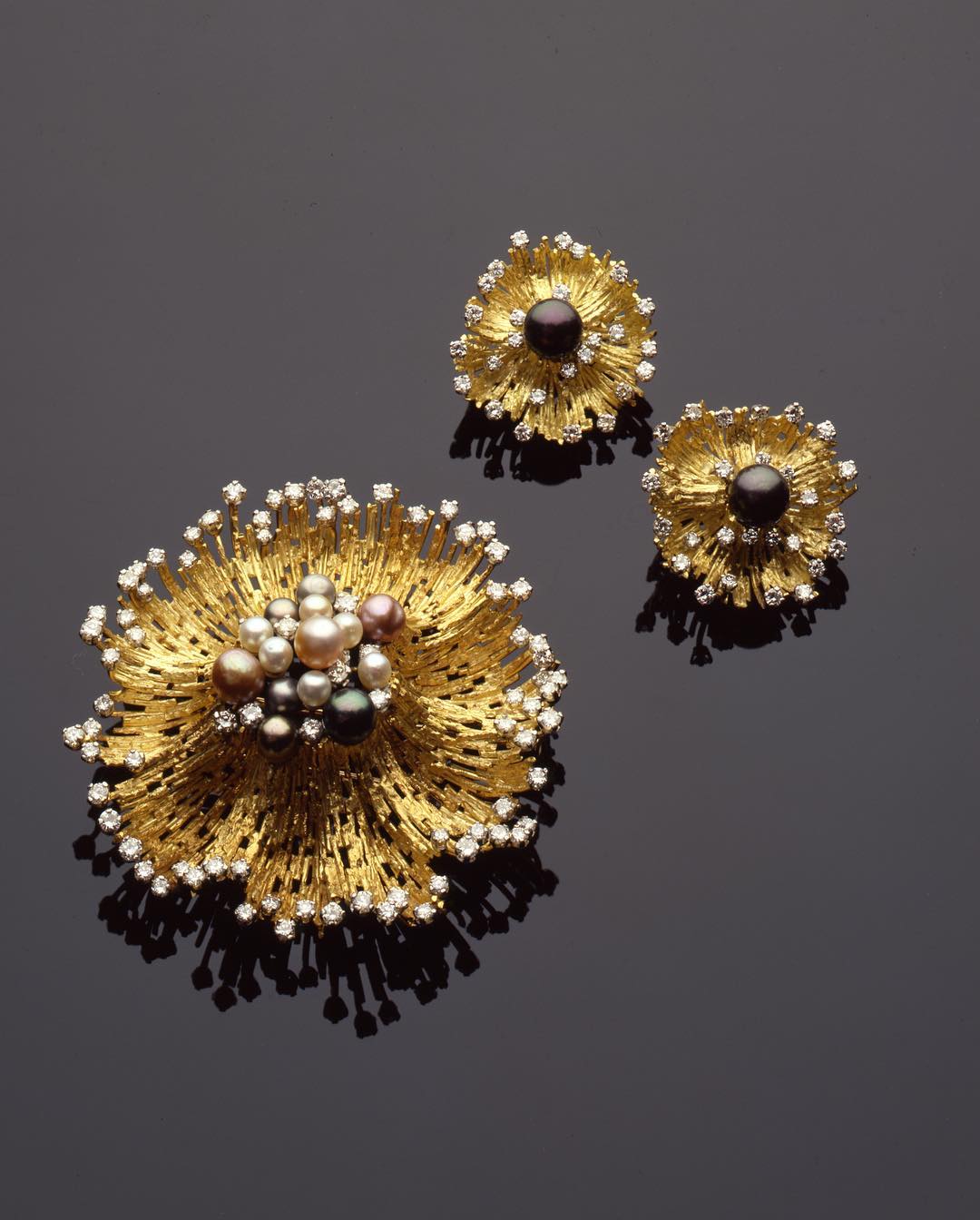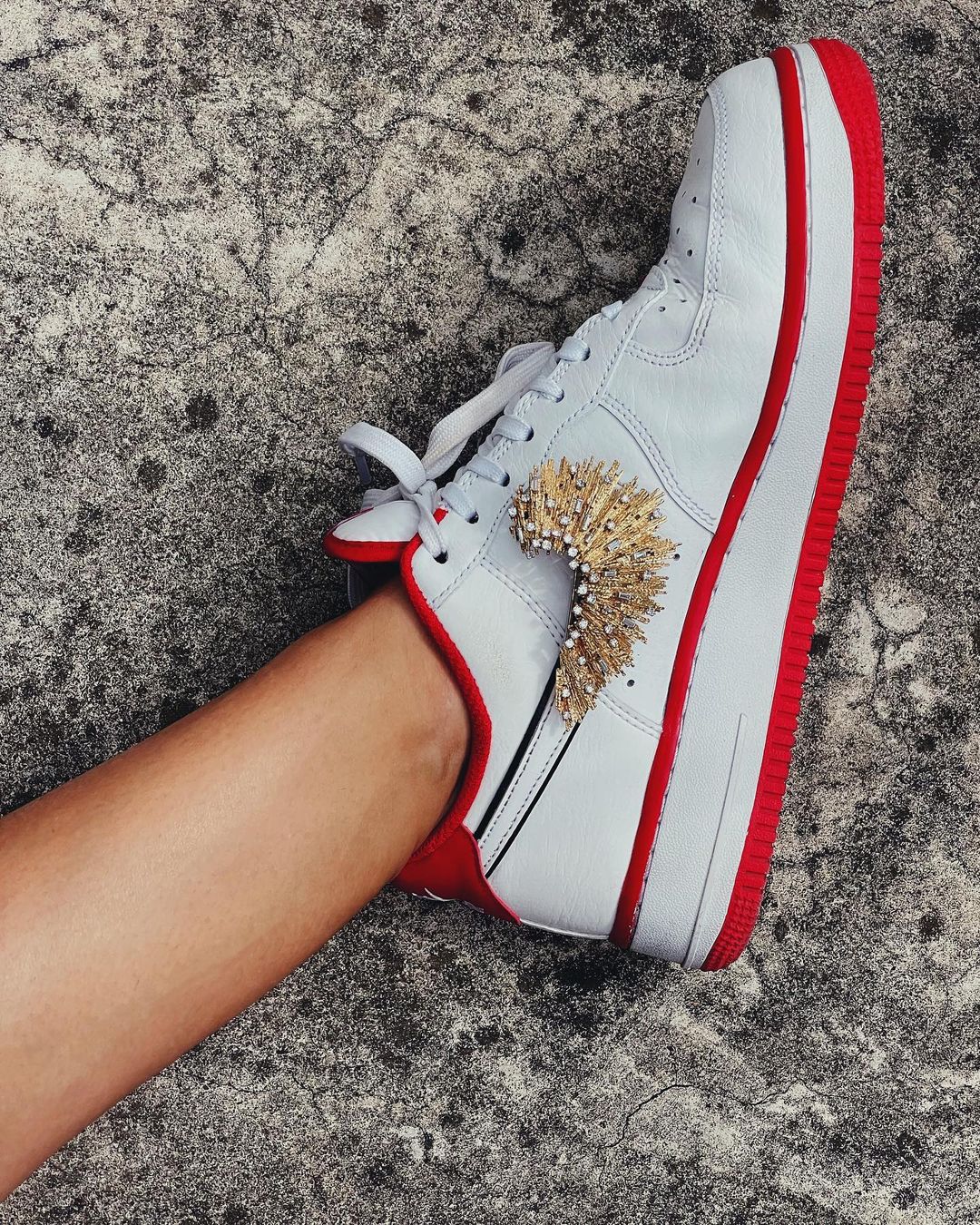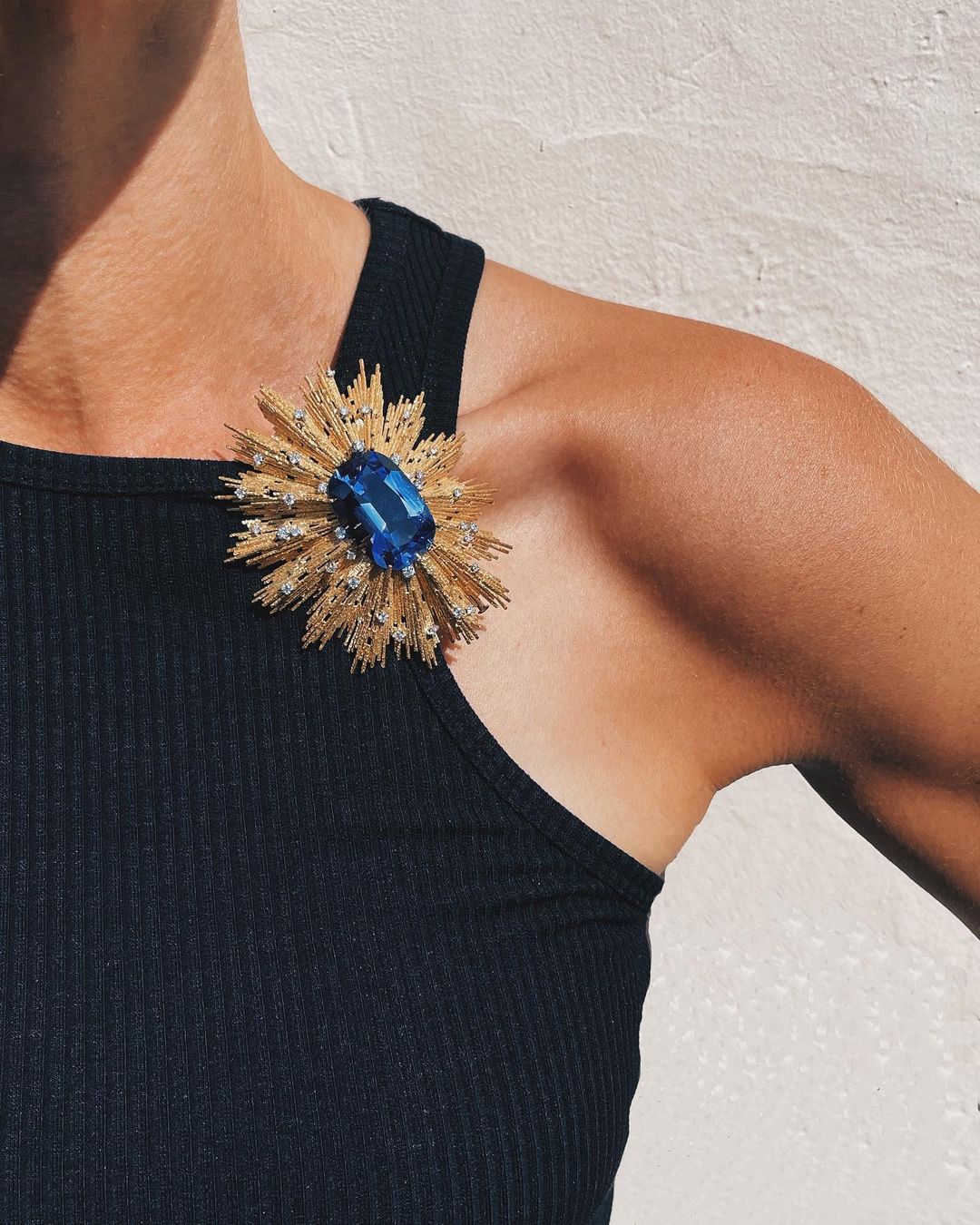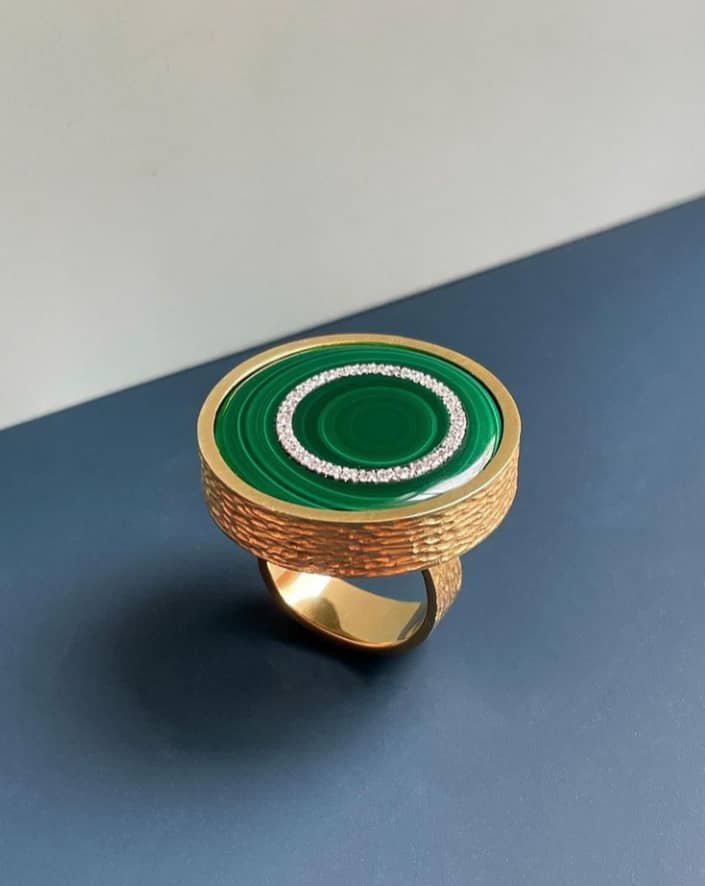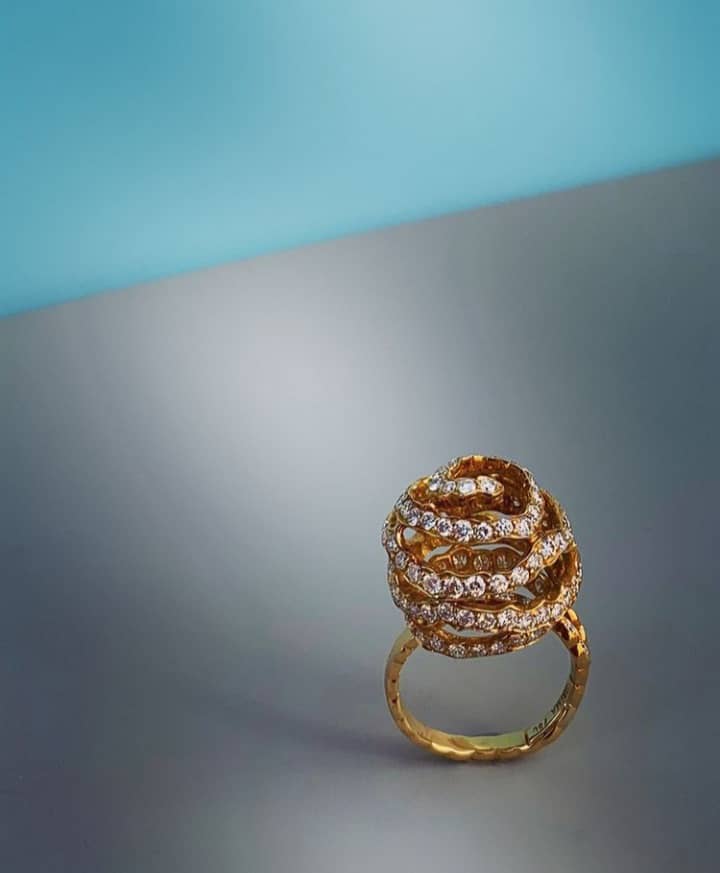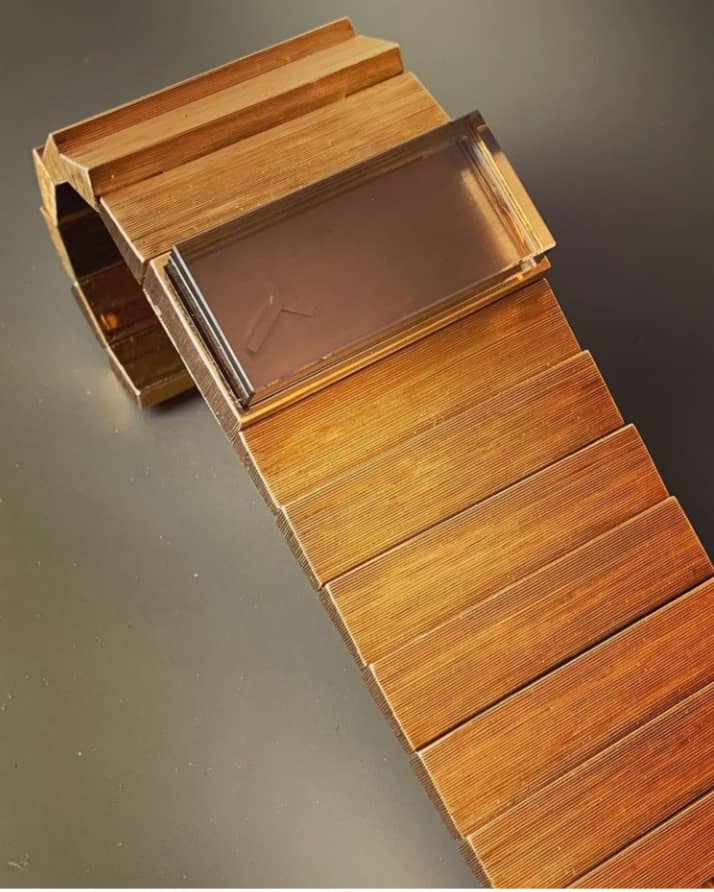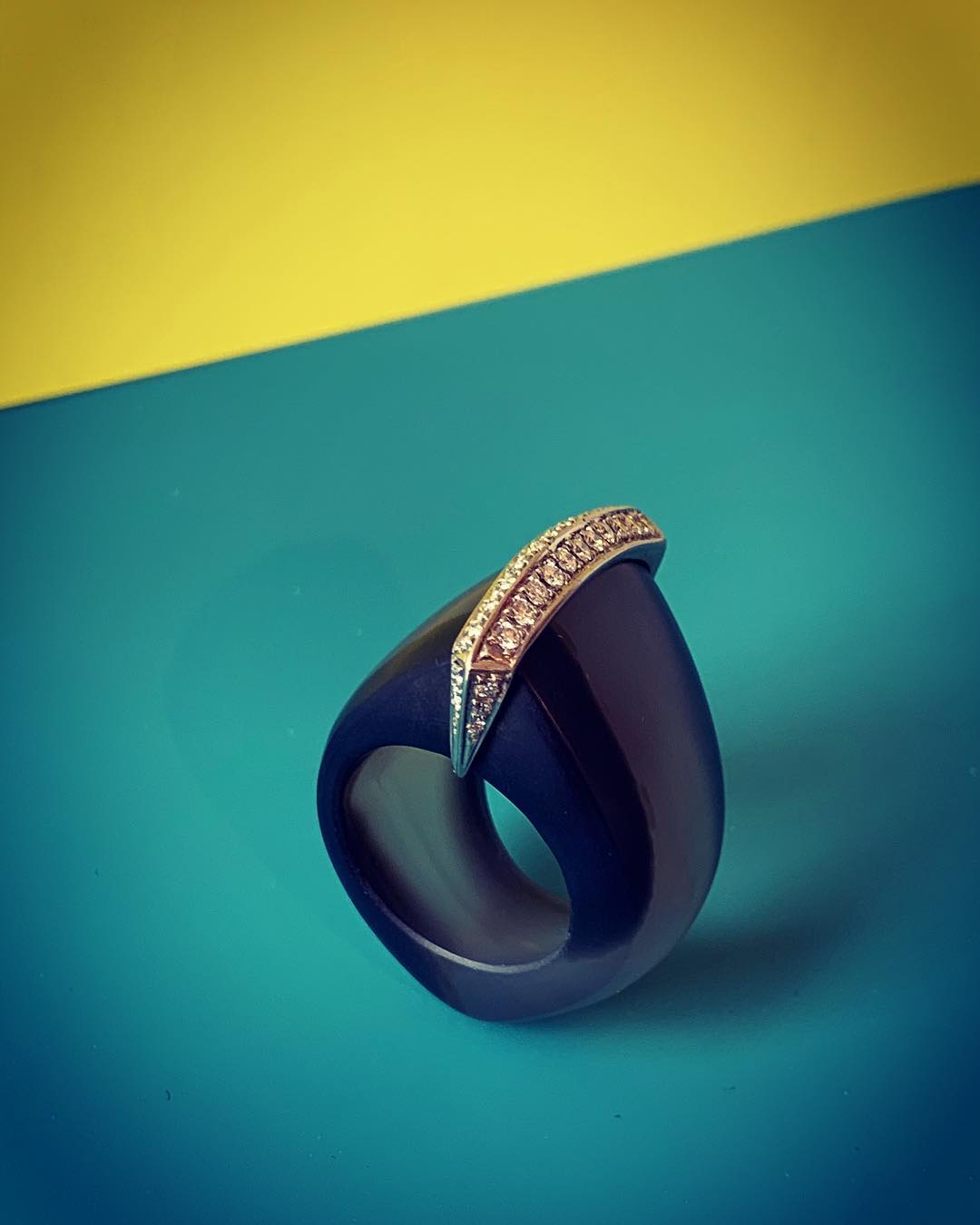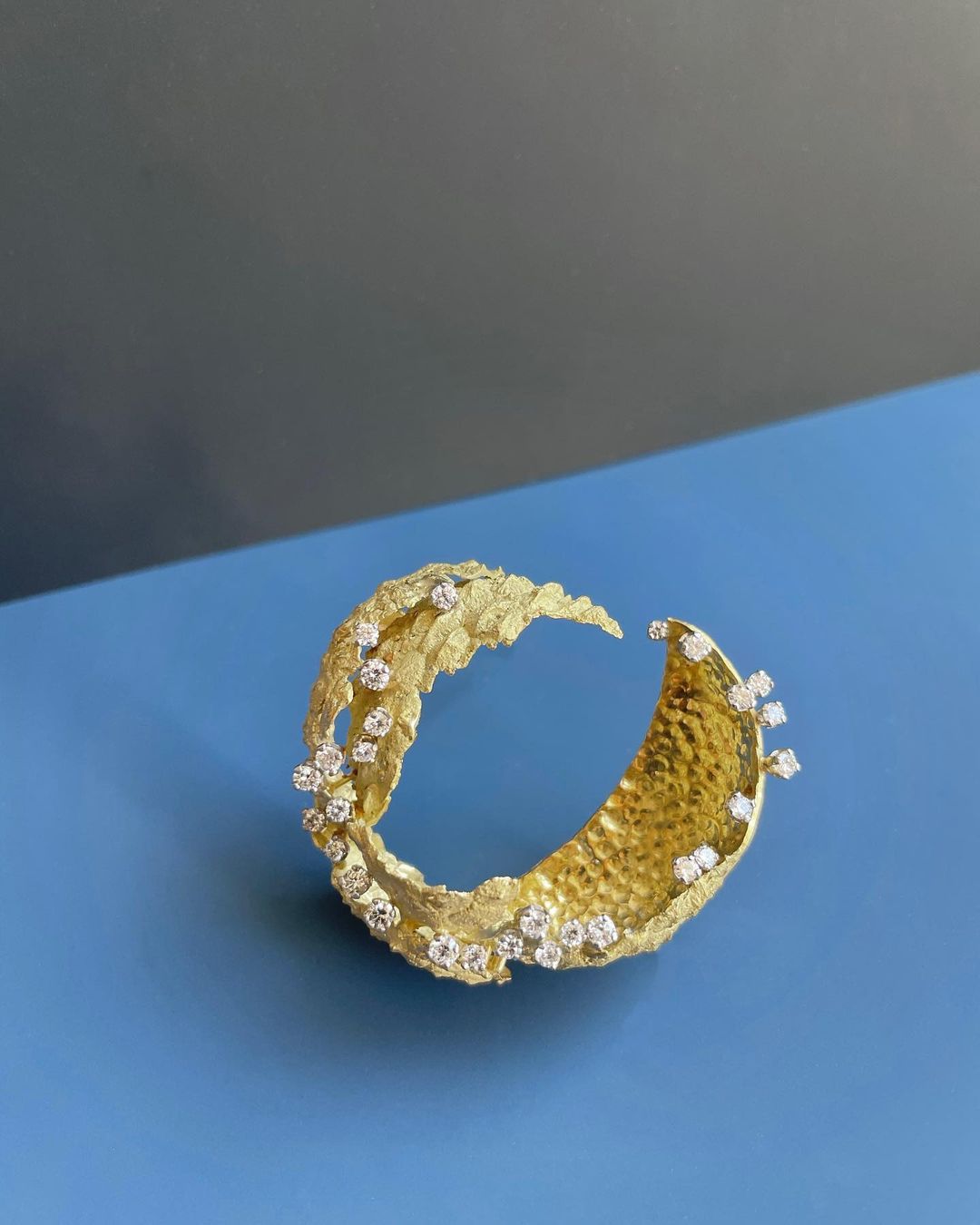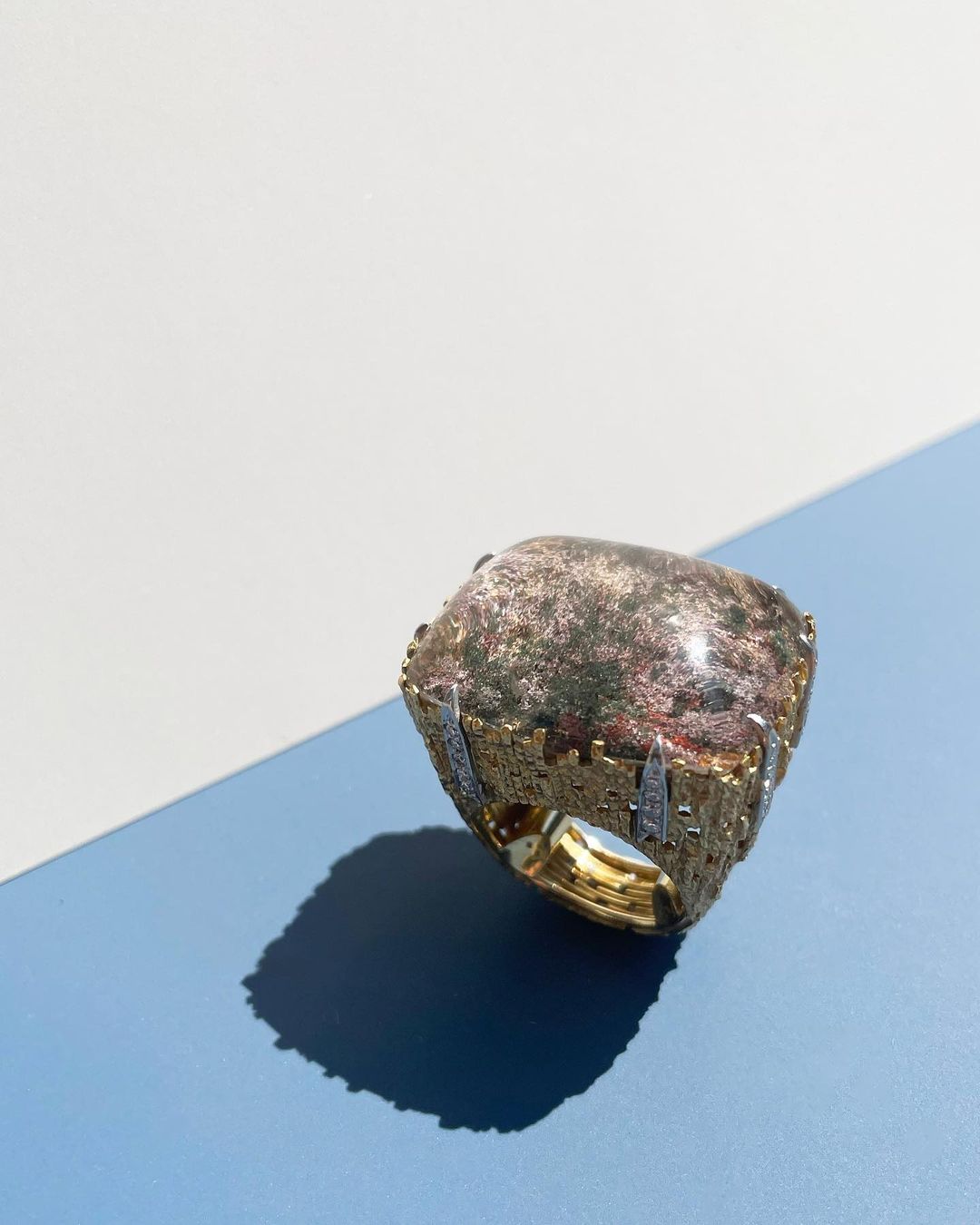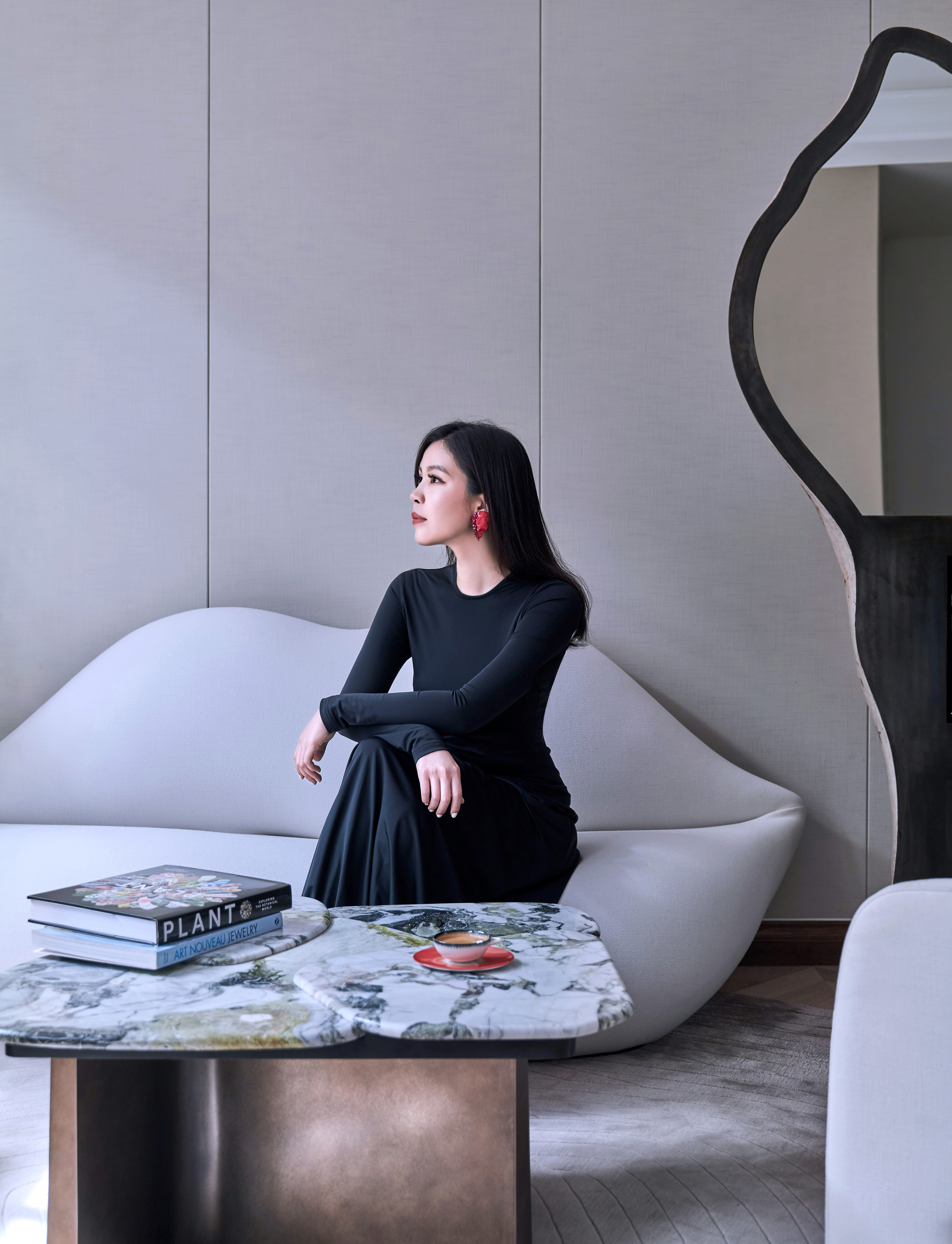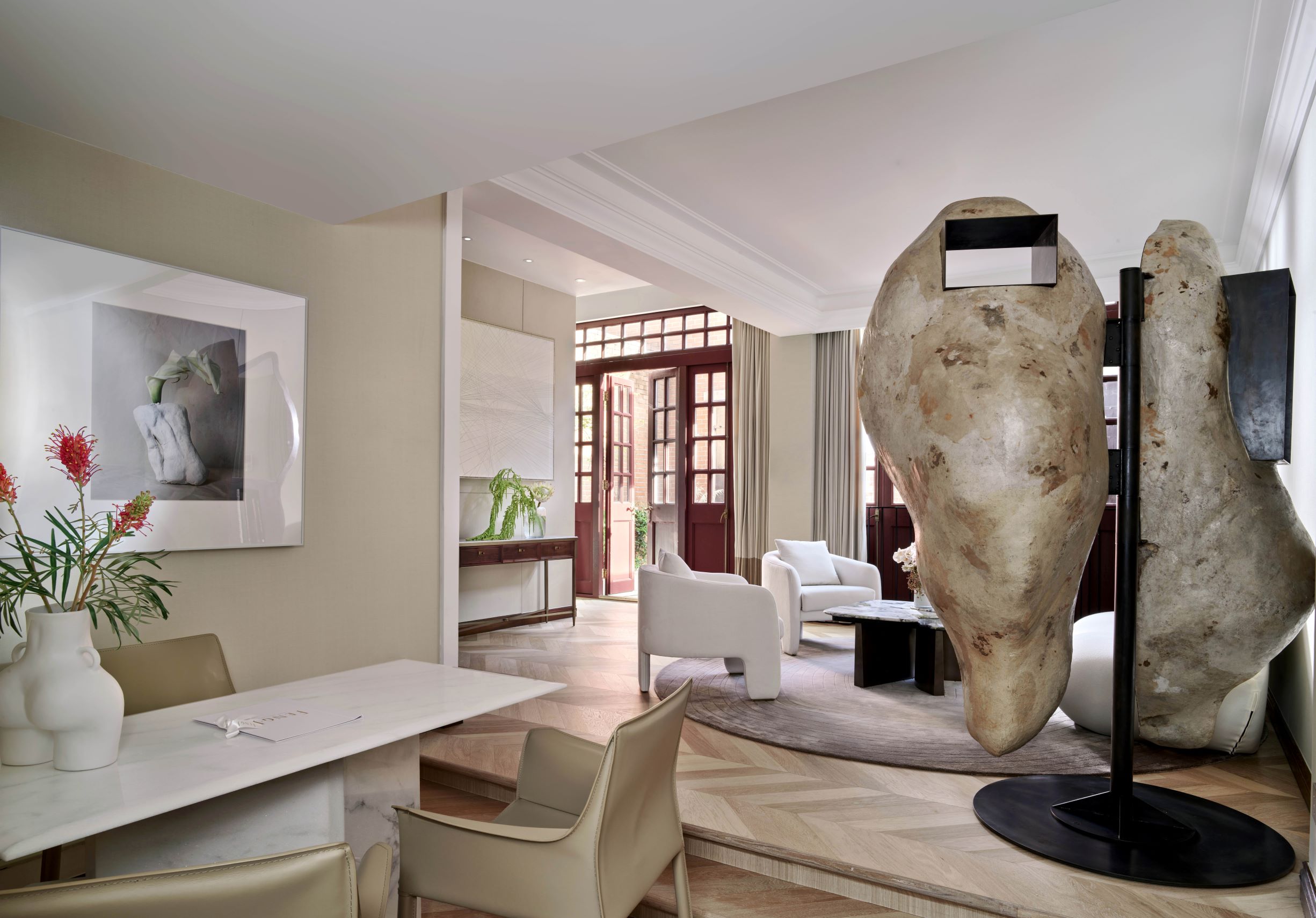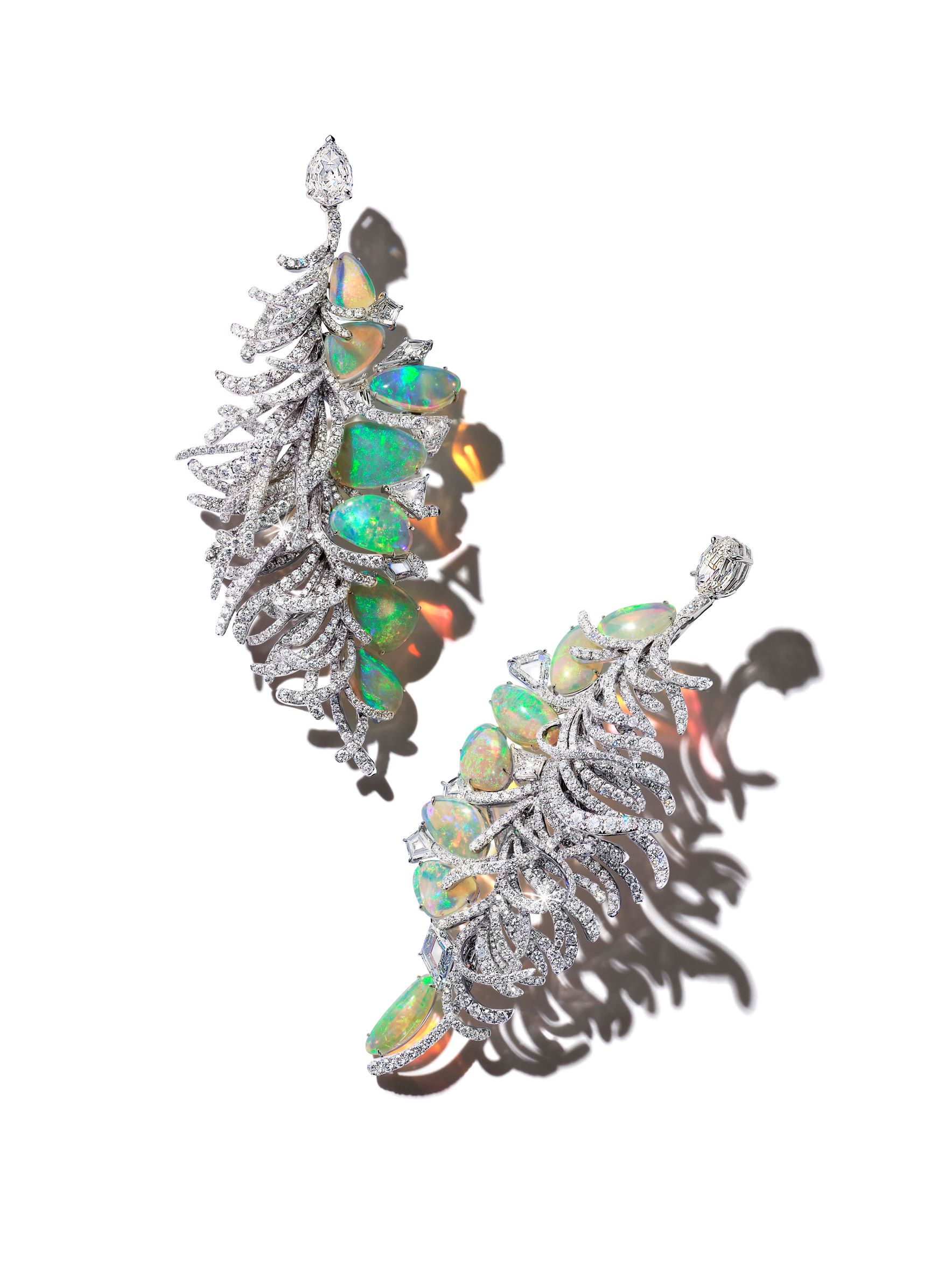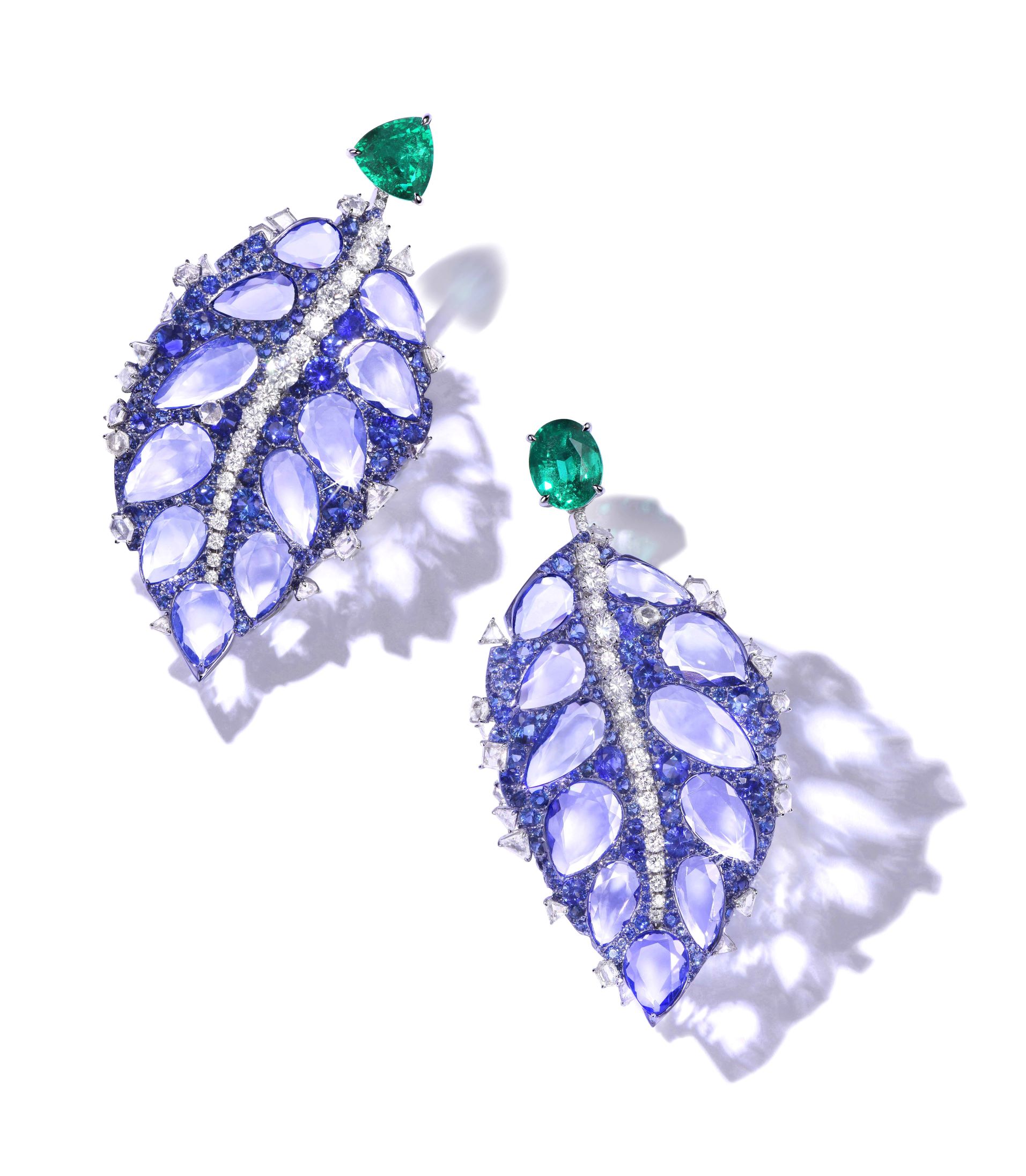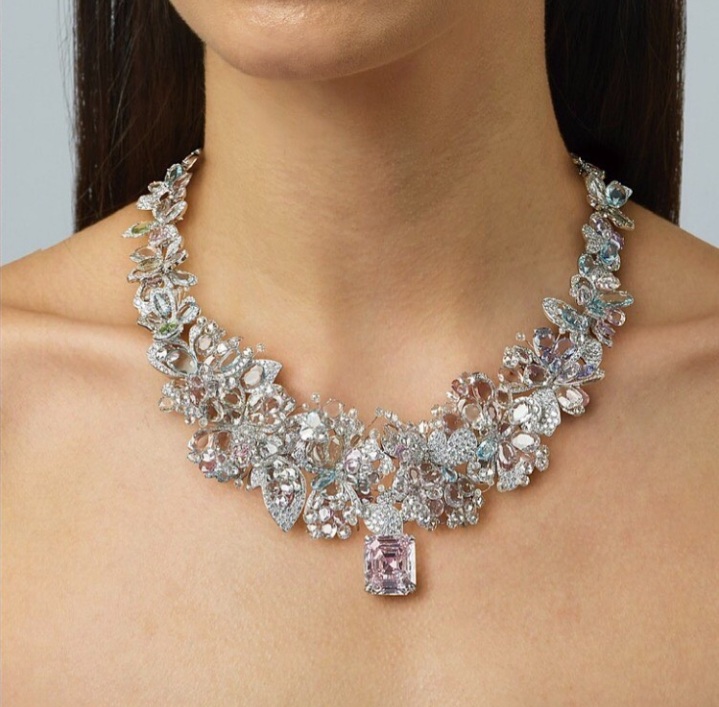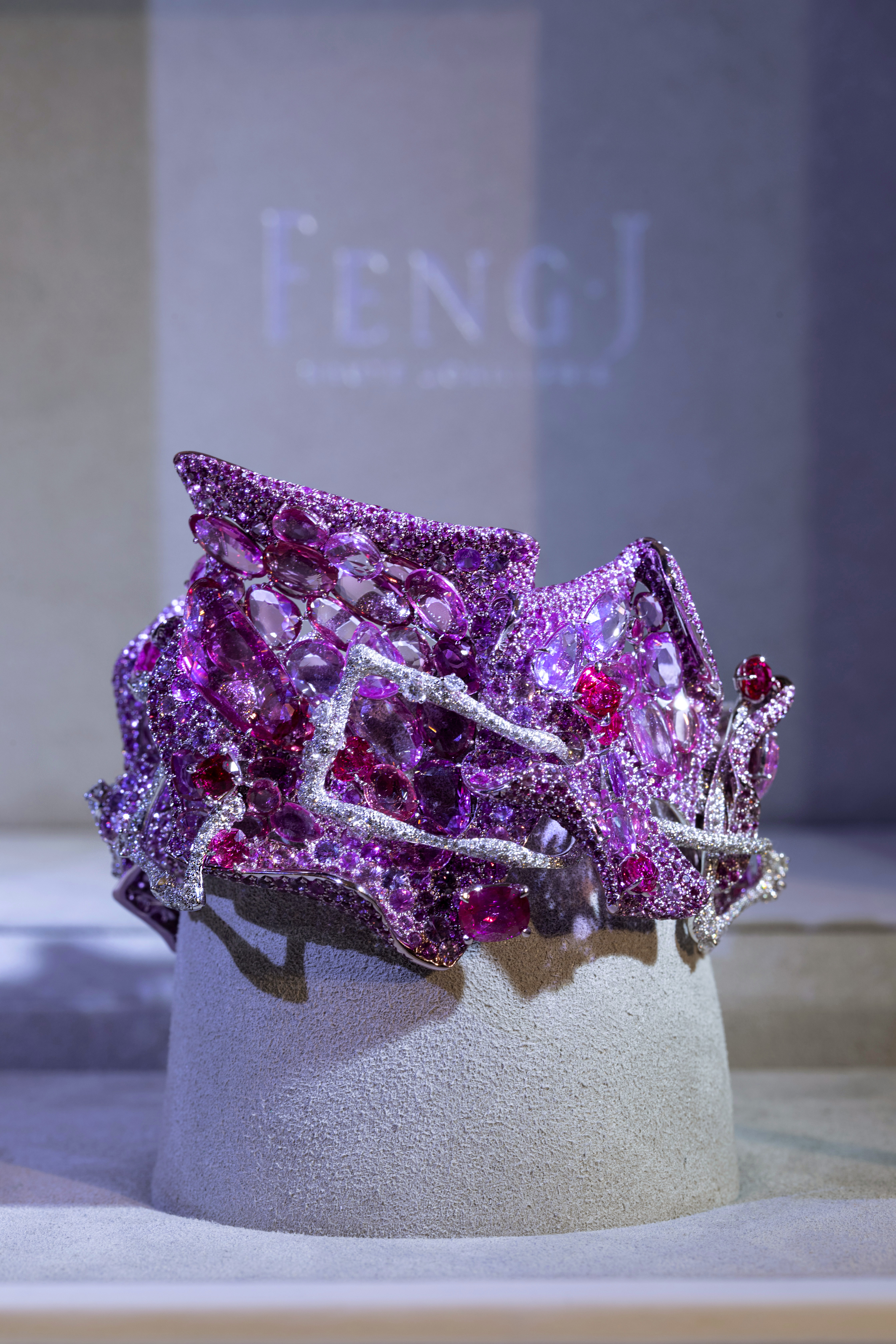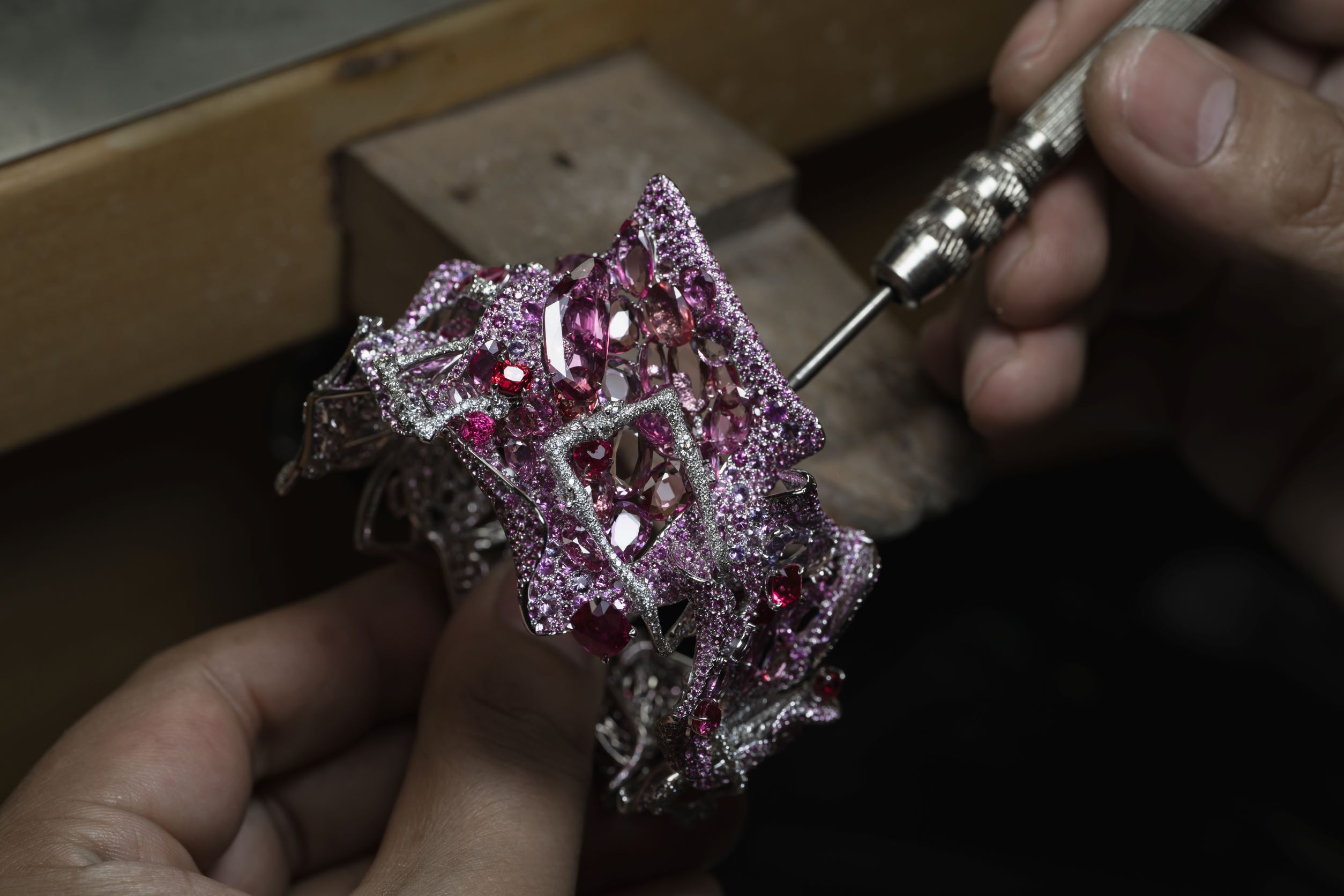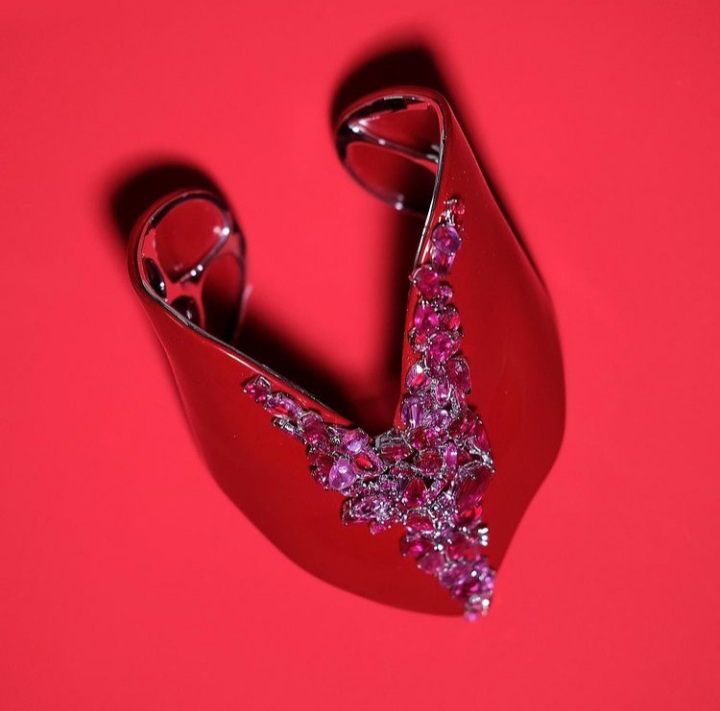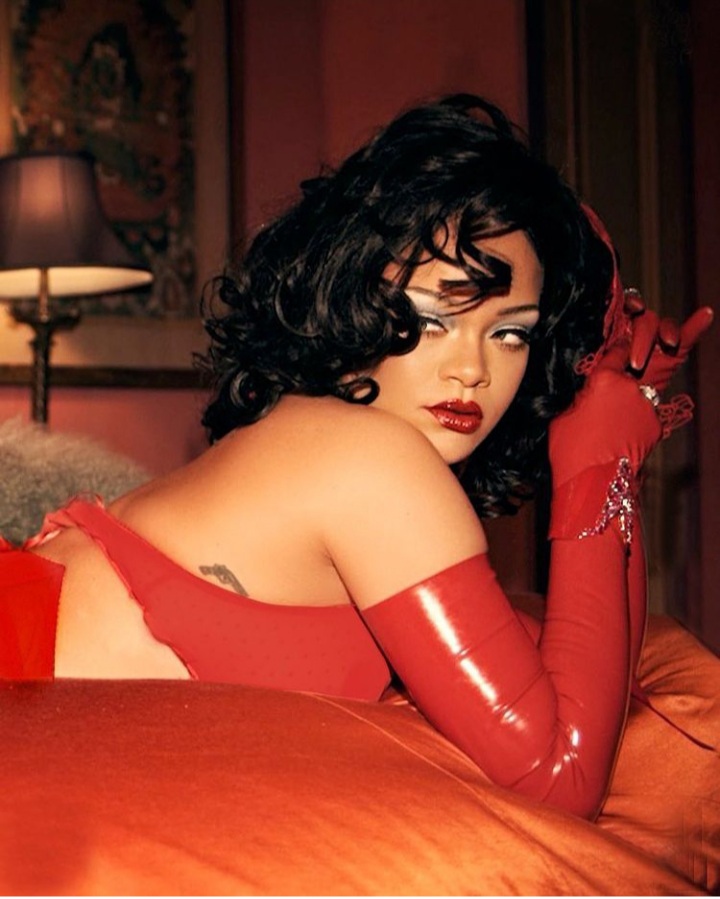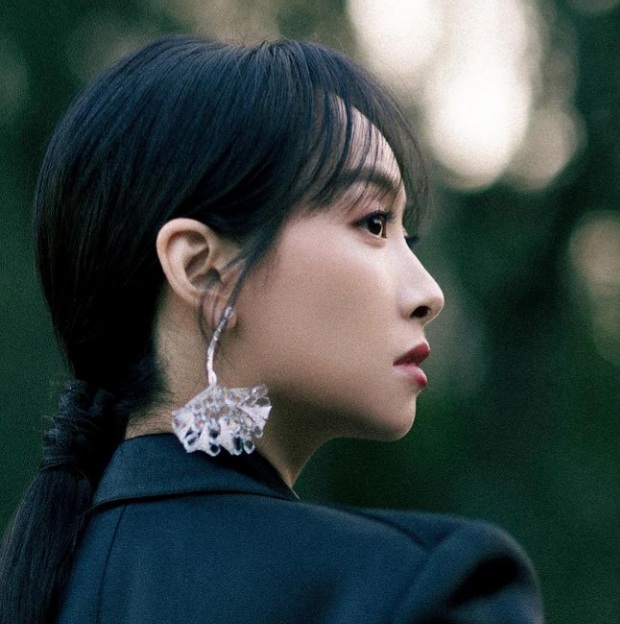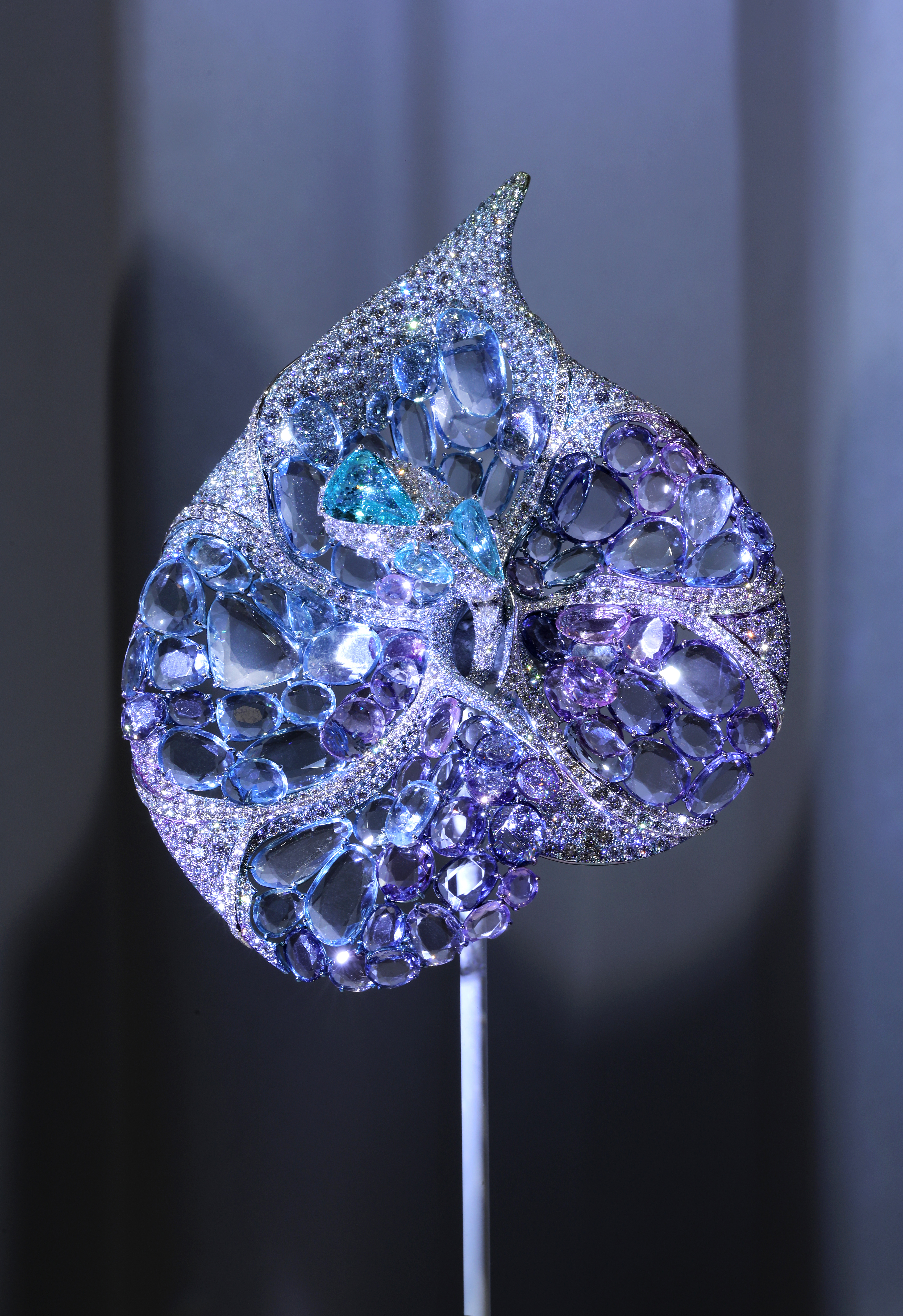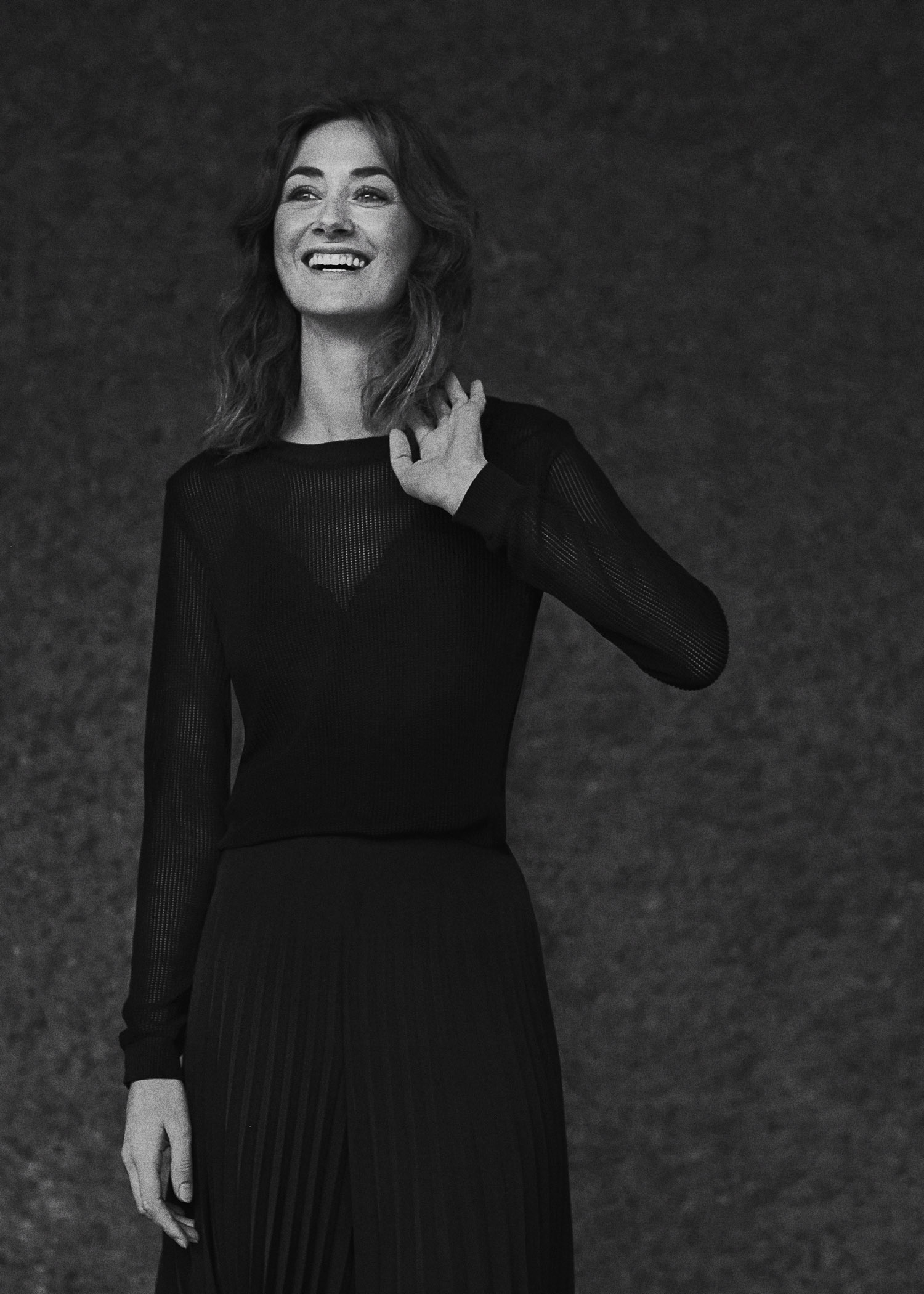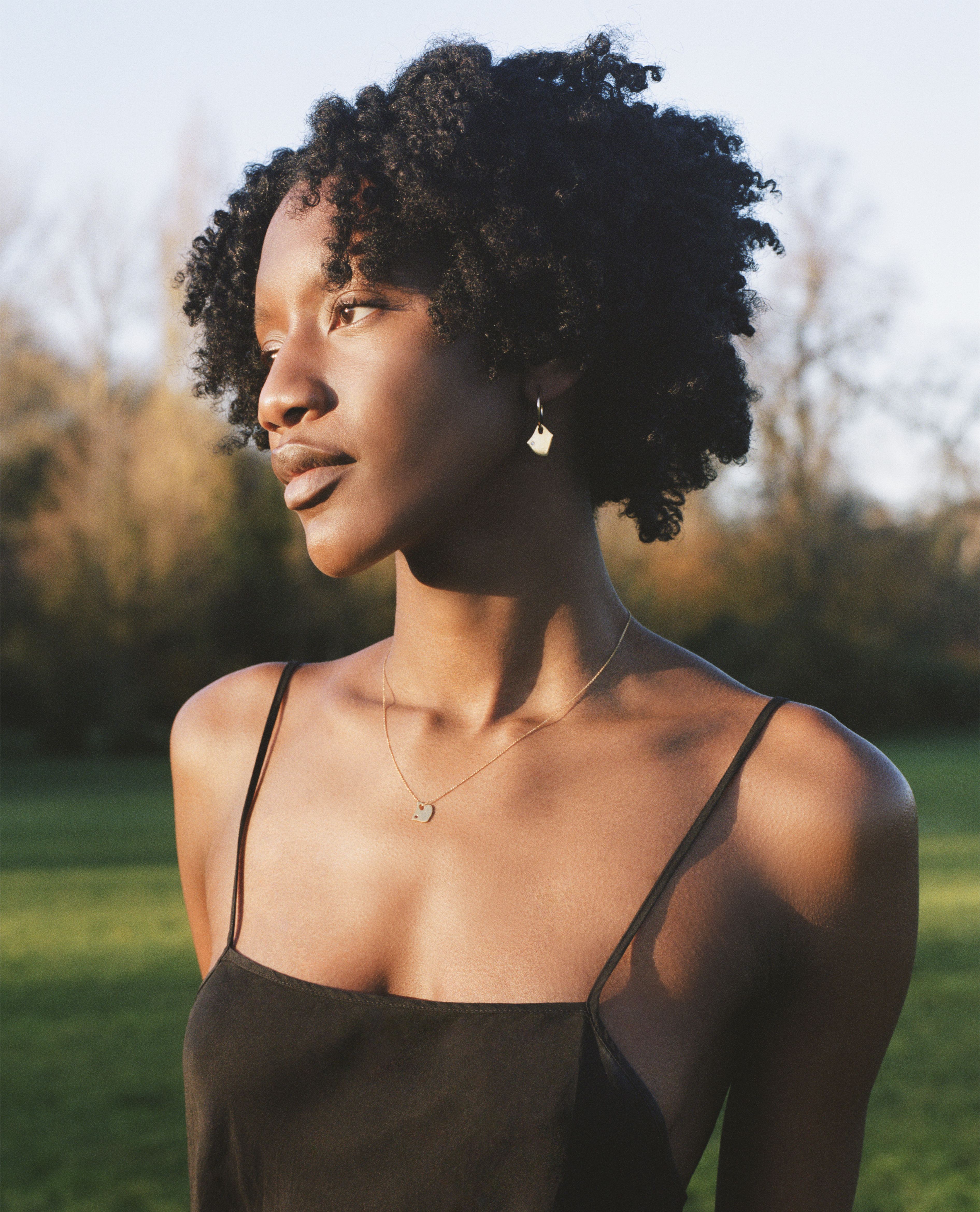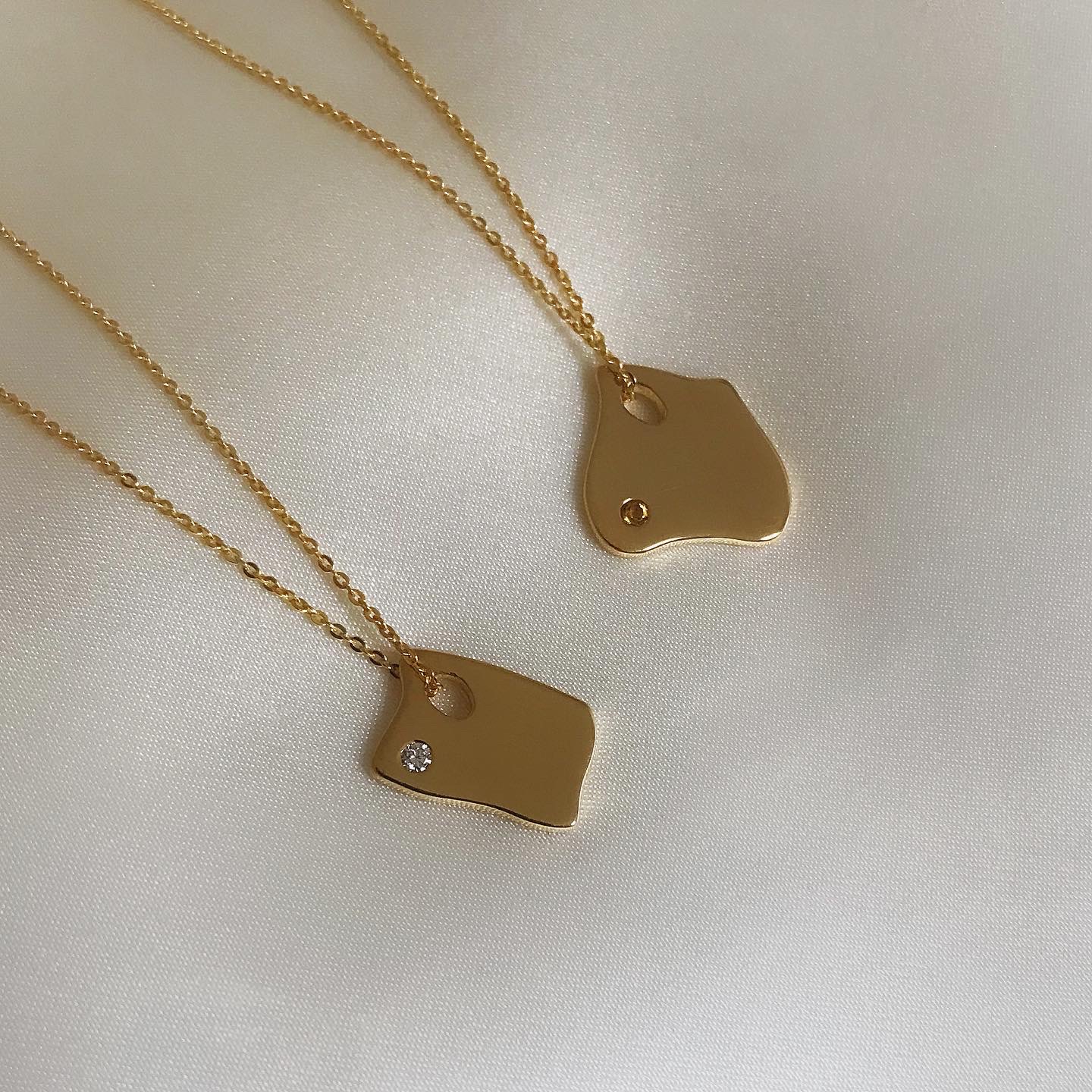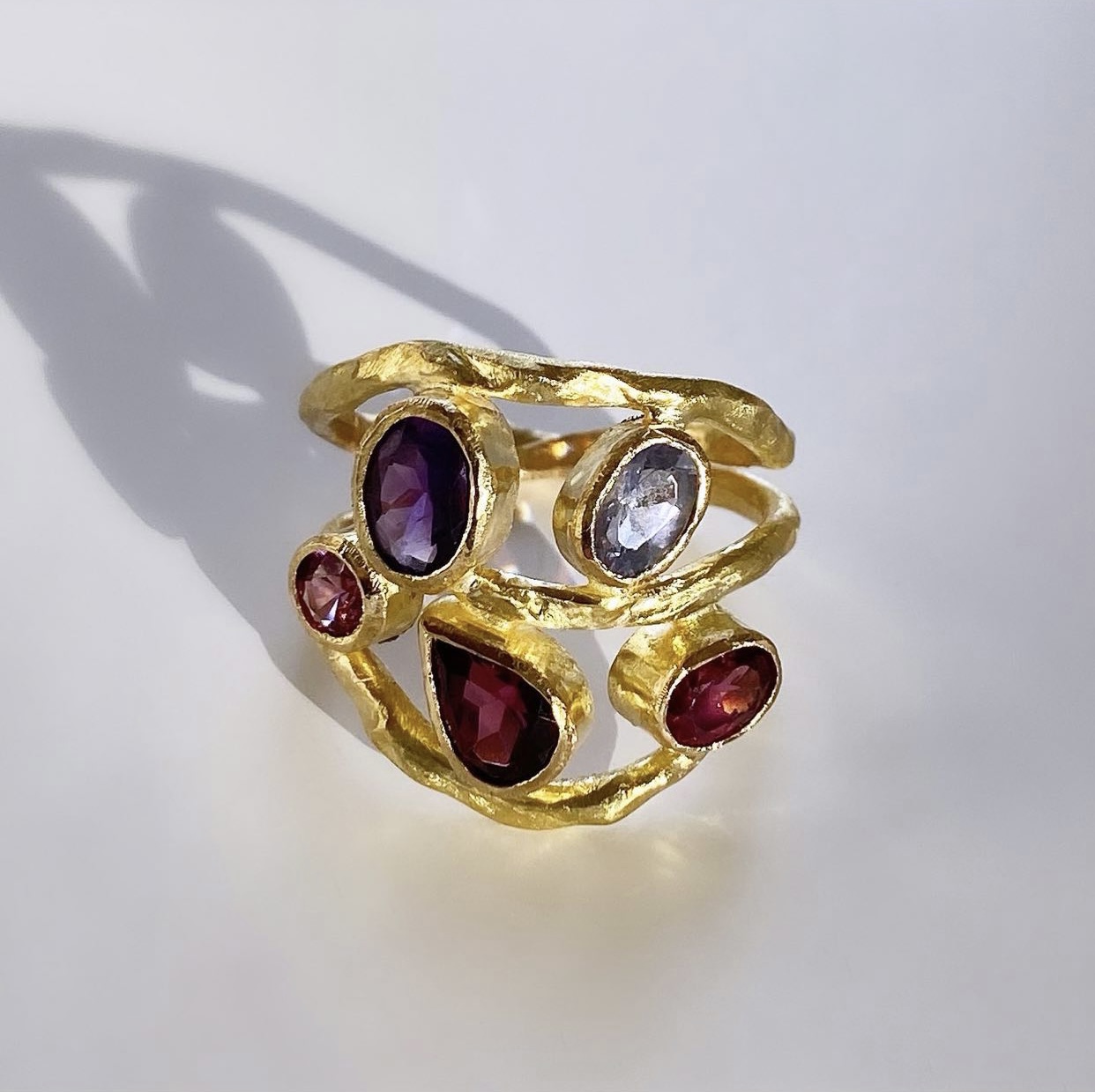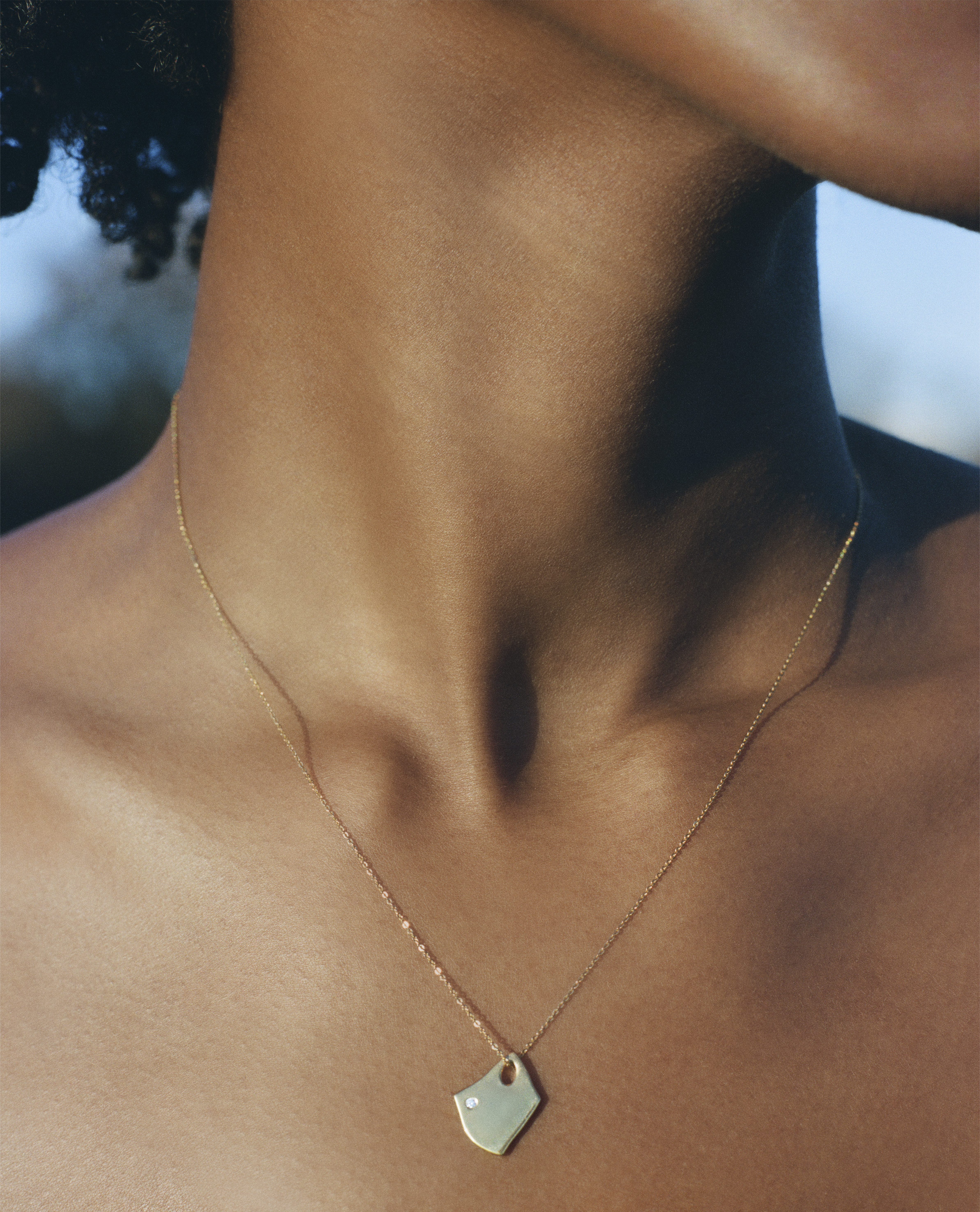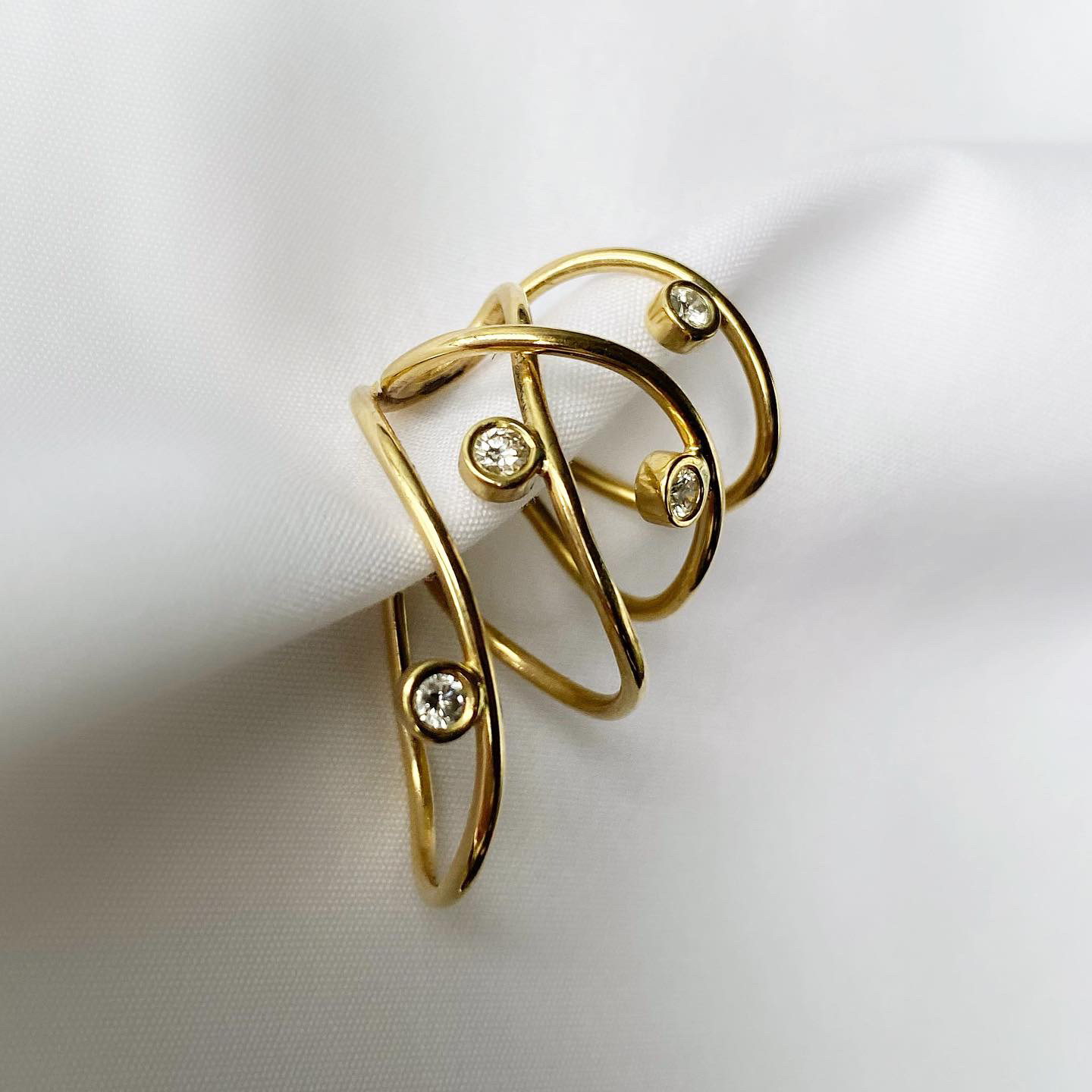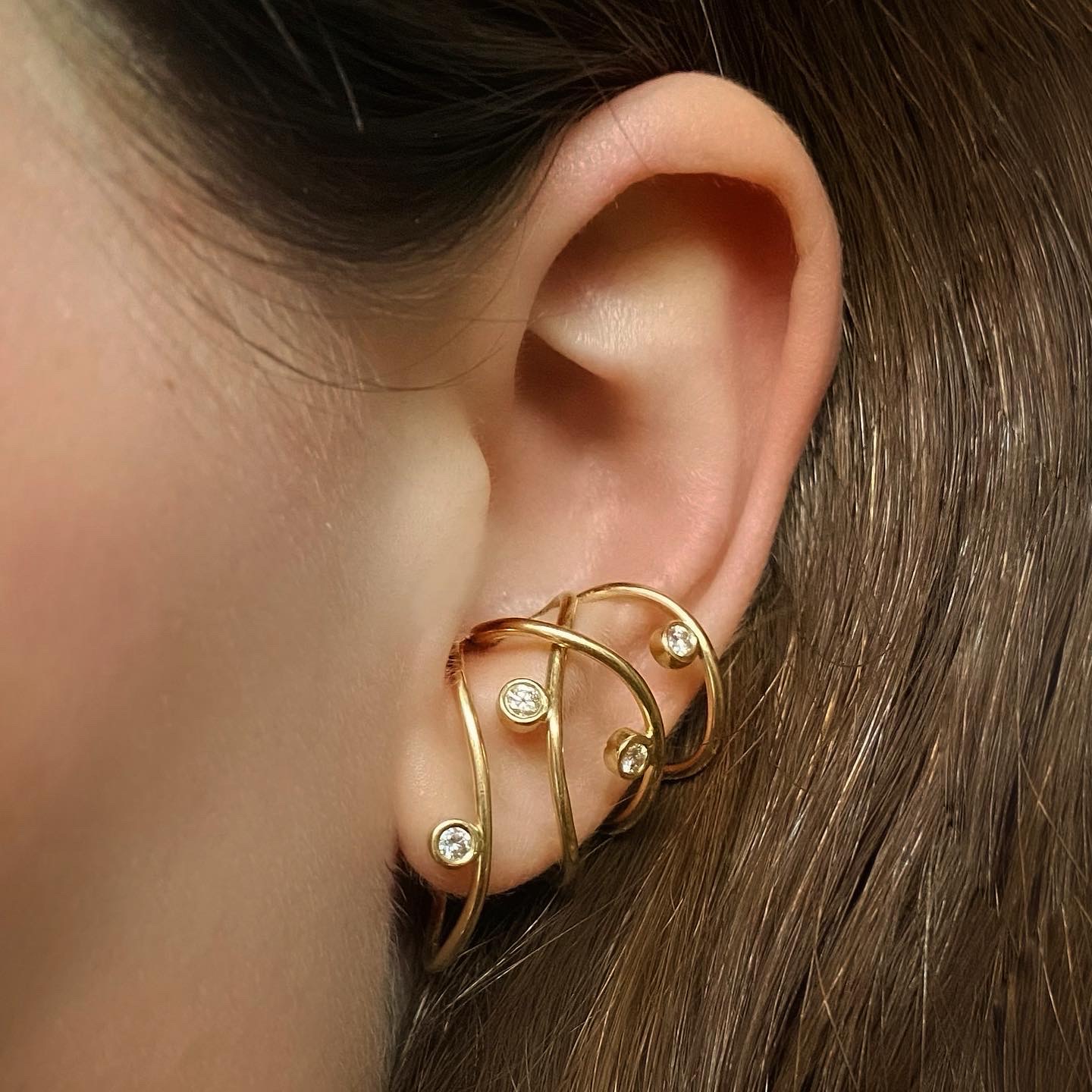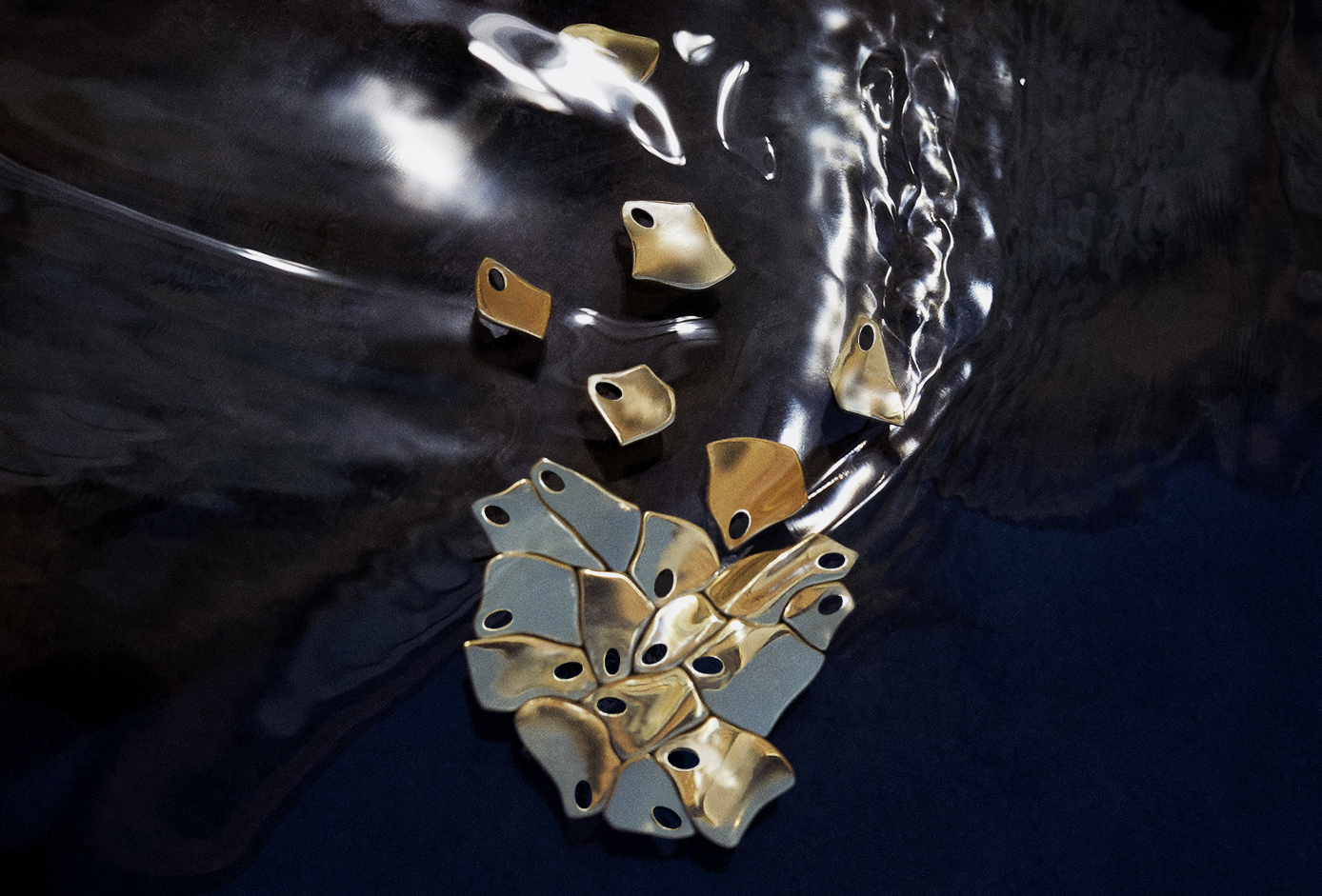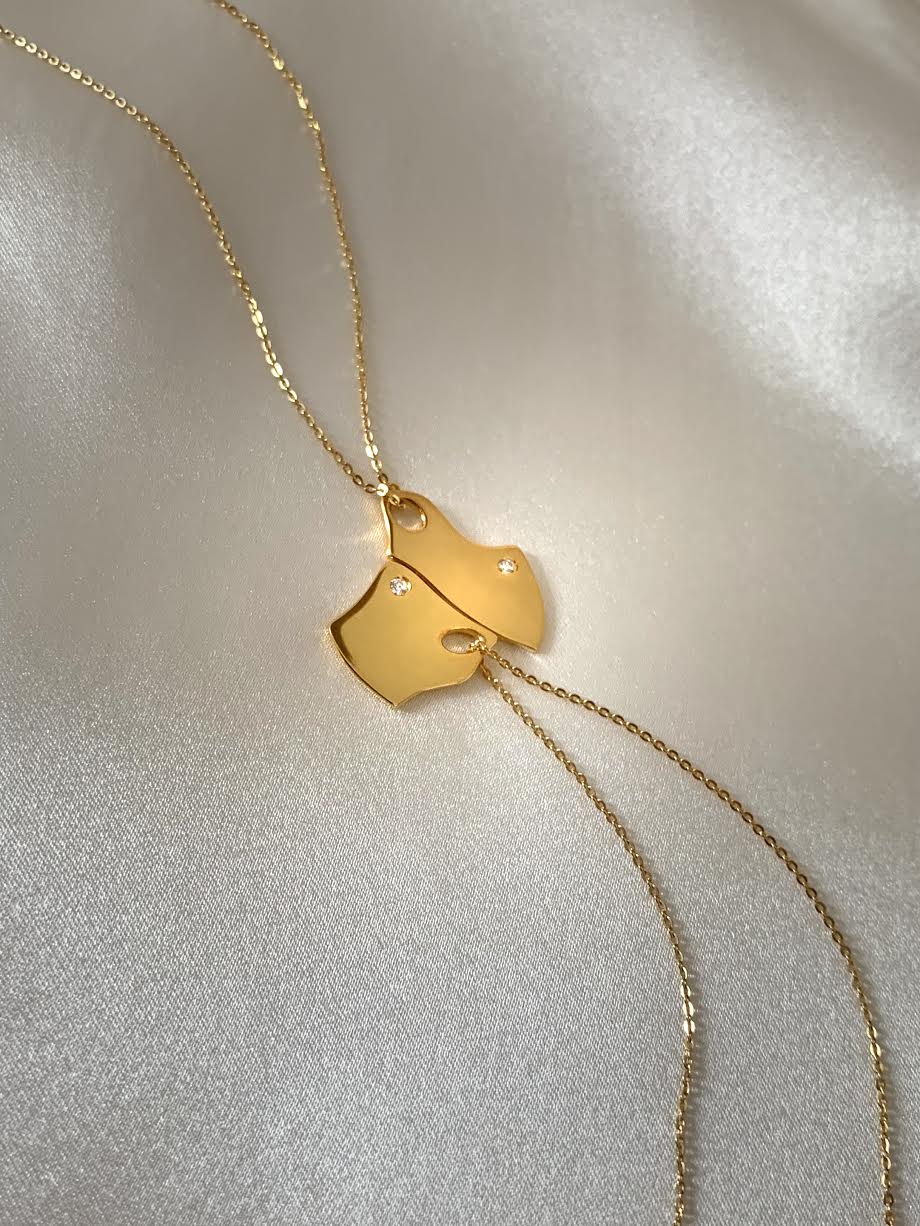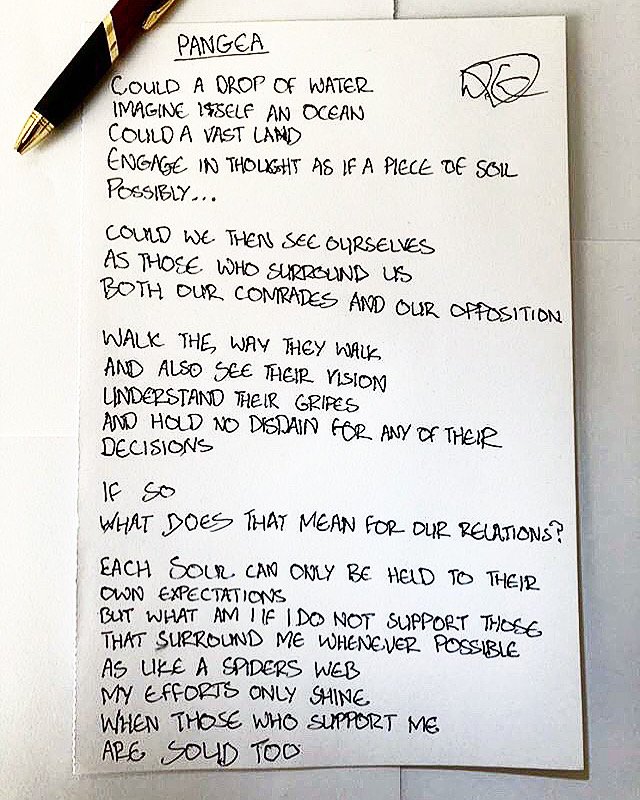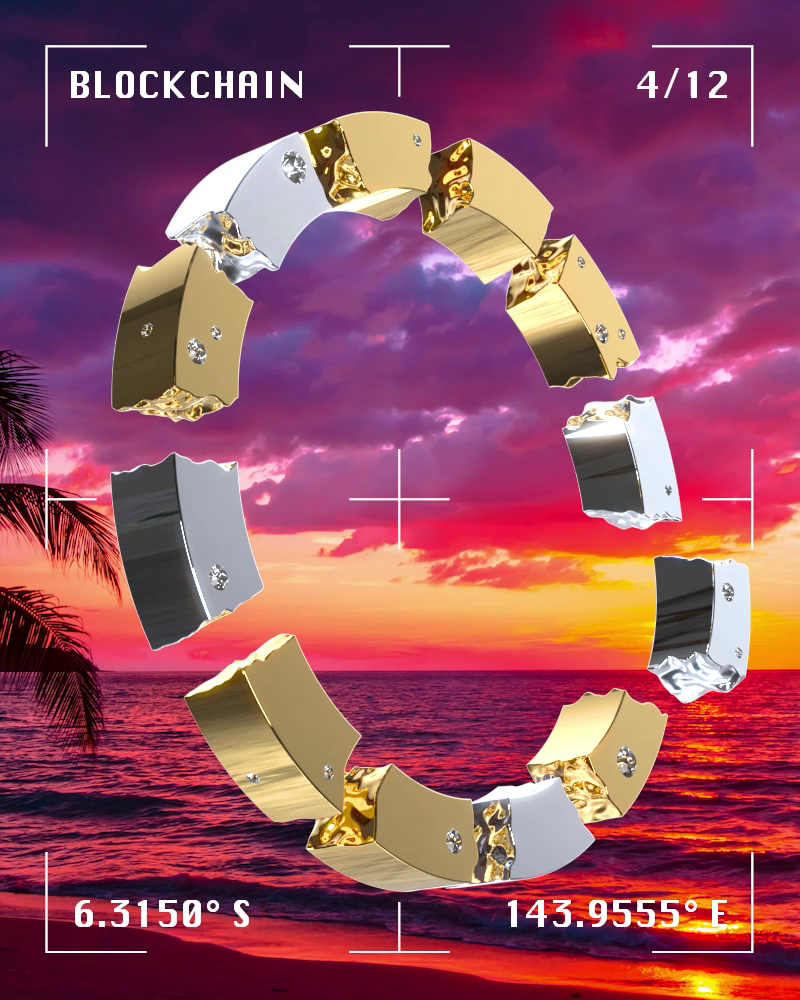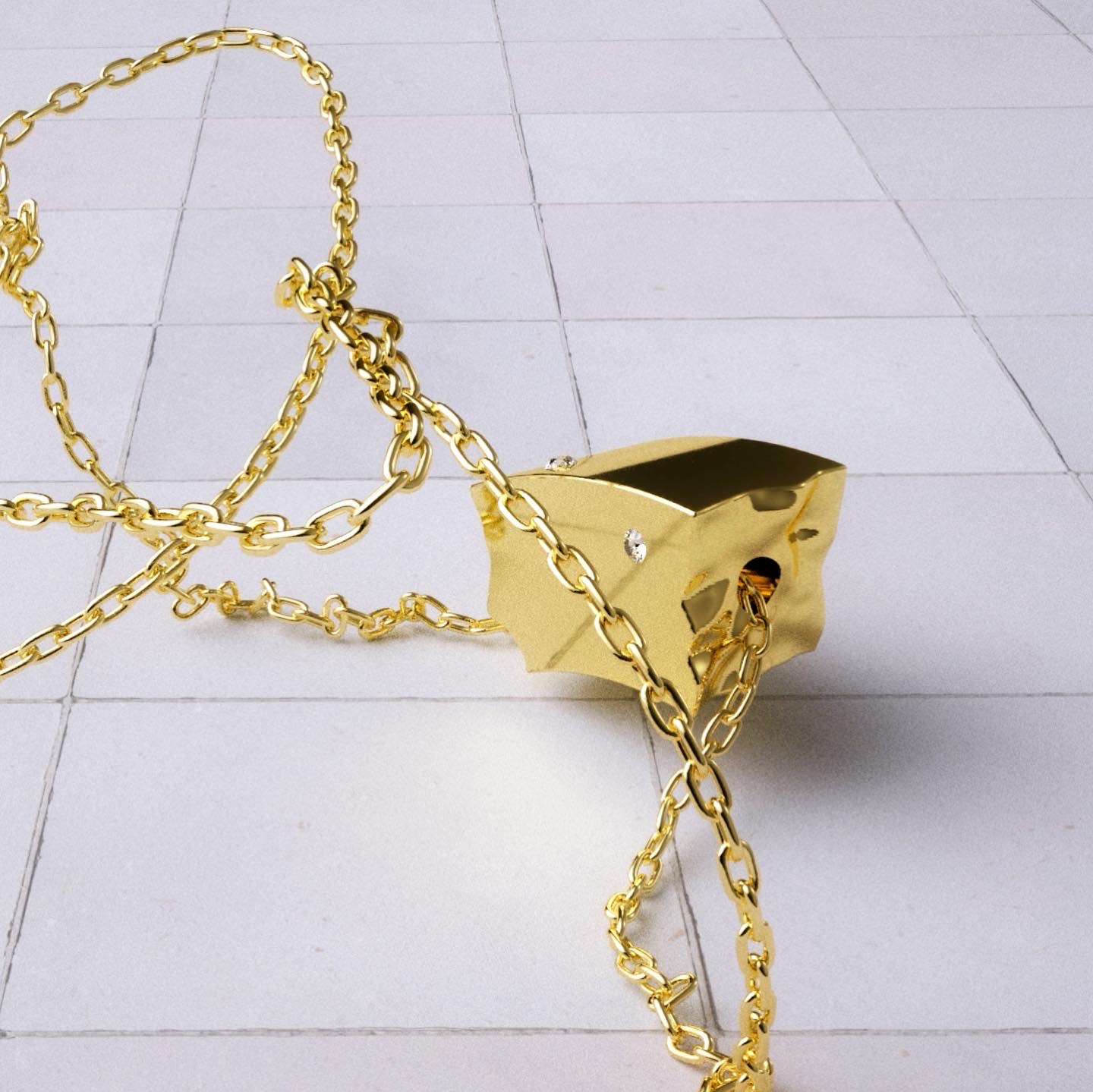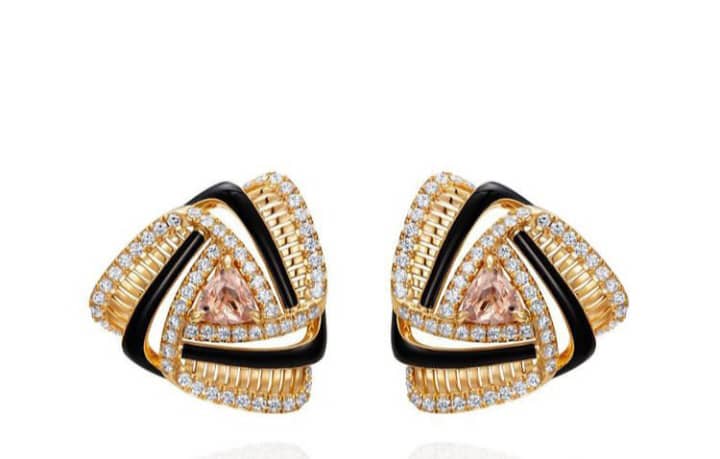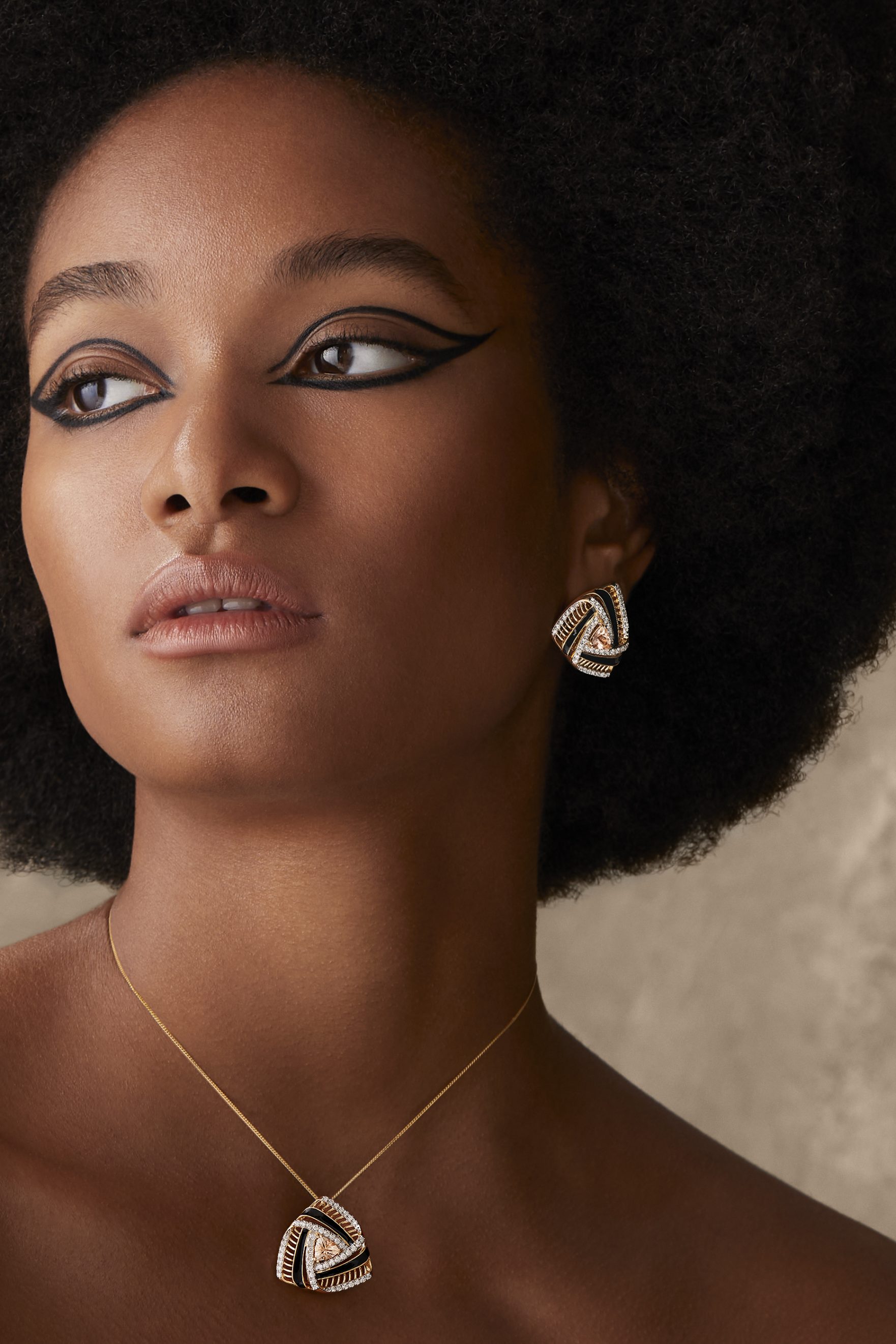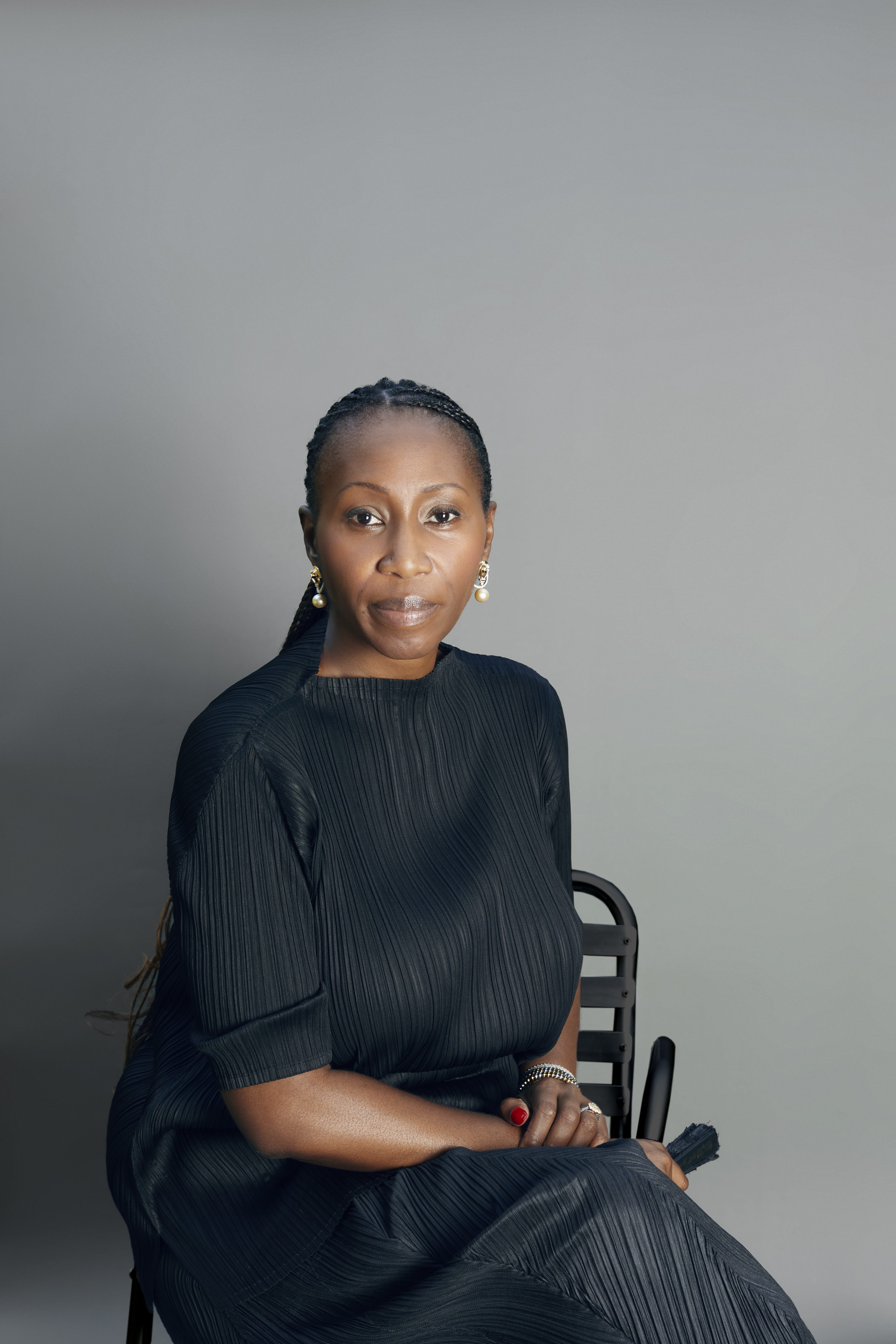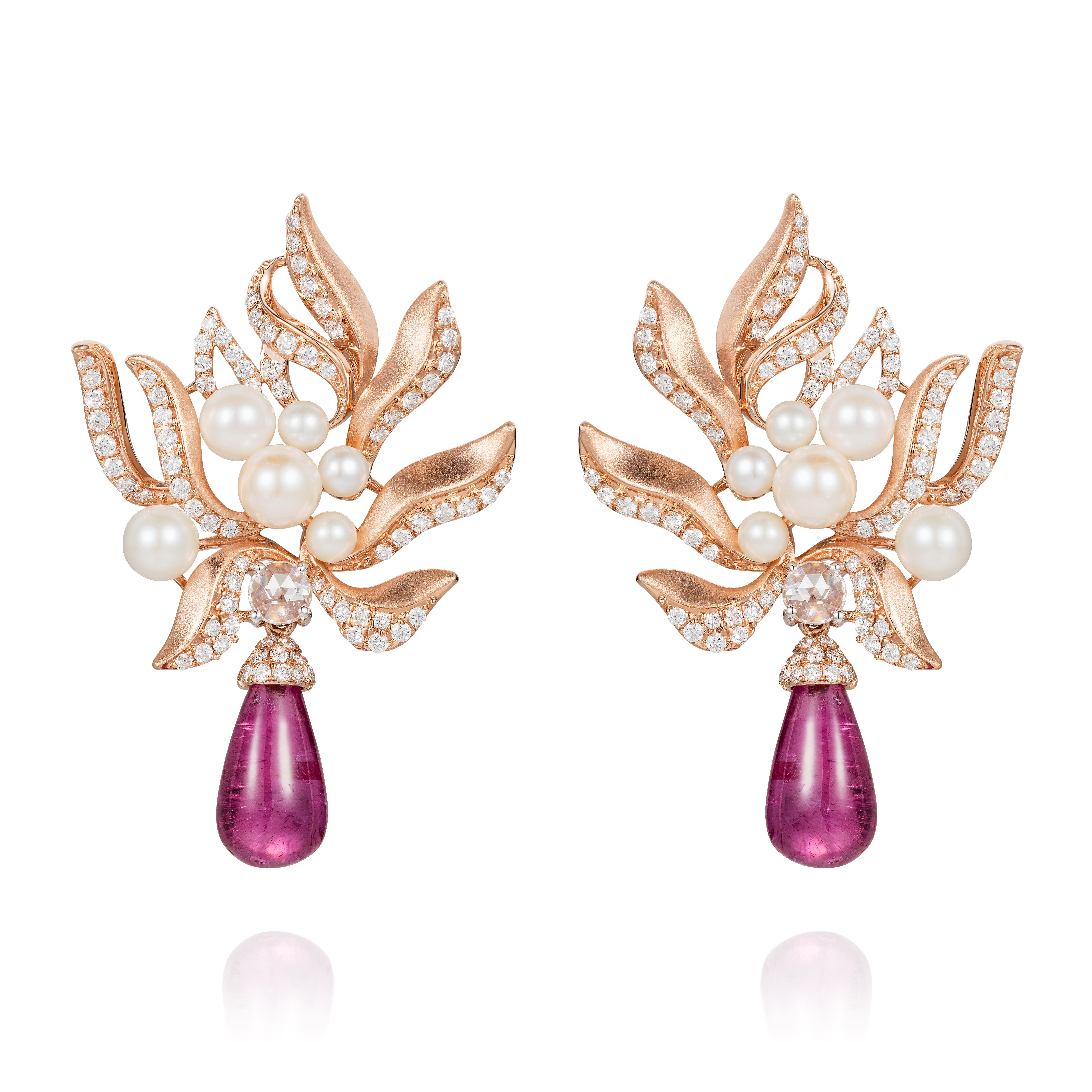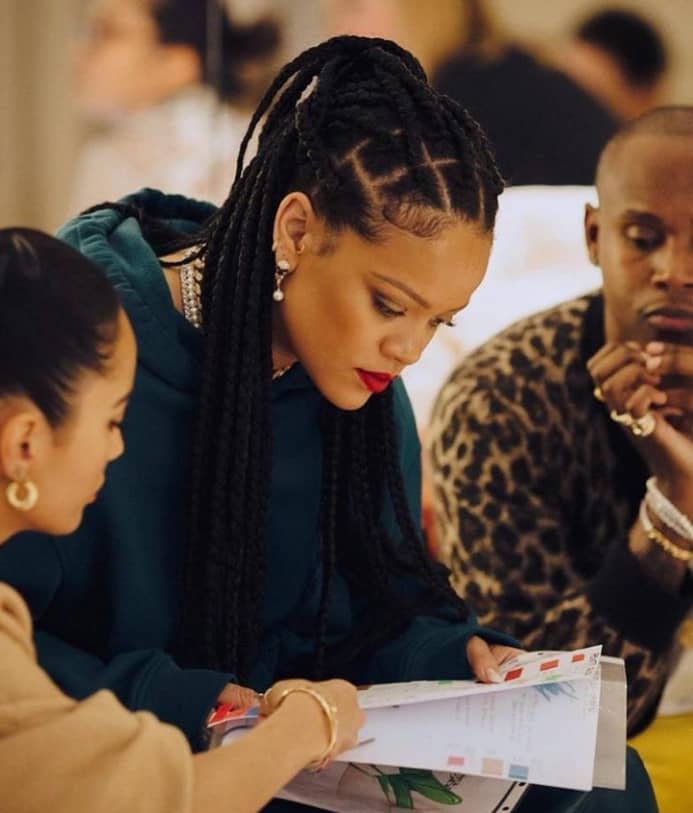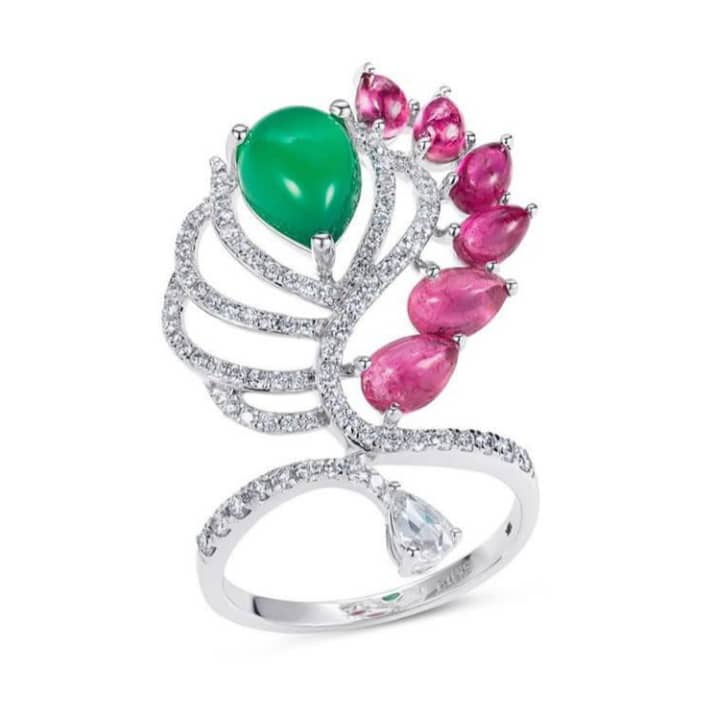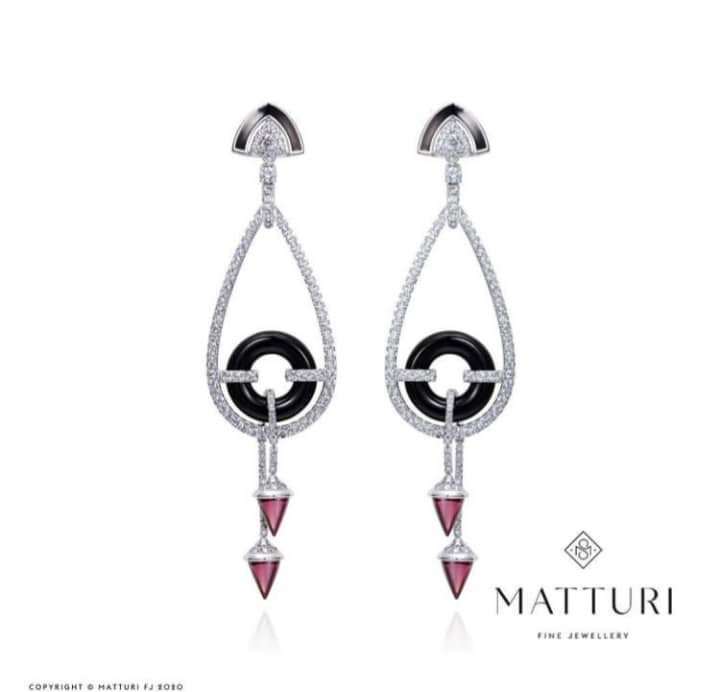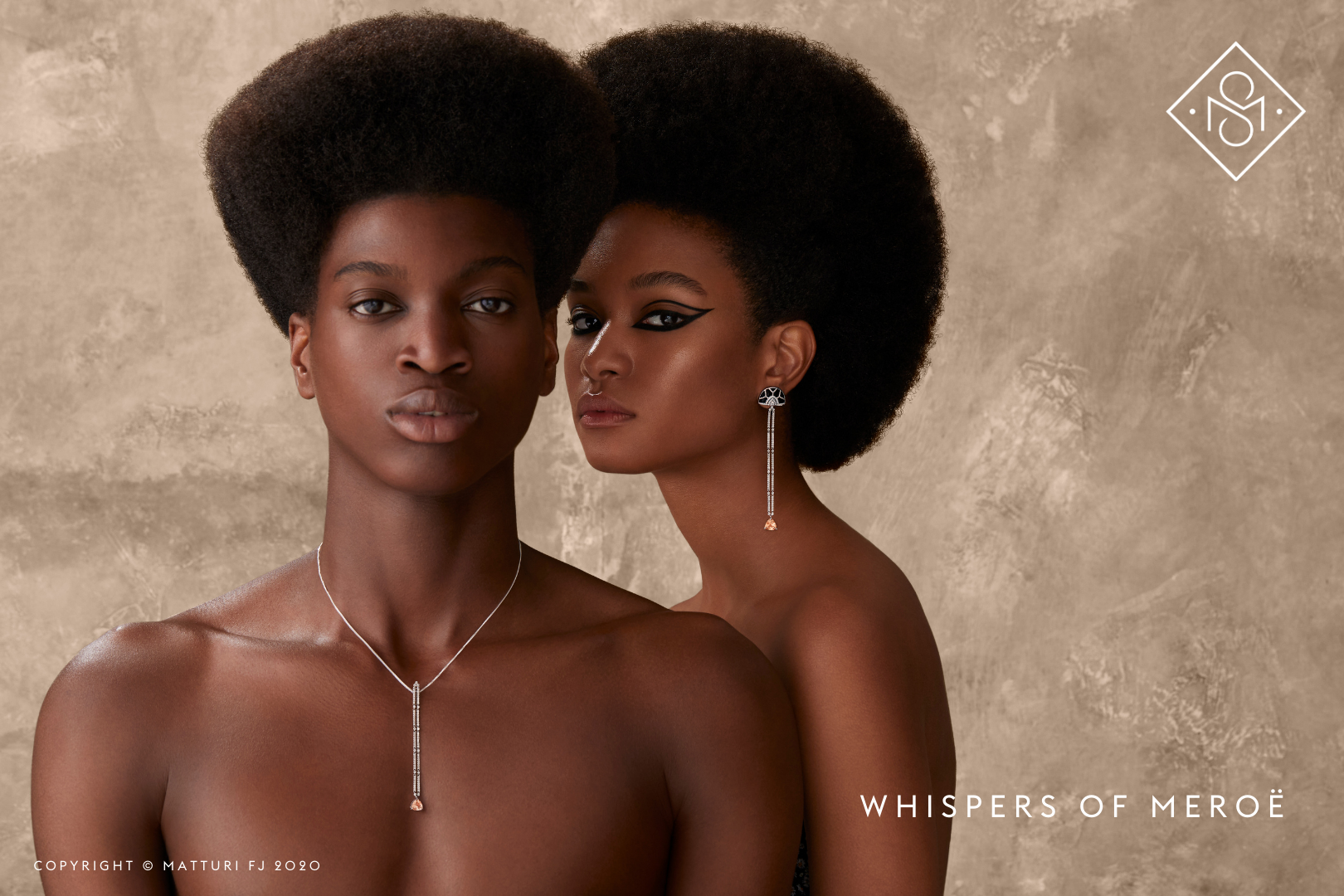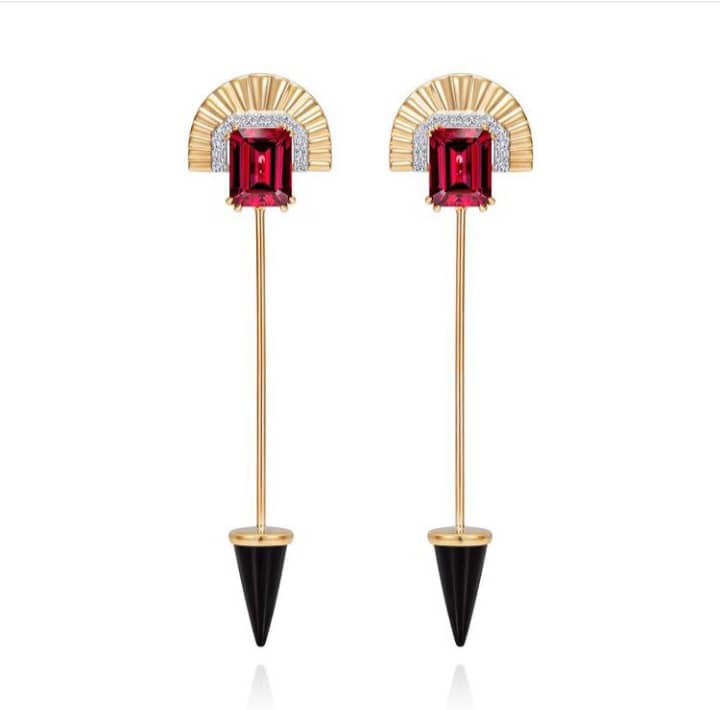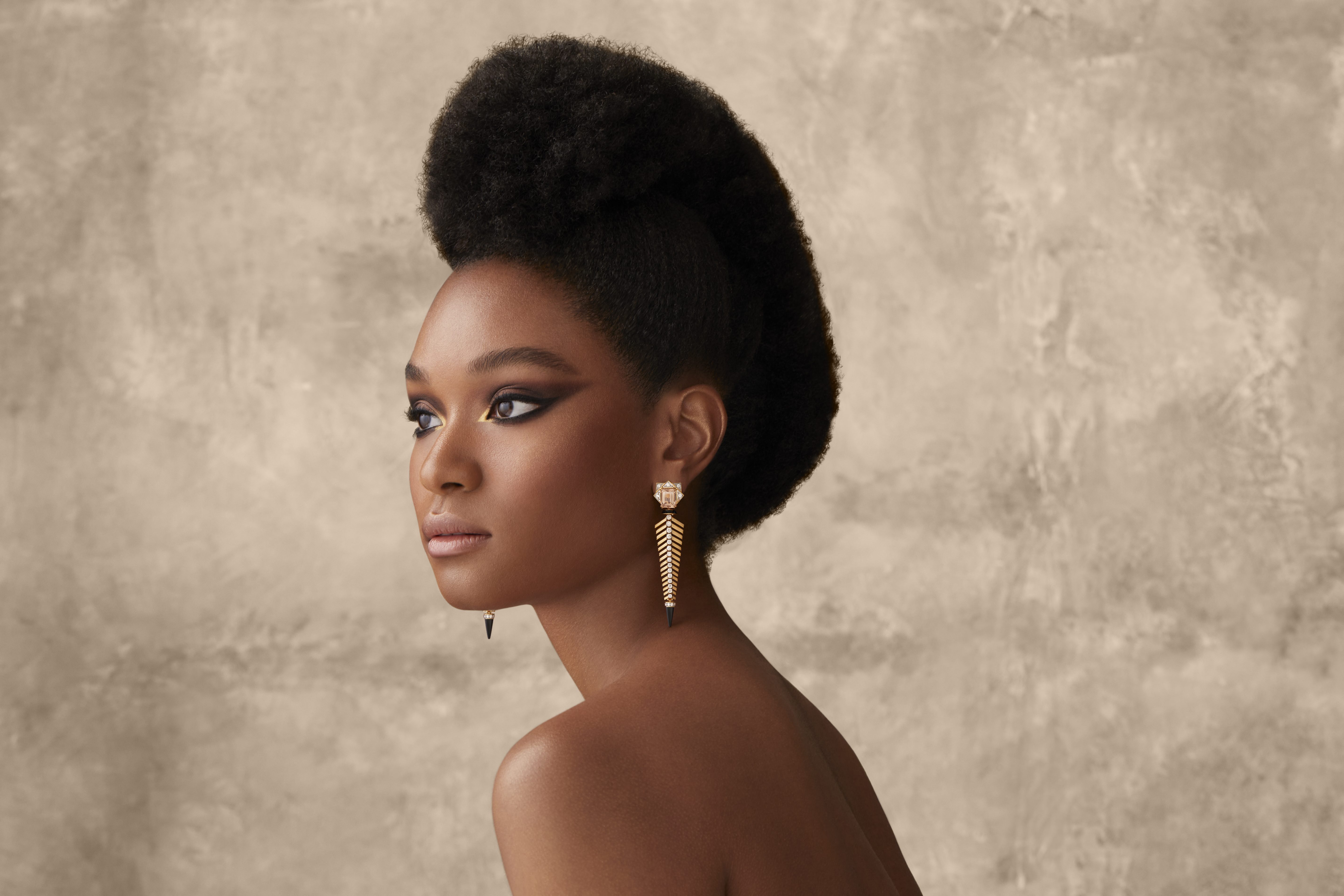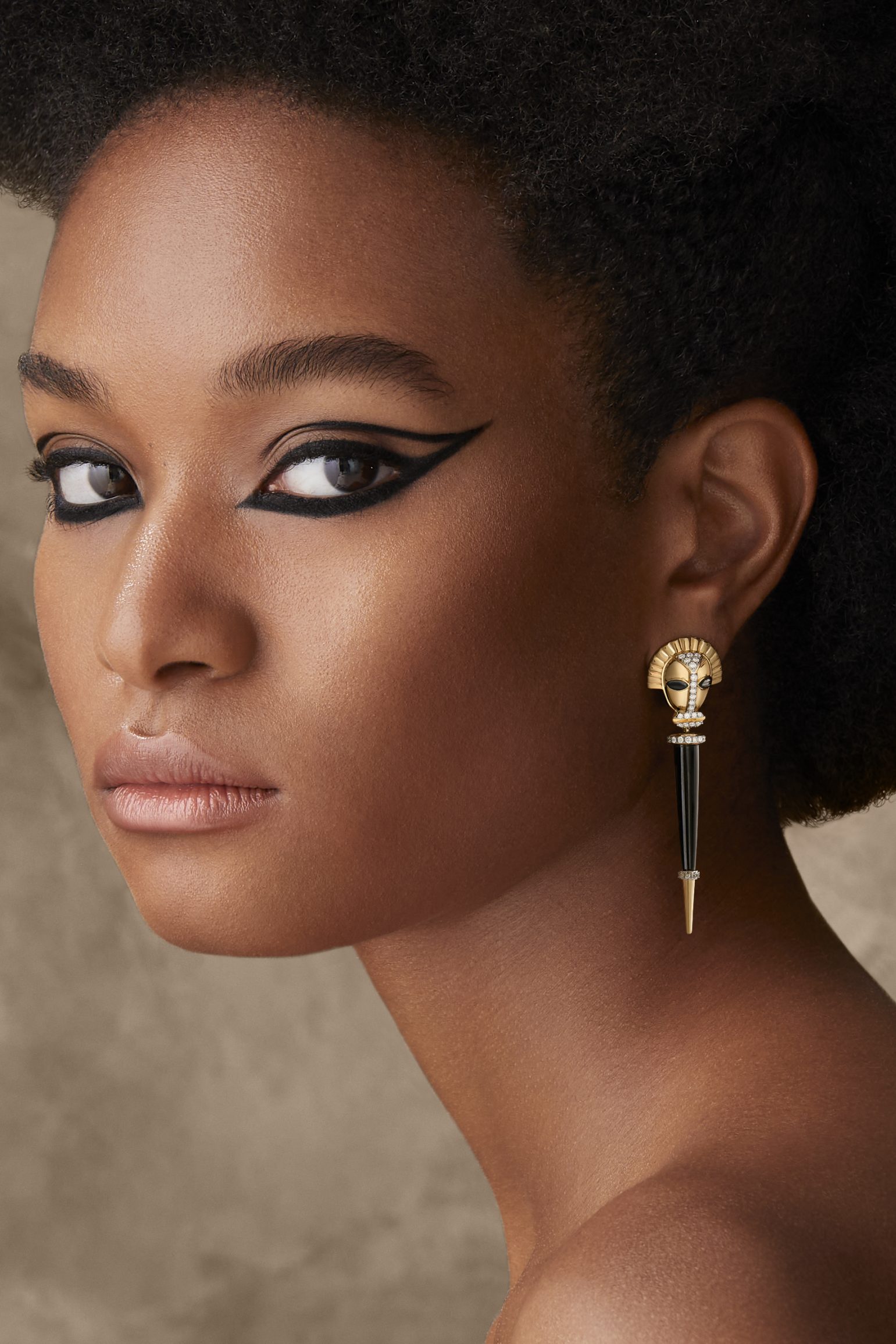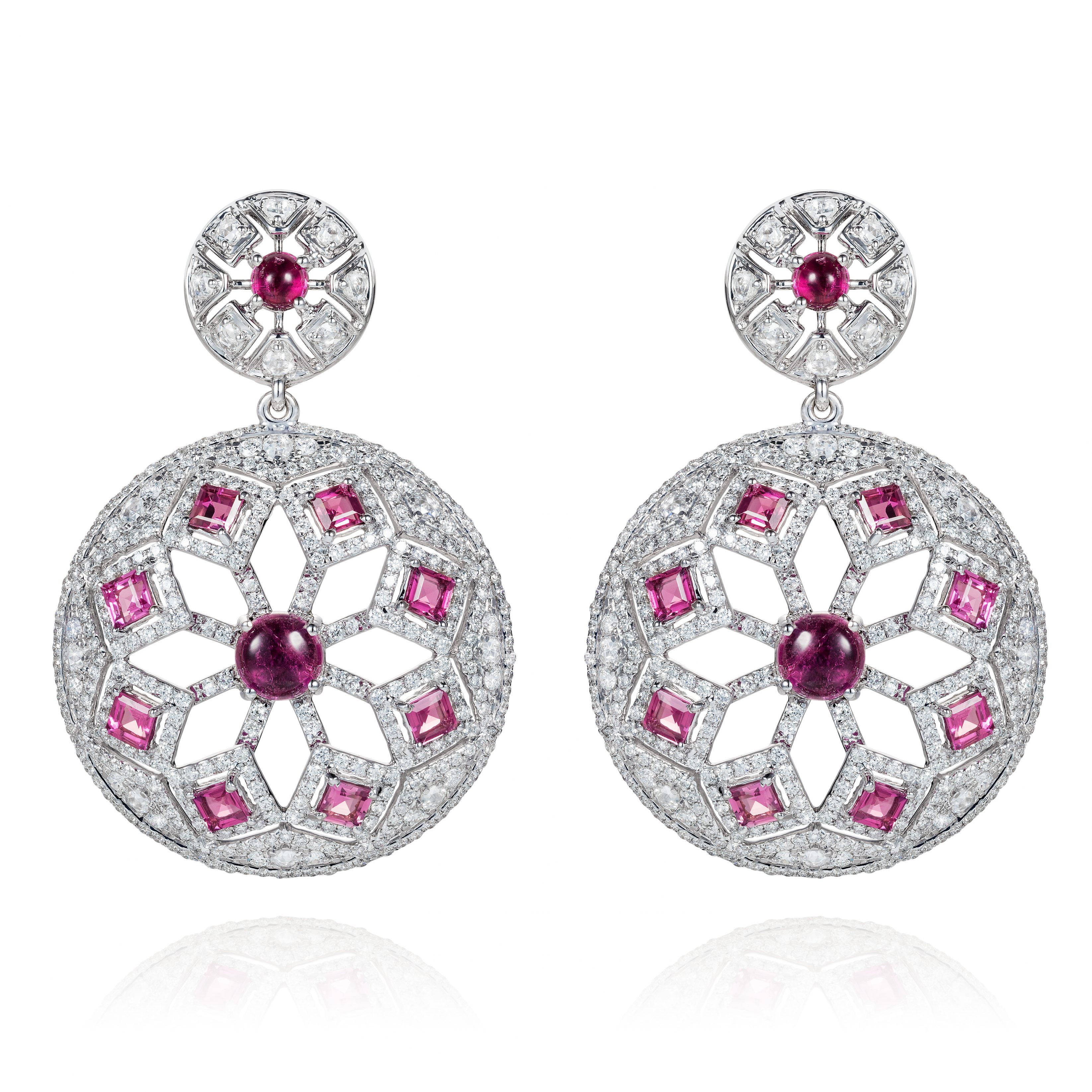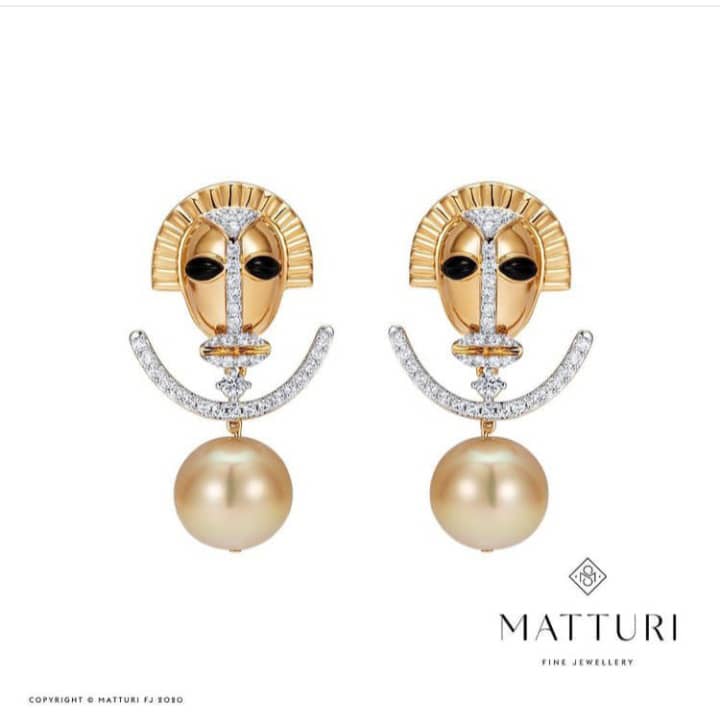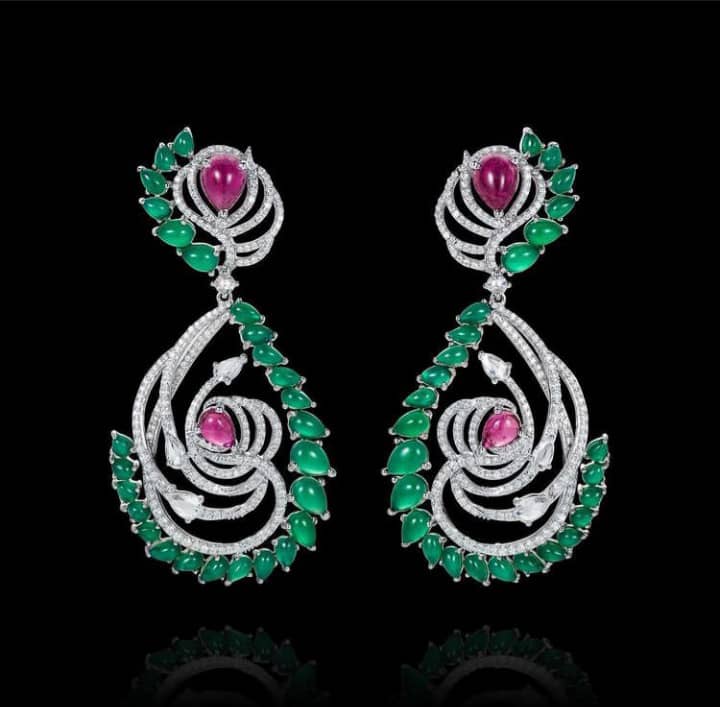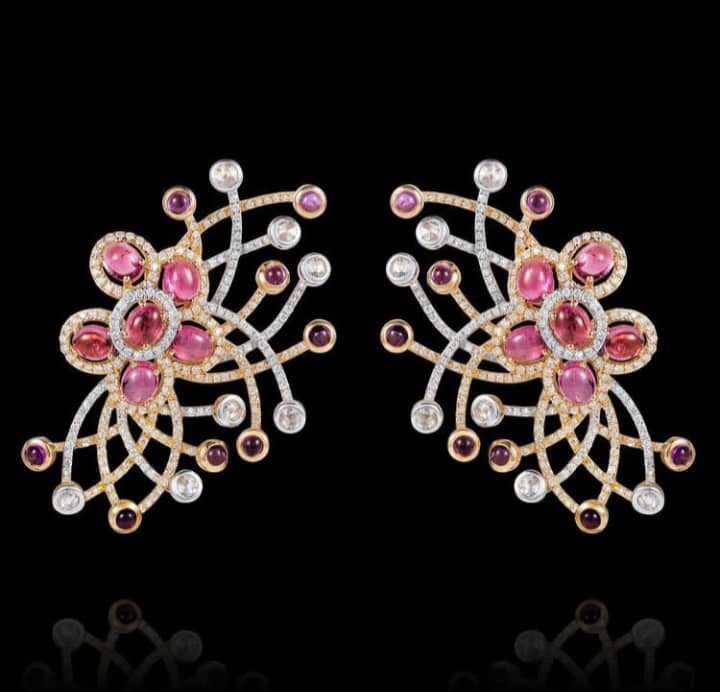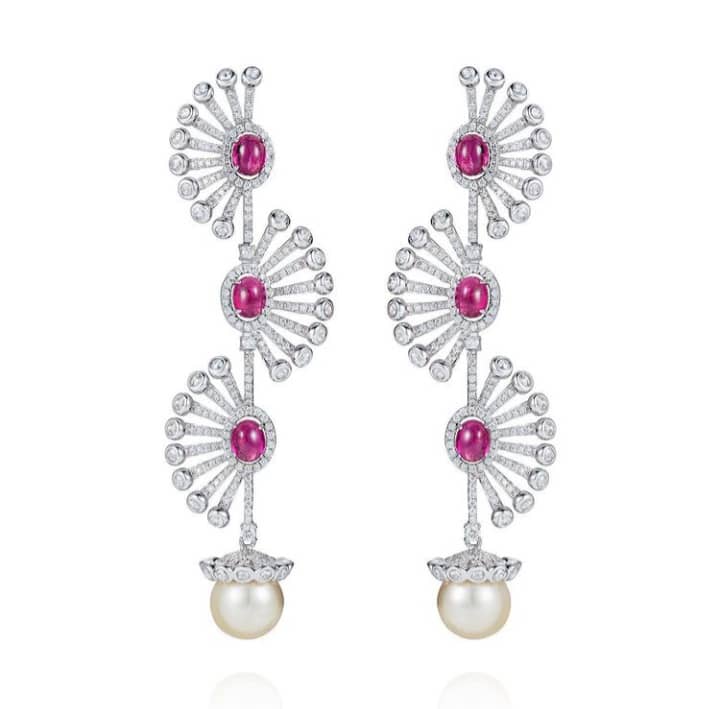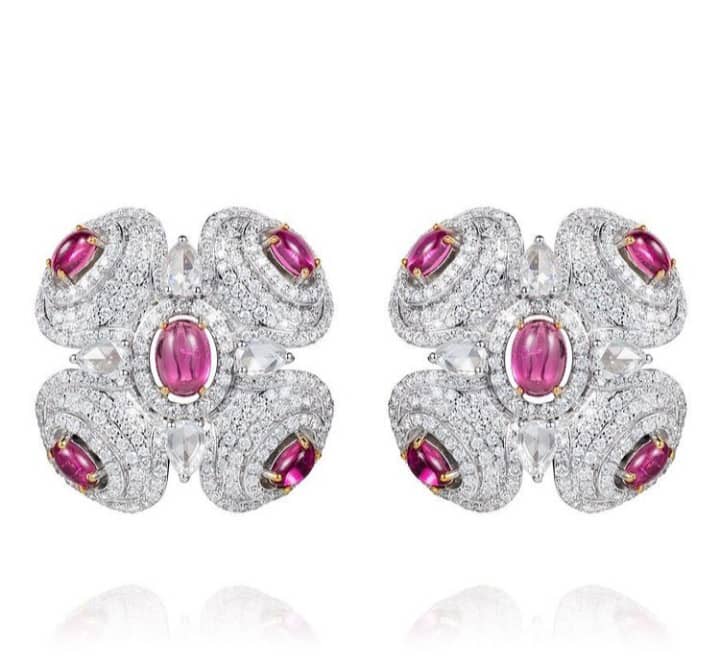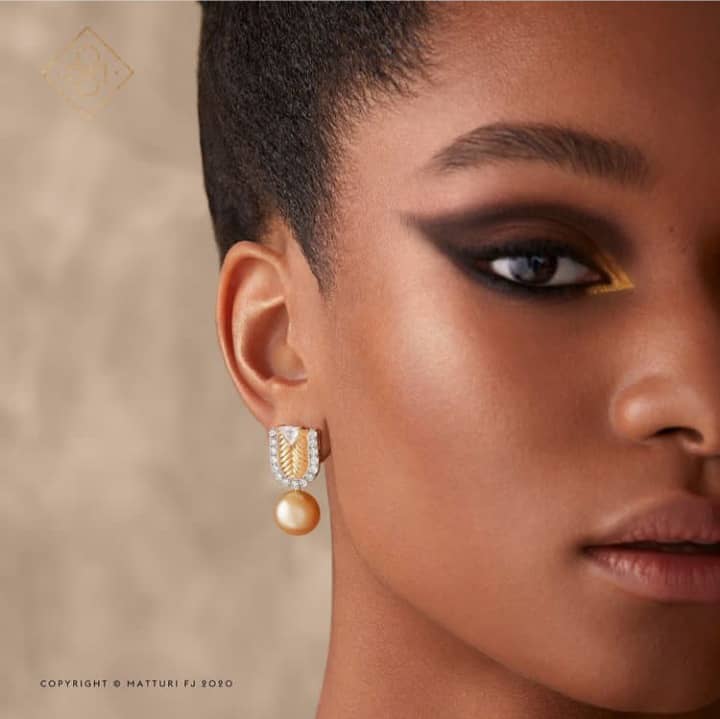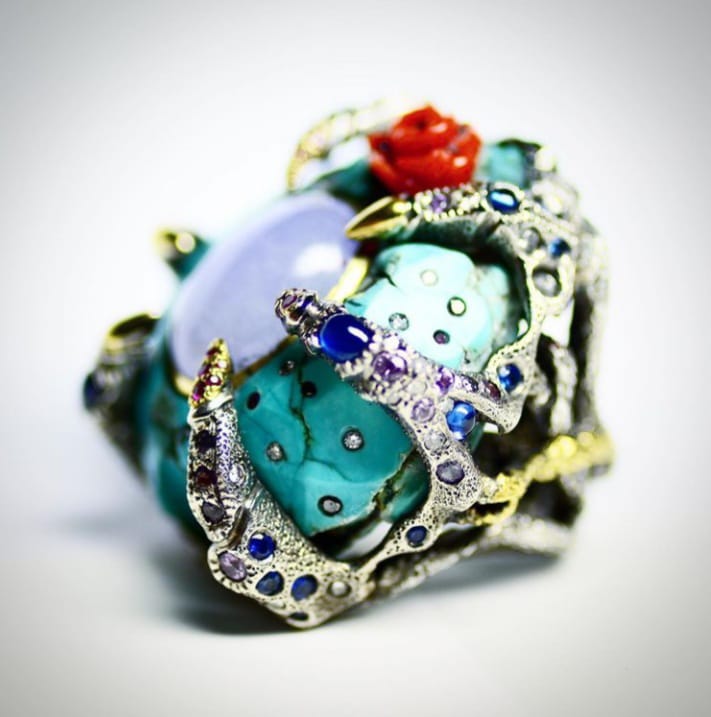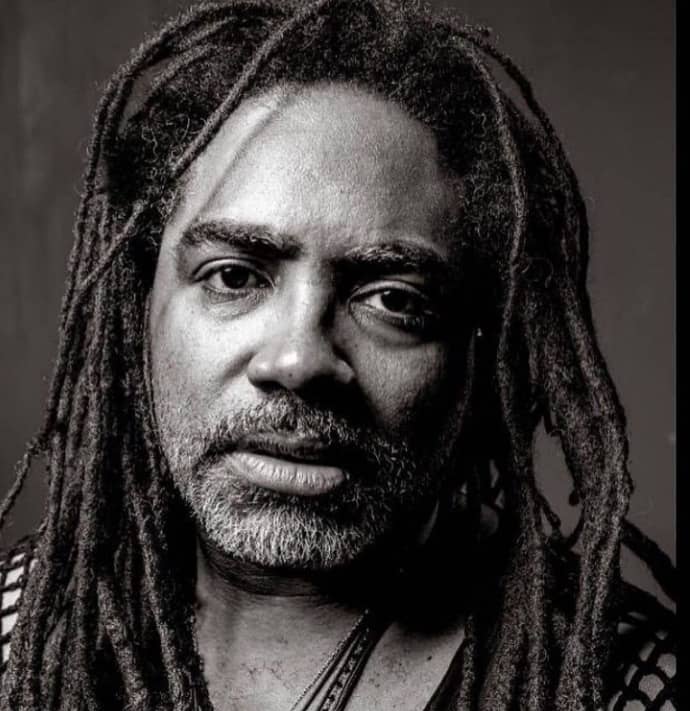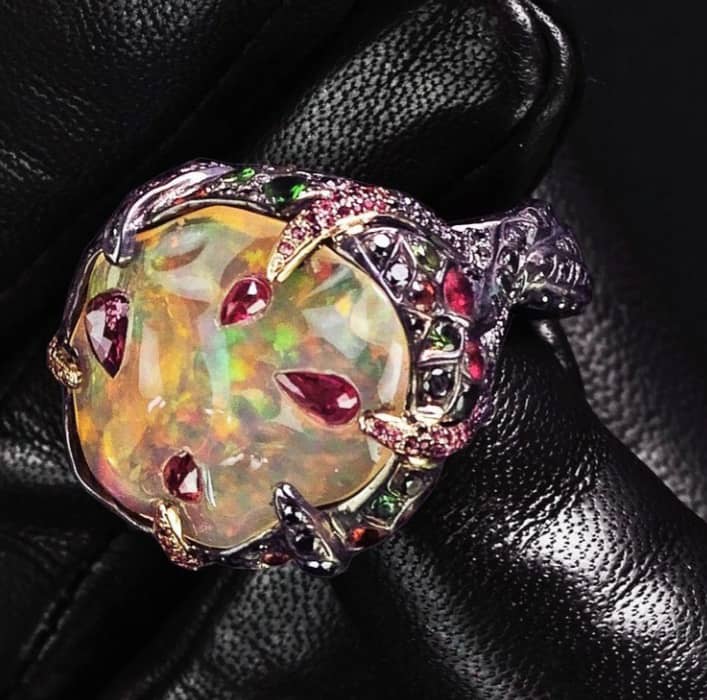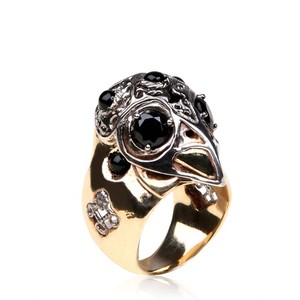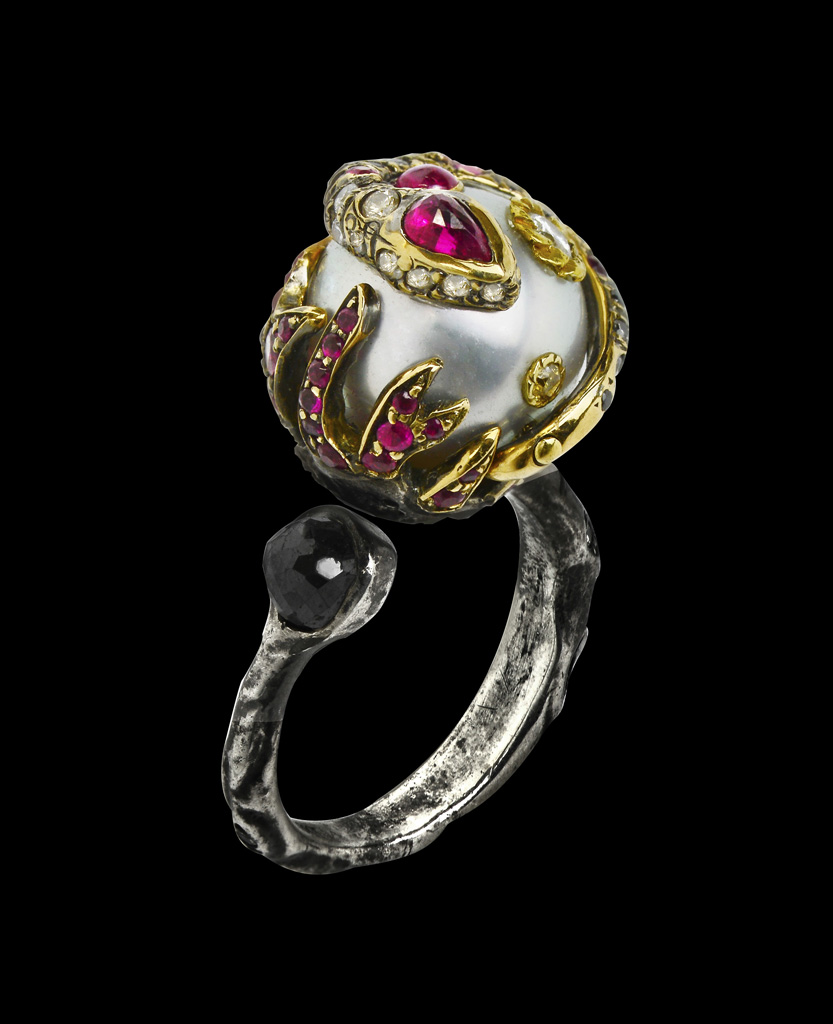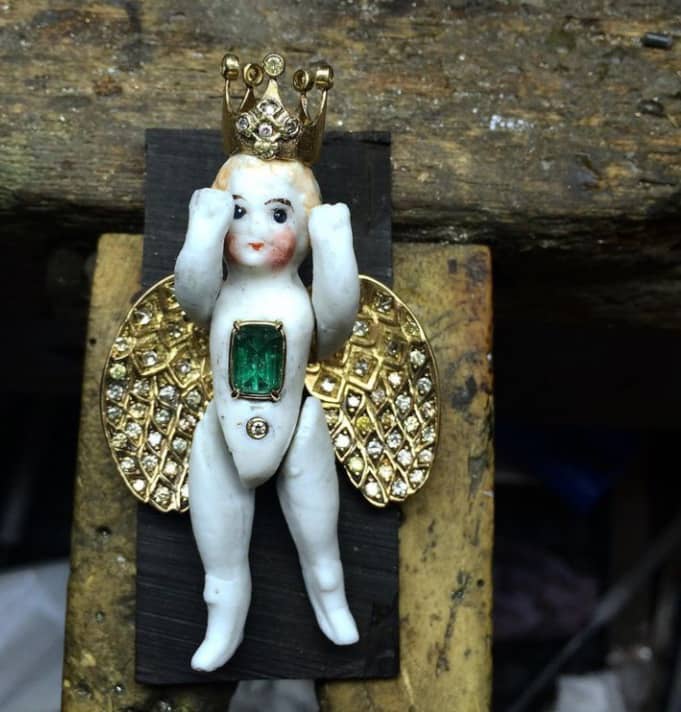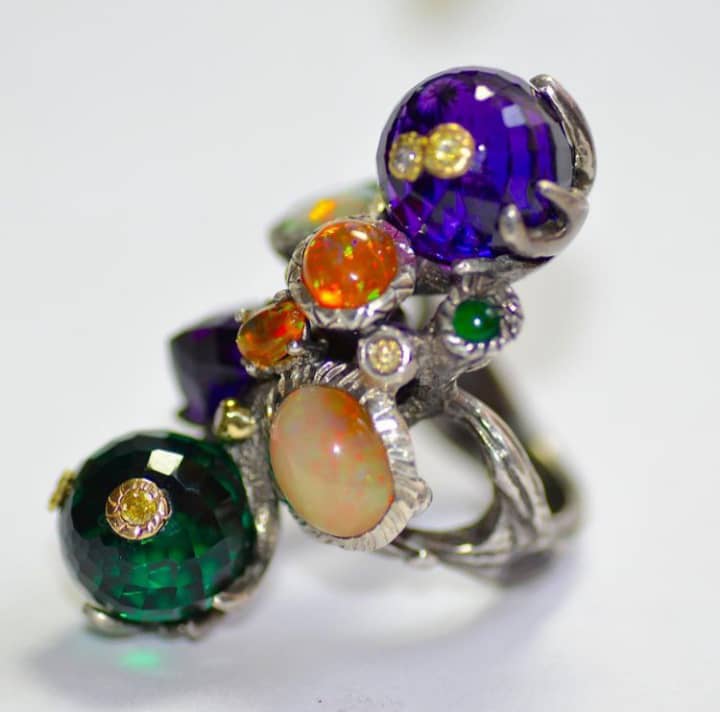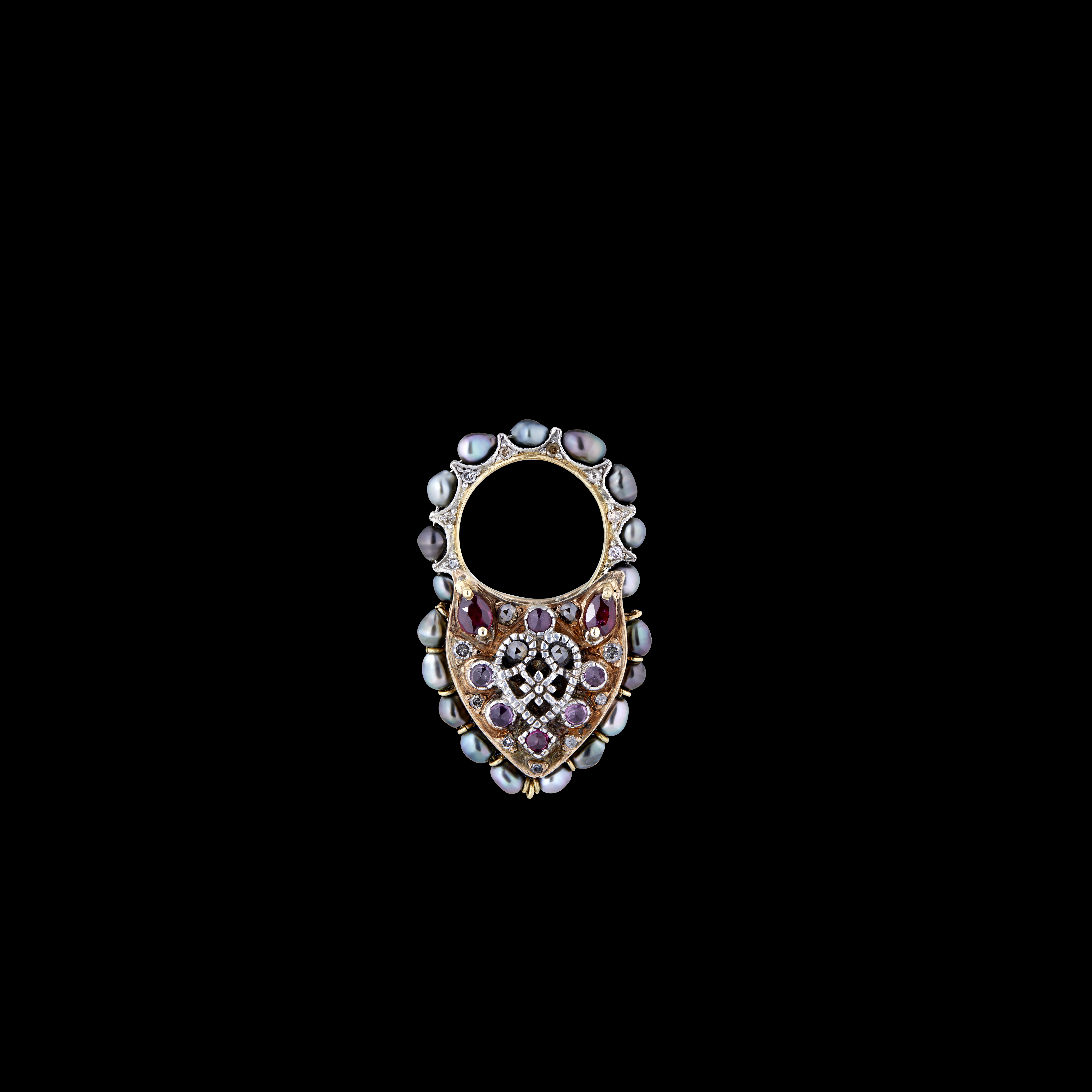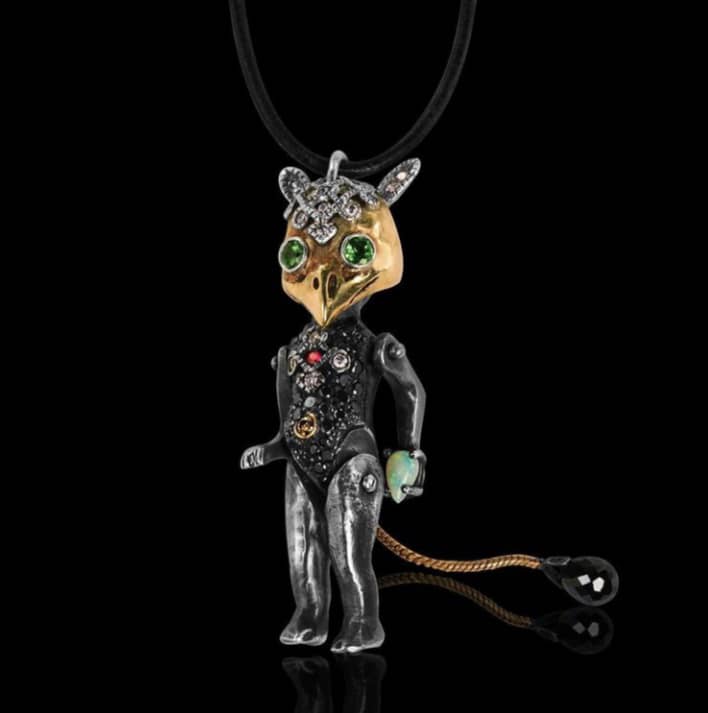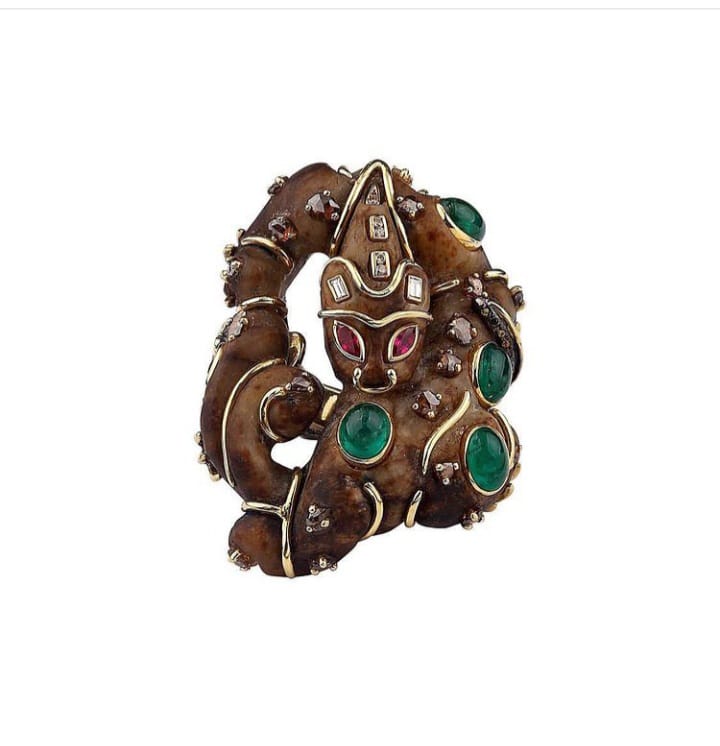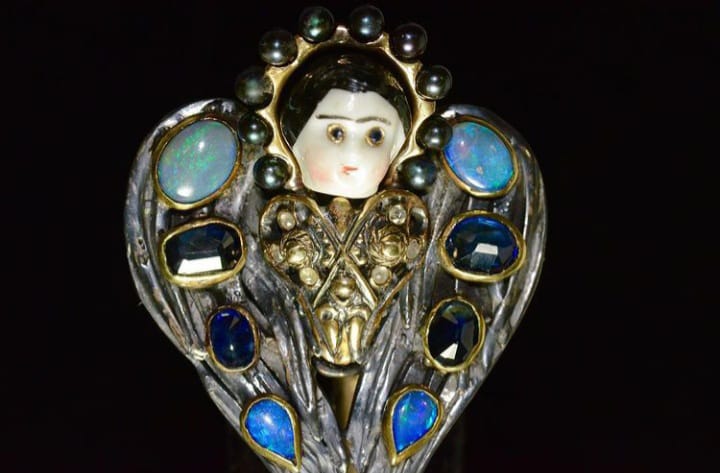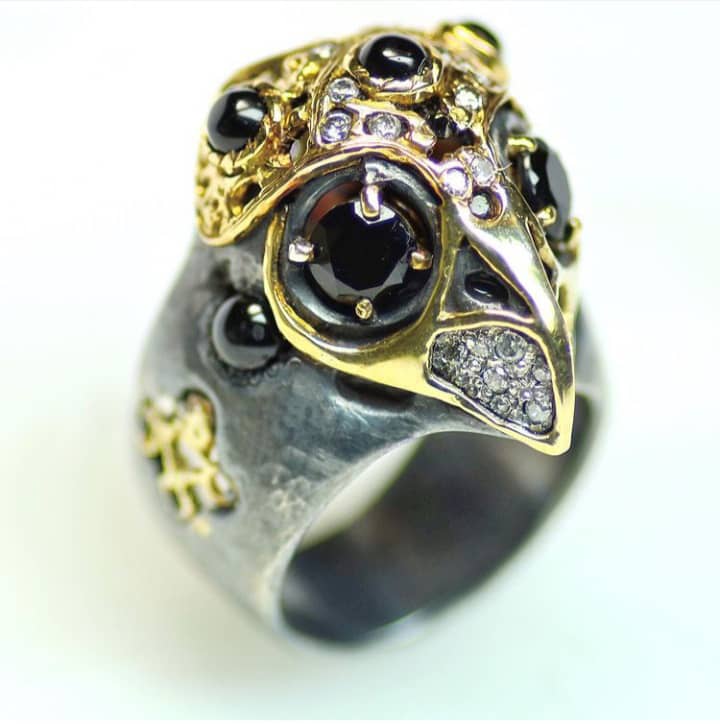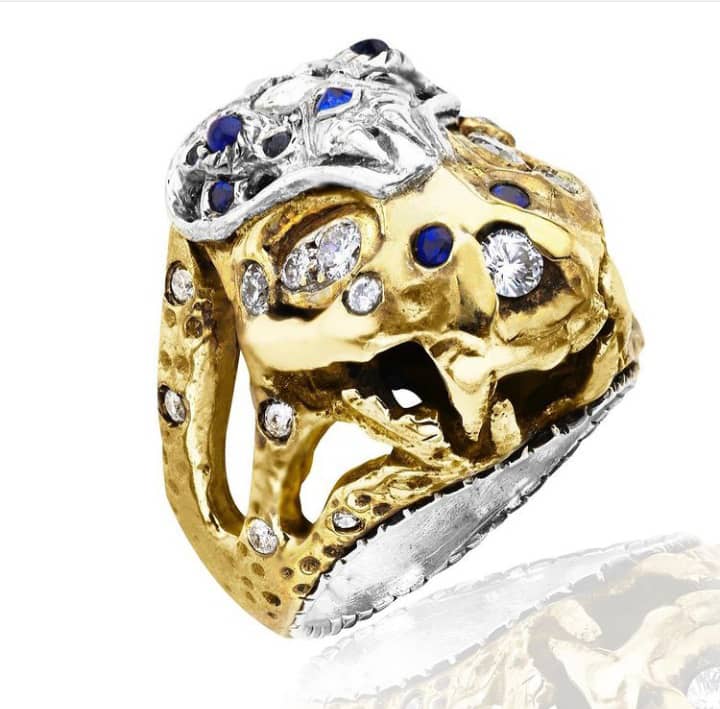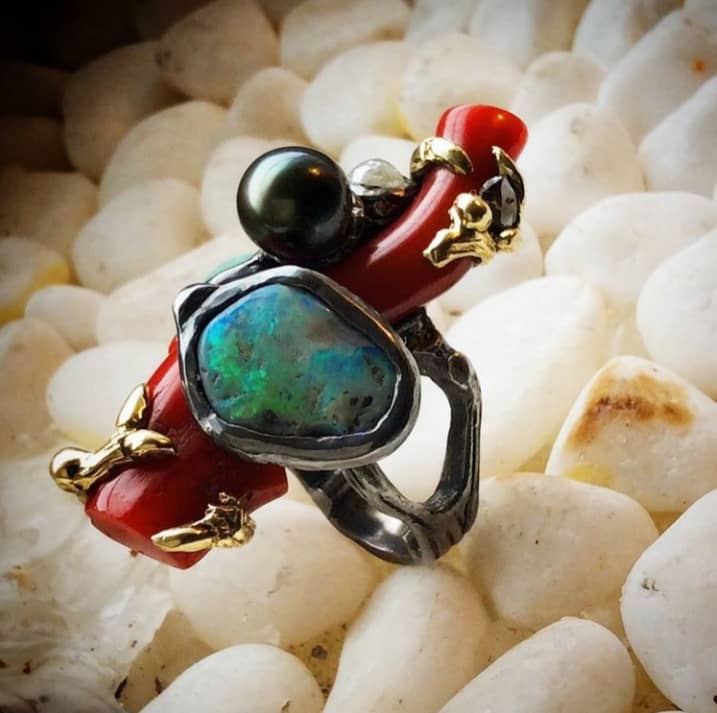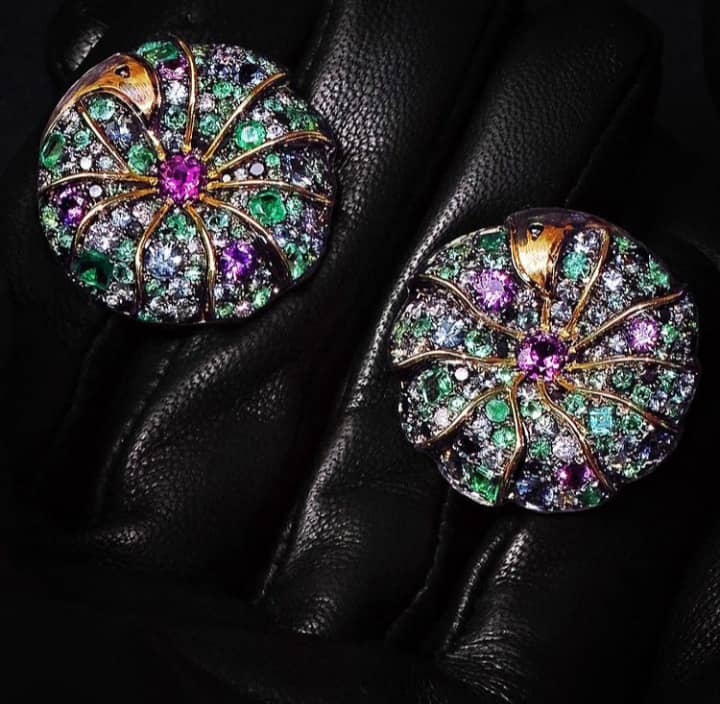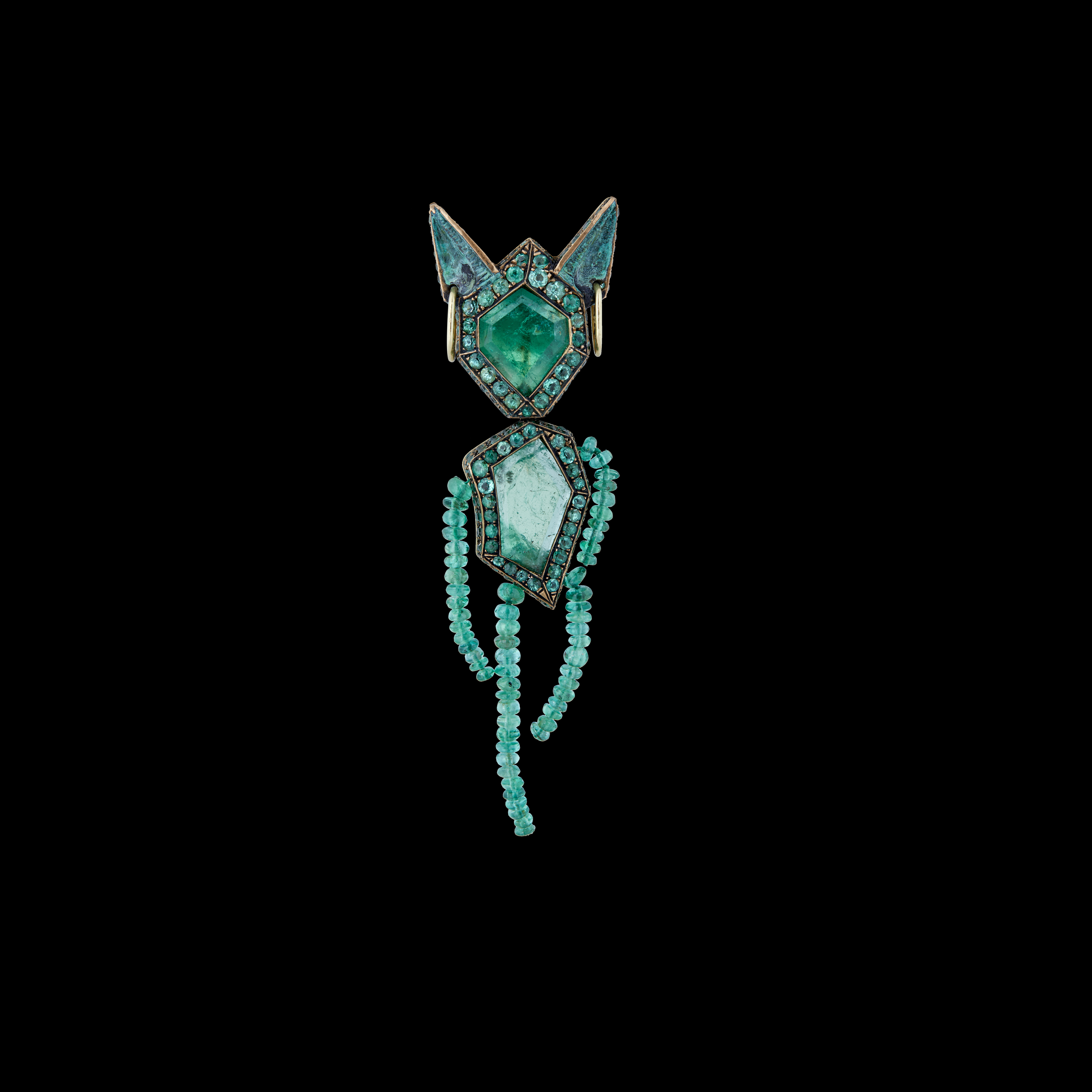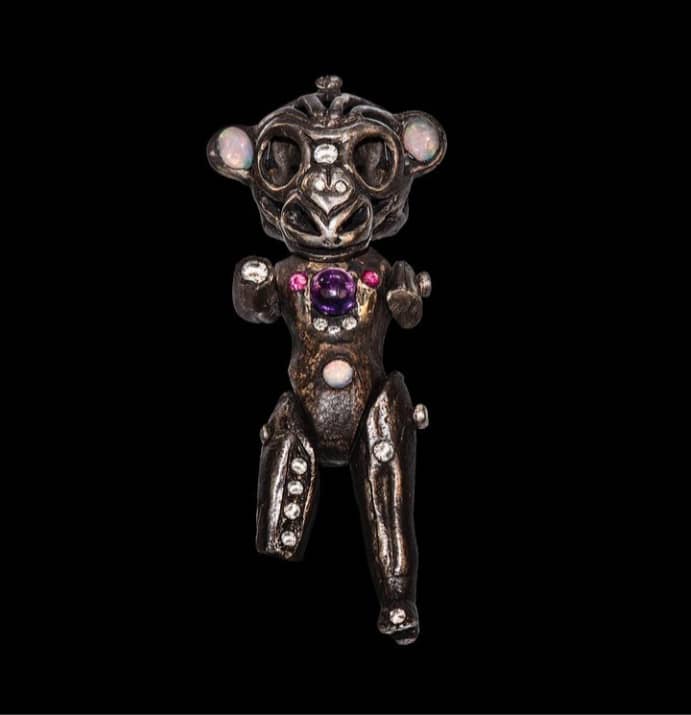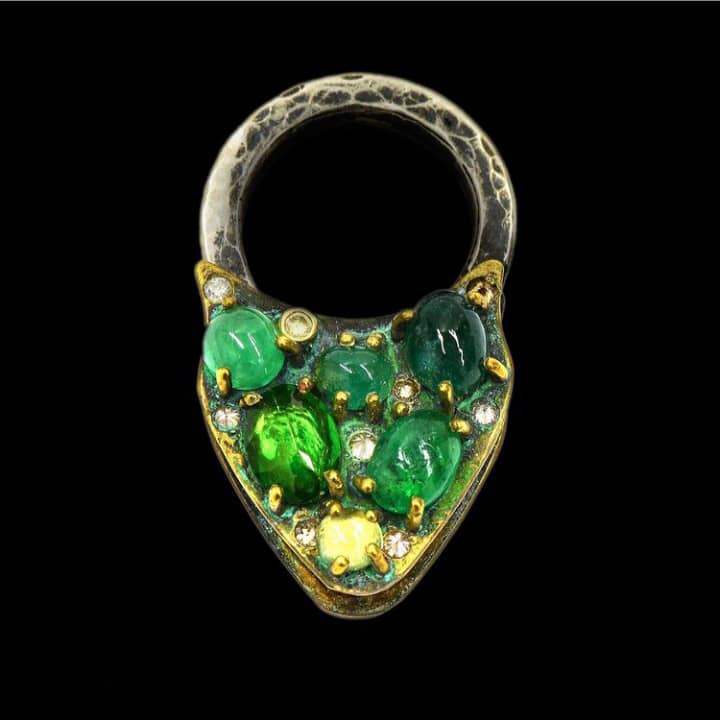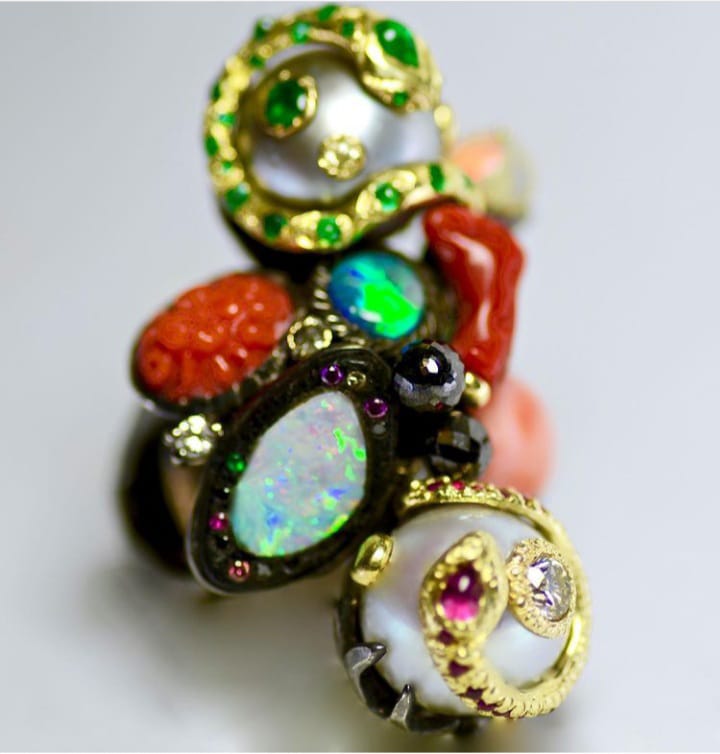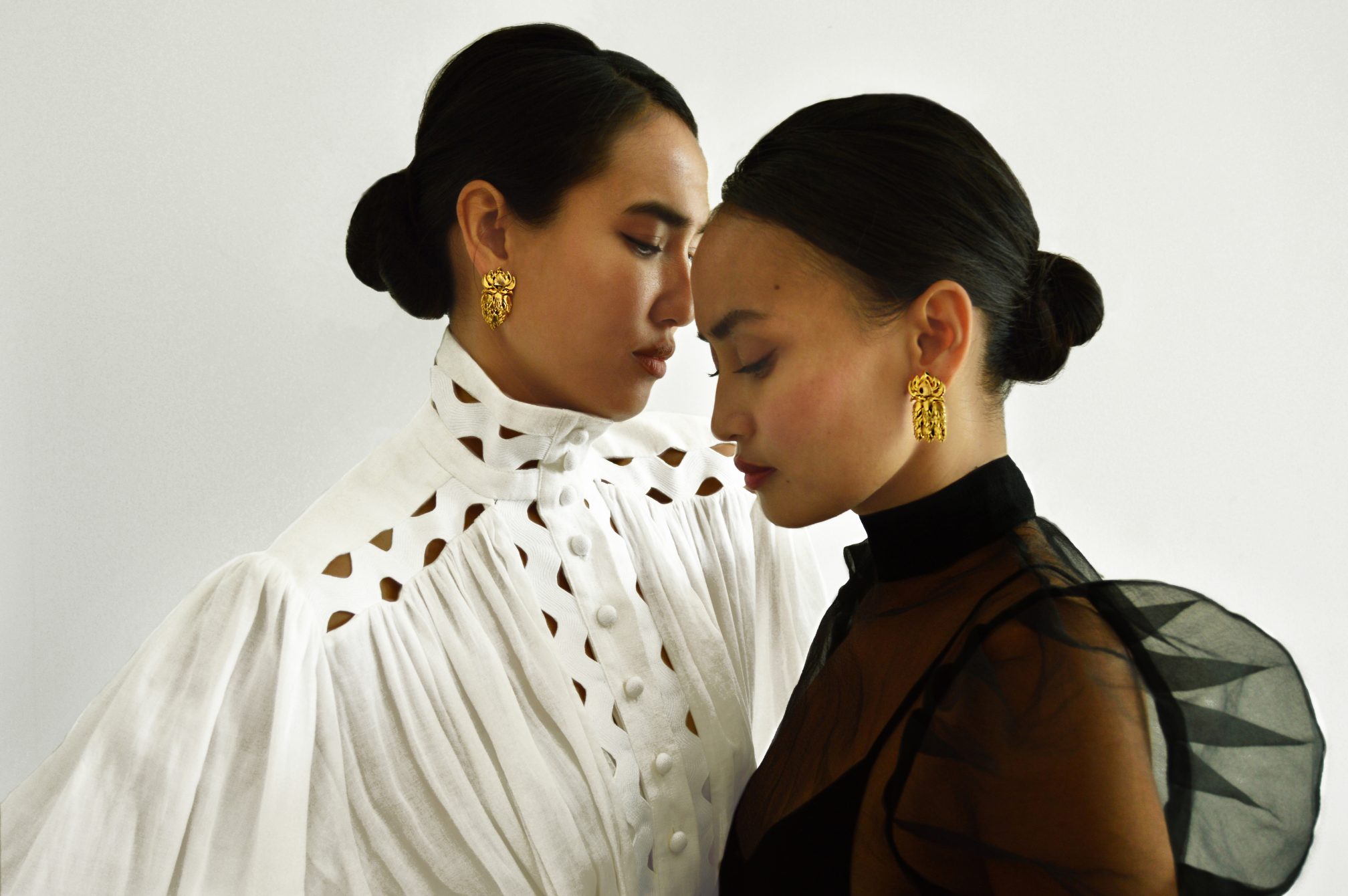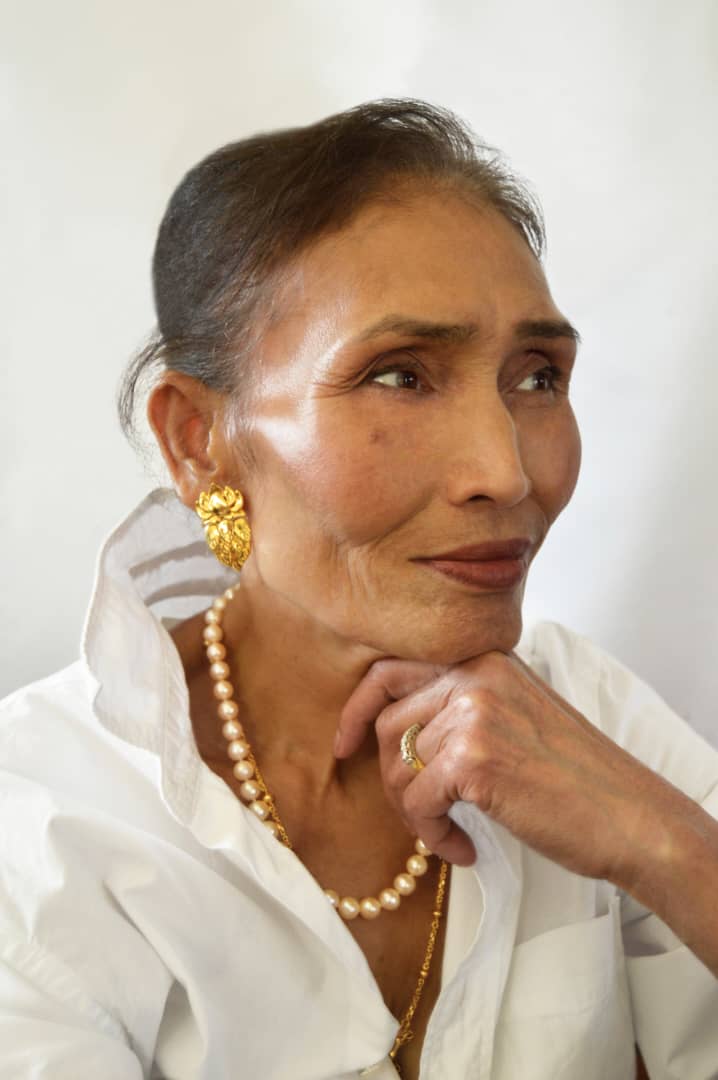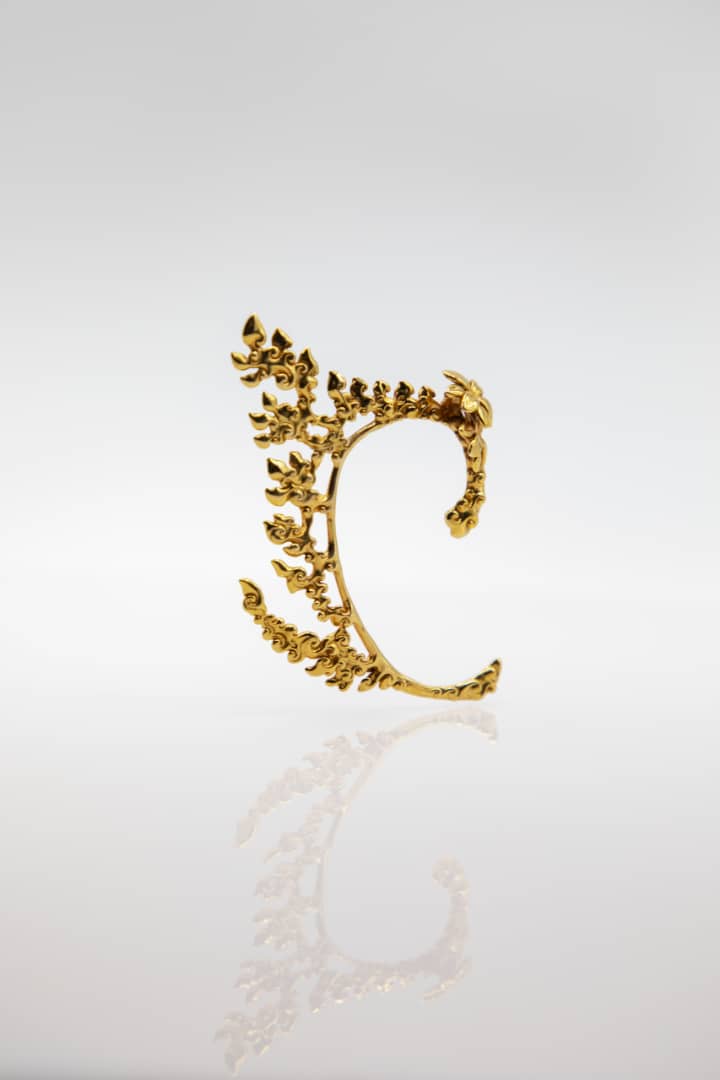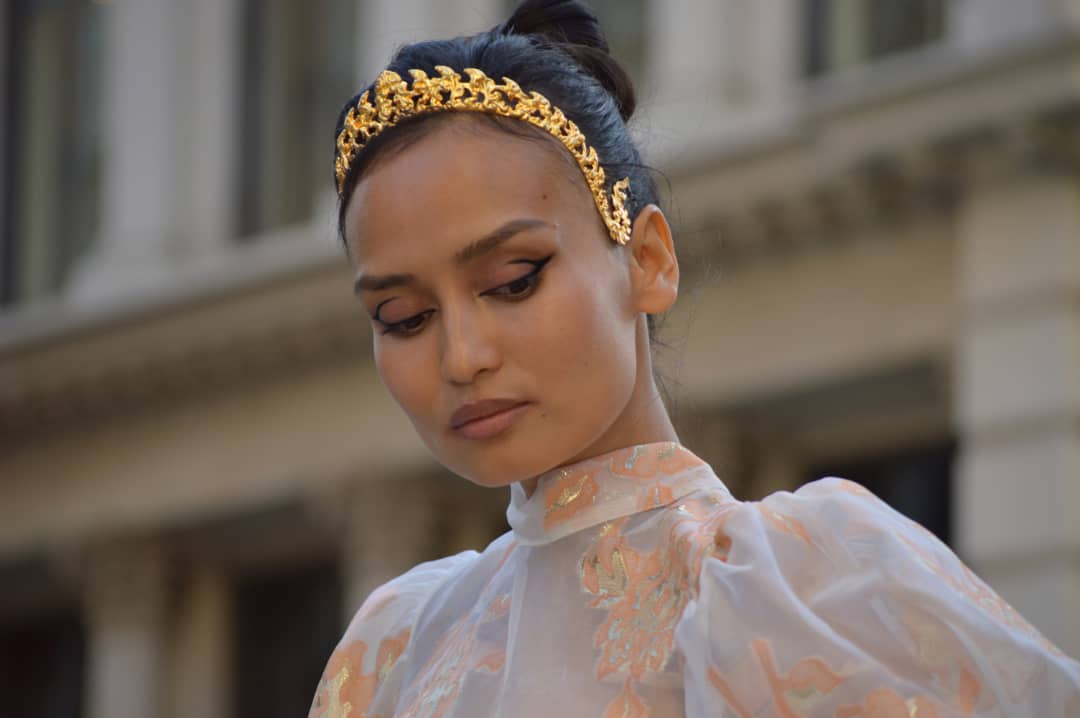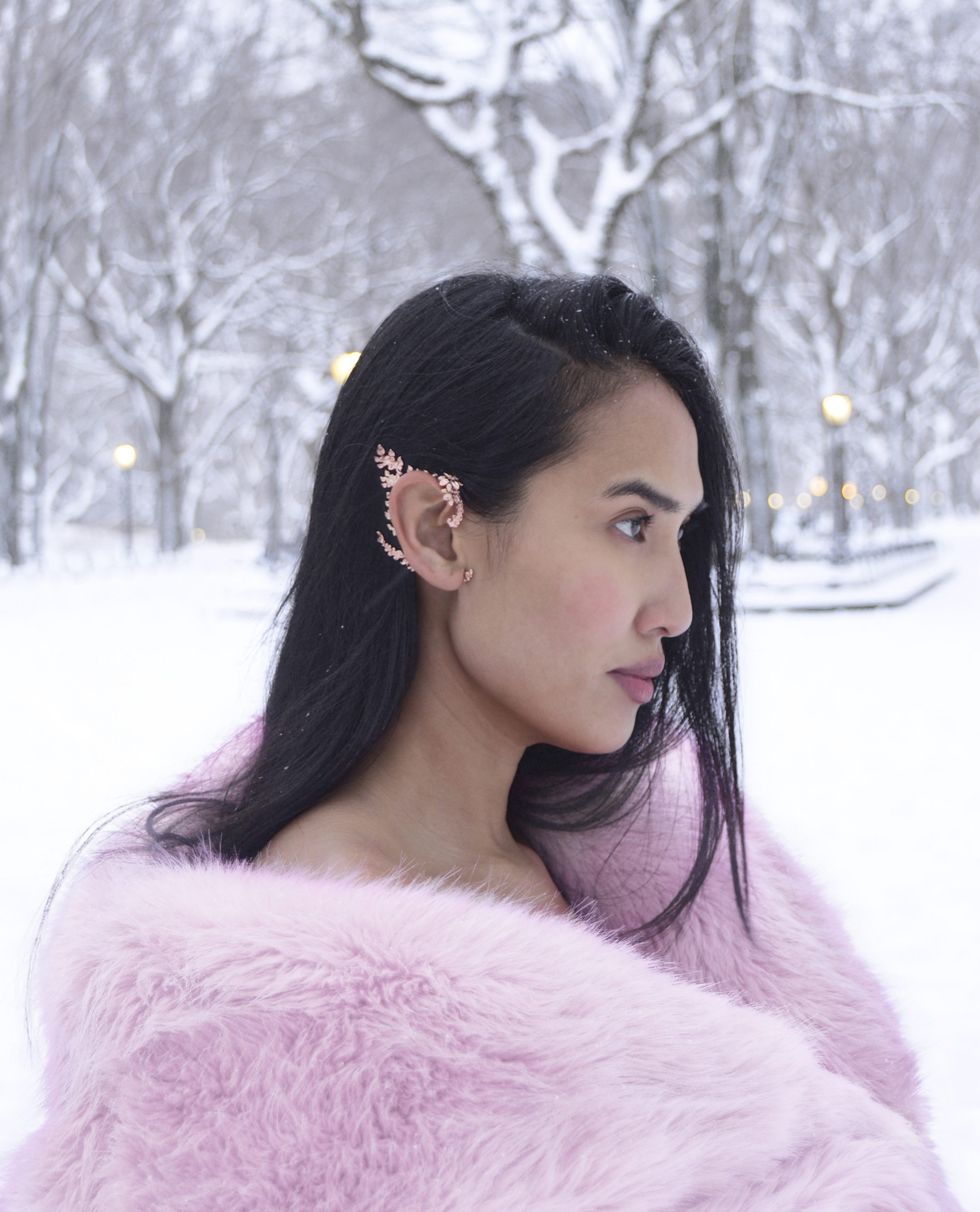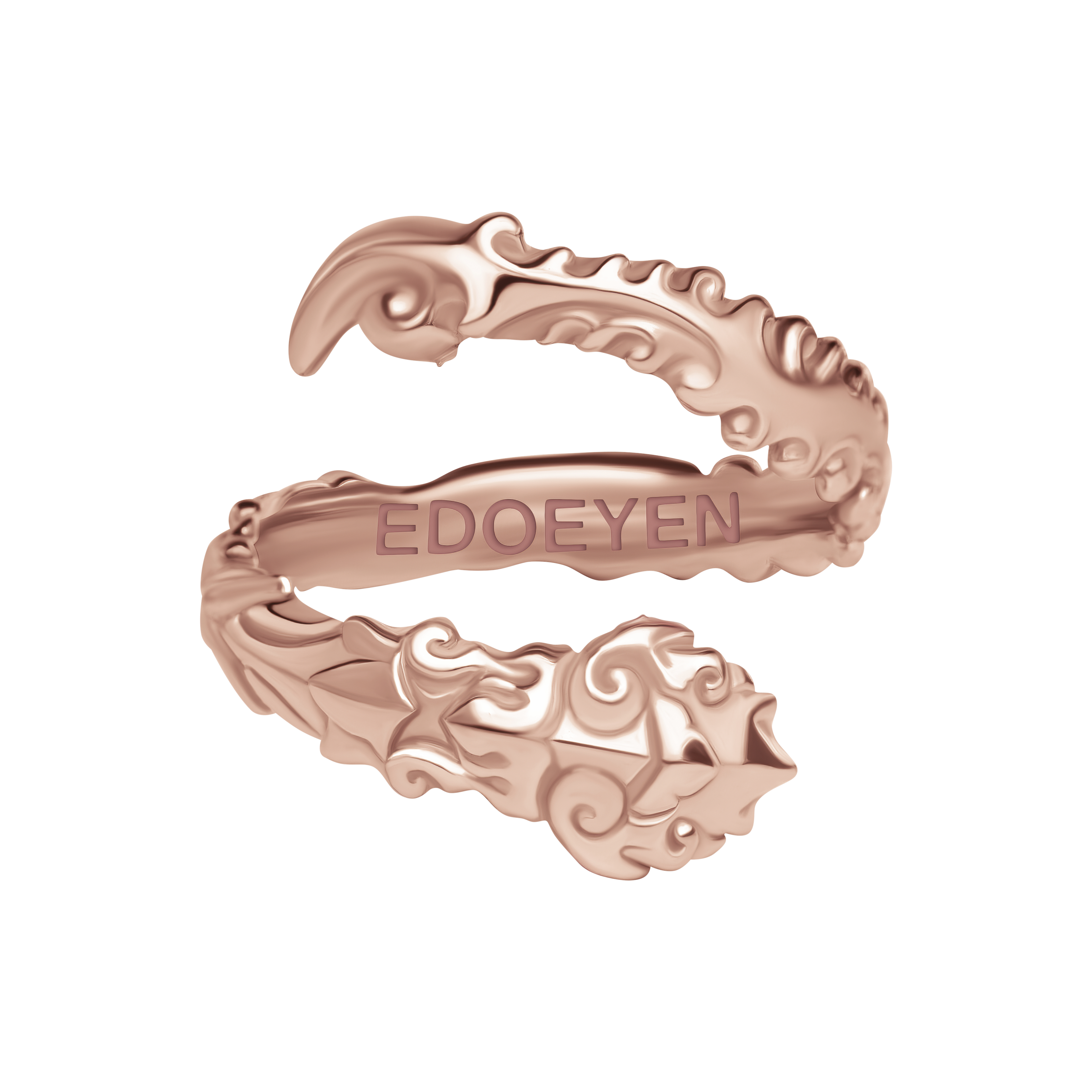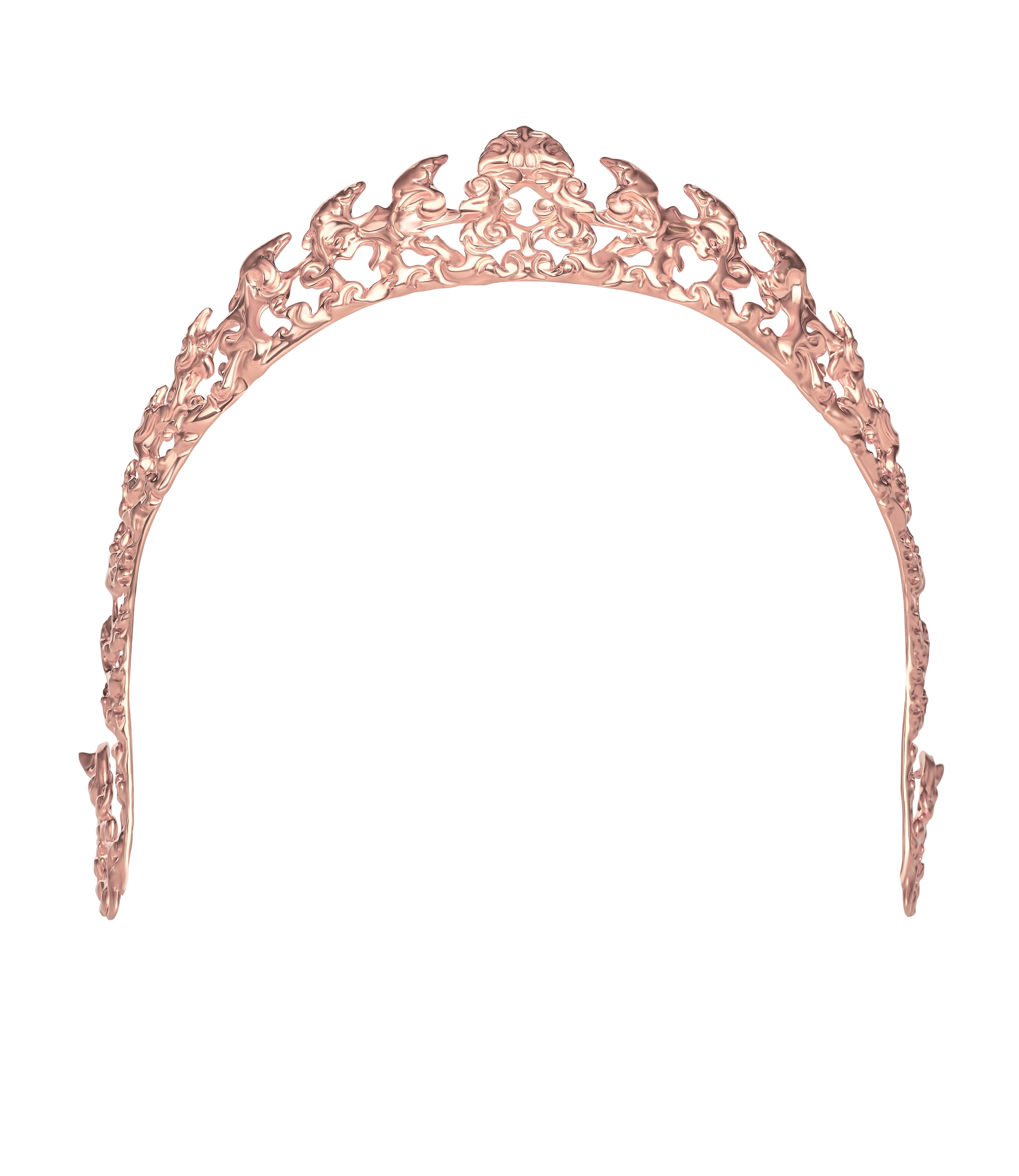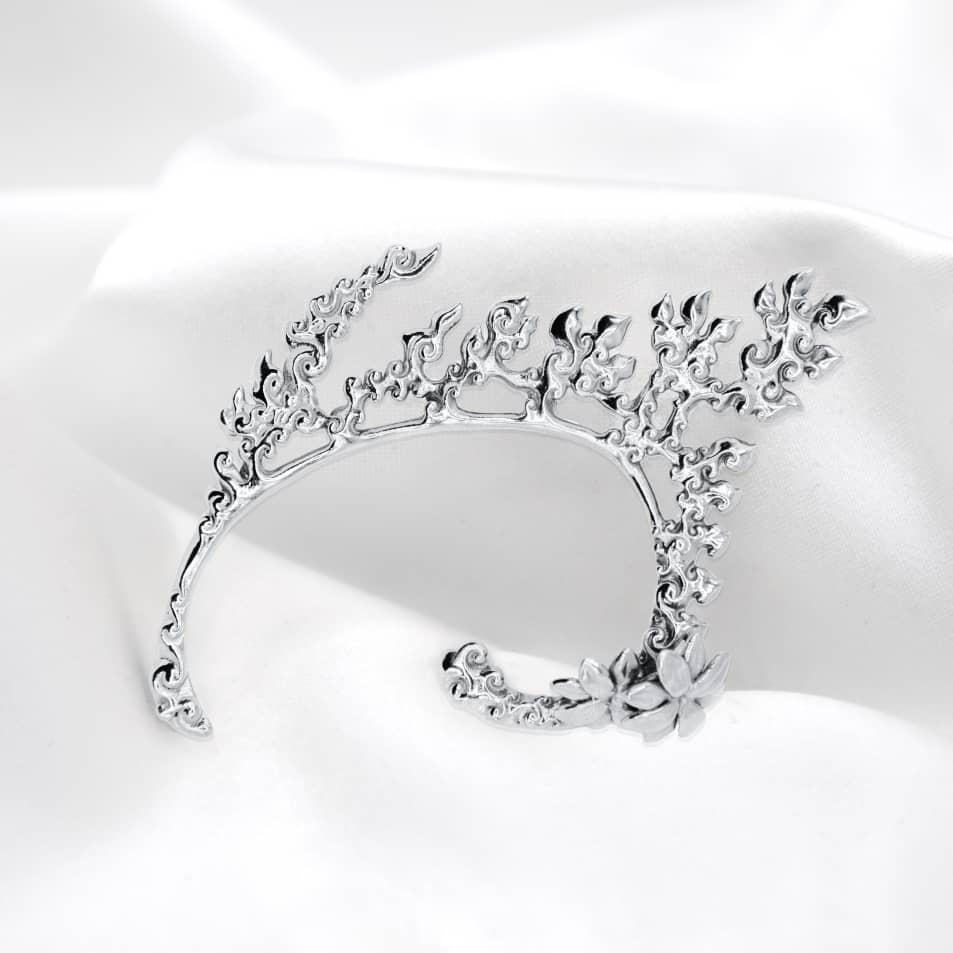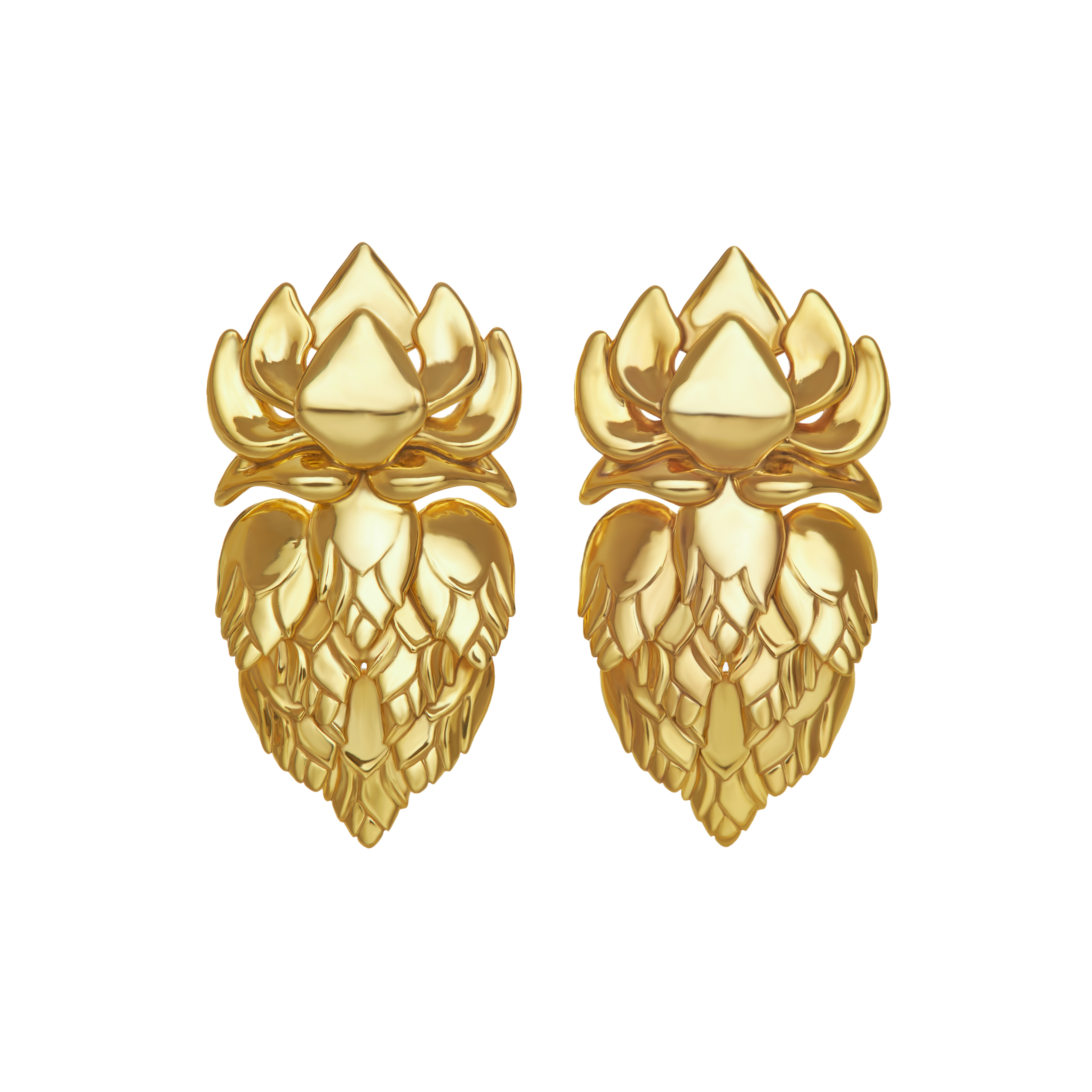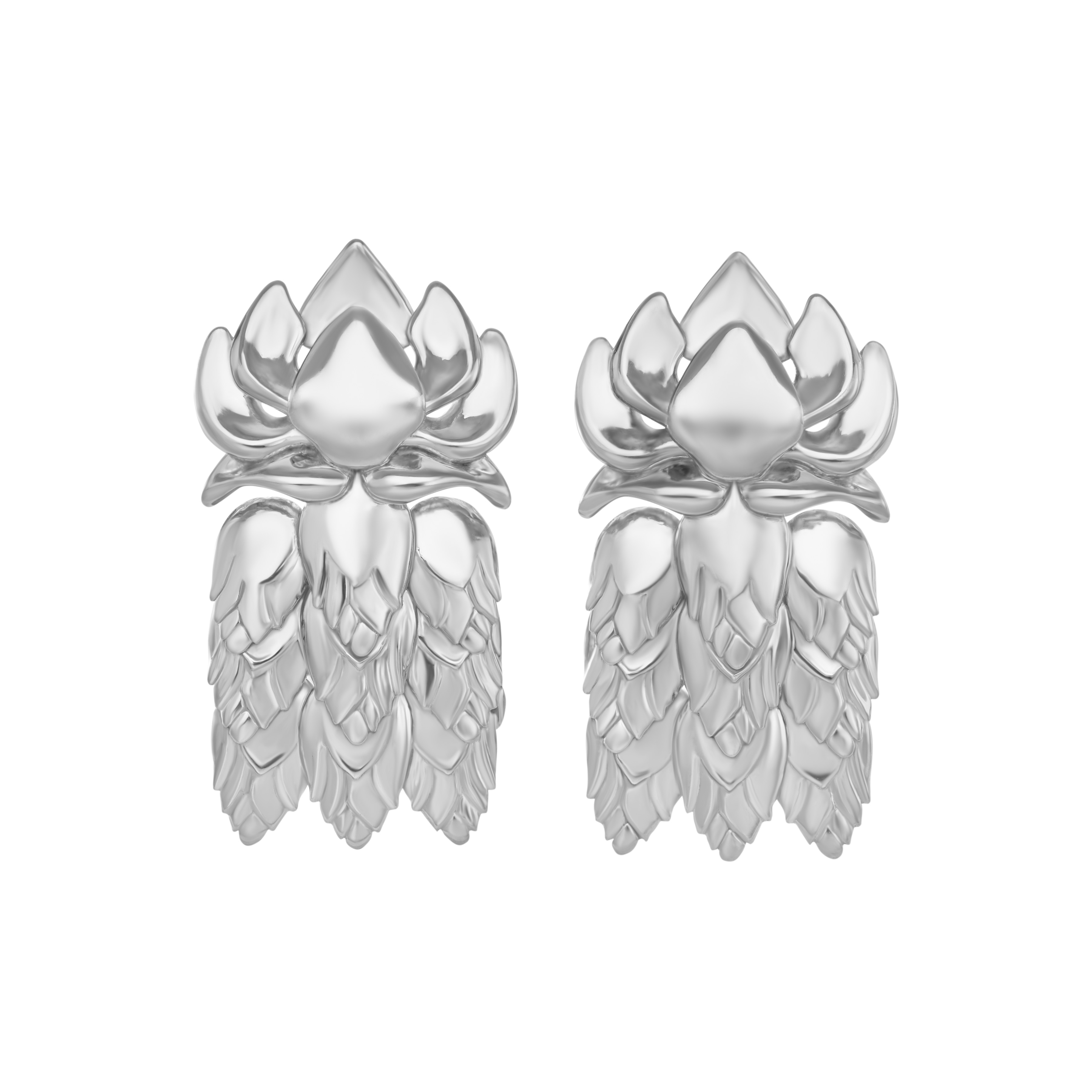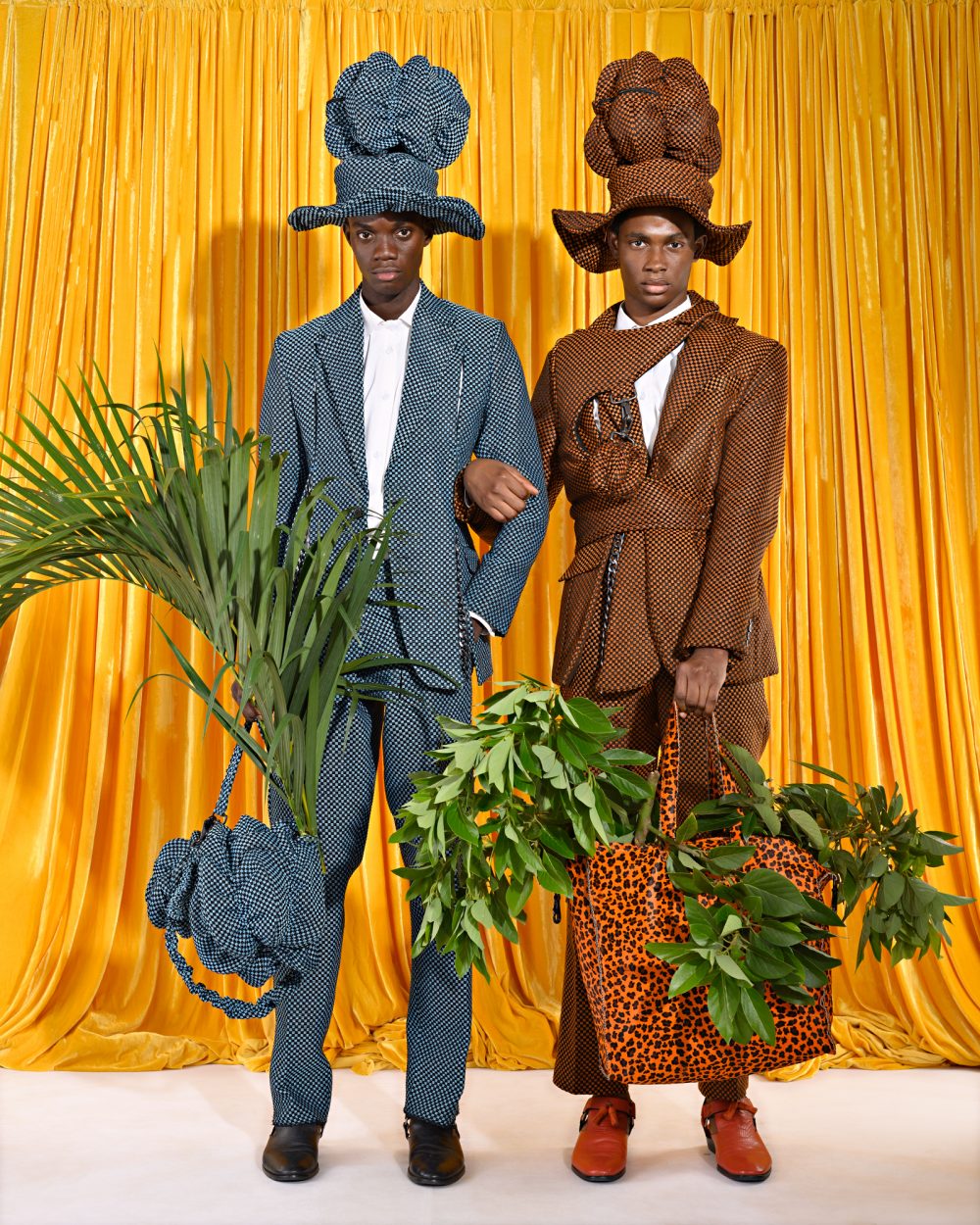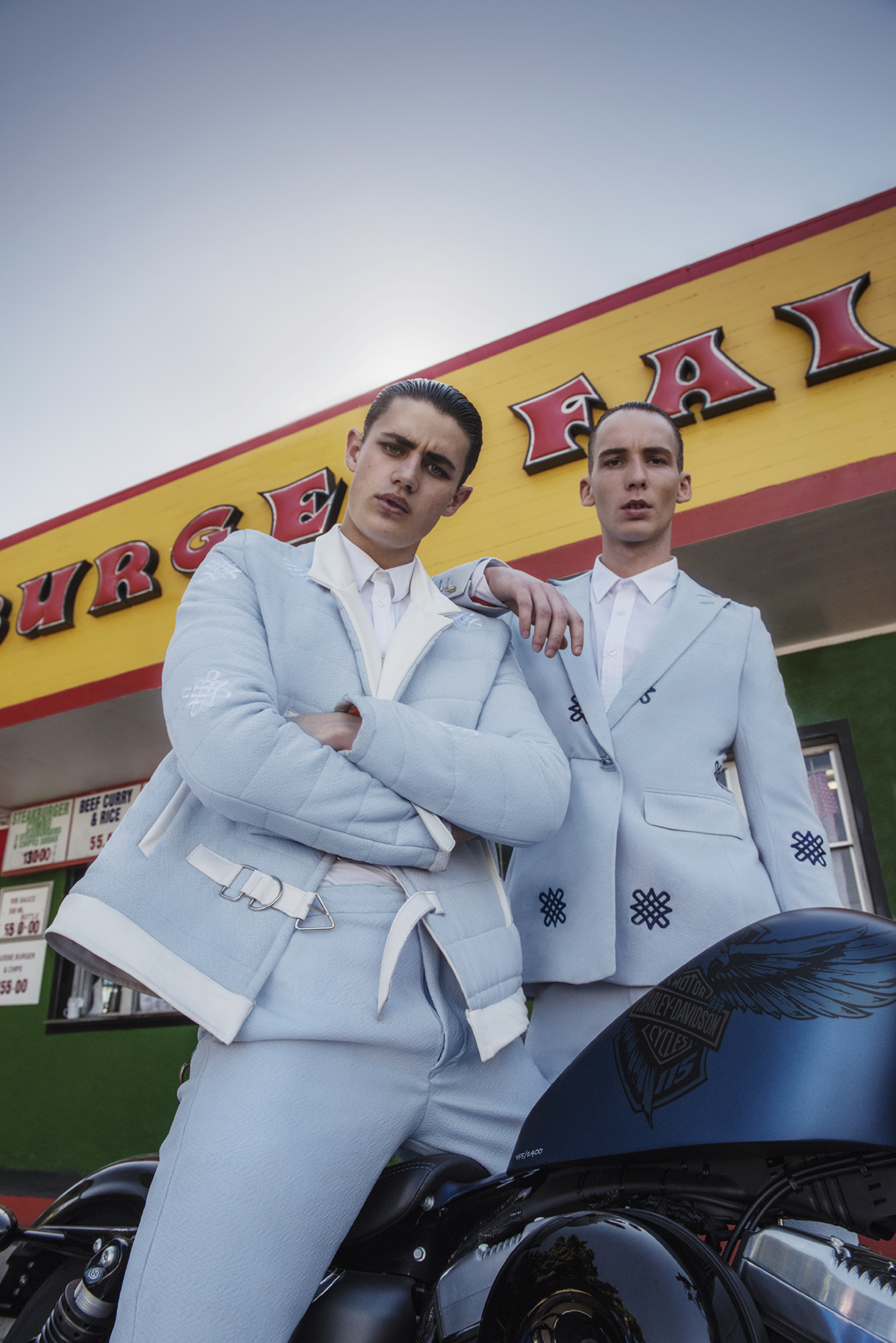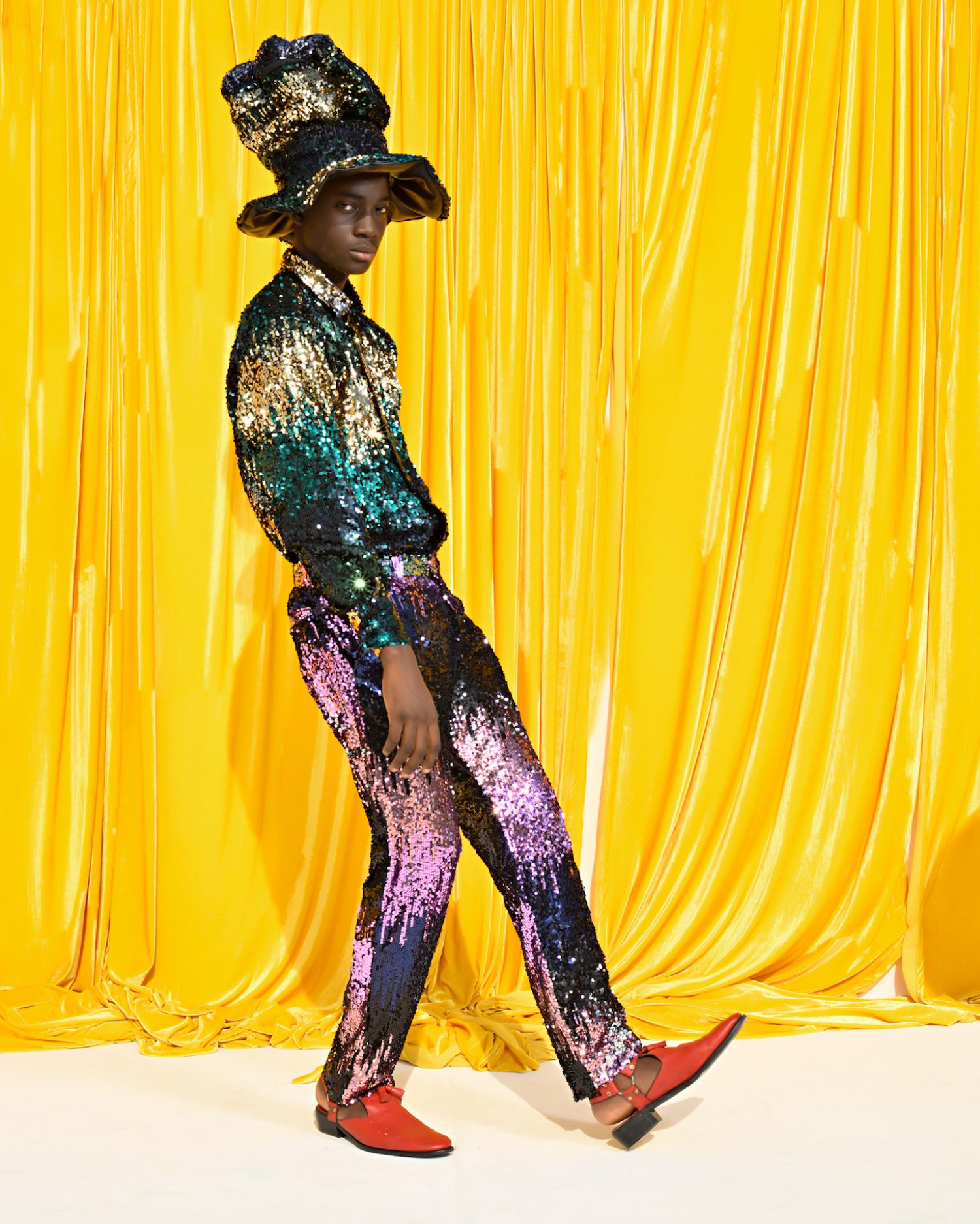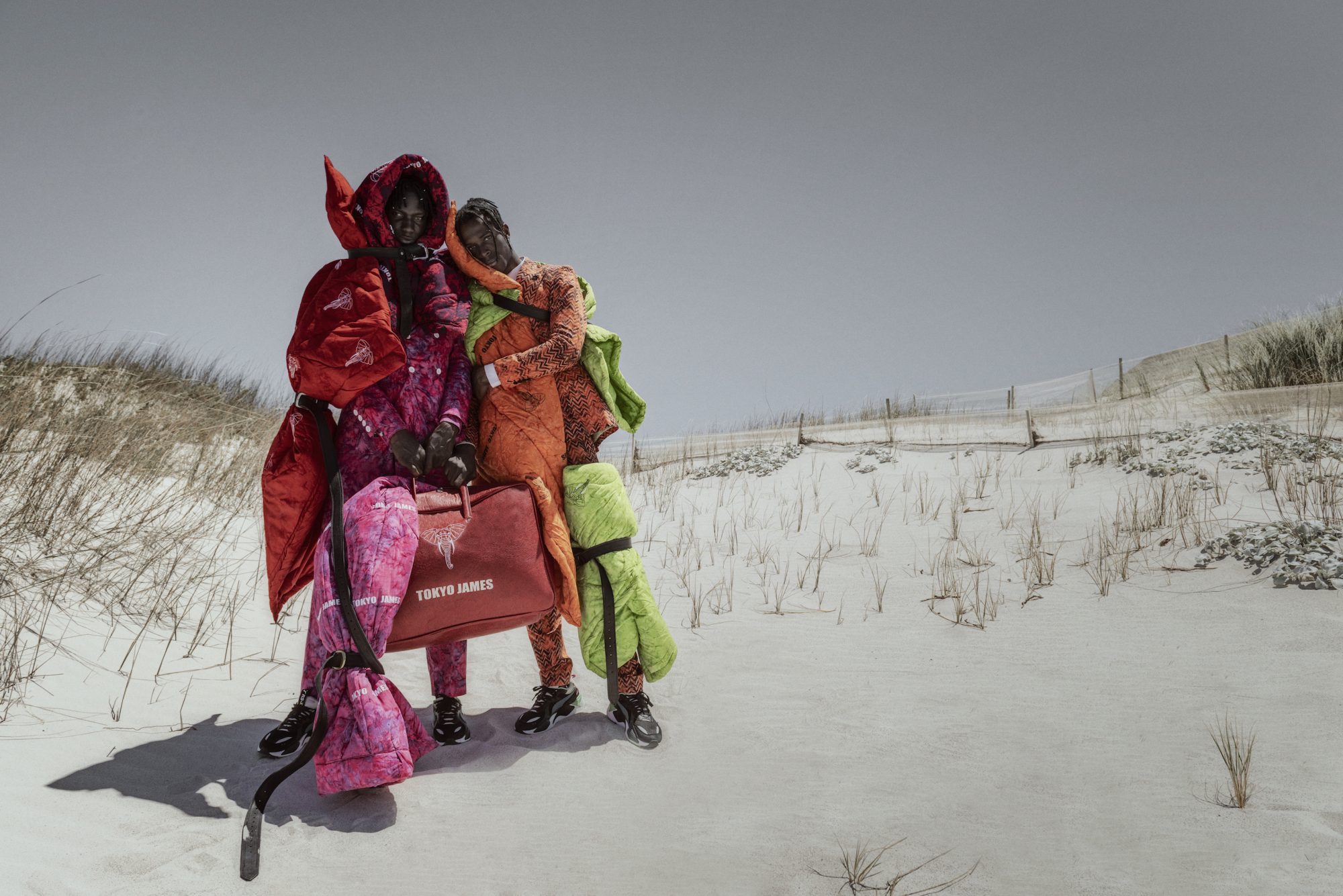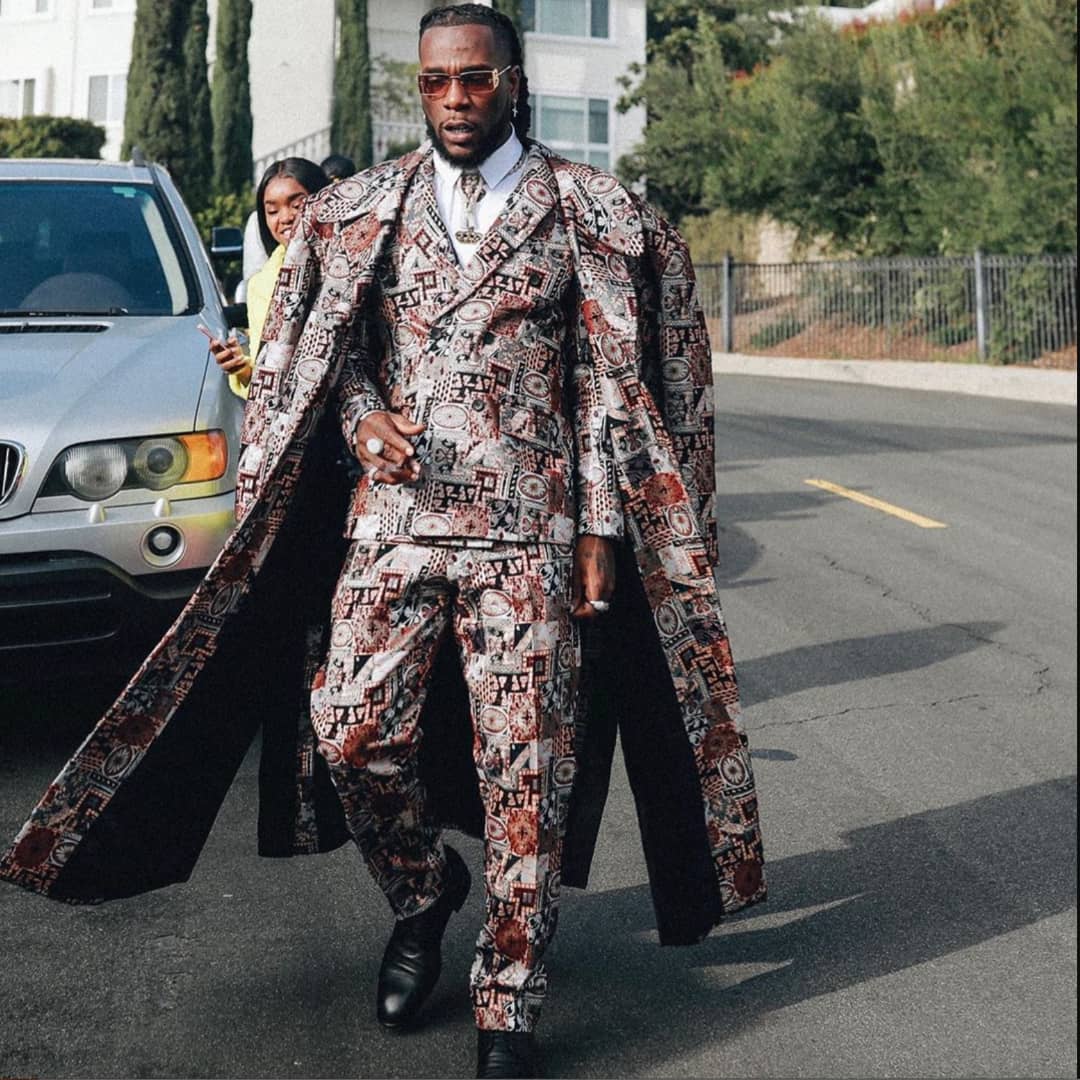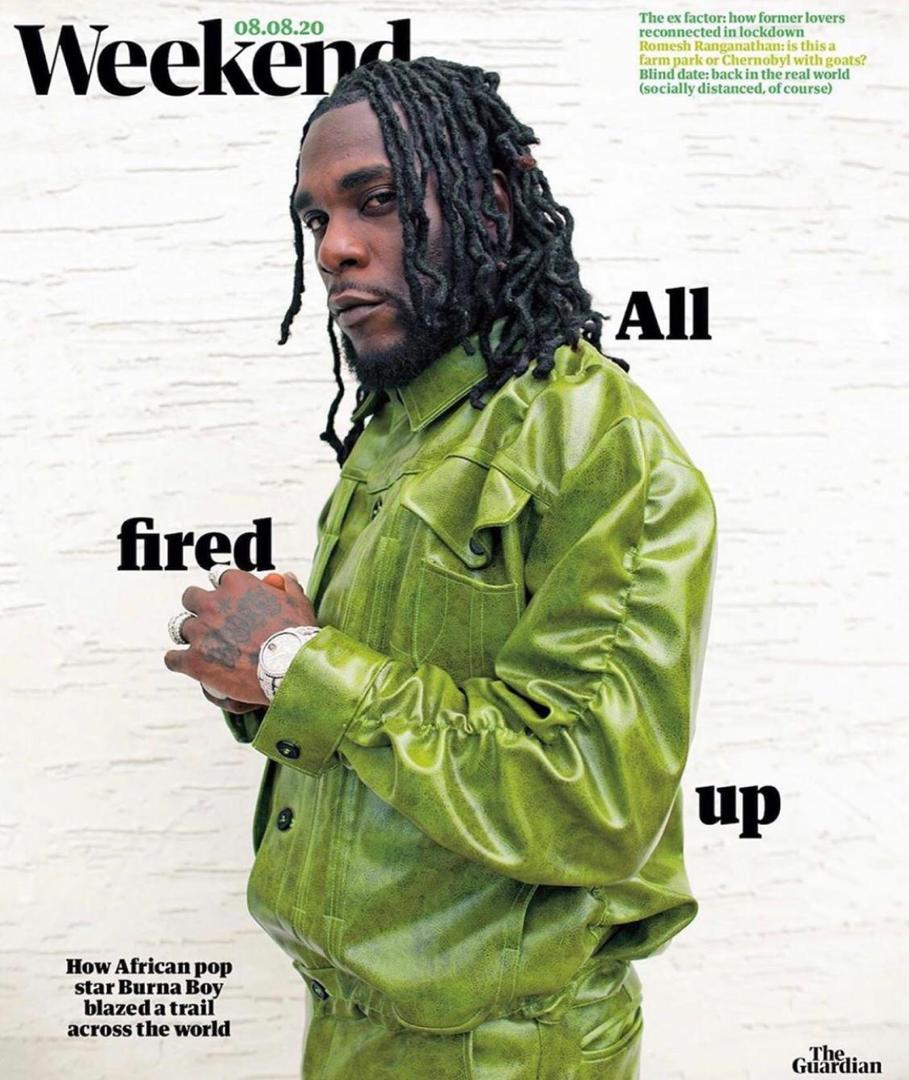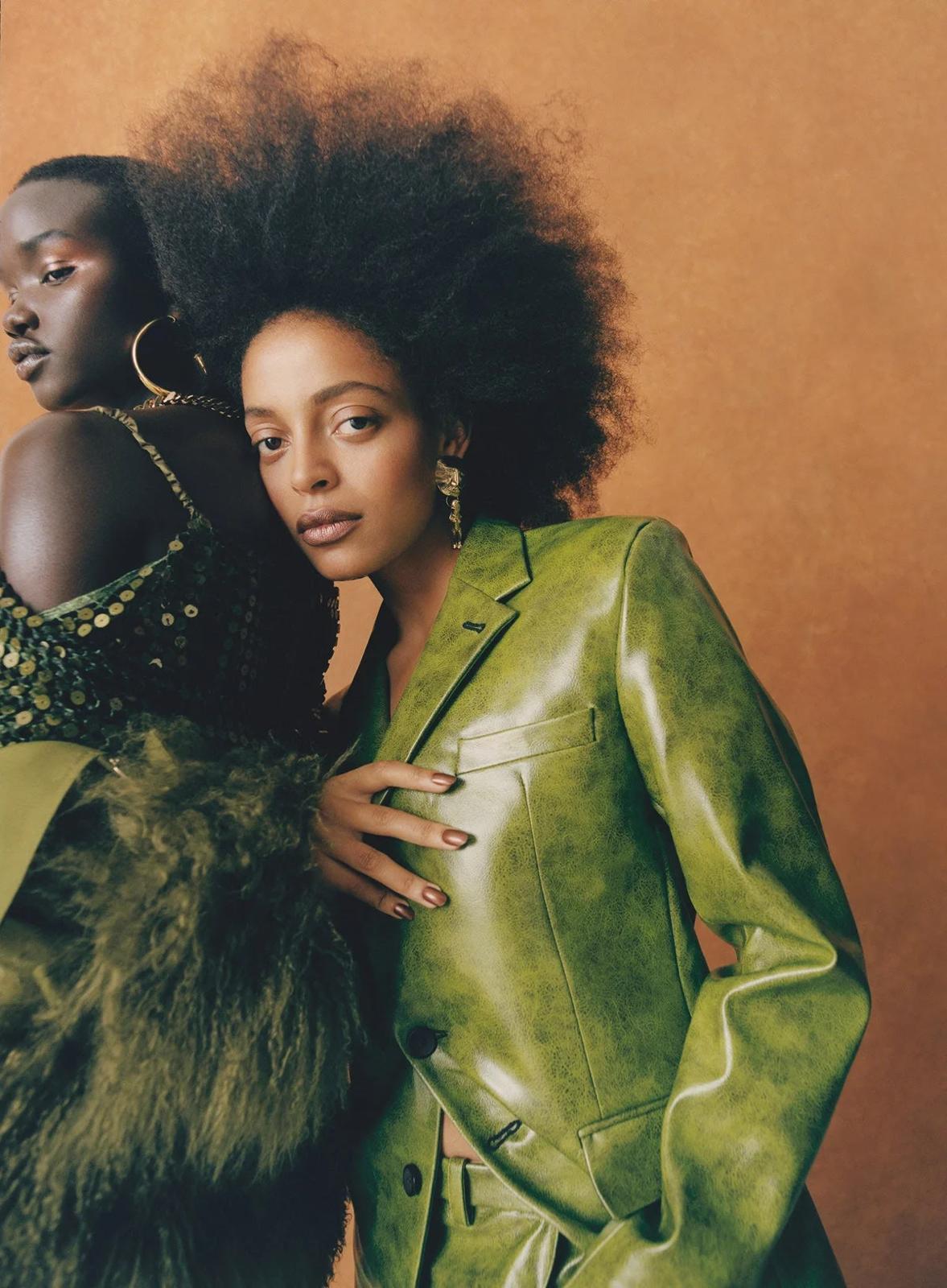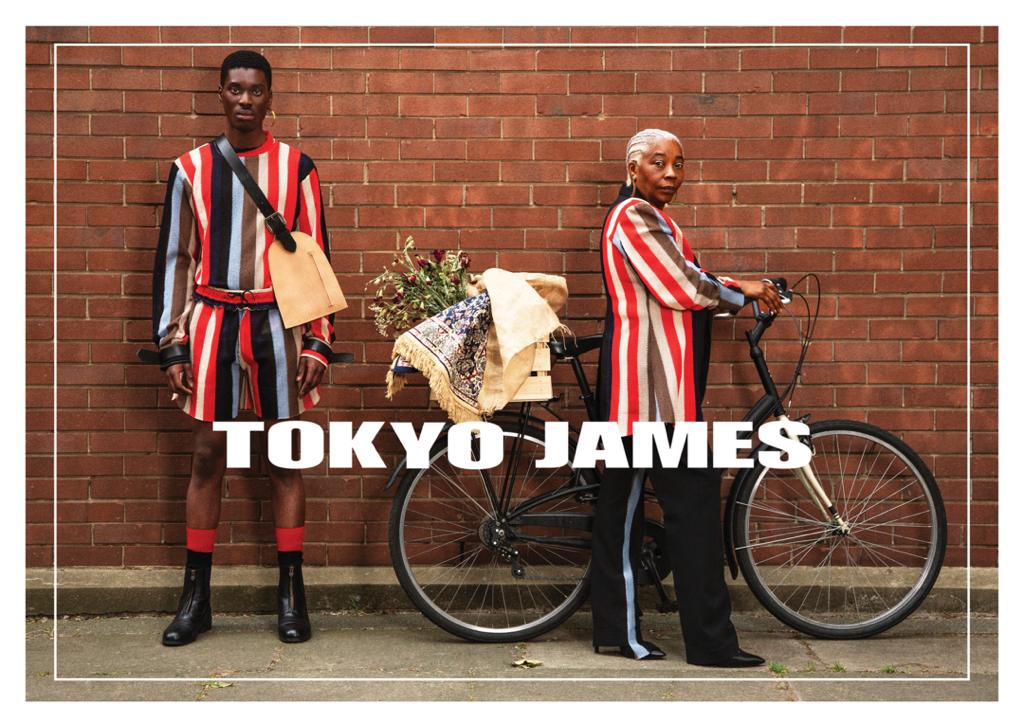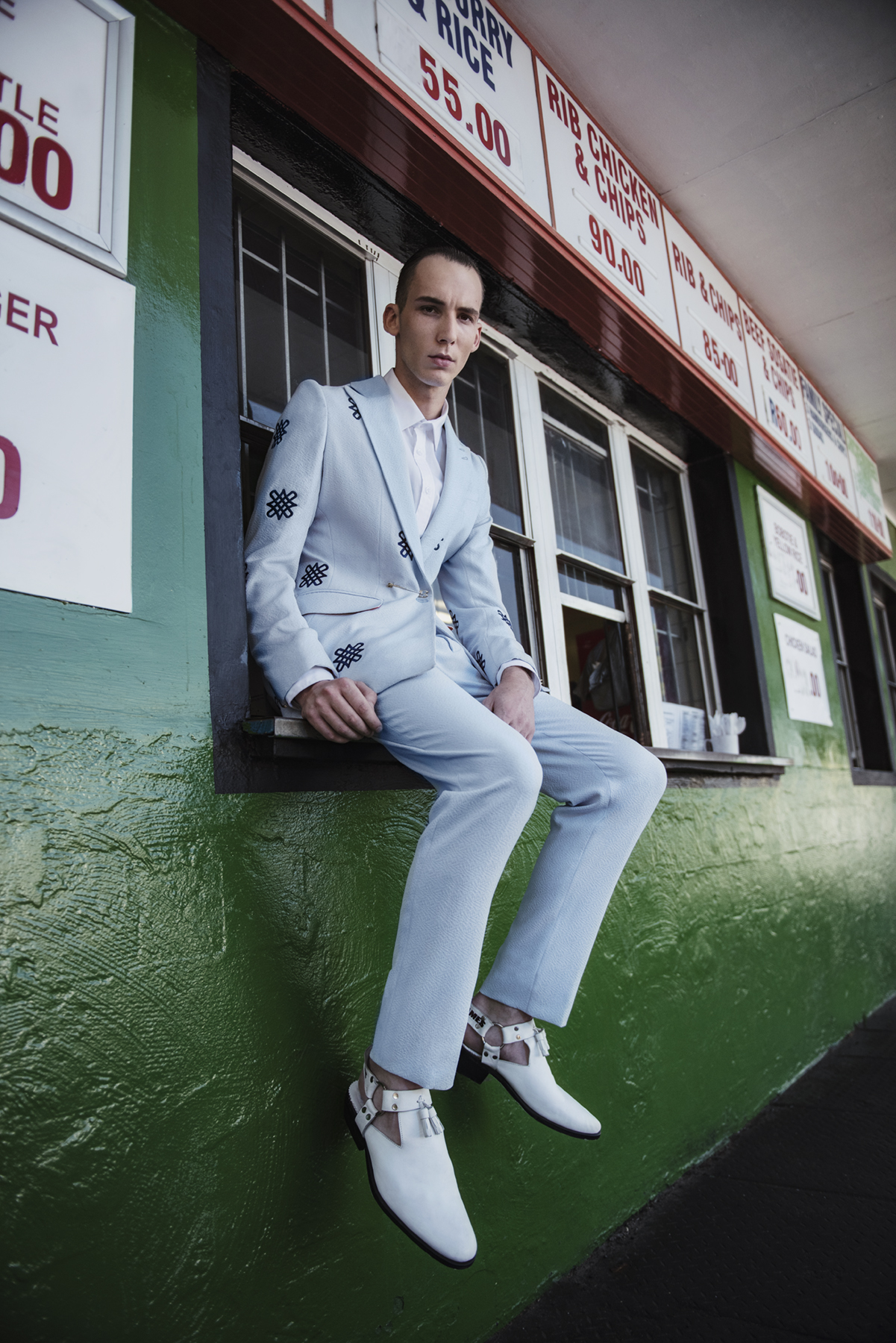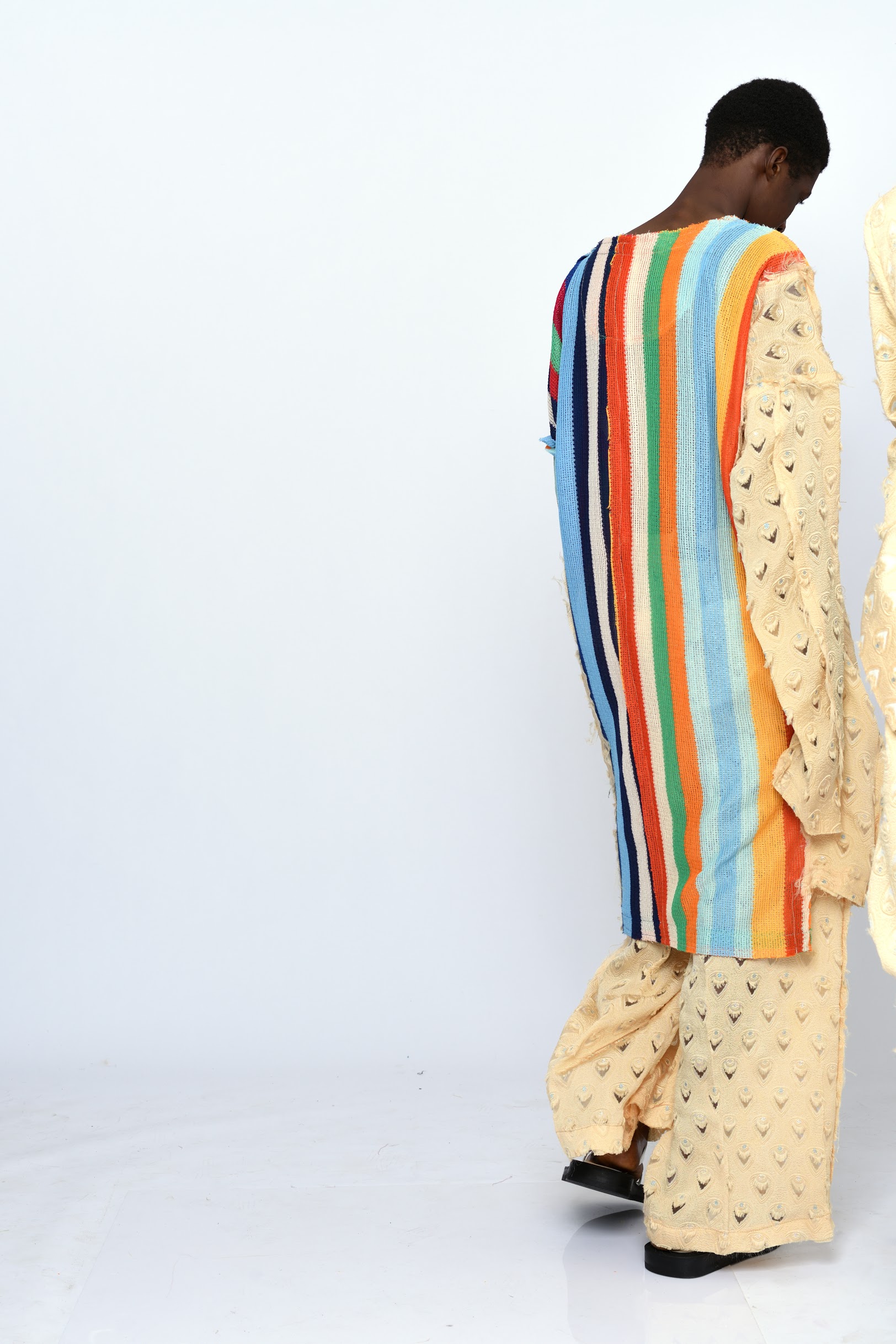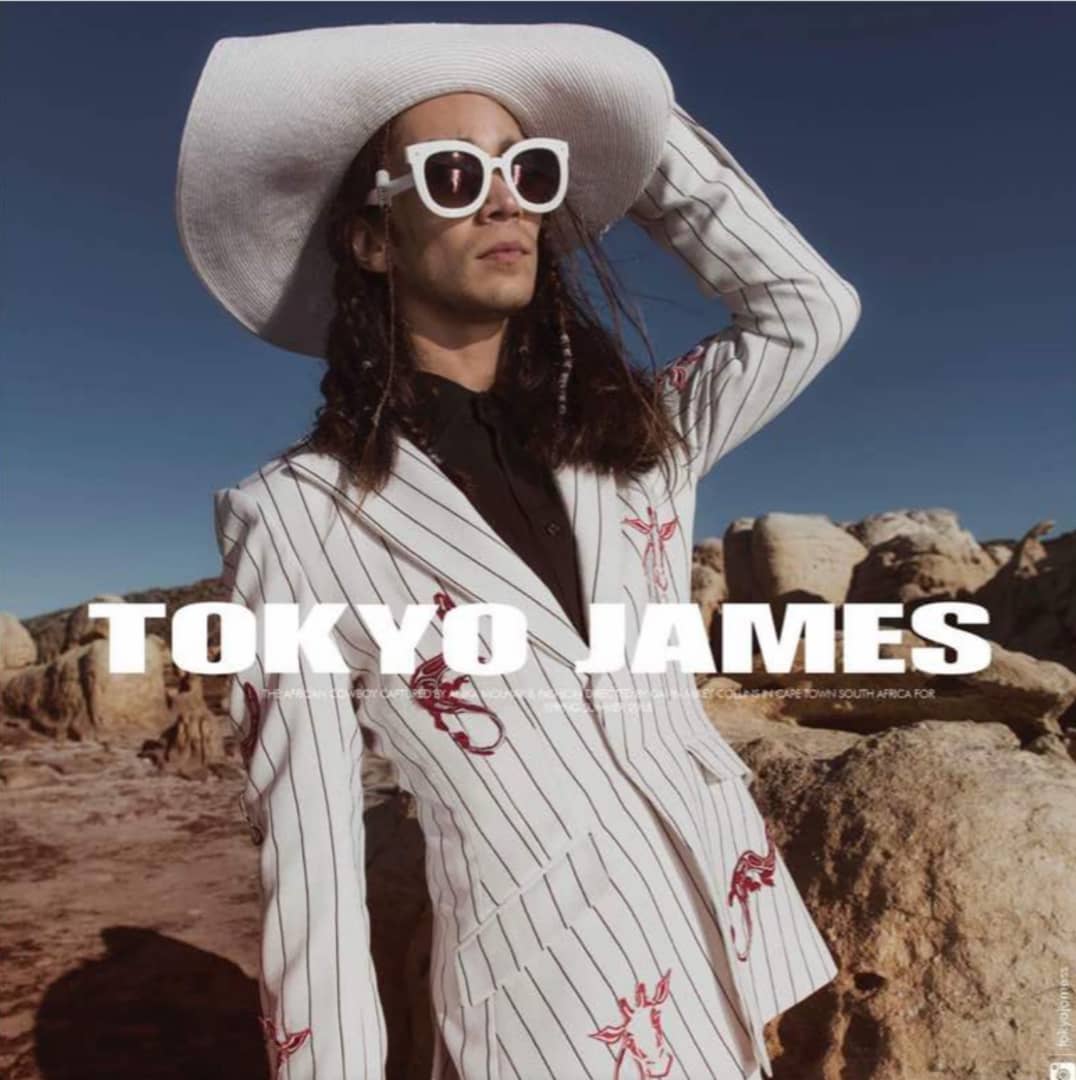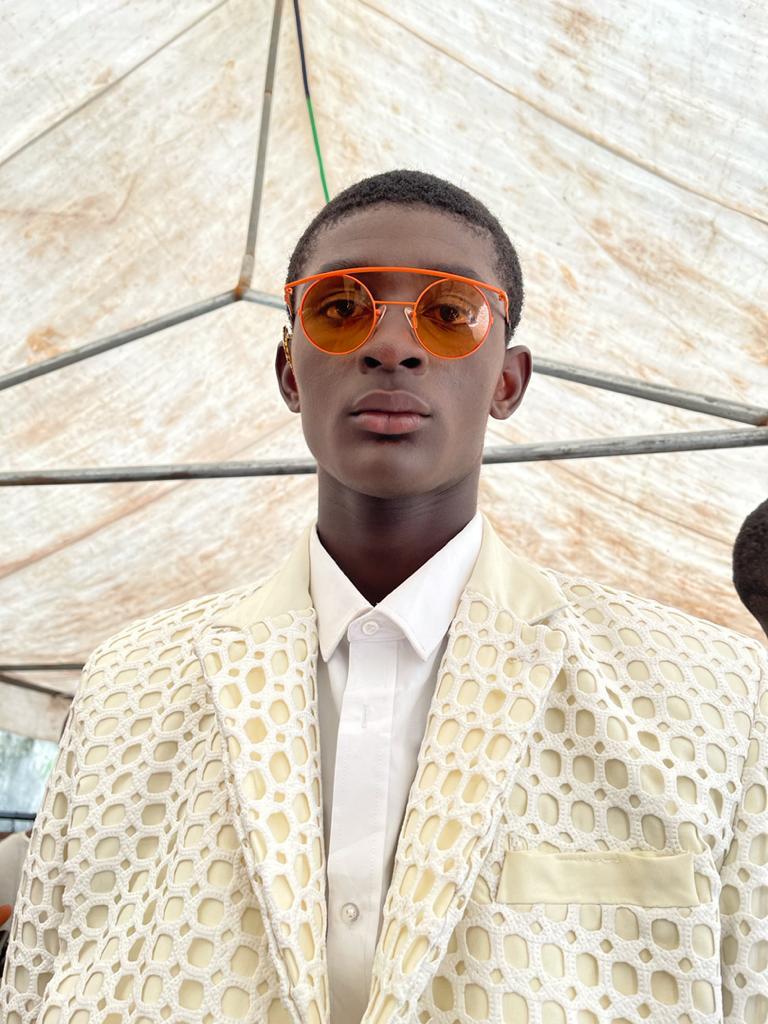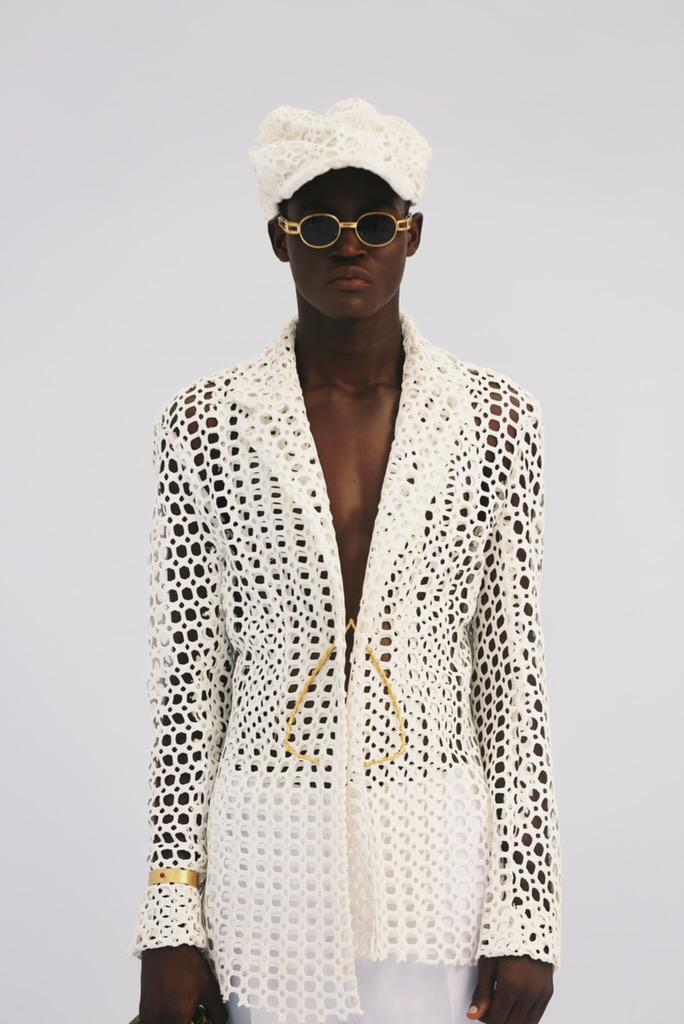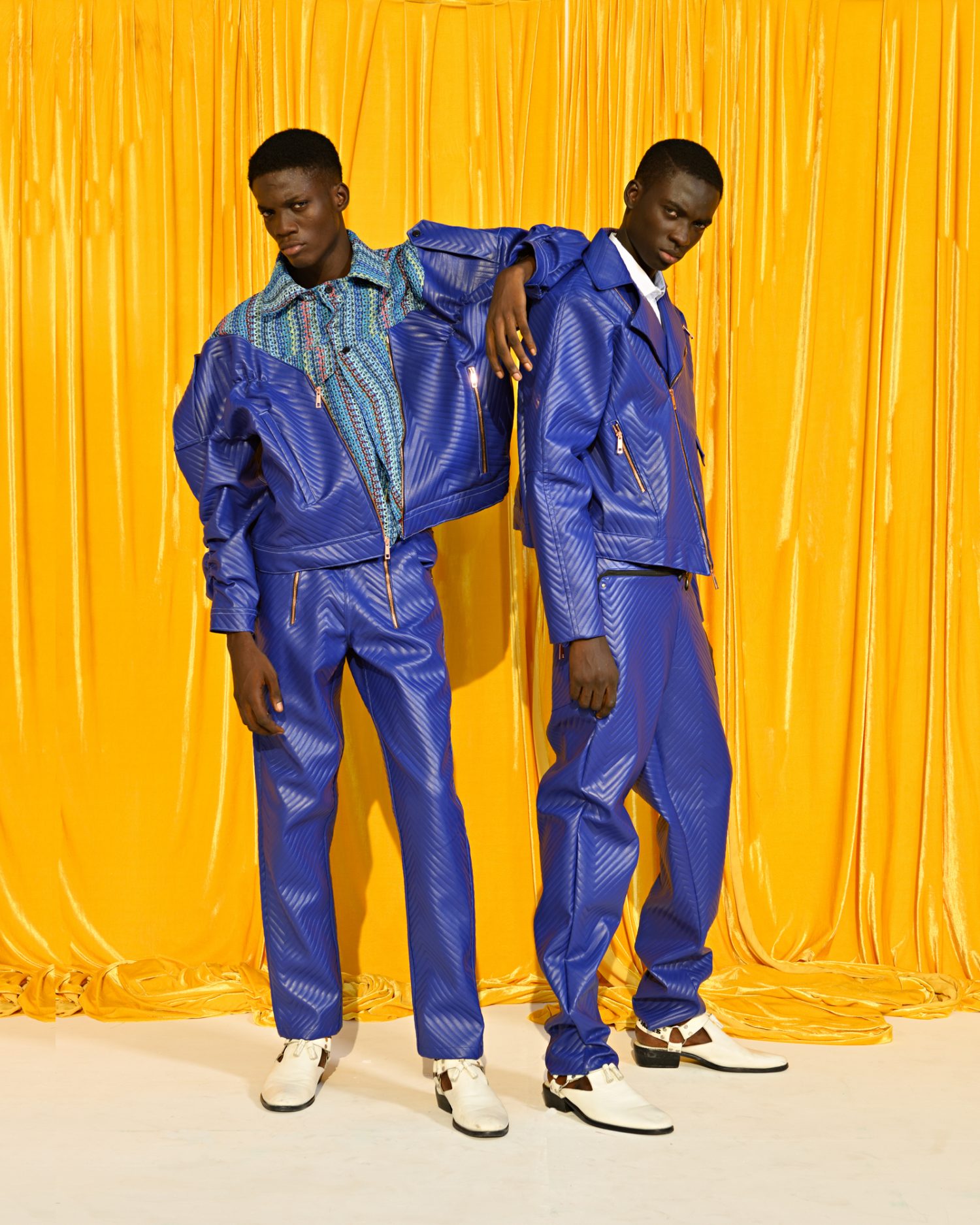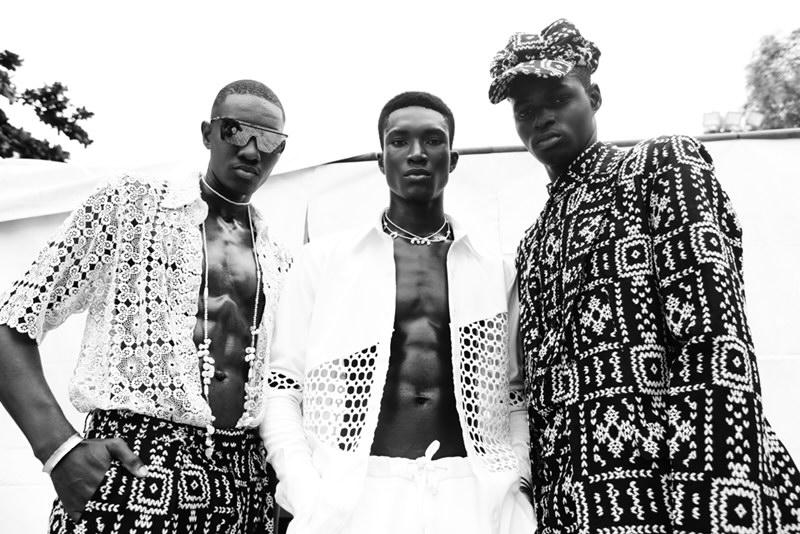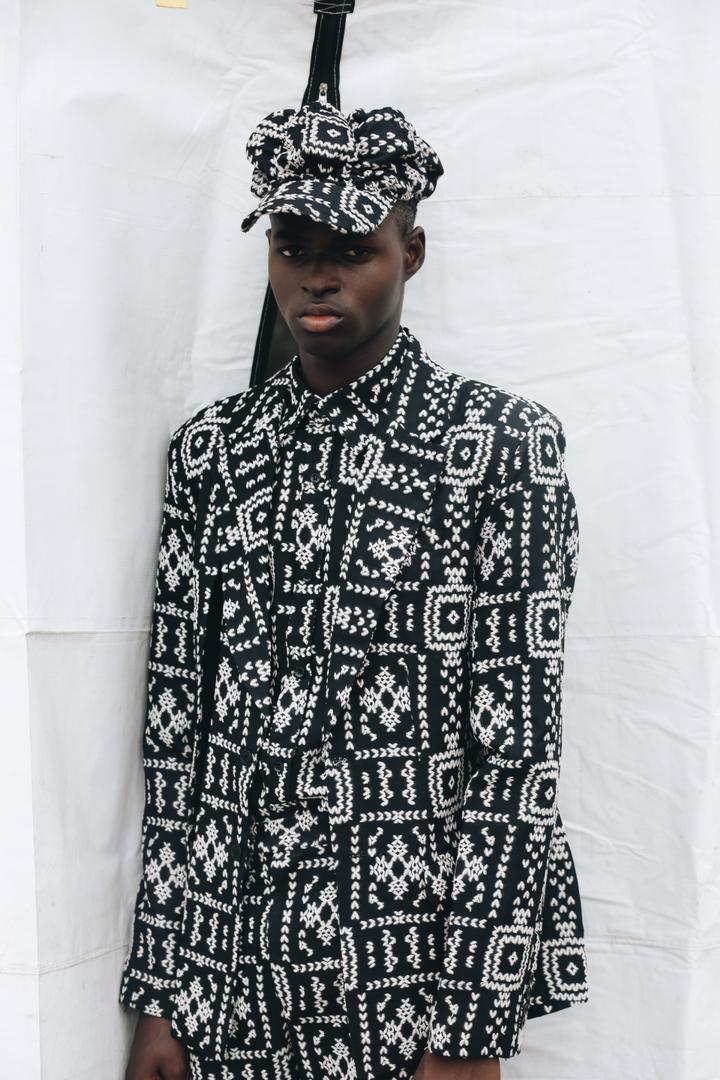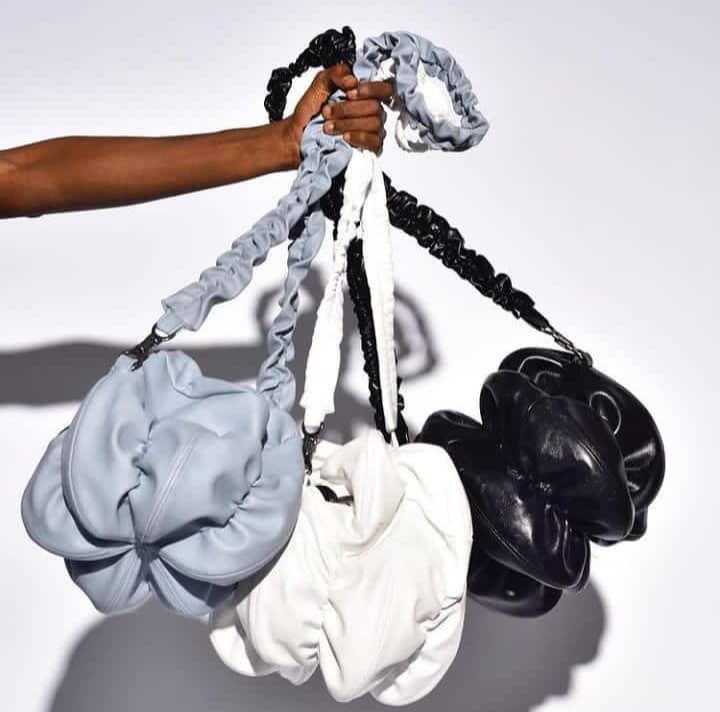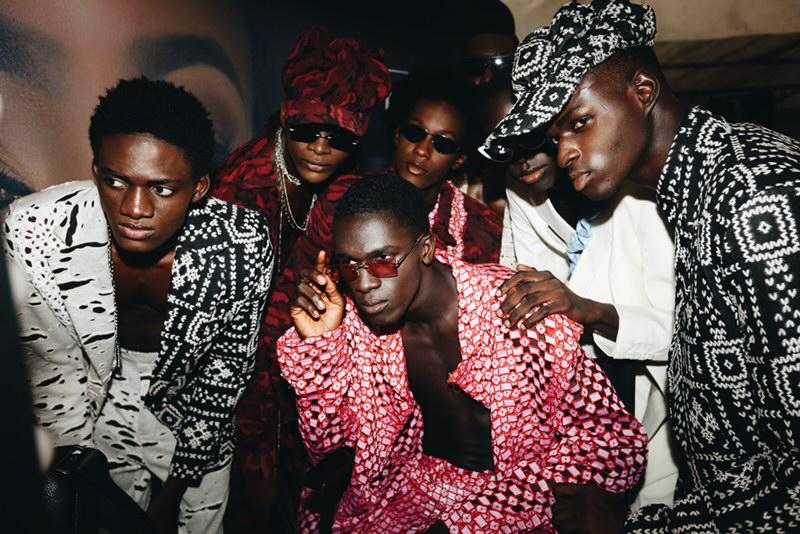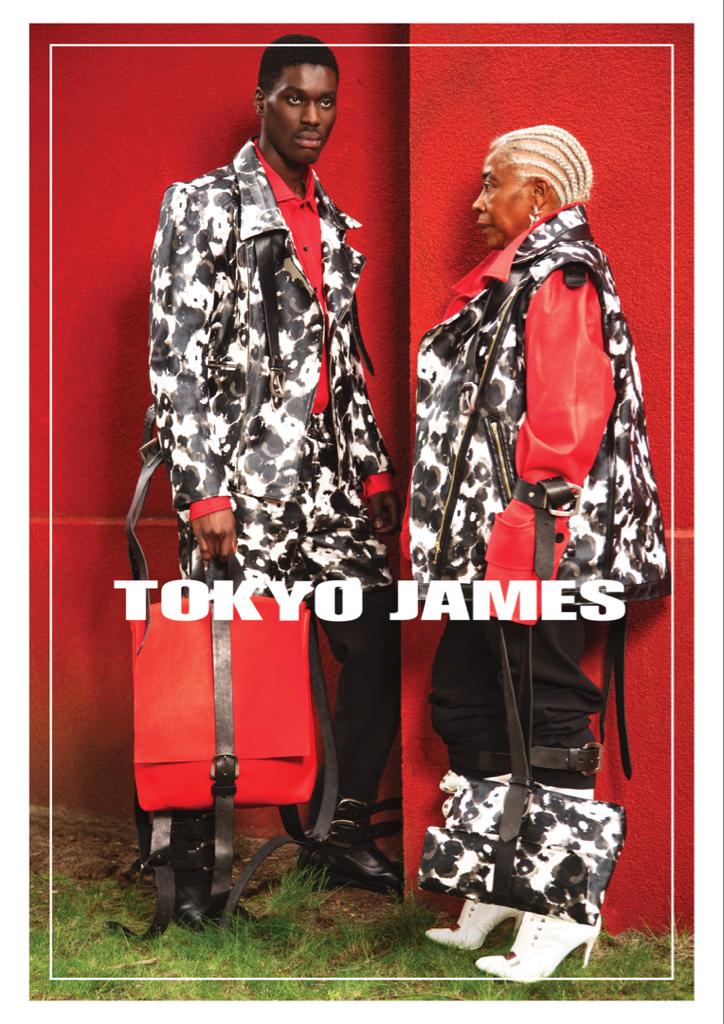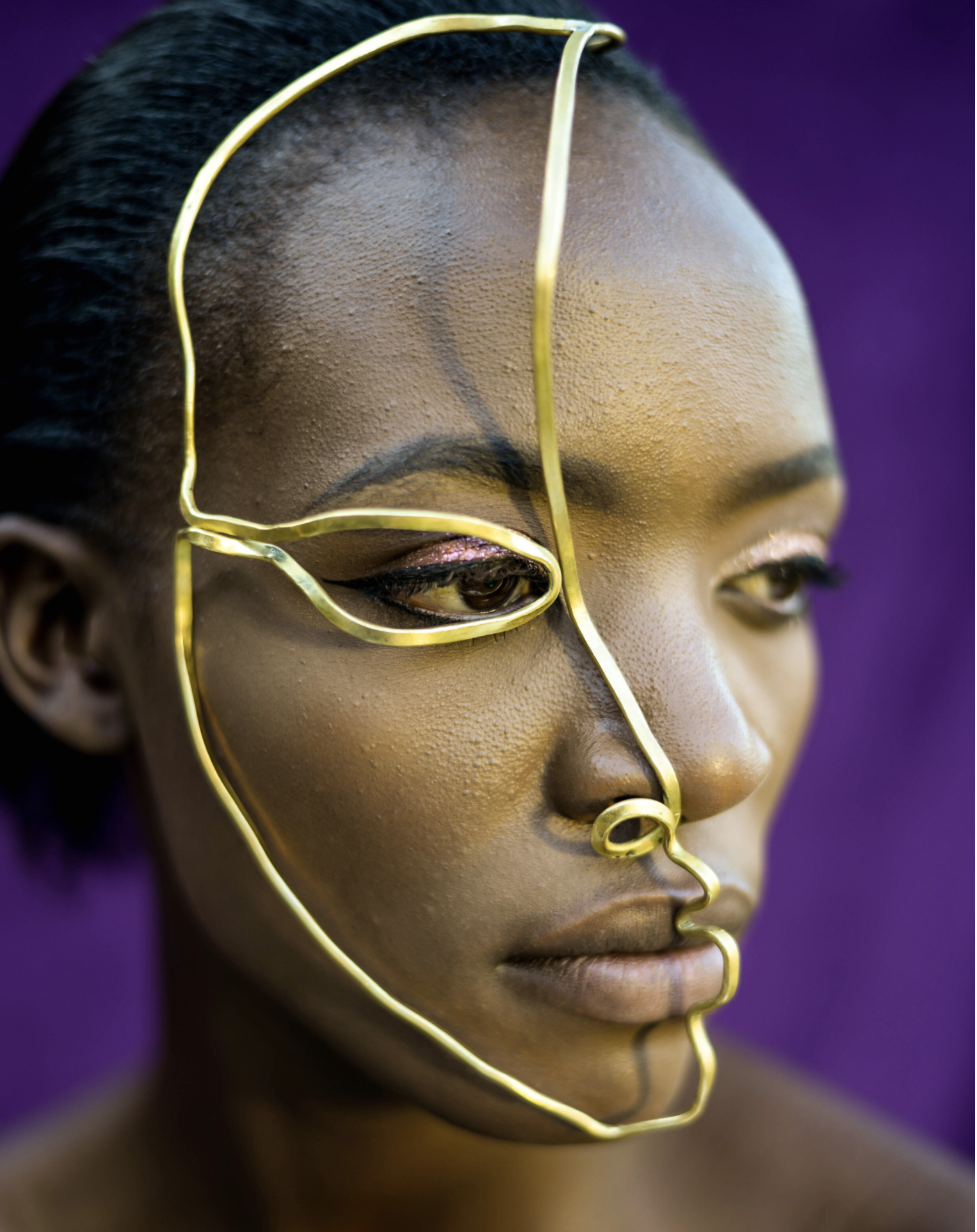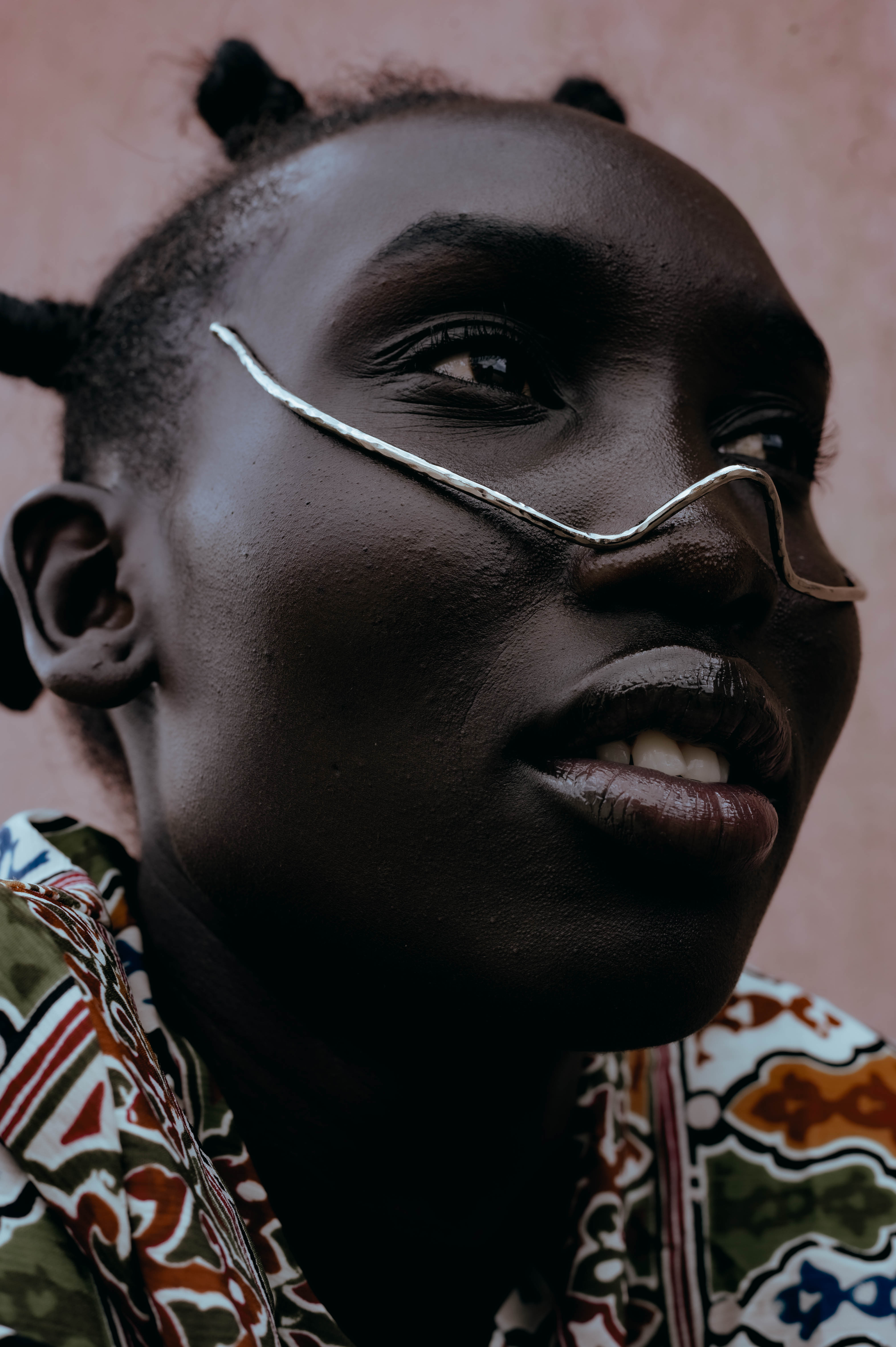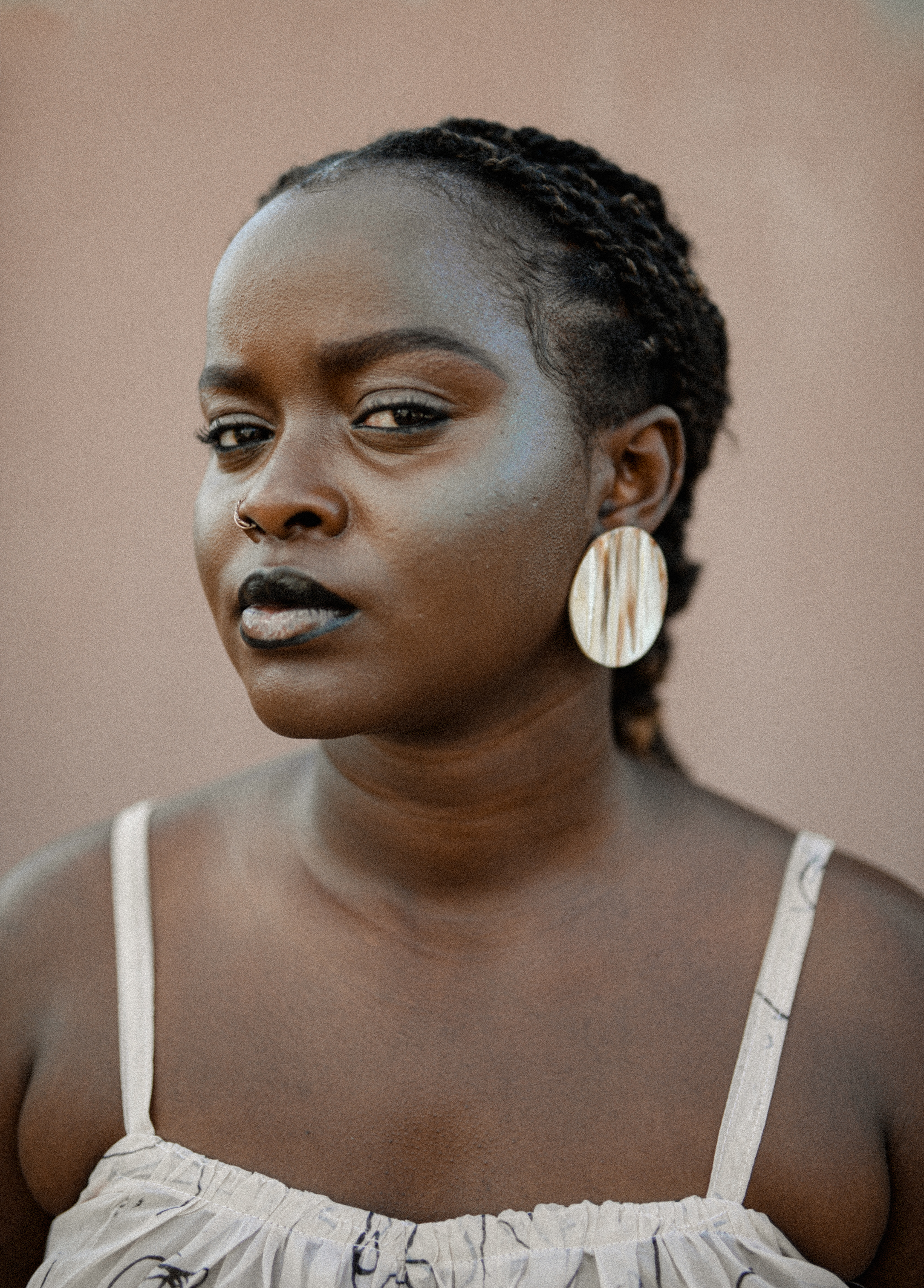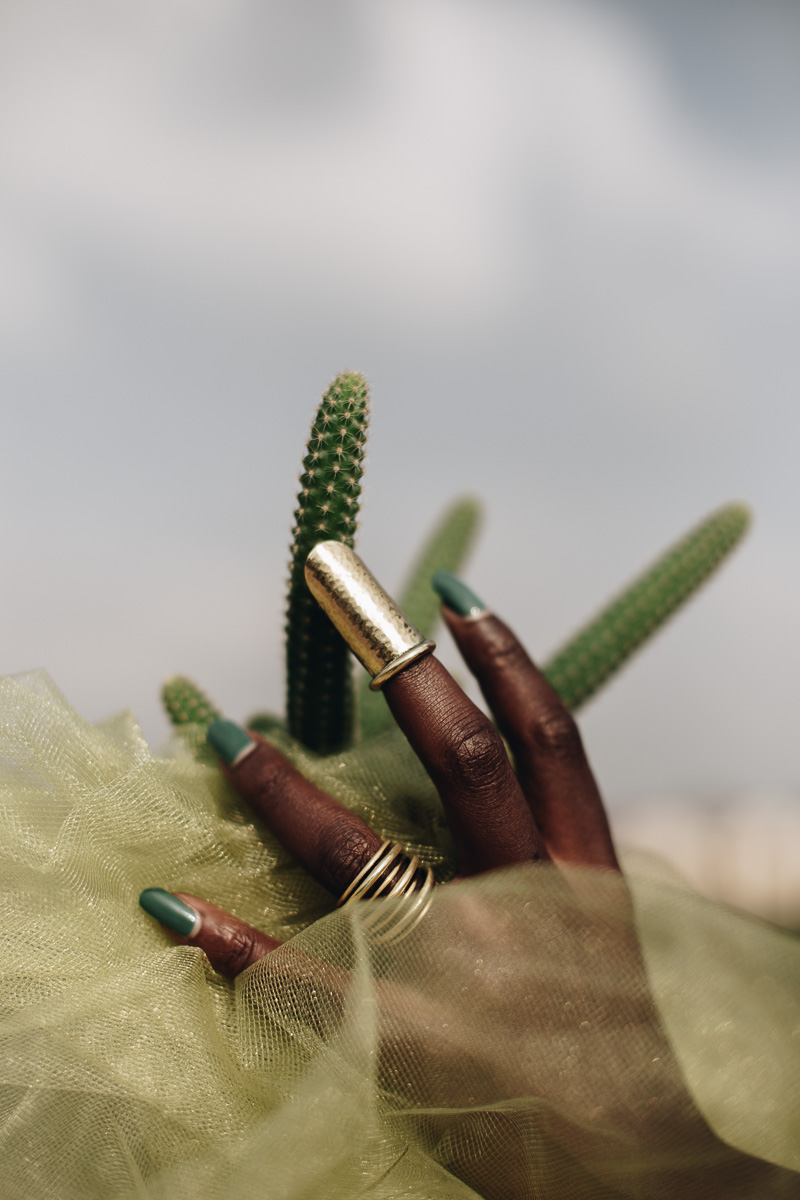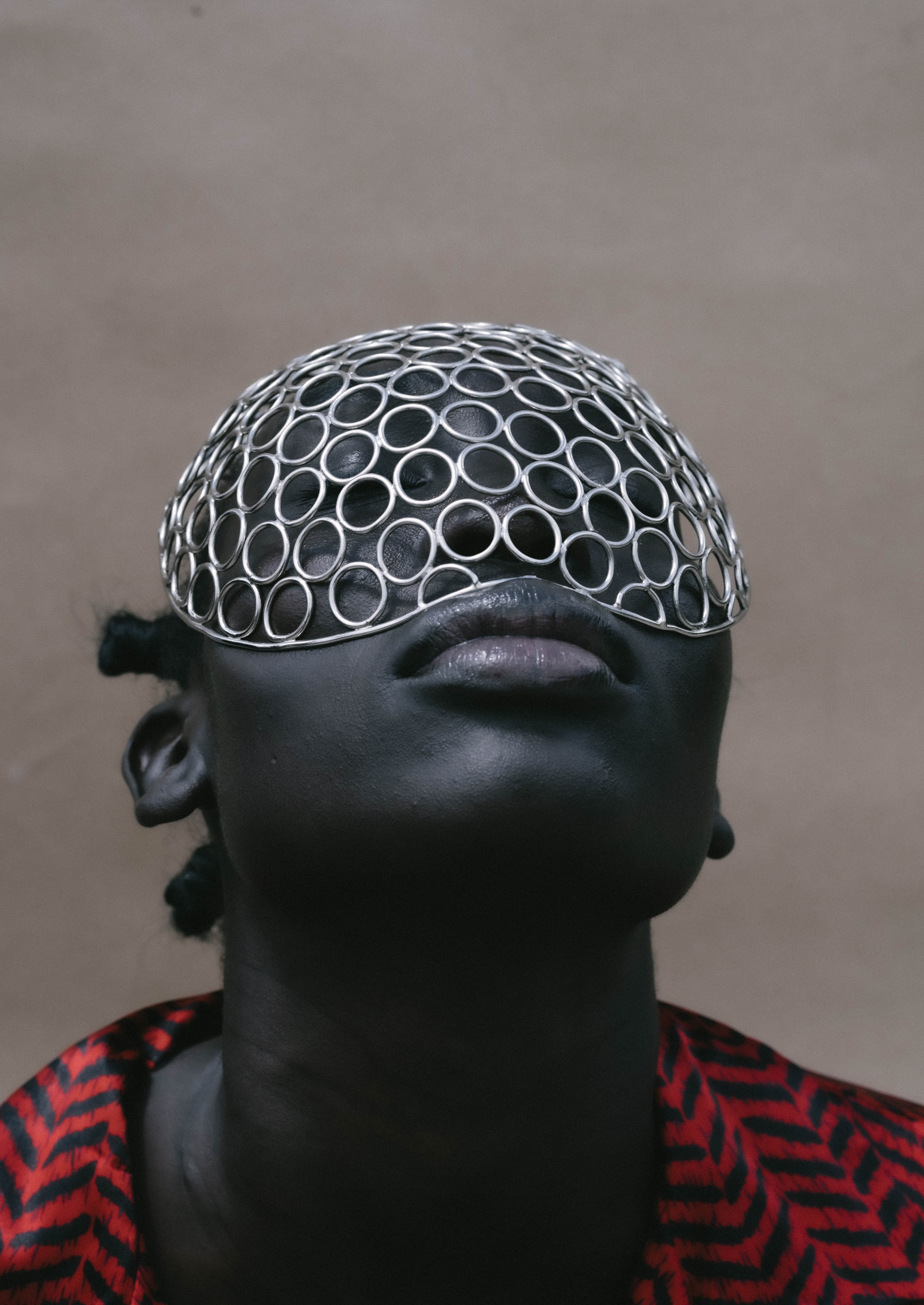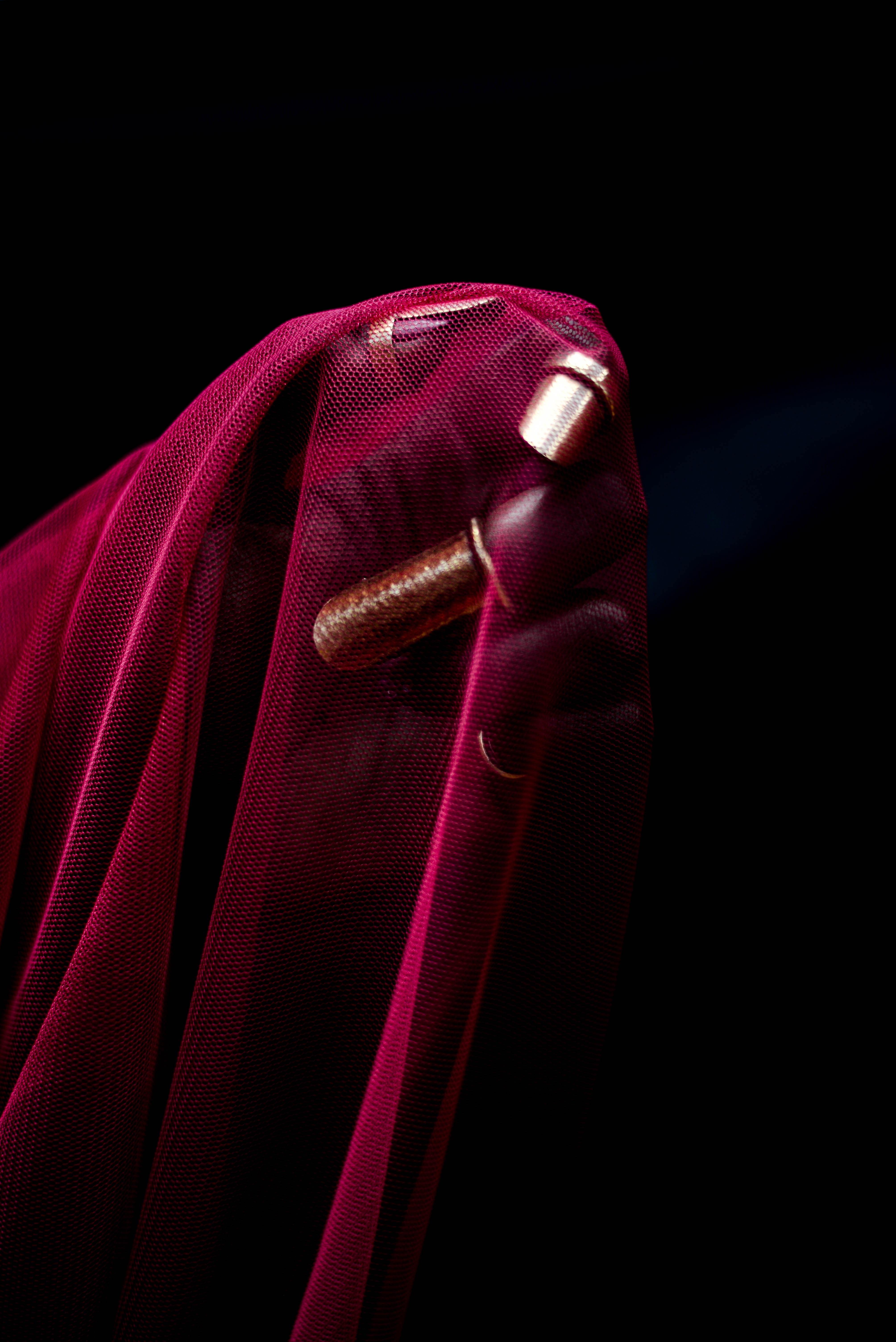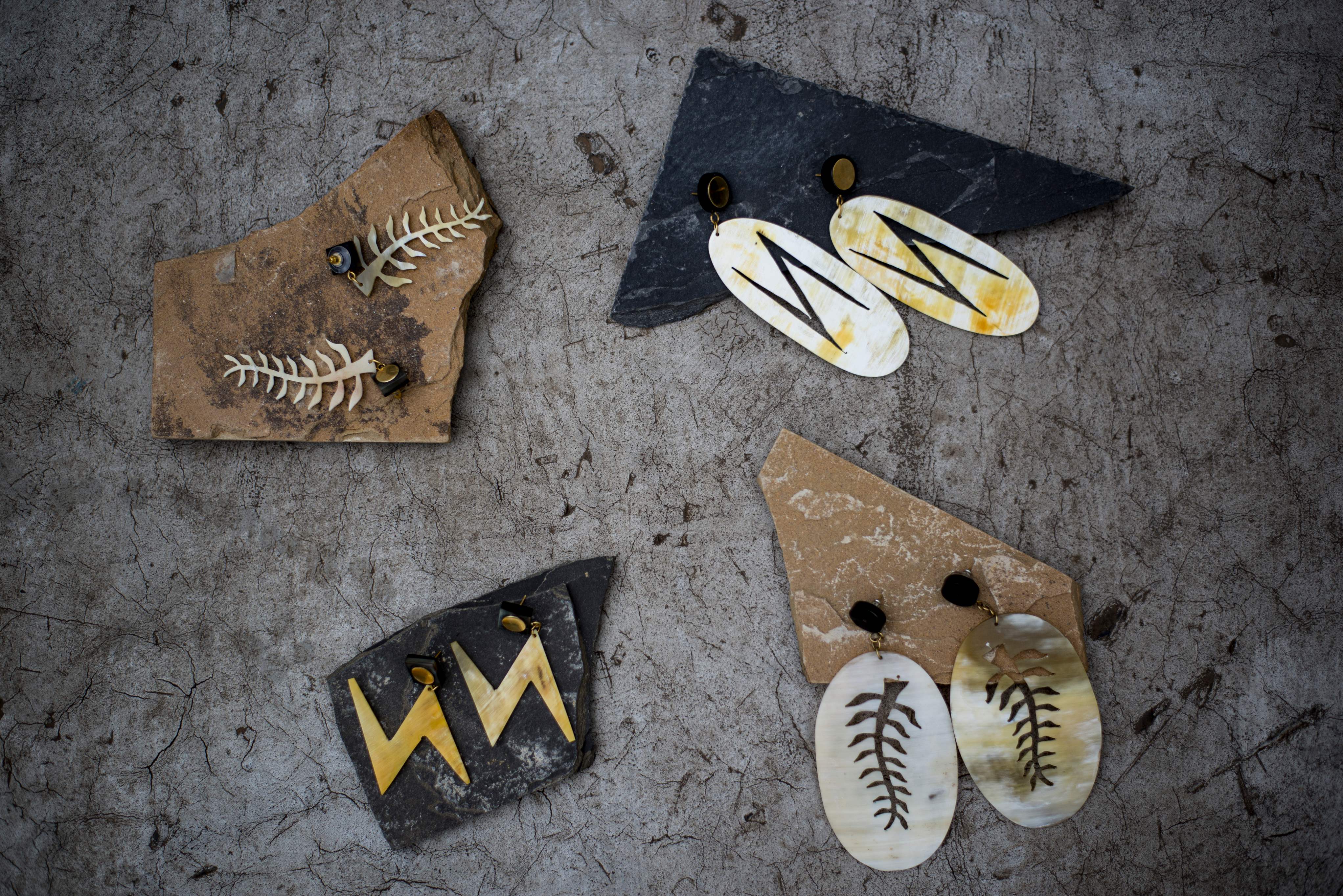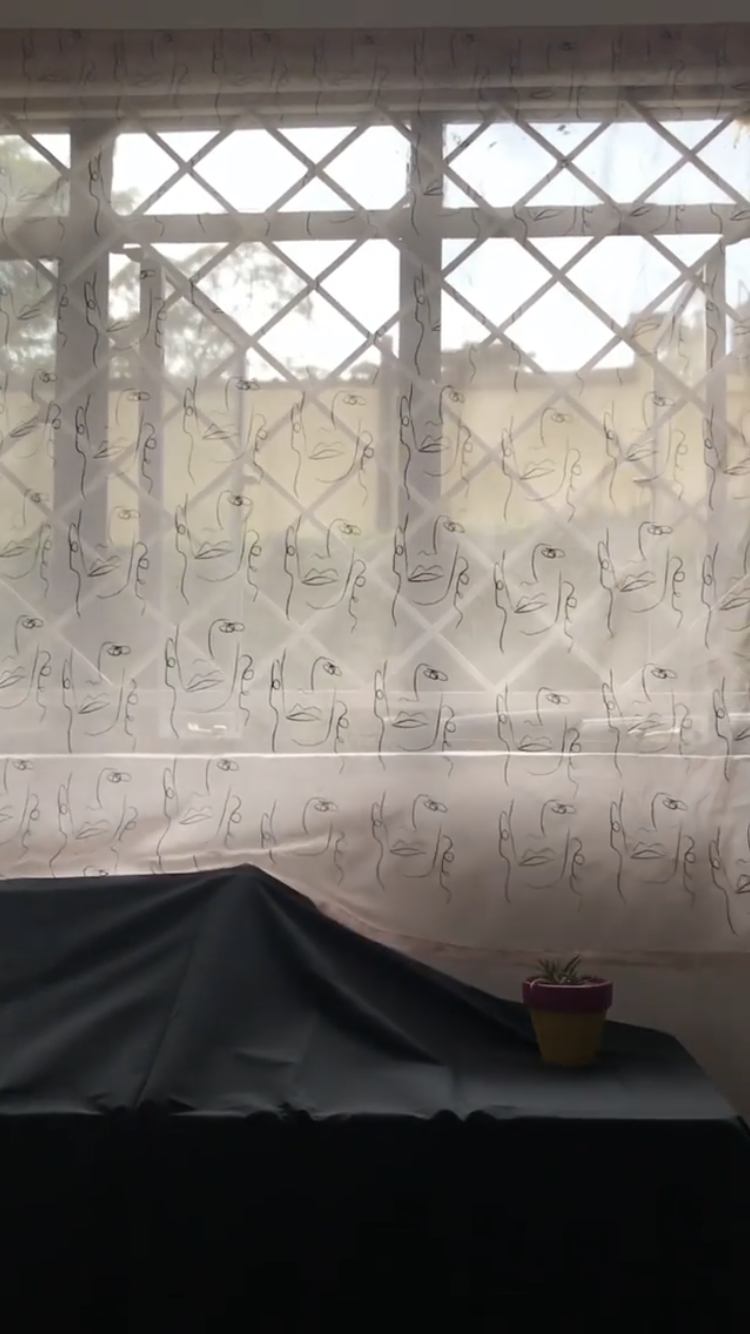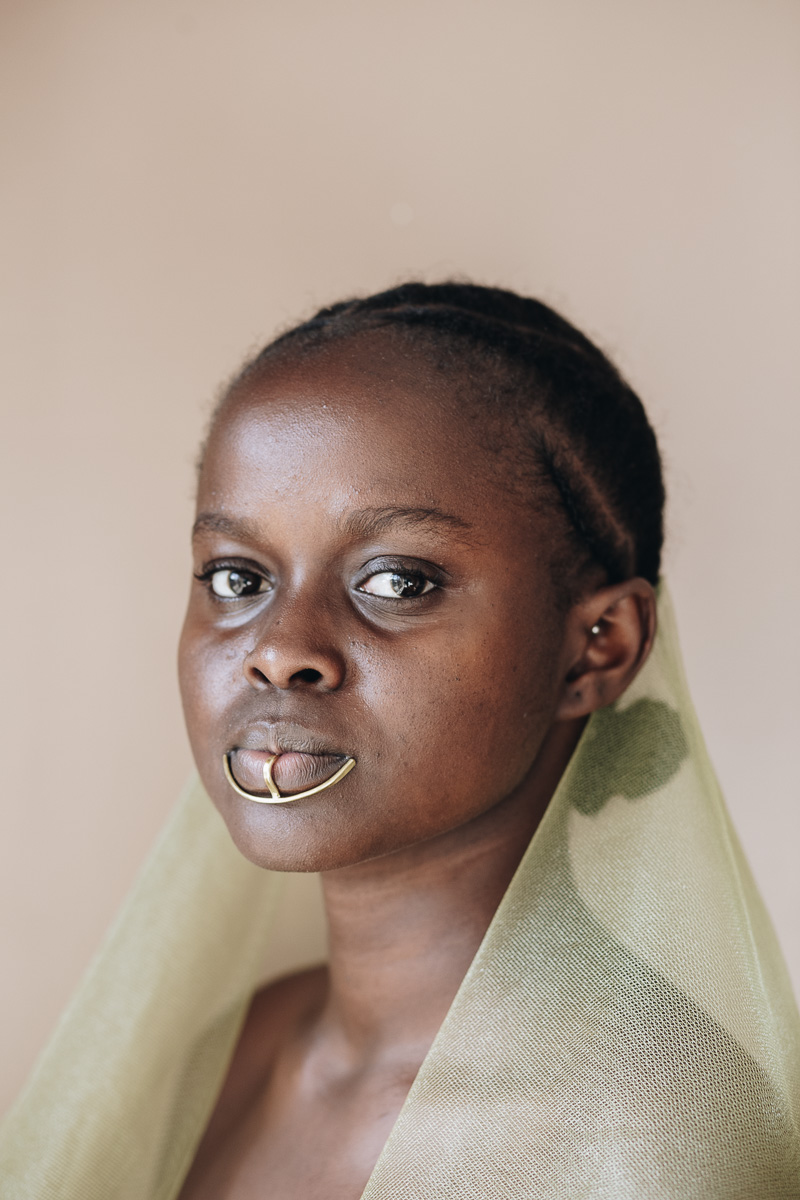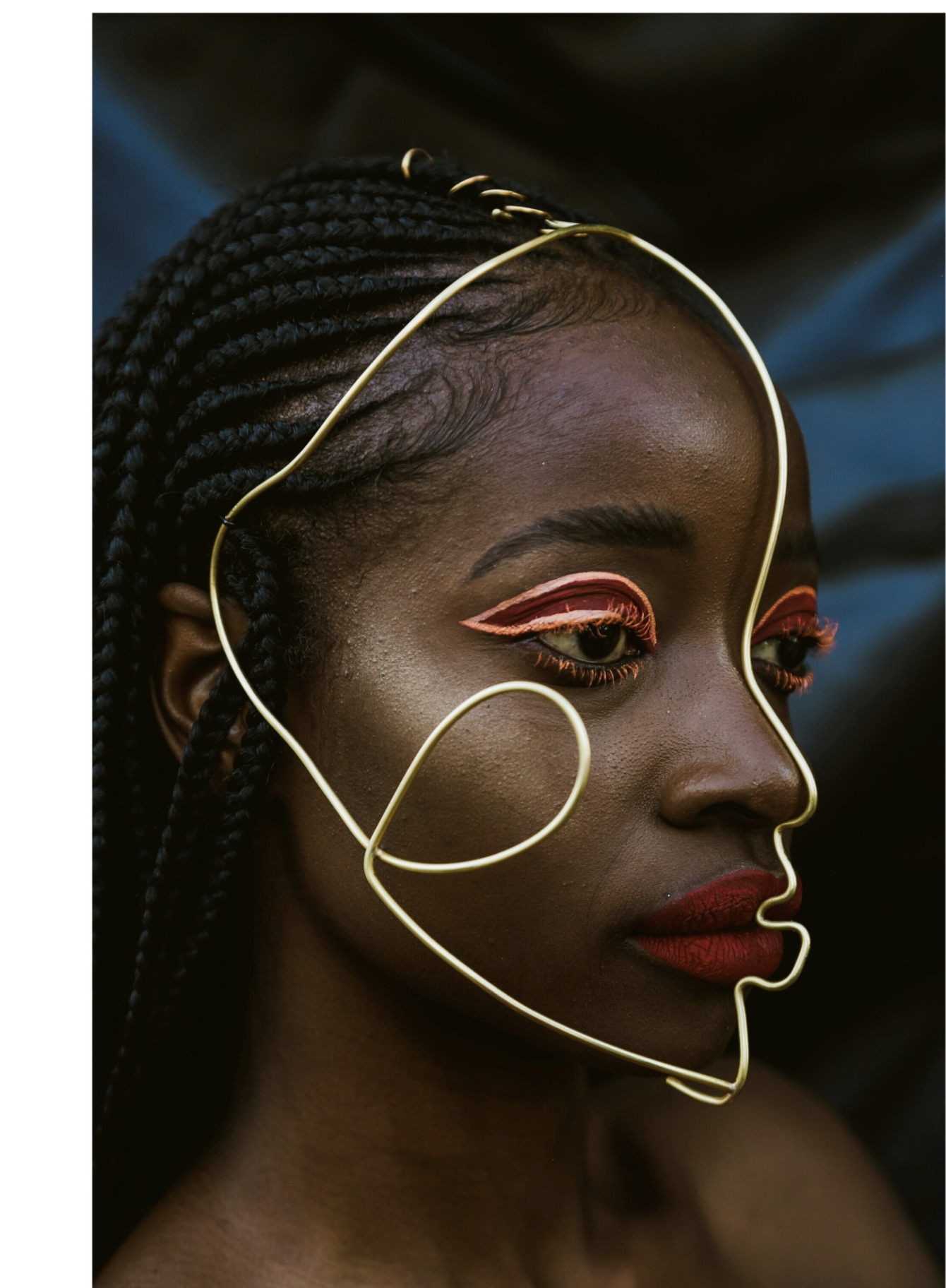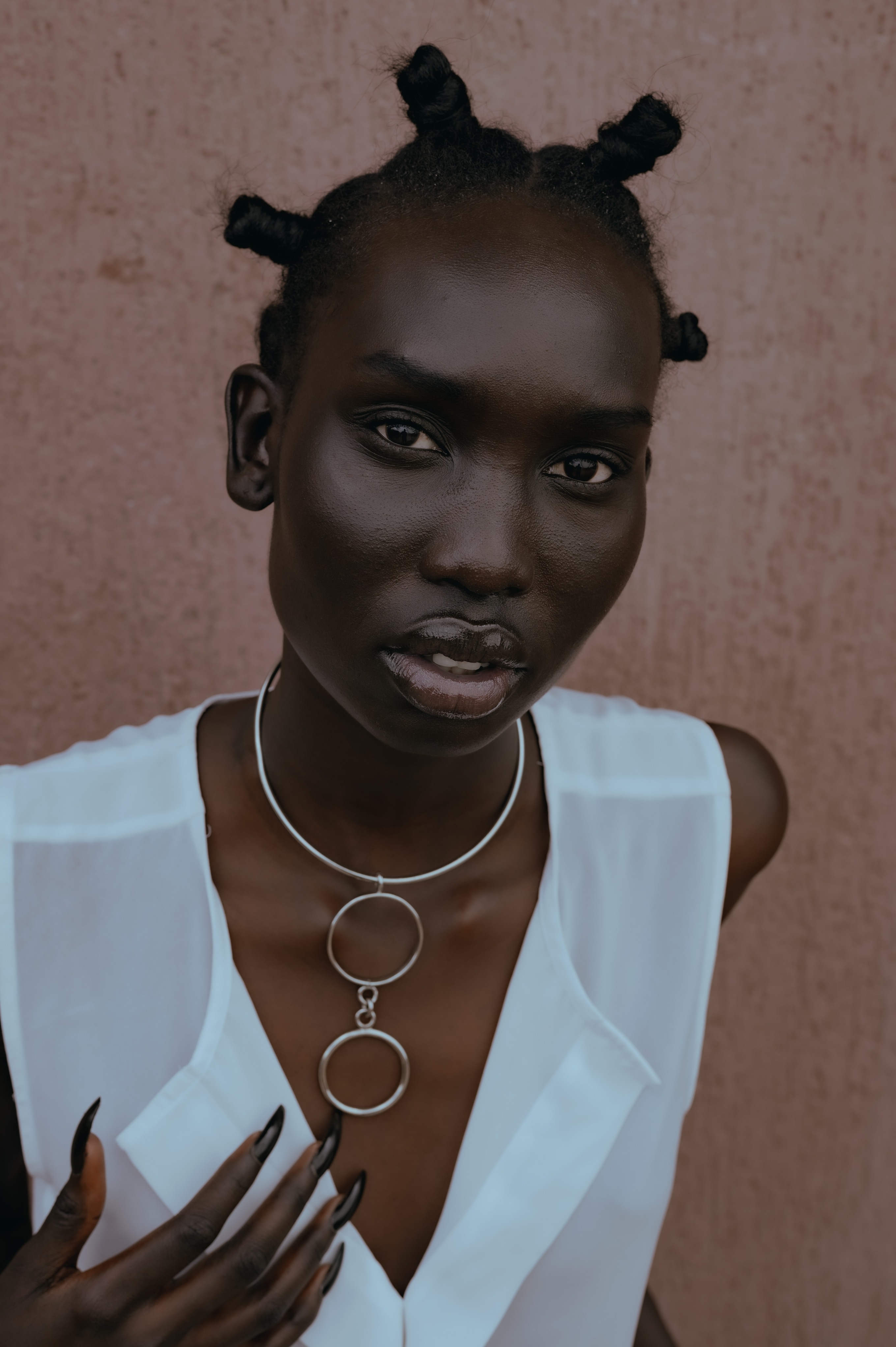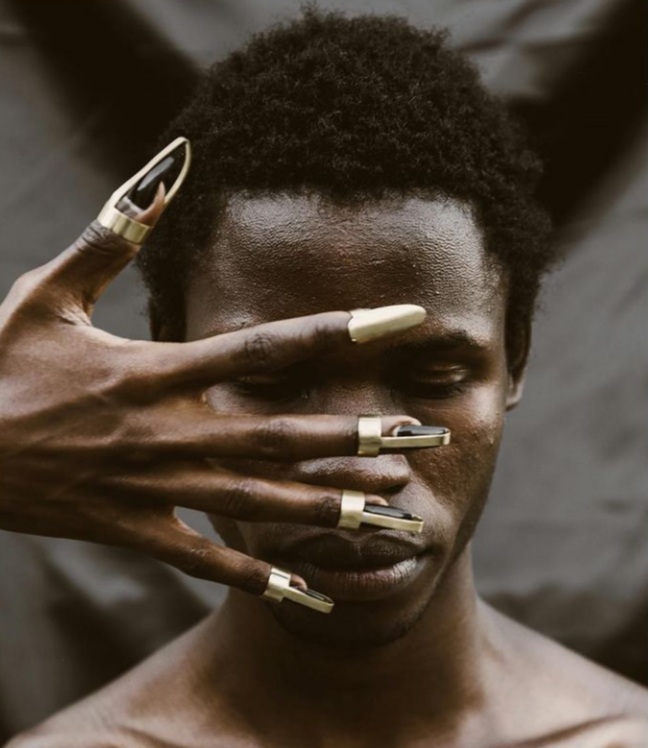.
“I was always very drawn to gemstones.” shares Noor Fares. Indeed, it is no surprise that the story begins and ends with gems in all their iterations, as over the course of sixteen years Fares has established her eponymous house as a distinct and thought-provoking voice in the contemporary jewellery landscape. Famed for its haute bohemian aesthetic, and collections that offer a window into worlds and loci of concerns rooted far beyond the brand’s London base, the maison is also a reflection of Fares’ lifelong love of travel and exploration. “To me, jewellery is an extention of my identity and self” she adds. And thus, augmenting her thesis and in turn sharing it with others, has seen Fares mine memories and experiences, observe how people relate to jewellery both in the past and present and incorporate a rigorous approach to research. Criss-crossing the globe has been inevitable in her quest to garner a better understanding about the stories she wishes to tell. Furthermore, hers has been an egalitarian approach in regard to materialism with each jewel using both precious and semi-precious stones in a considered acknowledgment of the beauty found in both. “It’s crazy because the stones come from the earth looking like that” she notes. However, the gemstones she uses and the jewels she creates with them act as more than a tool for adornment. They are in fact an aide memoire, a portal to the wearer’s personality, a sartorial marker and a conduit into sacred healing spaces, both in one’s interior and one’s daily life.
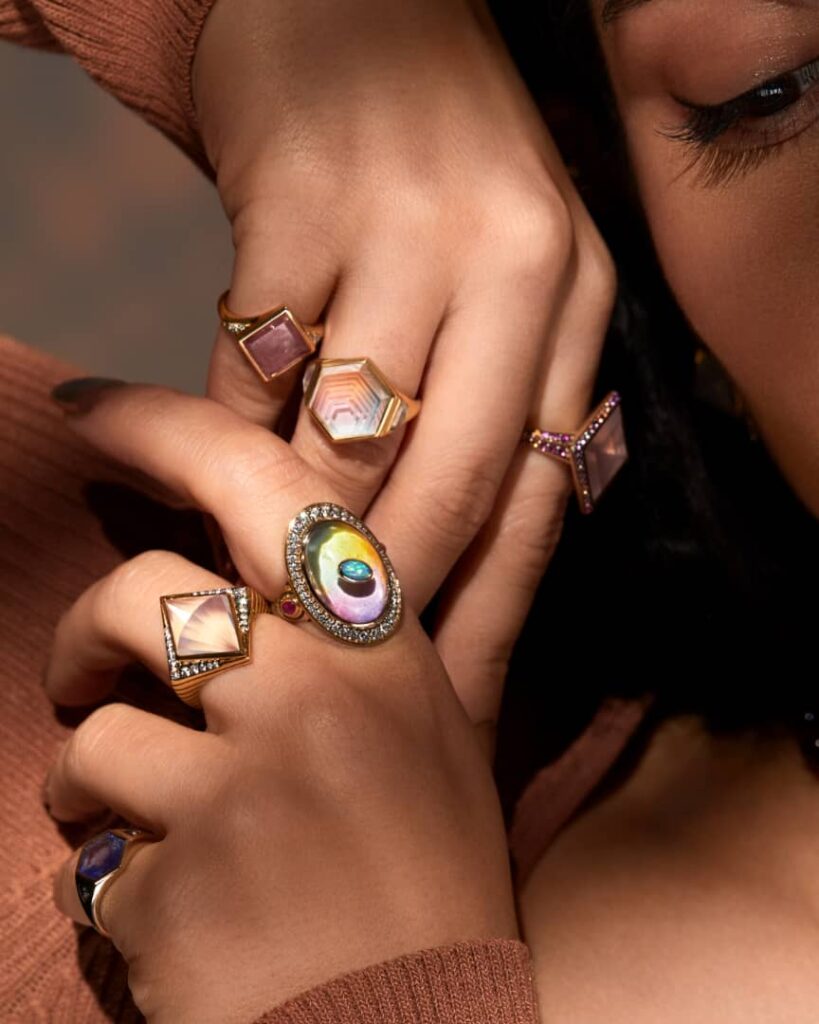
Selection of Rings from the Khanda Collection. Image Courtesy of Noor Fares
Born into style, raised with curiosity
Formative years provide many clues for life’s potential overall trajectory and with Fares it is no different. Born in Paris to Lebanese parents she notes “I was surrounded by very creative women who were chic and eccentric and wore really amazing jewellery. My mother was very creative and my aunt was a fashion designer and I used to spend hours making rings and bracelets with them.” Fares shares an early photograph of herself aged not much older than four layering her mother’s pearl and coral necklaces. It is a memory she remembers clearly, “I used to be so fascinated by her jewels, I felt I was going into some sort of treasure chest and discovering all of these things.” A similarly playful irreverence is present in her maison, where models both in campaign imagery and Fares herself will often layer pieces together; with the layered juxtaposition taking on many forms. From a saturation of one particular stone to a play of contrasts with different textures, gemstones or colour and proportions treated as the norm rather than exception. However, classicism was not entirely absent or in the pieces she now creates being informed by such. “My grandmother was quite old-school, loved jewellery and wore several rings on her fingers” she fondly remembers.

Noor Fares wears Tribal Crystal Necklace and Moonrise Diamond Pendant and a selection of earrings. Image courtesy of Noor Fares
Beyond her lineage of women with strong sartorial sensibilities Fares’ jewels have always been rooted in extensive research. The resulting collections are simultaneously imbued with a historical and contemporary feel. She readily admits that “when researching themes for my collections I reference artefacts and artworks in a similar way as if I had to write an essay.” In Fares’ design universe, jewels are expositions of theses all of their own. Her first collection, Touche De Bois “was inspired by materials in this instance wood which I was drawn to very much but even more so due to the symbolism behind it. In Middle Eastern cultural tradition and superstitions, we knock on wood for good luck, but it is actually a worldwide tradition as it is present in many different cultures.” The pieces themselves are both a comment on naturalism with the statement cuffs set with diamonds offering an alternative to admiring the grain in the wood alone, and the geometric diamond set pattern itself; alluding to the human touch and agency required in creating magical pieces – or indeed luck. Fares’ first collection was stocked in Browns and Dover Street Market, an unprecedented feat for a new designer, but this did not deter her deepening her knowledge in a more formalized capacity. Already a holder of a BA in History of Art from Tufts University she shares “I was so interested in gemstones [that] I went to the GIA and studied gemology and because I was curious about design, I took a design course.” Indeed, her MA in Jewellery Design from Central Saint Martins played a pivotal role in Fares’ evolution as a jeweler. She recalls one of her tutors declaring to the students. ‘If you want to be a jewellery designer you need to understand not just what’s in your imagination but in reality, who are the people you are designing for?’ It is a sentence that moving forward, underpinned how Fares worked. Distilling her observations of women going about their business, seasoning them with her findings in her travels and aiming for her clients to not only be bejeweled but also extraordinary.
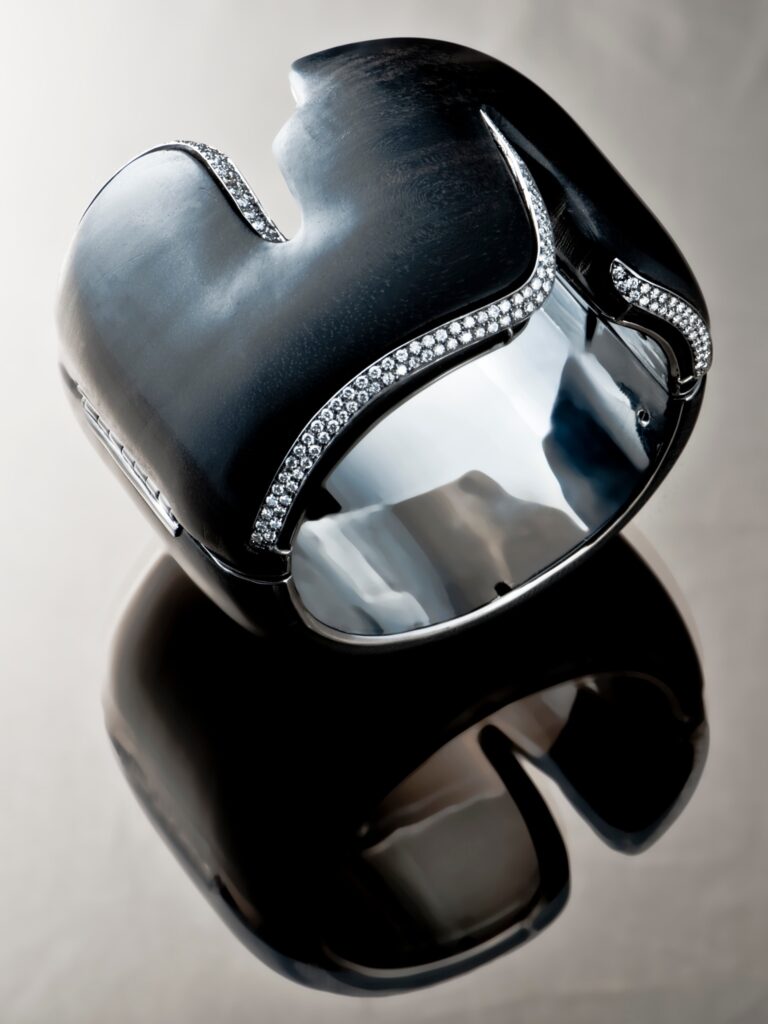
Touche De Bois Cuff in Ebony and Diamonds. Image courtesy of Noor Fares
Travel, homage and respectful interpretations
Who or what is the muse? What are the questions that are answered by your work? What is inspires you? Fares gamely laughs as we jest about the jewellery bingo questions asked of designers. However, looking at her body of work it becomes clear that travel, cultural and spiritual inflections abound in her collections. The Art Historian in her is never far away, with observations and correlations filed away in her memory bank for further review and expansion once she returns to her studio. Of travel, she relates “maybe sometimes I will pick a destination because I’m researching for a collection but also it sort of happens more organically. Sometimes I will get inspired because of a trip or often there are recurring themes that draw me to a specific place, and I will look for something specific; it can be spiritual places, pilgrimage sites, archeology and craftsmanship.” Fares gleans as much as she can both from the specificity of locations and the way visuals or themes she has seen might have correlations elsewhere. “A great source of inspiration has been visiting Queen Neferteri’s tomb and the Valley of the Queens, just seeing these murals and the way jewellery is worn, stacked and styled really and the symbols and stones that are used. There are a lot of parallels between Ancient Egypt and Ancient India from stones like lapis, carnelian and aventurine and their use because of the powerful properties they represent” she shares.
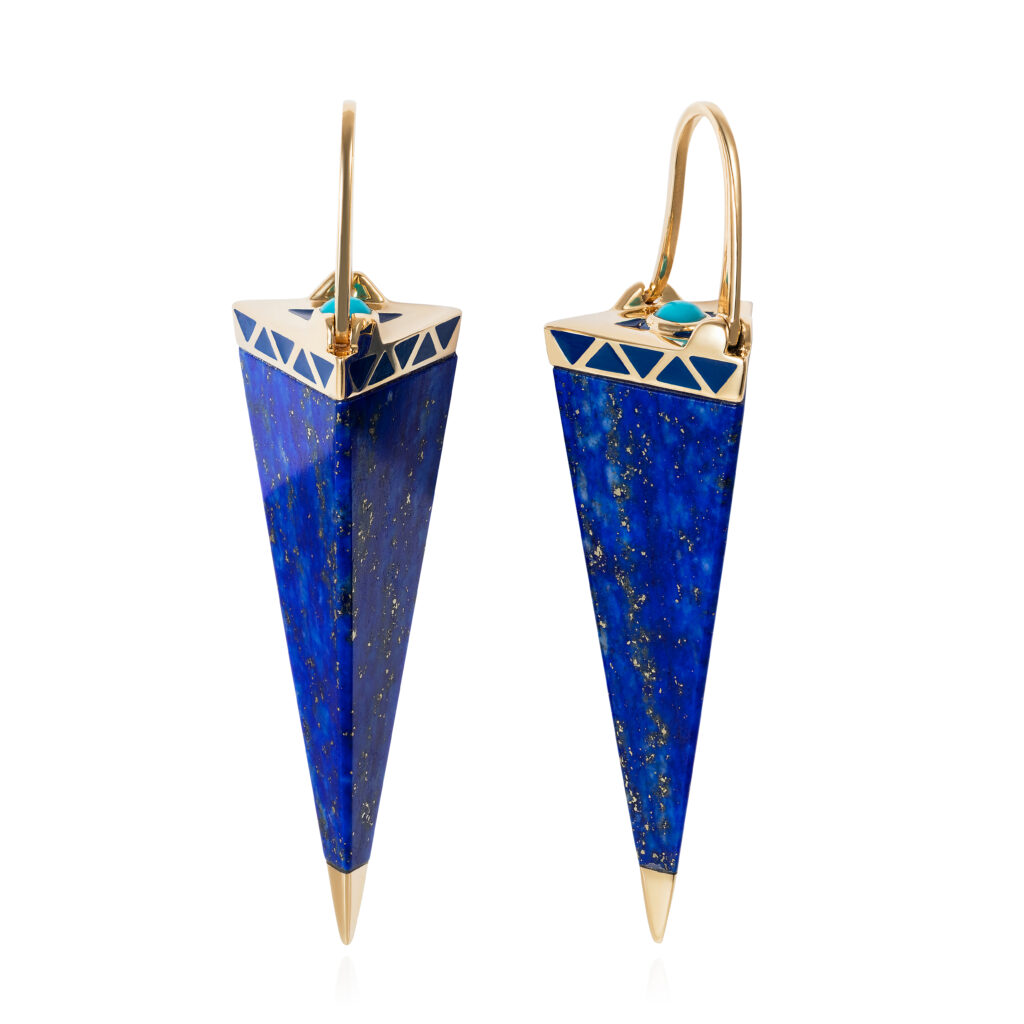
Vishuddha Drop Earrings in Lapis Lazuli, Turquoise, Blue Enamel and 18k Yellow Gold, Image Courtesy of Noor Fares
Careful not to lurch into the realm of cultural appropriation, Fares instead observes, learns and uses her findings to create pieces she offers as part of a larger canvas of interconnected ideas that stretch beyond time and peoples. From gemstones and crystals that are attributed with similar qualities across continents to belief systems that promote or acknowledge the symbiotic relationship between mind, body and spirit, she presents ways for the wearer to engage via her collections. “I am not trying to force anyone or saying ‘this is how it is’. It’s a suggestion” she asserts. Nevertheless, said theses are sensitively tackled. The Prana Collection (which derives its name for the Sanskrit for ‘Breath of Life’), is not only a paean to the seven chakras but also a considered exposition of seeking balance and continuous positive energy through the jewellery one wears. Pieces elucidate the messages vividly. One such example is the Svadhistana Pendant, which alludes to the sacral energy that governs sensual pleasure and is represented ordinarily by the color orange. However, in Fares’ jewel form, the intensity of said pleasures is represented in a saturation of orange hues: a carnelian with a fire opal inlaid in enamel and a multi-gemstone pavé of brown diamonds, amethysts, yellow and lavender sapphires and black rhodium. A seventy-centimeter chain allows for the pendant to be worn deep on the torso, making it a sexy evening accompaniment or a vivid daywear reminder of what lies beneath.
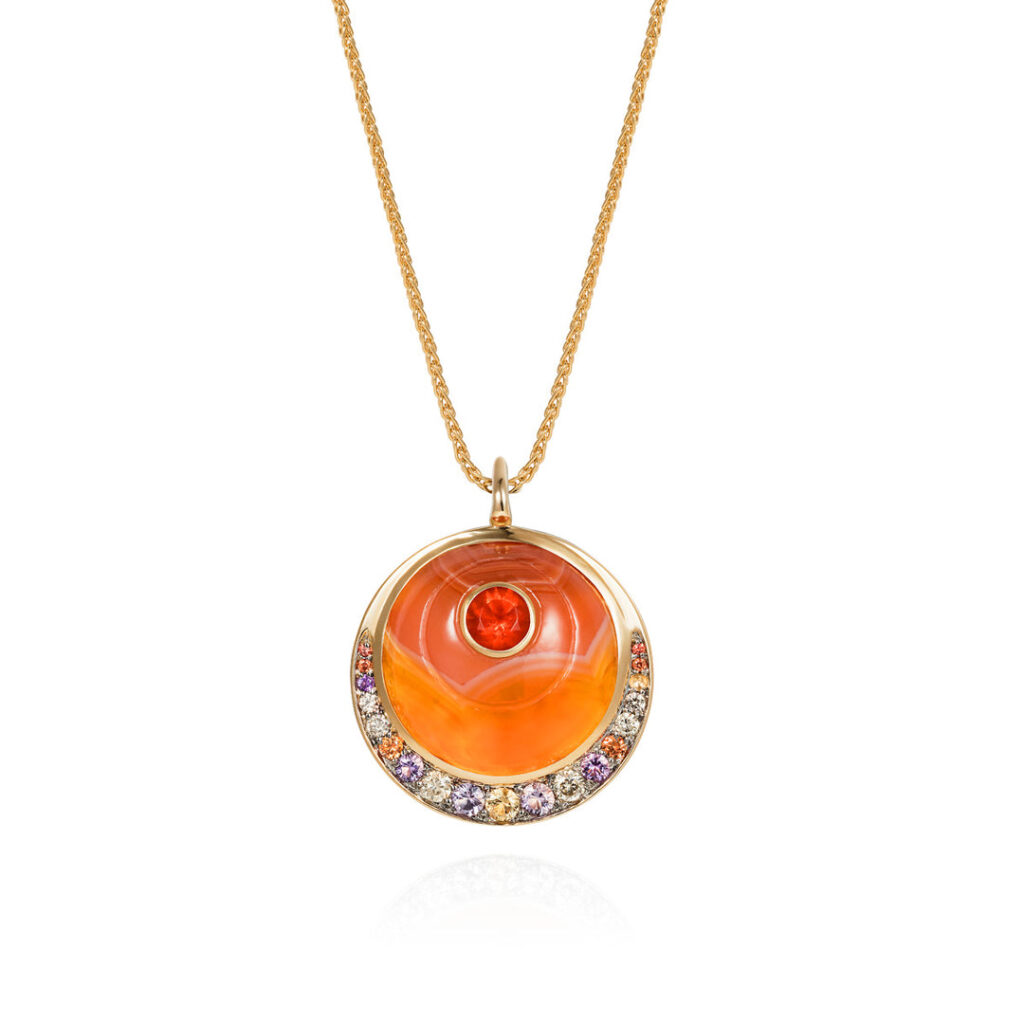
Svadhistana Pendant, 18k Yellow Gold, Fire Opal, Carnelian, Diamonds and coloured gemstone pave. Image Courtesy of Noor Fares
Fares asserts that for her, “jewellery is a talisman, an amulet, that can hold memories, contain healing properties and have protective qualities.” In many ways it is a mantra that informs how she works and creates and hints at the embedded energy she hopes will travel forth into the wearer’s life too. It is an intention echoed in the Madhaya Ring, which Fares created as an ode to the Lotus flower, using emeralds from the famed Muzo mine. “Emeralds are a very powerful stone, and I love how the piece looks like a magical object”, she observes.

Muzo Madhaya Pinky Ring, Sugarloaf Emerald, Pink and Blue Sapphires, Diamonds and Tsavorites, Image Courtesy of Noor Fares
With the Inle collection Fares’ ideas are a response to travels to Myanmar, translated into a collection which doubles up as a love letter to the jewellery made in Pedang state and the women who wear it, with opals, labradorite and moonstone taking centre stage.
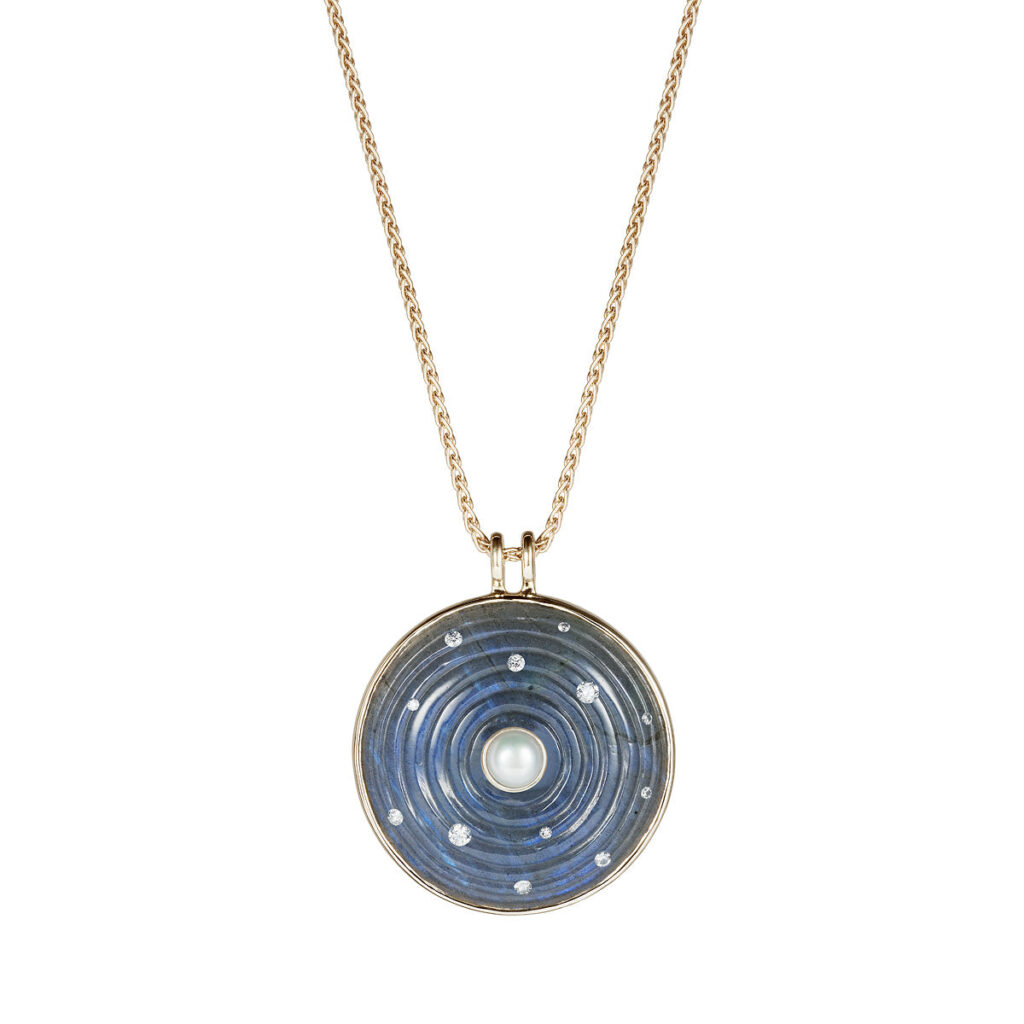
Inle Labradorite, Pearl and Diamond Pendant, Image courtesy of Noor Fares
Self-care and the importance of inner healing are evoked in the Dawn Crystal pendant featuring a 15.5 carat kunzite with an amethyst, pink and blue sapphire pavé set in mother of pearl that is part of Fares’ Krystallos Collection. Kunzite which is known for increasing compassion and accelerating emotional healing is also a tactile prompt for wearers to connect with every day, with the rainbow pave a joy=tinged reminder of what is possible. The balance between highlighting belief systems that have their roots in antiquity and creating pieces that are modern in their ease underpins every collection Fares makes, and she is committed to creating pieces that are multifunctional on the metaphysical and tangible levels.
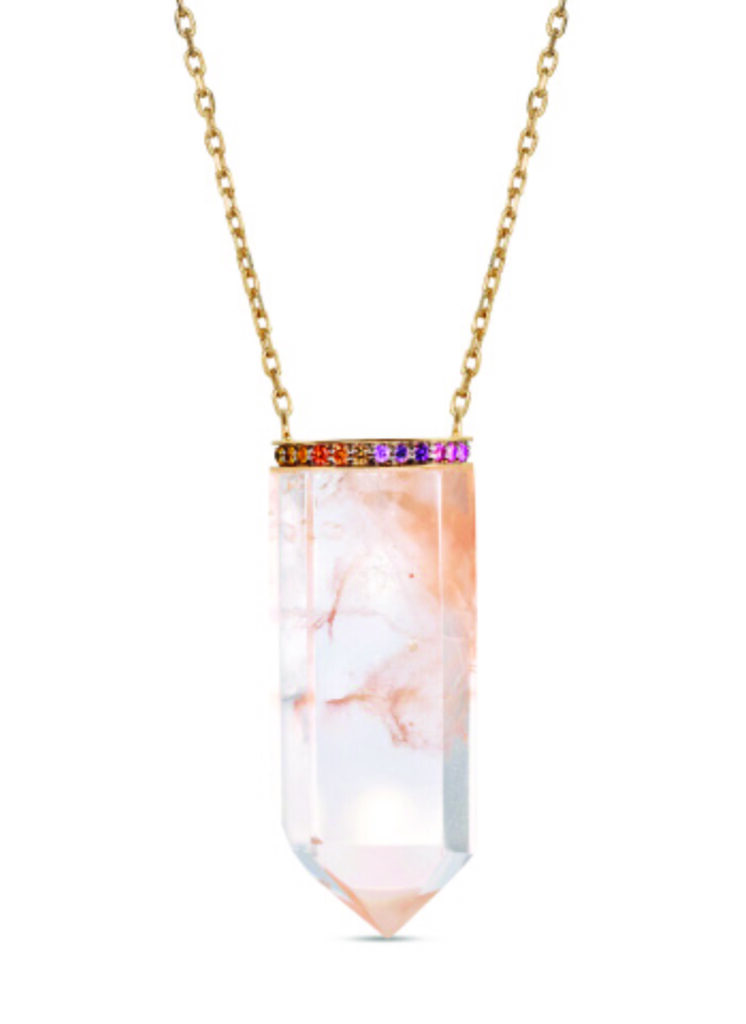
Dawn Rainbow Pendant, 18k Grey Gold Rock Crystal with Opal and Coloured Sapphire Pave, Image Courtesy of Noor Fares
Stories, Craft and Community
Nomenclature plays an increasingly important role within the jewellery landscape, with many creators actively moving away from the word designer to embracing the term jewellery-artist or simply jeweler. However, when the question is posed, Fares warms to the theme giving a fulsome response. “I have actually thought about this a lot, and I would describe what we do as fashion fine jewellery. Why fashion fine jewellery even though it is not a fashion item? As automatically that assumes what we make is seasonal? No, it is because we make jewellery that is worn with contemporary fashion and often sold alongside seasonal fashion items.” It is a truism which is witnessed in her earlier collections being stocked in the likes of Browns, Dover Street Market and the now closed Colette and Barney’s, but it also speaks more overtly to the hopes and aspirations Fares has for her jewels once bought. These are not pieces that are for the family vault, or to be worn with a phalanx of bodyguards, but rather the jewels are beautiful tools to help articulate aspects of oneself and compliment equally thoughtful apparel. Recent pop-ups have seen Fares show her jewels alongside independent fashion brands such as Racil, whose elegant elevated separates and statement yet uncomplicated dresses are a natural fit for her maison. “It is really a win-win situation for all of us”, she says of the pop-ups, “and these things don’t really compete because more people come and it is also less intimidating for clients when there is more than one brand. And also it’s a vibe and community of people who share similar values and similar scales of businesses.”
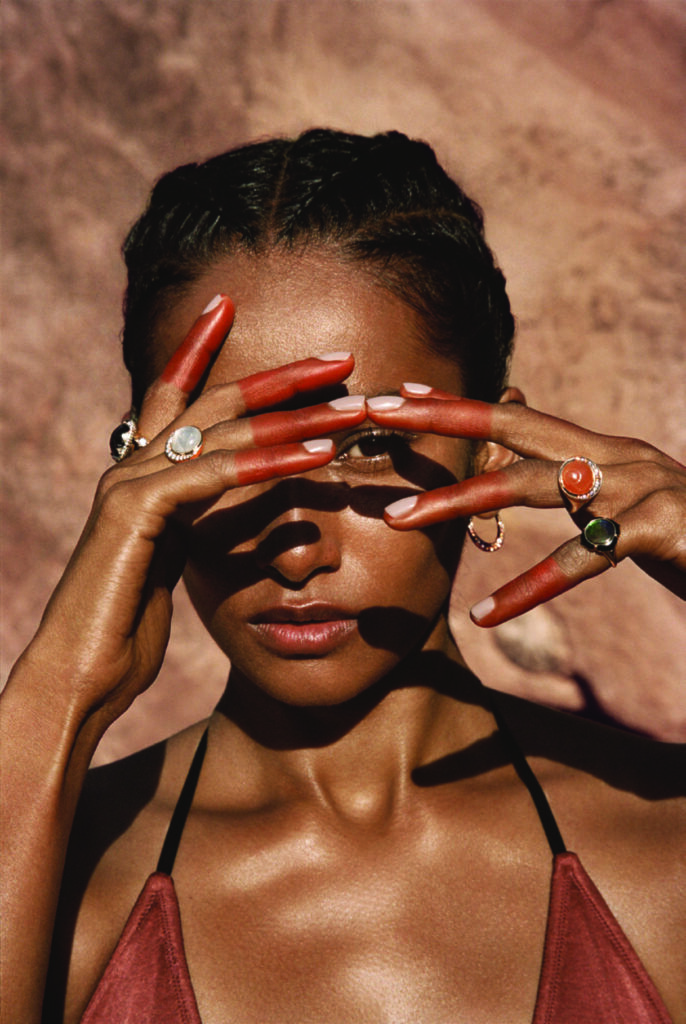
A selection of Rings and Earrings from the Prana Collection. Image Courtesy of Noor Fares
Fares is friends with many of her jewellery peers, who like her have charted their own successful paths in the industry. “I really appreciate the work of some of my close friends Fernando [Jorge], Eugenie [Niarchos] and also Dezso by Sara Beltran. I am really grateful for these friendships because we sit together, and we brainstorm, and we exchange ideas.” The camaraderie has also provided critical assistance at critical moments for her business. “It had been my goal to produce in Jaipur and Sara Beltran literally took me by the hand and set me up. I spent two days with her, and she gave me all of her suppliers, and my workshop is the same as hers and she is so generous. She even helped me find a production manager.” In an industry where suppliers and craftspeople become closely guarded secrets this spirit of inclusivity speaks to a generational shift where collaboration and ecosystem building are viewed as higher goals. Furthermore, Fares like many of her peers sees working with artisans in a more formalized setting and expanding opportunities in the locations where gemstones are actually sourced as an essential part of her offering. It is a move that goes beyond optics and segues into the maison’s longer term plans. “India is such an important place for colored stones and carving so I definitely want to continue working there…But I am an open to working with artisans in different places too eventually. What matters is that things are small scale, the artisans are happy and we are carrying an aesthetic skillset that has been passed down from generation to generation. I am also looking for women artisans” she adds, noting that cutting and carving remain predominantly male dominated, but hopeful that in time, things may change.

Sahasrara Earrings, Carved Amethyst, white diamonds and black rhodium. Image courtesy of Noor Fares
Although other locations get a design shout-out from time to time, India is very much the main character in the stories Fares tells through her jewels. “You see it everywhere; the culture, the sculpture, the use of colour, the gemstone astrology” she notes when considering her body of work in its entirety. Referencing a culture she has immersed herself in over the years has been instinctive, but she is always respectful; acknowledging the source material with her choice of nomenclature for her collections and always attributing the genesis of her ideas and the special place the subcontinent holds for her. The Navratna collection, an homage to the nine planets in our solar system also centers the role Indian astrology plays in culture. From a creative perspective the collection’s genesis allowed Fares to be unabashed in her use of colored gemstones, with the Upratna pendant a statement piece to rival any constellation featuring diamonds, carnelian, amethyst, crysoberyl, cat’s-eye, red garnet, lapis, peridot, pearl and white topaz.
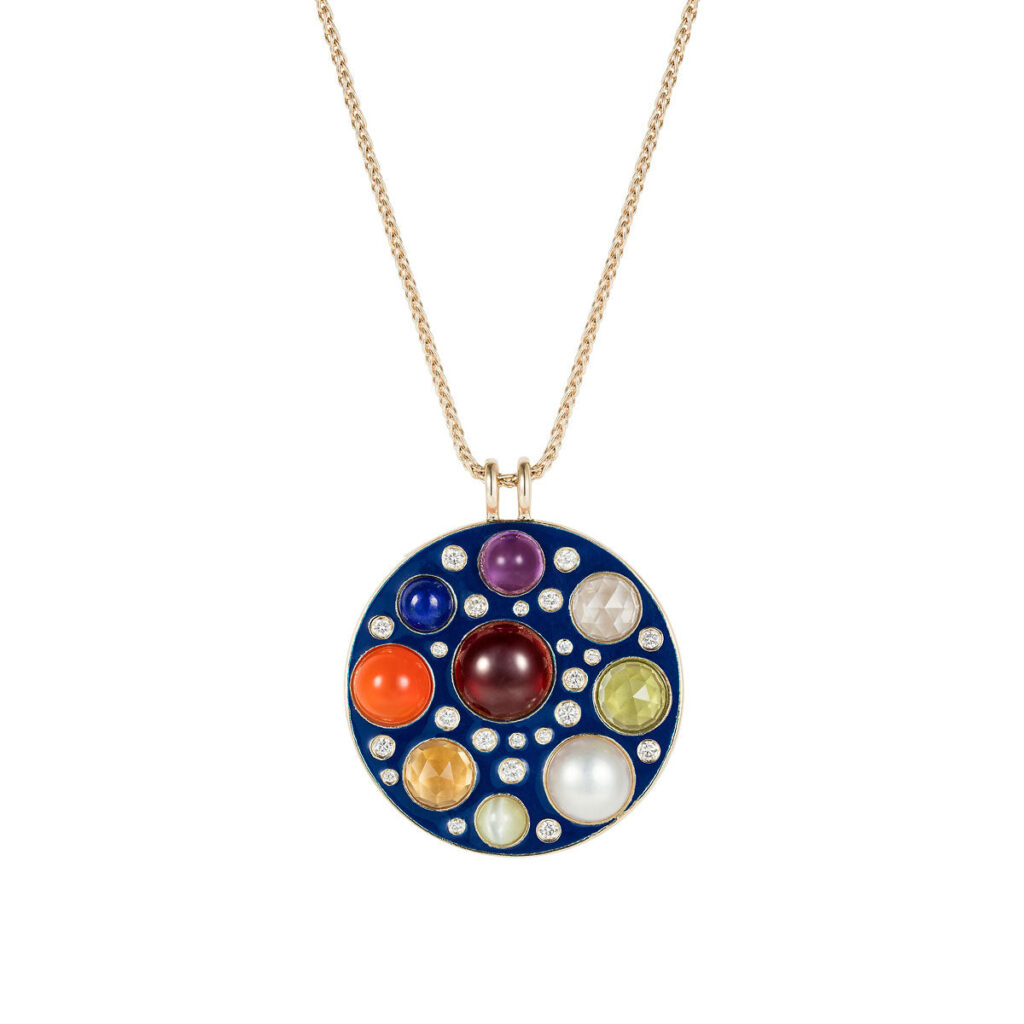
Midnight Upratna Amulet, Grey Gold Pendant with Enamel, with Diamonds, Whitee Topaz, Pearl, Peridot, Lapis, Red Garnet, Citrine, Catseye, Crysoberyl, Carnelian. Image courtesy of Noor Fares.
Similarly, the Padma collection, which takes its name from the Sanskrit word “Lotus” is a masterclass in carved stone craft, with Fares telling the story of the aforementioned Lotus Flower which traditionally is seen as an emblem of divine beauty. Highlights include the Madhya earrings made of carved black onyx with lavender and pink sapphire pave, the Nirvana Cocktail ring featuring an Ethiopian Opal with blue and yellow sapphire, amethyst and diamond pave and the Kamala necklace with rainbow moonstone, diamonds, and the intriguing addition of apatite and iolite – two minerals associated with creativity and psychic abilities respectively. Together, the pieces are part of a larger thesis where jewellery is posited as a holistic tool for spiritual and physical health working in tandem with belief systems and outward expressions of health. For Fares it is never a case of either/or but rather one of a celebration of all.
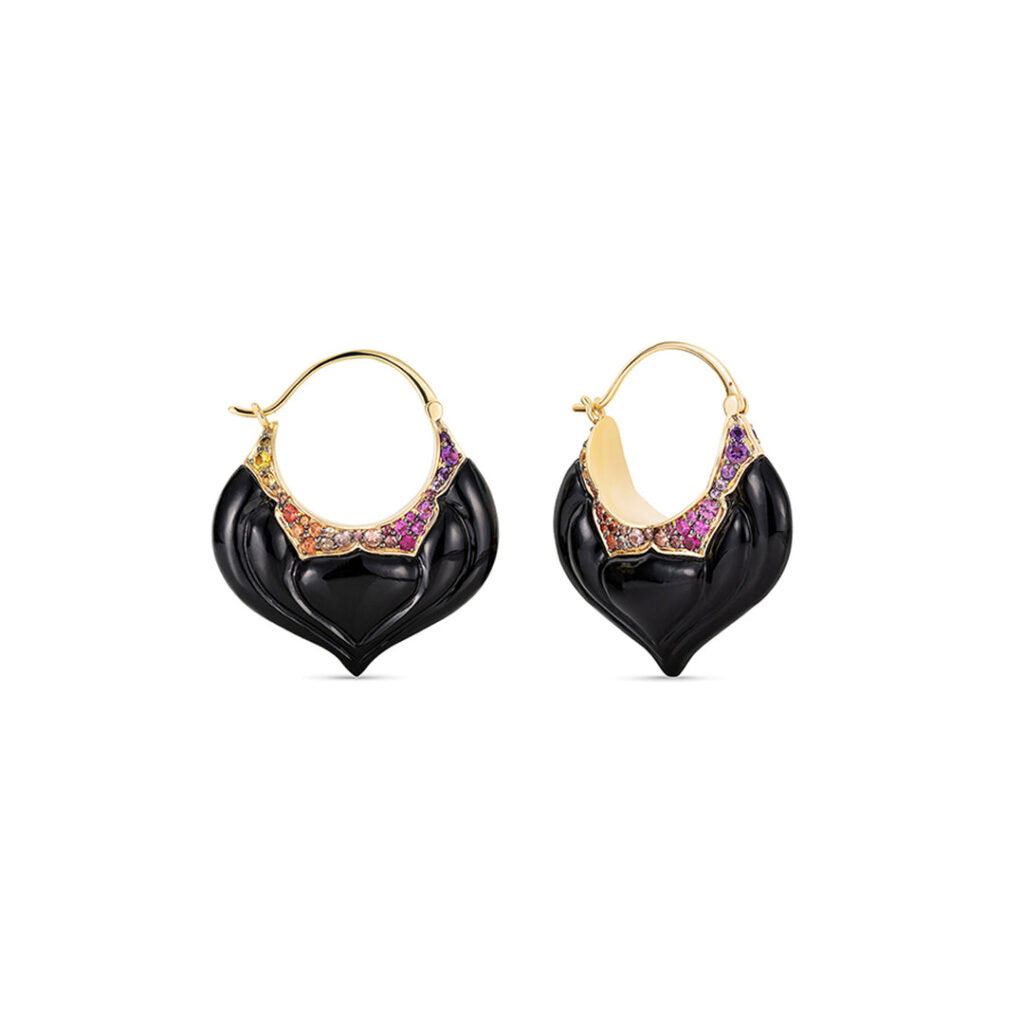
Madhya Carved Earrings, 18k Yellow Gold, Carved Black Onyx, with Amethyst and colored sapphire Pave. Image Courtesy of Noor Fares
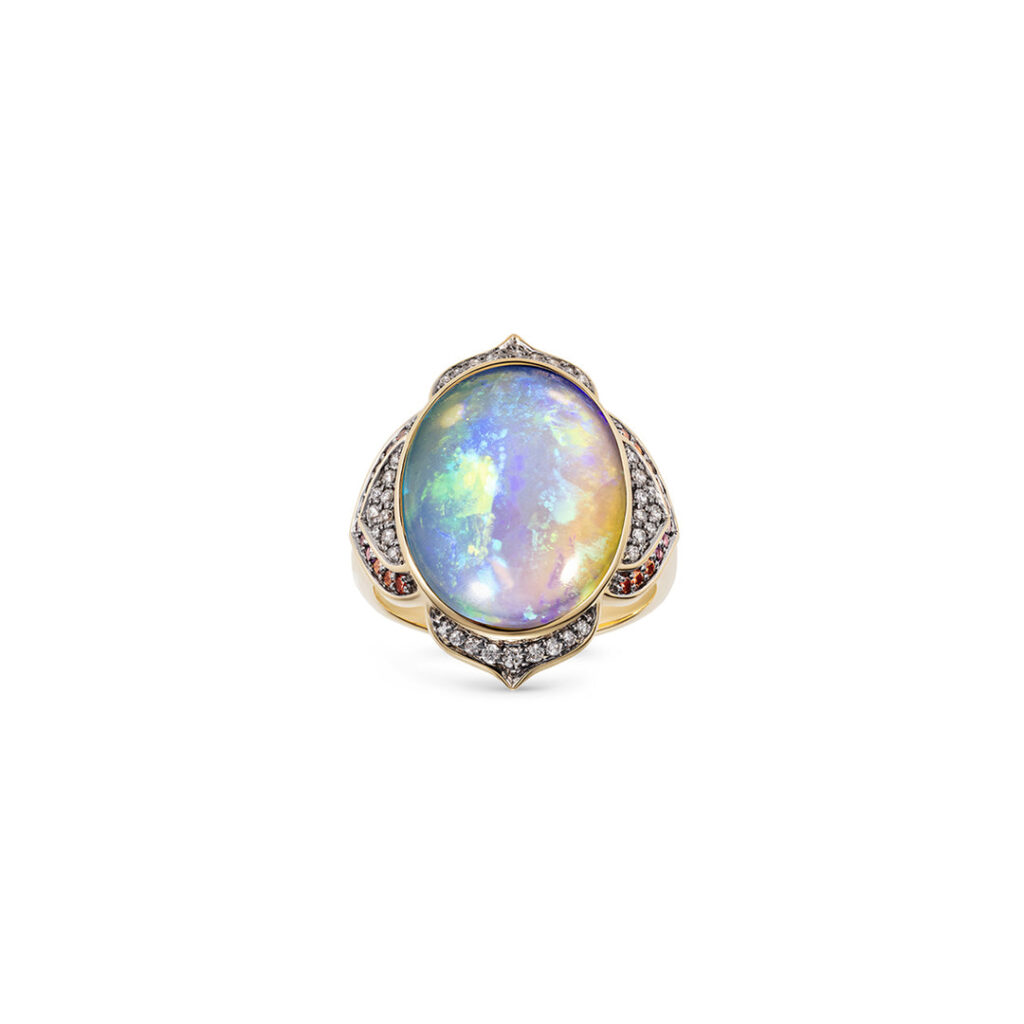
Nirvana Diamond Ring, 18k Grey Gold Ethiopian Opal Ring with Blue Sapphires and Diamonds. Image Courtesy of Noor Fares
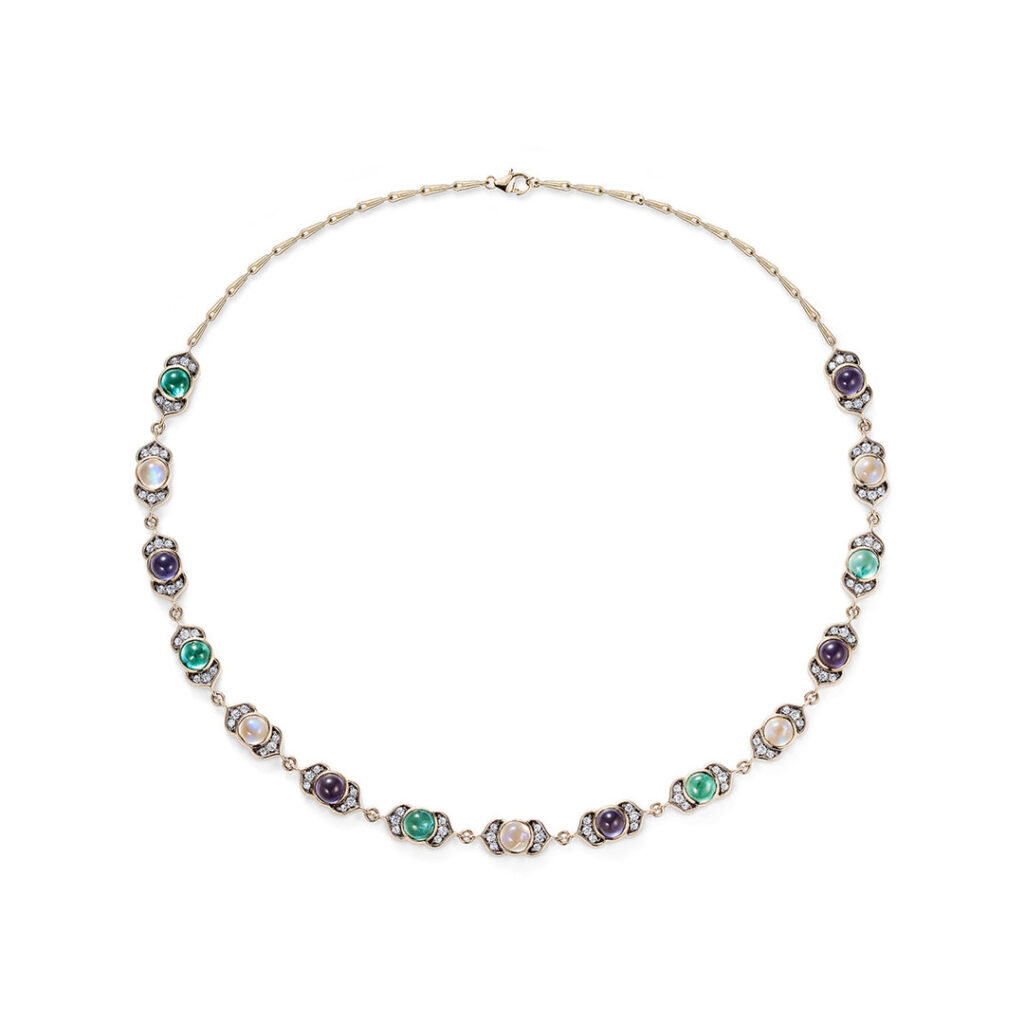
Kamala Necklace, Grey Gold, Rainbow Moonstone, White Diamond, Iolite, Appatite. Image Courtesy of Noor Fares
A polyglot and polymath’s design language
When you can claim as many locations as home as Fares can, trying to trace a through-line between your design language, credo and legacy becomes complicated. Born in Paris, Lebanese by descent and having lived in London and New York and with much of her production now occurring in India, her practice has been imbued with five cities with rich jewellery histories that have played an integral role in jewellery’s development globally. “When you put it like that it is true” she says laughing in acknowledgment. “Paris with the Place Vendôme high jewellery culture, I have seen it, Lebanon where it is very much about the personal, I remember my mother going to the local jeweler and getting things made, and that sparked my desire to design and think ‘oh I can get things made, that’s an option’. And then there is India, which I have been traveling to regularly for inspiration, gemstones, and the jewellery I make. And finally, London with Hatton Garden and its big creative community has definitely been an inspiration and part of my evolution.” However, varied languages spoken, divergent histories and cultures imbued aside, Fares consistently returns to specific themes in her jewellery, with the lens of the locations adding texture and context. Spirituality, in all of its expressions globally and the transformative powers of gemstones on the body and the psyche are foundational principles. From Fares’ perspective, her body of work explores “the recurring themes of carved stones, symbols, geometry [and] subtlety I would say, where it is not too literal and it leaves space for you to wonder as well.” Each piece is as if she is both is in conversation with the ideas and notions presented, the gemstones and metals used themselves and finally the wearer, who like her is curious, open and with a strong aesthetic sensibility.
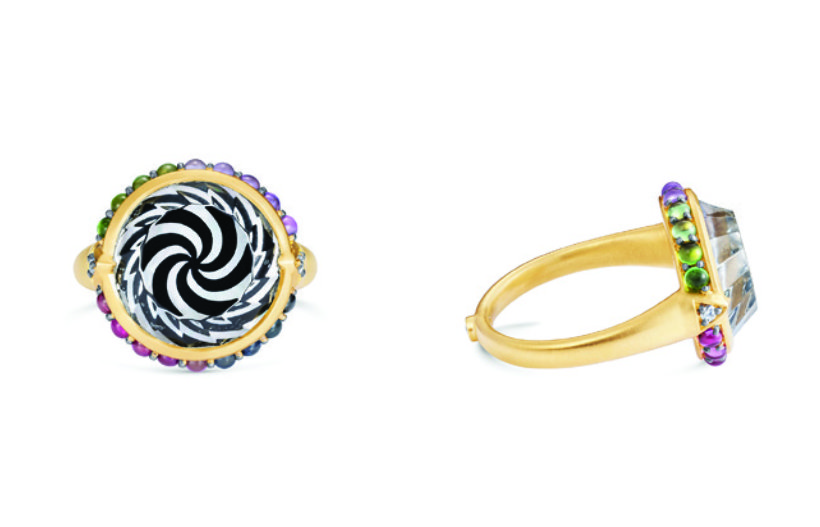
Sanna Optik Ring, 18k Yellow Gold Hand-Carved Rock Crystal with Enameled Mother of Pearl, Rainbow Sapphires and Diamonds. Image Courtesy of Noor Fares

A selection of rings from the Khanda Collection including the Rupa ring (left forefinger) and Rupa Pendant, Sanna Optik Ring (left middle finger). Image Courtesy of Noor Fares
Any attempt to describe Fares’ design language cannot fail to mention and highlight her unabashed love of color. Both her Prisma and Khanda collections are luminous examples albeit with different starting points. “I literally got inspired by op-art paintings like Bridget Riley”, she says of the Khanda Collection with the optical illusory effect of pieces emphasized with a clever use of geometric shapes, layering of stones and cold enameling. In the numerous processes required to make them, the pieces also mark an ambitious new chapter for Fares with stones not only painted and layered but set within one another. The metaphysical, however, is never entirely far away with Khanda also being a comment on Buddhist wisdom as it references the ‘five aggregates,’ or components which make up a human being. Rupa the physical body is reimagined in Fares’ Rupa Ring a carved rock crystal in the form of an oval is set in diamond pave, features hand painted mother of pearl and is set with rubies and an opal. The potentiality for gemstone damage, given for instance the high-water content of opals, a stone Fares uses frequently, is immense. “I love understanding what we can do with these stones” she adds. Samskhara which Buddhists believe is where thoughts, desires and intentions reside, is reimagined in two forms: first as a hexagonal Amulet-like pendant where carved rose quartz crystal, glitter enameled mother of pearl, white, pink and orange sapphires joined with amethysts to create an intricate depiction of how we become our thoughts and beliefs and this an invariably complex state. Secondly, the pendant again features painted rock crystal, this time looking like a Day-Glo three-dimensional piece. The textures and colours have the overall effect of time travel, with the psychedelic mood of the 1960s, complete with the at the time de-rigueur eastern pilgrimages, translated into pieces for the here and now.
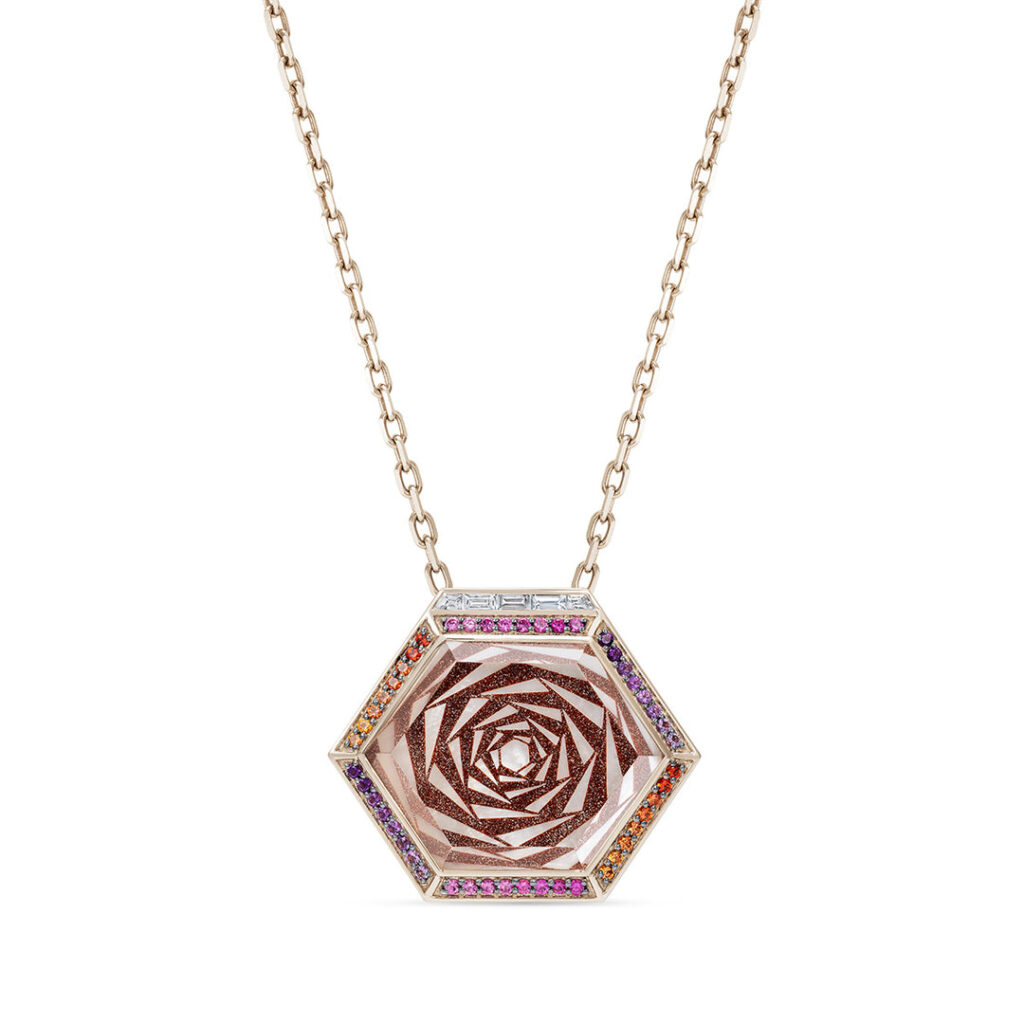
Samskara Amulet, 18kt Grey Gold Carved Rock Crystal, Glitter Enameled Mother of Pearl, Sapphires and Amethysts. Image Courtesy of Noor Fares

Samskara Painted Pendant, rose quartz, hand painted mother of pearl, garnet and diamond pave. Image courtesy of Noor Fares
In the instance of Prisma, the cycle of life is explored but with the kaleidoscope of gemstones and geometry used, and hand painted snd carved crystals, acting as a means of meditating to a higher level of consciousness. Pieces named Rhombus, Pentagram and Kaleidoscopic Eye Pendant tell a story in and of themselves but so too do Fares’ fascination with the emotional alchemy found when one is wearing the right piece for you. “I think tactility is an important quality for jewellery because the pieces are on your skin [and] that relationship becomes so intimate between one’s body and the jewellery.” In Fares’ design universe the sensual and spiritual’s convergence is imperative.
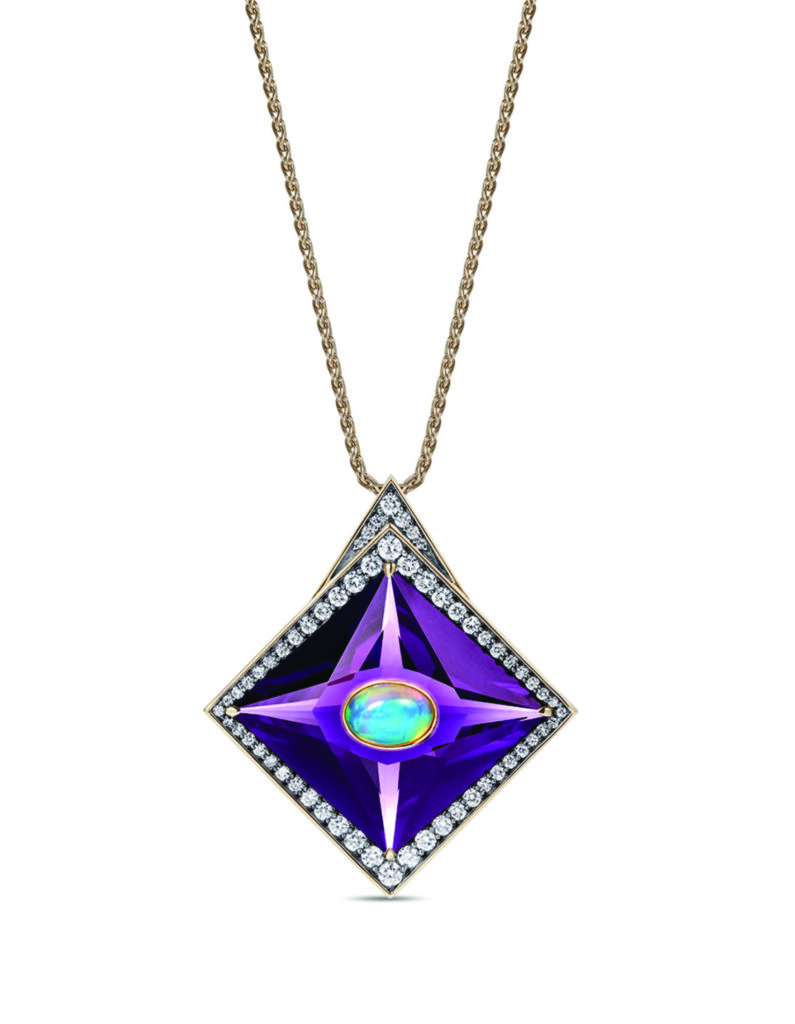
Rhombus Pendant, 18kt Grey Gold Amethyst Pendant with Ethiopian Opal Cabochon, grey and white diamonds. Image Courtesy of Noor Fares

18k Grey Gold Hand Carved and Engraved and painted Rock Crystal with Diamond Pave. Image Courtesy of Noor Fares
Craft, Luxury and Legacy Building
The fine jewellery industry is a ruthless mistress. In the fourteen years Fares has been in business there have been many independent brands that have shone bright momentarily only to be beset with challenges that lead to their shuttering. Fares’ focus on craft, vivid storytelling with gemstones to match and segueing enduring truths found across the world have been pivotal to her success. Currently, she occasionally creates special commissions, but a full foray into high jewellery is one collectors and admirers of her work may have to wait a little longer for. This is not to say Fares doesn’t have her own high jewellery fan-girl moments; “I love the work of Victoire de Castelaine I think she is a true jewellery artist, the way she puts colour and her risk taking in design using very precious stones is truly admirable. I also love James de Givenchy at Taffin. His use of stones and different techniques and materials, is so cool and classic at the same time.”
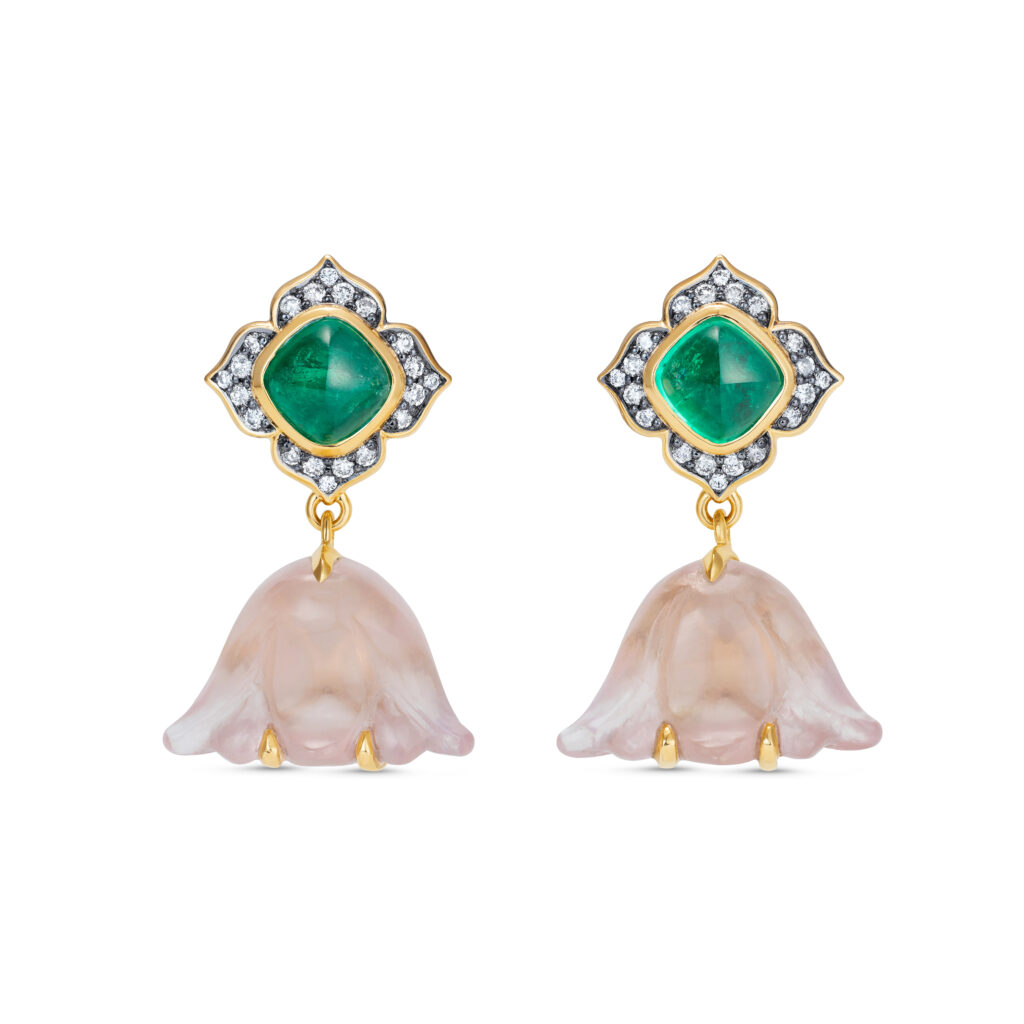
Muzo Lotus Earrings,18k Yellow Gold, Emeralds, Rose Quartz and Diamonds. Image Courtesy of Noor Fares
Fares’ commitment to seemingly always researching and observing that jewelers, customers both existing and potential, historical buildings, traditional practices are all absorbed, as well as her daily practice of “paying attention to the way people are wearing jewellery what are they doing” has provided the building blocks for her brand’s resilience to the weather-vane of virality and of-the-moment cache. Rather than creating ego-driven or trend facing collections, which may or may not convince, she consistently translates the wants and desires of existing clients and lures new ones in the process. Of her clients she asserts they “don’t fall into an age category” and a monthly newsletter she shares with her community is as much a celebration of them as it is of new collections. She speaks warmly of her clients. “Most of them are outliers in their fields, often they are entrepreneurs, and it has also been a really interesting way to learn more about our clients.” Affinity and luxury with the absence of cliquey exclusivity has evolved into a meaningful community of collectors.
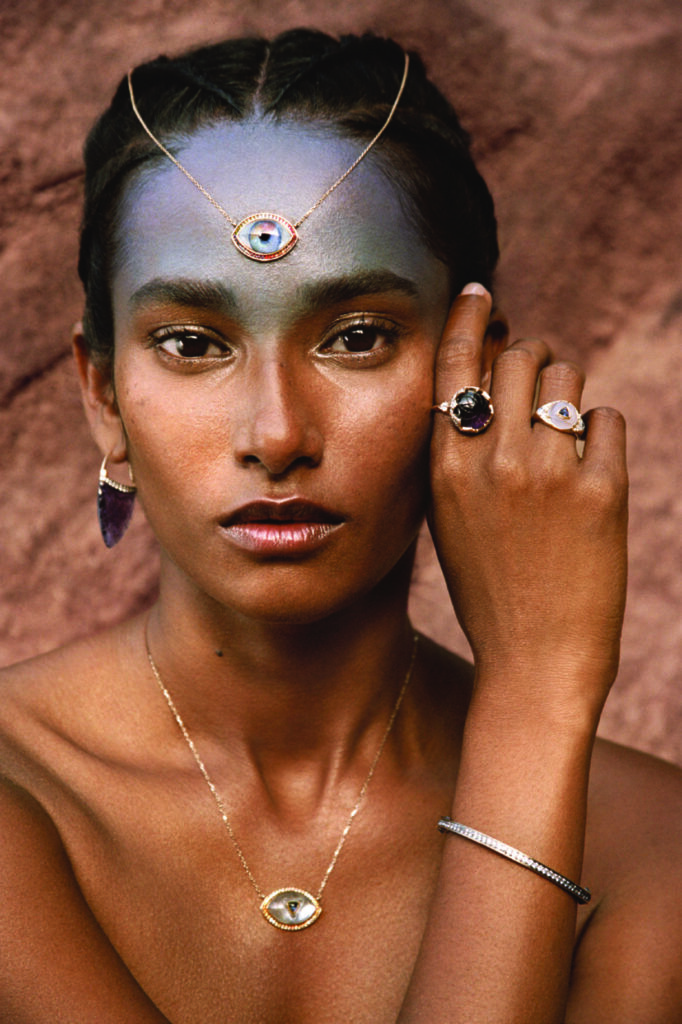
Selection of Pendants, Rings, Earrings and Bracelets from the Prana Collection. Image courtesy of Noor Fares
“Jewellery is the medium through which I express myself artistically, so [with] anything that I feel strongly about, my first instinct is to translate it to jewellery” shares Fares. It is thus unsurprising that her strong sense of social justice and philanthropy are reflected in two pendants designed for causes dear to her heart. The “Beirut Rise” pendant whose proceeds help assist the work of Beitel Baraka an apolitical non-profit that helps vulnerable families affected by the Beirut Blast of August 2020 was a bestseller. Similarly, her “Free Palestine” pendant which benefits the Galilee Foundation a charity that promotes educational and cultural initiatives for Palestinians in Israel and in the Occupied Palestinian Territories was also well received. The pieces made and sold years before the region’s current crises were always first and foremost about raising awareness and much needed funds for the causes as well as providing a means for clients to express their compassion for others in less fortunate circumstances. It is a balance that is tricky in these polarizing times, nevertheless it is illustrative of the powerful possibilities that jewellery holds. Just like the fashion slogan t=shirts, first popularized by Katherine Hamnett, her actions can be viewed as an important intervention, with a jeweller holding space in discourses that have become distorted and politically frought.
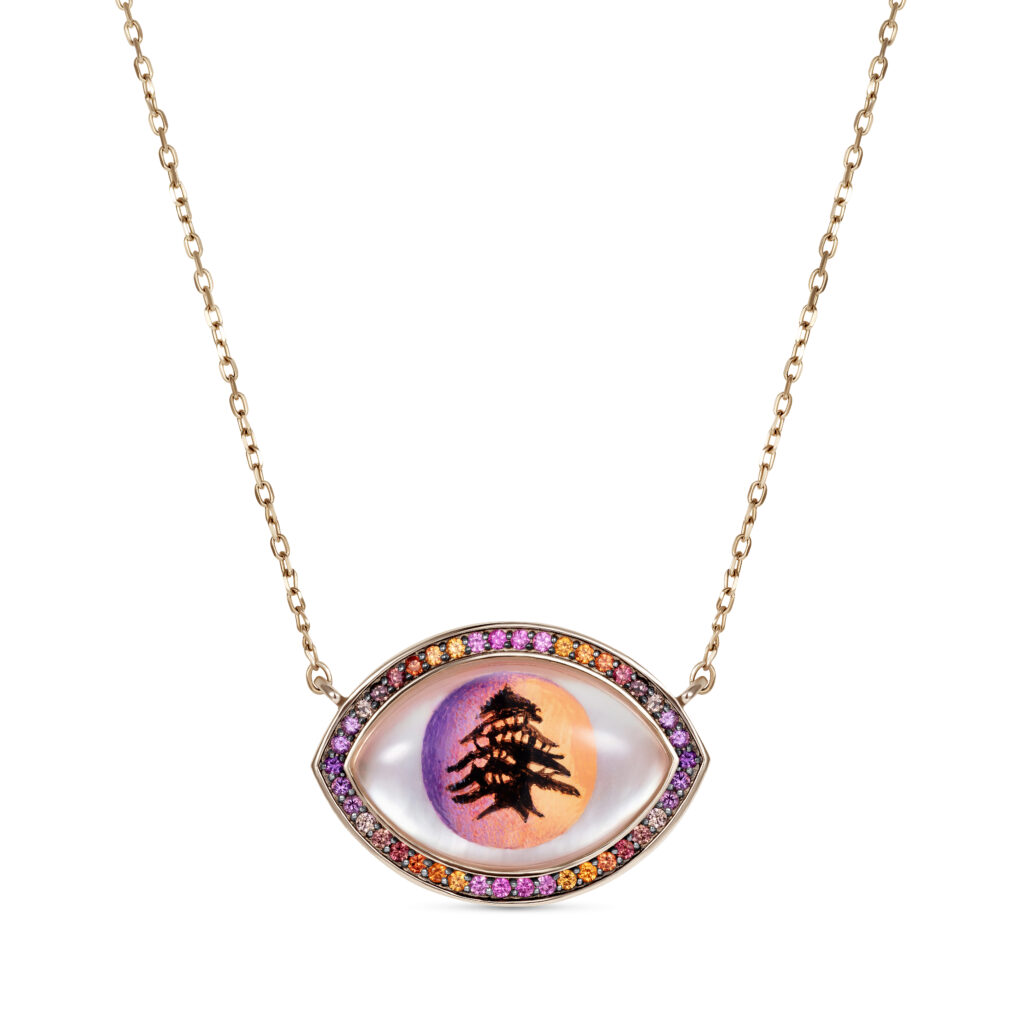
Beirut Rise Pendant, Rock Crystal, Rose Gold, Coloured Sapphire Pave. Image Courtesy of Noor Fares
As she continues to forge her unique path Fares is already thinking of the potential beyond wearable objects: “I am open to working with artisans in different places although I definitely see myself producing objects in India” she adds segueing once more into the stones’ potentialities “harder stones like agate and chalcedony you can literally carve in every shape, like sculpture and I find it so cool to be able to do that” as she expands on the possibilities for this as yet uncharted area. Fares’ passion for gemstones, civilizations both old and existing and creating pieces that allow one to journey through life better is equally infectious and profound. Jewellery has always been more than pretty stones housed in metals be they precious or otherwise; and this truth is expressed in all of Fares’ collections thus far. It can conserve heritage, reimagine culture anew, offer conduits to the metaphysical that are not contingent on ascribing to a particular doctrine, and elicit child=like wonder from the array of colors viewed. Speaking of one of her favourite pieces made Fares notes “My rainbow rings the tribal earrings are old favorites. I designed them such a long time and they have a different aesthetic to a lot of my other collections, but they still go well together.” It is almost a mantra for life; embrace the old and new, create a diverse and aesthetically inclined community, trusting that in the mix it will all go well together. “There is the energy I put in my work and the energy of the person that is drawn to it” she explains. Consider it a dance but one where both parties arrive open to share, commune and pass on. From the jewels themselves which are modern heirlooms in the making to the notions that they dare to propose: for us all to embrace and move to the cosmic rhythms of life.
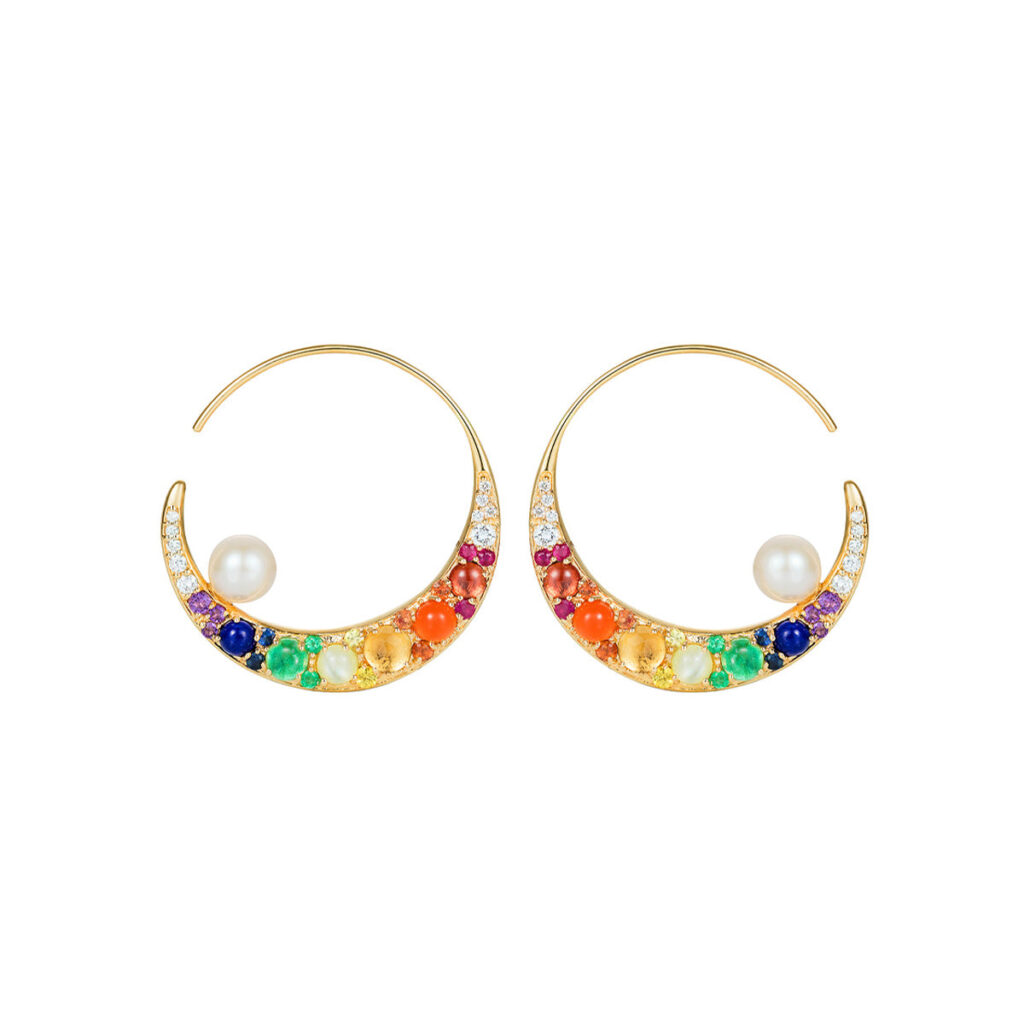
Moon Tribal Earrings, 18k Yellow Gold, Pearl, Diamond, Amethyst, Carnelian, Cat’s Eye, Citrine, Emerald, Lapis, Ruby, Blue Sapphire, Orange Sapphire, Yellow Sapphire


